
NSW Government Gazette No 595 of 20 December 2023
GOVERNMENT GAZETTE – 4 September 2020
The New South Wales Government Gazette is the permanent public record of official NSW Government notices.
It also contains local council, non-government and other notices.
Each notice in the Government Gazette has a unique reference number that appears in parentheses at the end of the
notice and can be used as a reference for that notice (for example, (n2019-14)).
The Gazette is compiled by the Parliamentary Counsel’s Office and published on the NSW legislation website
(www.legislation.nsw.gov.au) under the authority of the NSW Government. The website contains a permanent
archive of past Gazettes.
To submit a notice for gazettal, see the Gazette page.
By Authority
Government PrinterISSN 2201-7534
Government Gazette
of the State of
New South Wales
Number 595–Electricity and Water
Wednesday, 20 December 2023
[Electricity Supply Act 1995]
[Errors in the Notice of Approval of Energy Savings Scheme (Amendment No. 2) Rule 2023]
ERRATUM
In the notice published in the NSW Government Gazette No 592 of 19 December 2023, the words
‘The Amendment Rule takes effect the day it is published in the NSW Government Gazette and
amends the Energy Savings Scheme Rule of 2009’ are replaced with ‘The Amendment Rule
commences on 19 June 2024 and amends the Energy Savings Scheme Rule of 2009.’.
In addition, the words ‘Dated this ______________ day of _____________________ 2023’ are
replaced with ‘Dated this 18th day of December 2023.’
This notice corrects those errors.
The gazettal date remains 19 December 2023.
Terry Niemeier
Director Program and Market Development
Office of Energy and Climate Change
[n2023-2423]
NSW Government Gazette
20 December 2023
Energy Savings Scheme Rule of 2009
Effective from 19 June 2024
Energy Savings Scheme (Amendment No. 2) Rule 2023
under the
ELECTRICITY SUPPLY ACT 1995
1. Name of Rule
This Rule is the Energy Savings Scheme (Amendment No.2) Rule 2023.
2. Operation of Rule
This Rule amends the Energy Savings Scheme Rule of 2009 in the manner set out in Schedule 1.
3. Commencement
This Rule commences on 19 June 2024.
[n2023-2424]
NSW Government Gazette
20 December 2023

Energy Savings Scheme Rule of 2009
Effective from 19 June 2024
Page 1
SCHEDULE 1
Energy Savings Scheme Rule of 2009
The Hon Penny Sharpe, MLC
Minister for Climate Change, Minister for Energy,
Minister for the Environment, Minister for Heritage,
Leader of the Government in the Legislative Council
Simplified outline
The following is a simplified outline of this Rule:
• clauses 1-4 set out the commencement of the Rule, the objects of the Rule, the application of
the Rule, and status and operation of the Rule.
• clause 5 sets out the definitions of Energy Saver and Recognised Energy Saving Activity, and
eligibility for accreditation as an Accredited Certificate Provider.
• clause 6 sets out the conditions on the creation of Energy Savings Certificates under the Rule.
• clause 7 sets out the calculation method for determining Energy Savings under the Project
Impact Assessment Method.
• clause 7A sets out the calculation method for determining Energy Savings under the Project
Impact Assessment with Measurement and Verification Method.
• clause 8 sets out the calculation method for determining Energy Savings under the Metered
Baseline Method using one of the following sub-methods:
• Baseline per unit of output (clause 8.5)
• Baseline unaffected by output (clause 8.6)
• Normalised baseline (clause 8.7)
• NABERS baseline (clause 8.8)
• Aggregated Metered Baseline (clause 8.9)
• clause 9 sets out the calculation method for determining Energy Savings under the Deemed
Energy Savings Method using one of the following sub-methods:
• Sale of New Appliances (clause 9.3)
• Commercial Lighting Energy Savings Formula (clause 9.4)
• Public Lighting Energy Savings Formula (clause 9.4A)
NSW Government Gazette
20 December 2023
Energy Savings Scheme Rule of 2009
Effective from 19 June 2024
Page 2
• High Efficiency Motor Energy Savings Formula (clause 9.5)
• Power Factor Correction Energy Savings Formula (clause 9.6)
• Removal of Old Appliances (clause 9.7)
• Home Energy Efficiency Retrofits (clause 9.8)
• Installation of High Efficiency Appliances for Businesses (clause 9.9)
• clause 10 sets out the definitions and interpretation provisions.
• clause 11 sets out savings and transitional arrangements relating to the amendment of this Rule.
• Schedule A sets out Default Factors and Classifications.
• Schedule B sets out Activity Definitions for the Sale of New Appliances (clause 9.3)
• Schedule C sets out Activity Definitions for the Removal of Old Appliances (clause 9.7)
• Schedule D sets out Activity Definitions for General Activities for Home Energy Efficiency
Retrofits (clause 9.8)
• Schedule E sets out Activity Definitions for Low Cost Activities for Home Energy Efficiency
Retrofits (clause 9.8)
• Schedule F sets out Activity Definitions for the Installation of High Efficiency Appliances for
Businesses (clause 9.9)
NSW Government Gazette
20 December 2023
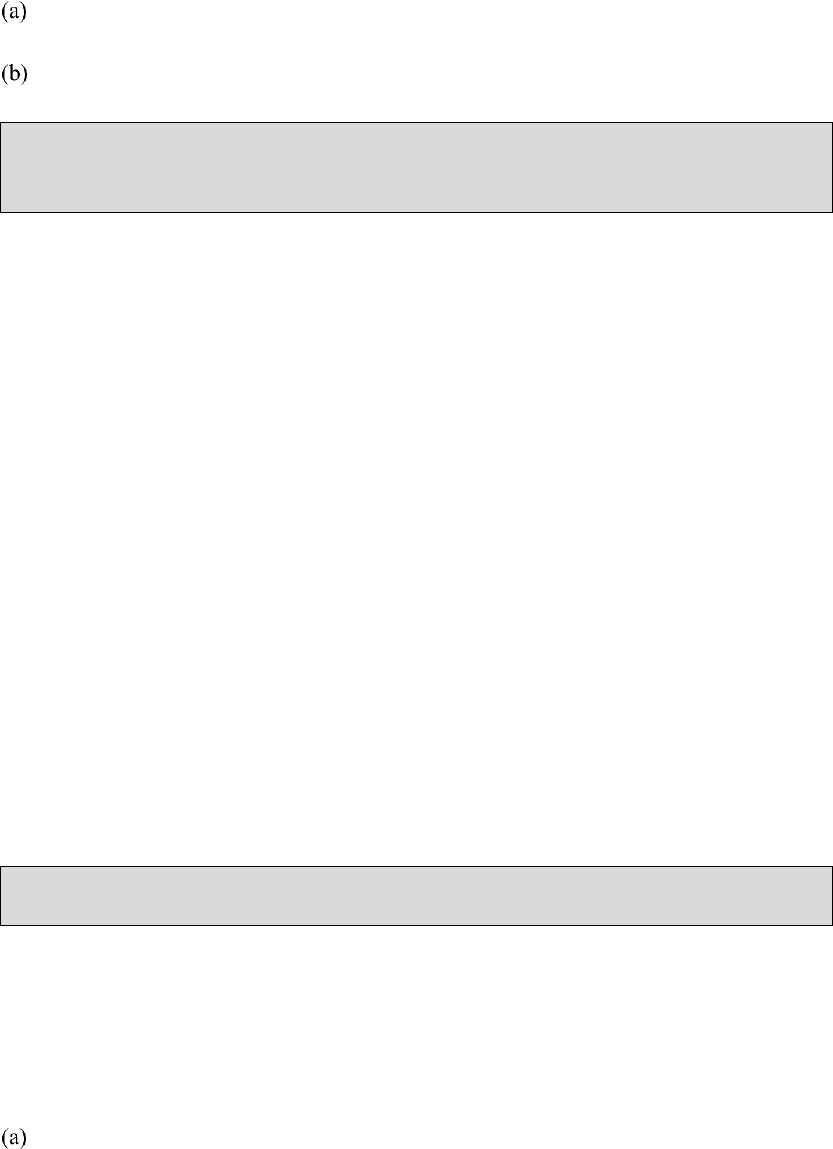
Energy Savings Scheme Rule of 2009
Effective from 19 June 2024
Page 3
1 Name and commencement
1.1 This Rule is the Energy Savings Scheme Rule of 2009 and commences on 19 June 2024, with
the following exceptions:
Activities D6, D7, D8 and D9 (Insulation) of Schedule D commence on a date notified by
the Minister responsible for the Act by notice published in the NSW Government Gazette;
Clauses 5.4(k), 5.4(l) and 5.9 commence on a date notified by the Minister responsible for
the Act by notice published in the NSW Government Gazette.
Note: The provisions referred to in clause 1.1(b) may commence on or after an Approved
Corresponding Scheme is in operation in the Australian Capital Territory.
2 Objects of the Rule
2.1 The object of this Rule is to specify provisions for the calculation and creation of Energy
Savings Certificates in respect of any activity, or class of activities, prescribed by the Rule.
3 Application of the Rule
3.1 This Rule applies to Accredited Certificate Providers accredited to create Energy Savings
Certificates in respect of Recognised Energy Saving Activities in accordance with Part 1,
Division 8 of Schedule 4A of the Act, the Electricity Supply (General) Regulation 2014 and
this Rule.
3.2 For the avoidance of doubt, unless expressly provided otherwise, this Rule applies to the
calculation of Energy Savings used to create Energy Savings Certificates for which an
application for registration is made on or after 19 June 2024.
4 Status and Operation of the Rule
4.1 This Rule is an Energy Savings Scheme Rule made under Part 1, Division 13 of Schedule 4A
of the Act.
5 Definitions of Energy Saver and Recognised Energy Saving Activity, and
eligibility for accreditation
Note: Other definitions of terms used in this document are set out at clause 10.
5.1 (deleted)
Energy Saver
5.2 The Energy Saver with respect to Energy Savings arising from a Recognised Energy Saving
Activity, as calculated according to a calculation method in this Rule, is either:
the person defined as the Energy Saver in the relevant calculation method, provided that,
as at the relevant Implementation Date, that person has not nominated another person to
be the Energy Saver for those Energy Savings in accordance with clause 5.2 (b); or
NSW Government Gazette
20 December 2023

Energy Savings Scheme Rule of 2009
Effective from 19 June 2024
Page 4
the person nominated to be the Energy Saver by the person in clause 5.2 (a), provided
that:
(i) the nomination has been made in a form and manner approved by the Scheme
Administrator; and
(ii) as at the relevant Implementation Date, another person has not been nominated as
the Energy Saver with respect to the same Energy Savings.
Recognised Energy Saving Activity
5.3 A Recognised Energy Saving Activity is any activity that meets all of the following criteria:
it reduces consumption of an Eligible Fuel that is consumed for stationary energy
purposes, by:
(i) modifying End-User Equipment or the usage of End-User Equipment (including
by installing additional components);
(ii) replacing End-User Equipment with other End-User Equipment, subject to clause
5.3A;
(iii) installing New End-User Equipment, subject to clause 5.3B; or
(iv) removing End-User Equipment, subject to clause 5.3A; and
(deleted)
it is implemented at a Site or Sites in an ESS Jurisdiction; and
it is not unlawful to carry out the activity in that ESS Jurisdiction as at the Implementation
Date; and
it reduces consumption of an Eligible Fuel by doing one or more of the following:
(i) increasing the efficiency of consuming an Eligible Fuel;
(ii) (deleted);
(iii) switching to another Eligible Fuel;
(iv) generating energy with the result that there is an overall reduction in the
consumption of an Eligible Fuel compared to what would have otherwise been
consumed, subject to clause 5.4(i); and/or
(v) reducing consumption of an Eligible Fuel per unit of output
it reduces consumption of an Eligible Fuel, where this is used for stationary energy
it results in the outcome of Equation 1 being a positive number, using the Energy Savings
for each of the relevant Eligible Fuels, even if negative.
5.3A The replacement or removal of End-User Equipment only constitutes a Recognised Energy
Saving Activity if the Accredited Certificate Provider:
does not refurbish, re-use or resell that End-User Equipment; and
if the Implementation Date is on or after 15 May 2016, disposes of that End-User
Equipment appropriately, such that:
(i) if the postcode of the Implementation is in a Metropolitan Levy Area listed in
Table A25 of Schedule A, any lighting End-User Equipment containing mercury
must be recycled in accordance with the recycling requirements of a Product
Stewardship Scheme; and
NSW Government Gazette
20 December 2023
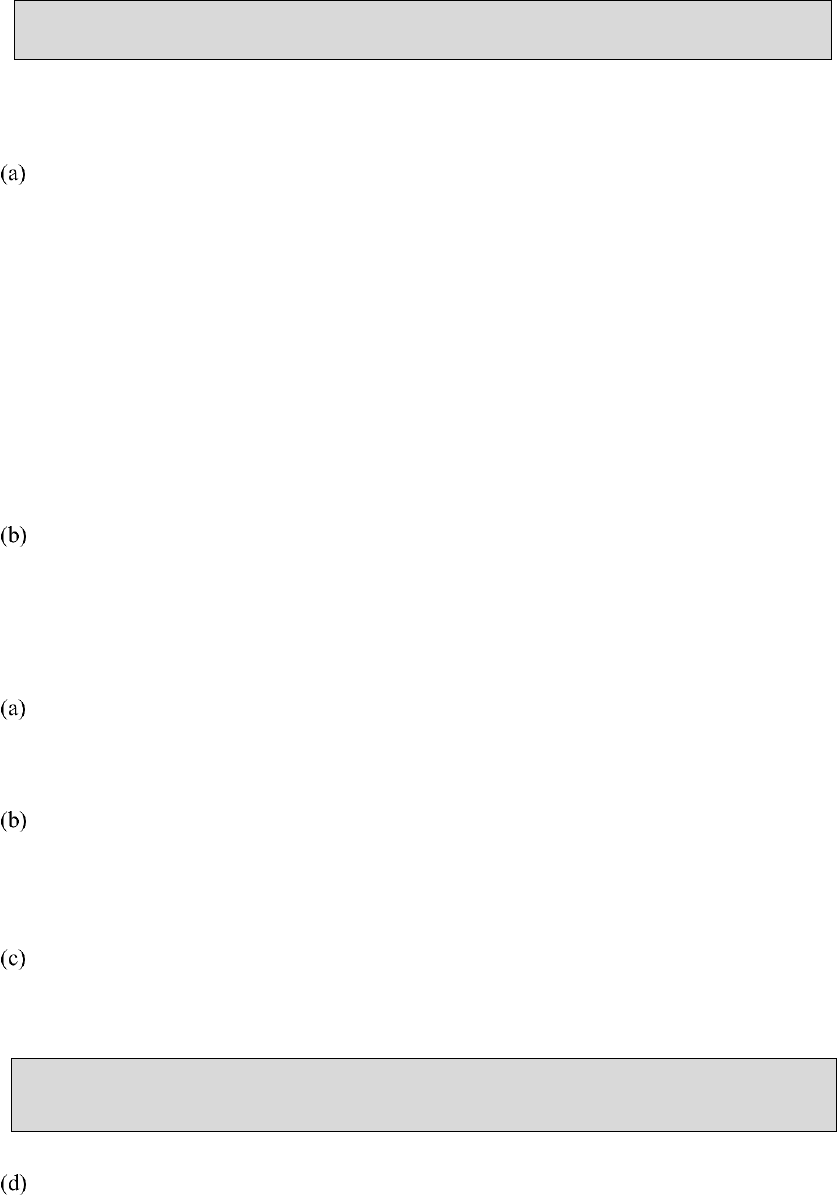
Energy Savings Scheme Rule of 2009
Effective from 19 June 2024
Page 5
(ii) recycling evidence is obtained for any refrigerants being disposed of, such as a
tax invoice or a recycling receipt, or any other evidence acceptable to the Scheme
Administrator.
Note: any refrigerants in the End-User Equipment must be disposed of in a manner that is
compliant with the Ozone Protection and Synthetic Greenhouse Gas Management Act 1989 (Cth).
5.3B For the purposes of Clauses 7A and 8, the installation of New End-User Equipment
constitutes a Recognised Energy Saving Activity if the Scheme Administrator is satisfied that:
the efficiency of energy consumption of the New End-User Equipment is greater than the
average energy efficiency of End-User Equipment that provides the same type, function,
output or service. For these purposes, the average energy efficiency of End-User
Equipment may be estimated by reference to:
(i) baseline efficiency for that End-User Equipment which may, from time to time,
be Published by the Scheme Administrator;
(ii) sales-weighted market data for that End-User Equipment collected from
installers, retailers, distributors or manufacturers; or
(iii) product-weighted averages of Products registered as complying with an AS/NZS
that defines how energy efficiency is to be measured for that End-User
Equipment; or
The New End-User Equipment consumes less Non-renewable Fuel than other End-User
Equipment of the same type, function, output or service.
Activities which are not Recognised Energy Saving Activities
5.4 Recognised Energy Saving Activities do not include any of the following:
the installation of End-User Equipment defined as a:
(i) T5 Adaptor kit in Table A9.3 of Schedule A; or
(ii) Retrofit Luminaire-LED Linear Lamp in Table A9.3 of Schedule A;
an activity undertaken in order to comply with any mandatory legal requirement imposed
through a statutory or regulatory instrument of any jurisdiction, including, but not limited
to, compliance with BCA and BASIX affected development requirements, except for
alterations, enlargements or extensions of a BASIX affected development as defined in
clause 3(1)(c) of the Environmental Planning and Assessment Regulation 2000;
an activity that is a Standard Control Service or Prescribed Transmission Service
undertaken by a Network Service Provider in accordance with the National Electricity
Rules under the National Electricity (NSW) Law, except if the activity is a Non-Network
Option;
Note: Clause 5.4(c) does not prohibit the calculation of Energy Savings under the Public
Lighting Energy Savings Formula in clause 9.4A.
the supply of electricity by an Electricity Retailer, or the purchase of electricity from an
Electricity Retailer by a customer, from the Electricity Network, under a representation by
the Electricity Retailer that there is a reduction in greenhouse gas emissions because the
electricity supplied is connected with, or represents an amount equal to, the generation of
NSW Government Gazette
20 December 2023
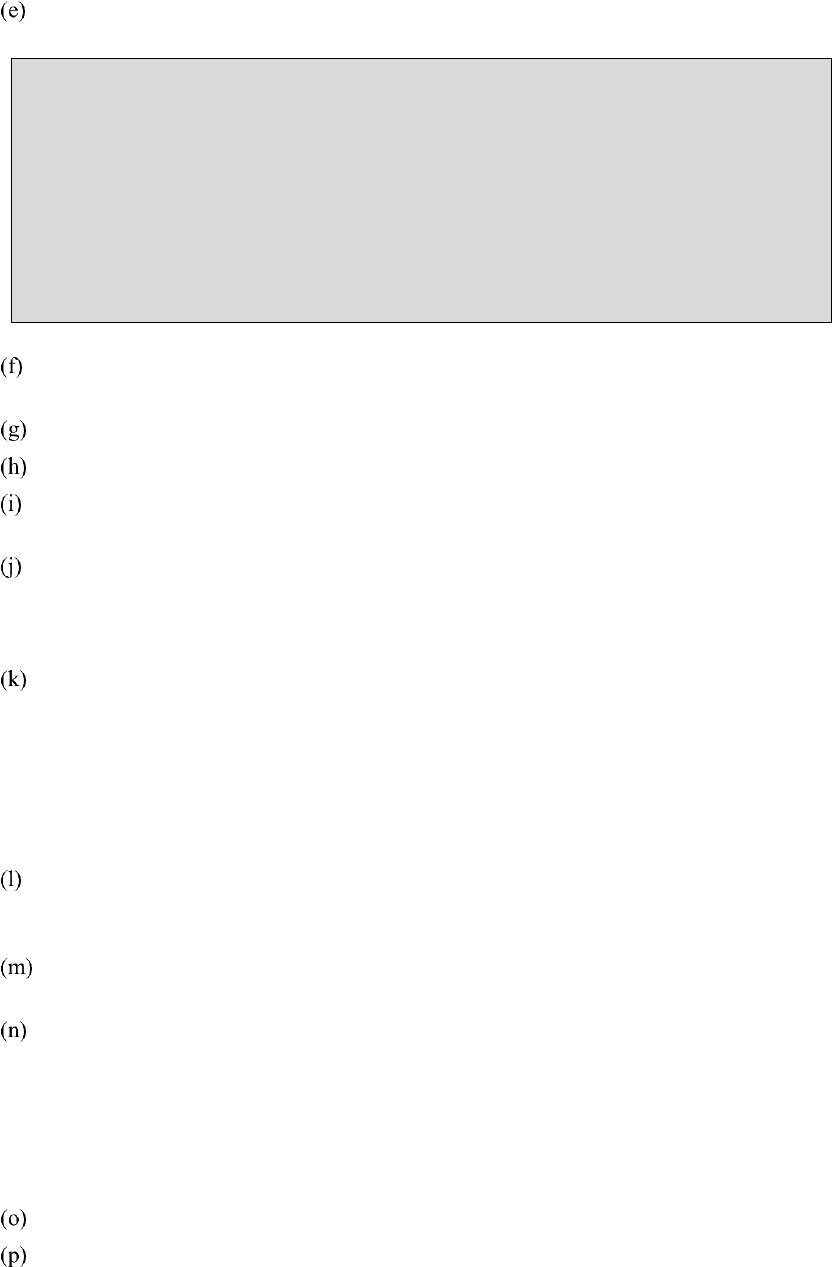
Energy Savings Scheme Rule of 2009
Effective from 19 June 2024
Page 6
electricity from a particular energy source. This includes but is not limited to purchases of
GreenPower;
an activity that results in a reduction in the consumption of an Eligible Fuel by reducing
production, service or safety levels;
Note: Reduced consumption of an Eligible Fuel not directly due to specific actions to improve
efficiency does not qualify as a Recognised Energy Saving Activity. Mild weather, lower
production, closing down part of a Site, or reducing the quality or quantity of service derived from
the use of an Eligible Fuel does not qualify as a Recognised Energy Saving Activity.
Reducing consumption of an Eligible Fuel where there is no negative effect on production or
service levels (e.g. reduction of excessive lighting, removal of redundant installed capacity or the
installation of more energy efficient equipment) is a Recognised Energy Saving Activity and is not
excluded by this clause.
an activity that reduces consumption of an Eligible Fuel by increasing consumption of
Non-renewable Fuels (other than electricity) to provide equivalent goods or services;
(deleted);
an activity that reduces Gas or Biogas consumption by flaring that Gas or Biogas instead;
an activity that reduces consumption of an Eligible Fuel by generating electricity from
any source where the generating system has a nameplate rating of 30 MW or higher;
a fuel switching activity under clause 7A, clause 8.5, clause 8.6 or clause 8.7 that leads to
a net increase in greenhouse gas emissions, where greenhouse gas emissions are
calculated using Energy Savings, and the emissions factors provided in Table A28 of
Schedule A.
an activity implemented at a Site in the Australian Capital Territory where the Site is
required to report energy consumption under any of the following:
(i) the National Greenhouse and Energy Reporting Act 2007 (Cth); or
(ii) the Australian Government’s Energy Efficiency in Government Operations
Policy; or
(iii) the Carbon Neutral ACT Government Framework.
if the Site is in the Australian Capital Territory, any Lighting Upgrade (as referred to in
clause 9.4) that is undertaken as part of a development or refurbishment requiring
development approval under the Planning and Development Act 2007 (ACT).
the export of electricity, Gas or Biogas from a Site to the Electricity Network or Gas
Network.
supply or purchase of a gaseous fuel from the Gas Network by a customer:
(i) where representations are made by the Gas Retailer that there is a reduction in
greenhouse gas emissions, because the gaseous fuel supplied represents an
amount equal to the production of a gaseous fuel from a particular energy source.
(ii) except where Biogas is supplied directly between neighbouring or nearby Sites by
a purpose-built pipe or system of pipes that has been licensed by SafeWork NSW
an activity that generates energy using Native Forest Bio-materials.
installation of a solar photovoltaic system, except where this is used for solar irrigation
pumping.
NSW Government Gazette
20 December 2023

Energy Savings Scheme Rule of 2009
Effective from 19 June 2024
Page 7
installation of a solar or heat pump water heater, except where these replace an electric or
gas hot water heater, or are installed in a non-residential building.
5.5 For the purposes of clause 5.3, a Recognised Energy Saving Activity may:
involve multiple Activity Definitions or items of End-User Equipment; and
occur at a single Site or across multiple Sites where each Implementation has an
Implementation Date; and
be delivered by Implementations with the same or different Implementation Dates.
Eligibility for accreditation
5.6 A person is only eligible for accreditation as an energy savings certificate provider if the
person is a suitable person to be so accredited.
5.7 In considering the suitability of a person to be accredited as an energy savings certificate
provider, the Scheme Administrator may take into account such matters as it thinks relevant,
including:
previous commercial dealings of the person and its associates; and
the standard of honesty and integrity shown in previous commercial dealings of the
person and its associates.
5.8 In clause 5.7, "associate", in relation to a person, has the same meaning it would have under
Division 2 of Part 1.2 of the Corporations Act 2001 (Cth) if only sections 10, 11, 12(2), 12(5),
15 and 16(1) formed part of that Division.
5.9 For Implementations at any Site located in the Australian Capital Territory, the energy savings
certificate provider must be an Approved Abatement Provider approved by the Energy
Efficiency Improvement Scheme Administrator as at the Implementation Date.
6 Creation of Energy Savings Certificates
6.1 (deleted)
6.2 An Accredited Certificate Provider may only create Energy Savings Certificates in respect of
the Energy Savings for an Implementation where:
the Accredited Certificate Provider is the Energy Saver for those Energy Savings as at the
Implementation Date; and
the Accredited Certificate Provider’s Accreditation Date for that Recognised Energy
Saving Activity is prior to the Implementation Date.
6.3 (deleted)
6.4 An Accredited Certificate Provider may not create Energy Savings Certificates in respect of
any Energy Savings for which Energy Savings Certificates have already been created.
6.5 An Accredited Certificate Provider may only create a certain Number of Certificates in
respect of the Energy Savings arising from a Recognised Energy Saving Activity, calculated
in accordance with Equation 1.
NSW Government Gazette
20 December 2023

Energy Savings Scheme Rule of 2009
Effective from 19 June 2024
Page 8
Equation 1
Where:
• Number of Certificates is rounded down to a whole number of Energy Savings
Certificates;
• the sum is across the Energy Savings arising from one or more Implementations of the
Recognised Energy Saving Activity;
• Electricity Savings, Gas Savings, Diesel Savings, Biofuel Savings, Biogas Savings,
Biomass Savings and Onsite Renewables Savings are the Electricity Savings, Gas Savings,
Diesel Savings, Biofuel Savings, Biogas Savings, Biomass Savings and Onsite
Renewables Savings respectively, in MWh, arising from each Implementation as
calculated according to (as relevant):
- the Project Impact Assessment Method (clause 7);
- the Project Impact Assessment with Measurement and Verification Method (clause 7A);
- the Metered Baseline Method (clause 8); or
- the Deemed Energy Savings Method (clause 9).
• Certificate Conversion Factors are as specified in clauses 33(1) and 33A of Schedule 4A
of the Act and clause 37A of the Electricity Supply (General) Regulation 2014.
• Regional Network Factor is the value from Table A24 of Schedule A corresponding to the
postcode of the Address of the Site or Sites where the Implementation(s) took place.
Note: Electricity Savings, Gas Savings, Diesel Savings, Biofuel Savings, Biogas Savings, Biomass
Savings and Onsite Renewables Savings may be negative. Energy Savings Certificates may only be
created where the result of Equation 1 is a positive number.
6.5A An Accredited Certificate Provider may only create Energy Savings Certificates in respect of
Energy Savings arising from a Recognised Energy Saving Activity if:
the Scheme Administrator has given the Accredited Certificate Provider approval to use a
calculation method in clauses 7, 7A, 8 or 9; and
the Scheme Administrator is satisfied that the Accredited Certificate Provider’s
application of the calculation method produced a result reasonably reflecting the Energy
Savings arising from that Implementation of the Recognised Energy Saving Activity.
6.5B Energy Savings may be totalled over more than one Implementations of the same Recognised
Energy Saving Activity to create one or more Energy Savings Certificates.
6.5C Any Implementation that meets all of the Eligibility Requirements, Equipment Requirements
and Implementation Requirements for the relevant Recognised Energy Saving Activity on the
Implementation Date, is deemed to meet those requirements of this Rule for Energy Savings
Certificate creation, unless otherwise advised in writing by the Scheme Administrator.
=
× ×
+ ×
+ ×
+ ×
+ ×
+ ×
+ ×
NSW Government Gazette
20 December 2023
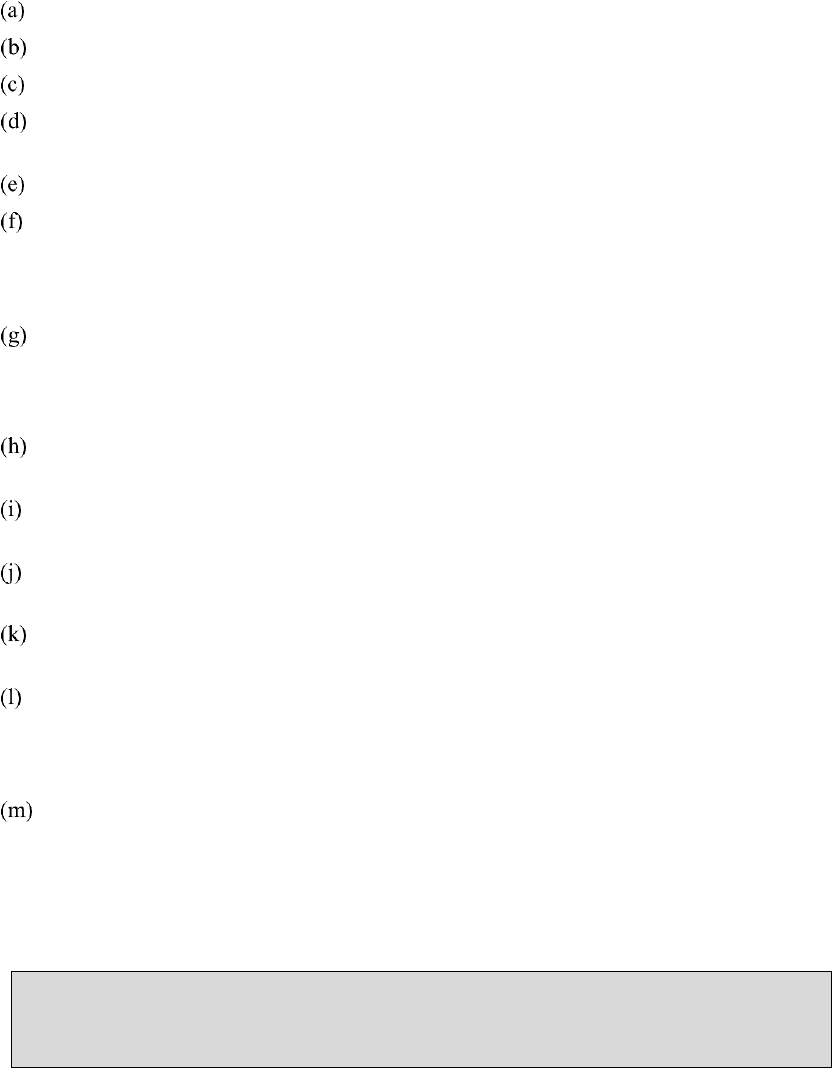
Energy Savings Scheme Rule of 2009
Effective from 19 June 2024
Page 9
6.6 (deleted)
6.7 (deleted)
6.8 For the purpose of applying to register the creation of Energy Savings Certificates for one or
more Implementations, an Accredited Certificate Provider must provide the following data to
the Scheme Administrator in a manner and form determined by the Scheme Administrator:
the Accredited Certificate Provider identifier;
the Recognised Energy Saving Activity identifier;
the Address of the Site or Sites where the Implementation(s) took place;
any other identifiers required to identify the Site or Sites where the Implementation(s)
took place;
the Implementation Date of the Implementation(s);
the Electricity Savings, Regional Network Factor applied, Gas Savings, Diesel Savings,
Biofuel Savings, Biogas Savings, Biomass Savings and Onsite Renewables Savings for
each Implementation, and the estimated percentage of each of these savings attributable to
fuel switching;
the Australian Business Number of
(i) the entity utilising the End-Use Service, where applicable;
(ii) or, for the purpose of clause 9.3, the Appliance Retailer;
the cost to the person who pays for the goods or services that comprise the
Implementation, excluding GST;
the type of the End-Use Service for which energy was saved in accordance with Table
A17 of Schedule A;
the Business Classification of the entity utilising the End-Use Service in accordance with
Table A18 of Schedule A;
the Method or sub-method and Activity Definition, where relevant, used to calculate the
Energy Savings;
the Electricity Savings, Gas Savings, Diesel Savings, Biofuel Savings, Biogas Savings,
Biomass Savings and Onsite Renewables Savings calculated under each Activity
Definition that is used for the Implementation, if the Energy Savings are calculated under
clause 9.8 or 9.9 of the Deemed Energy Savings Method; and
any other data providing evidence of Energy Savings from the Implementation as
Published, from time to time, by the Scheme Administrator.
6.9 Before registering the creation of an Energy Savings Certificate, the Scheme Administrator
may review the data provided in accordance with clause 6.8 to ensure that the calculation of
the Energy Savings used to create the Energy Savings Certificate is based on complete data.
Note: An Energy Savings Certificate has no force or effect until the creation of the certificate is
registered by the Scheme Administrator (clause 46 of Schedule 4A of the Act).
NSW Government Gazette
20 December 2023
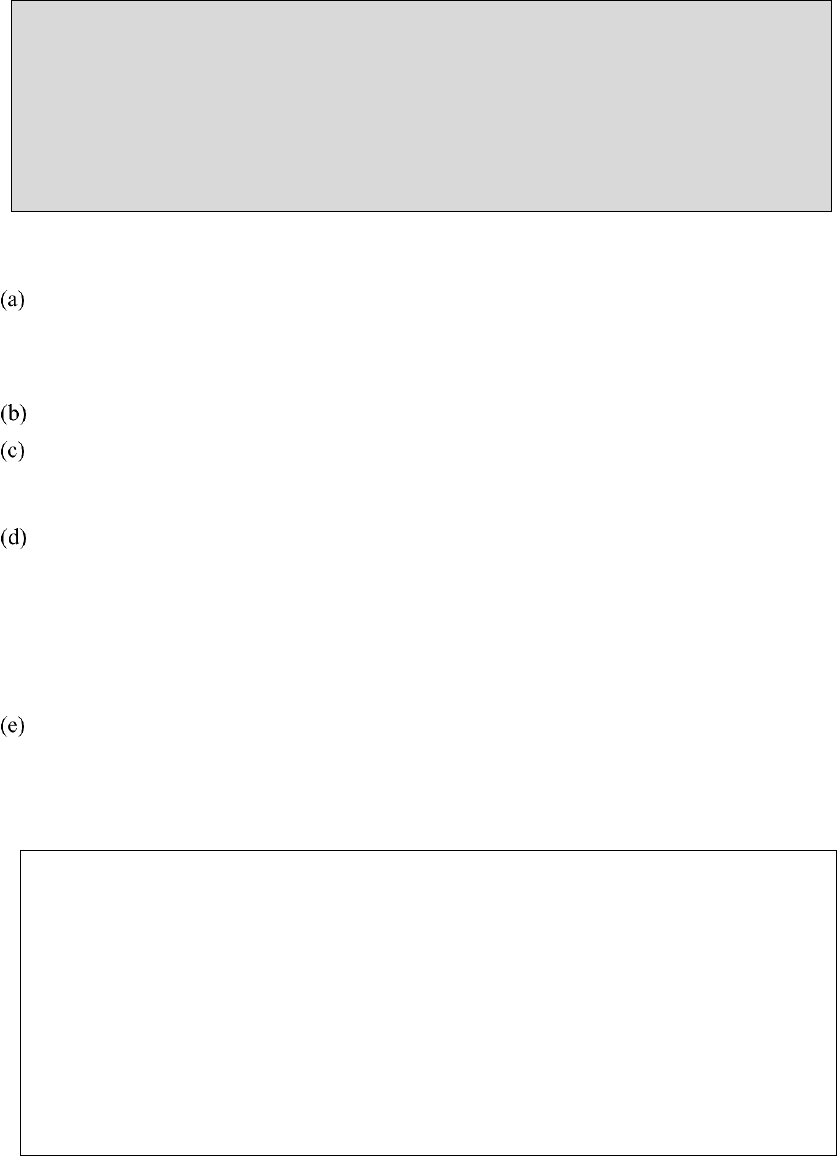
Energy Savings Scheme Rule of 2009
Effective from 19 June 2024
Page 10
7 Project Impact Assessment Method
Note: The Project Impact Assessment Method may only be used to “forward create” (under clause
7.4.4) or “top-up” (under clause 7.4.6) Energy Savings Certificates in relation to Implementations
with an Implementation Date on or before 30 October 2015.
The Project Impact Assessment Method may only be used for “annual creation” (using Equation 2)
to create Energy Savings Certificates in relation to Implementations with an Implementation Date
on or before 15 April 2016.
7.1 Energy Savings under the Project Impact Assessment Method
An Accredited Certificate Provider may only use the Project Impact Assessment Method
to calculate the Energy Savings of Implementations if the Accredited Certificate Provider
is authorised, on or before 30 September 2014, to use clause 7 to calculate those Energy
Savings under its accreditation conditions.
(deleted)
Energy Savings calculated in accordance with clause 7.4.4 or 7.4.6, may only be used to
create Energy Savings Certificates where those Energy Savings are for Implementations
with an Implementation Date on or before 30 October 2015.
Using the Project Impact Assessment Method, the Energy Savings of an Implementation
may be calculated using Equation 2, where:
(i) those Energy Savings are for Implementations with an Implementation Date on or
before 15 April 2016; and
(ii) those Energy Savings are for a maximum period of 10 years after the Implementation
Date.
For the purposes of clause 34(4) of Schedule 4A to the Act, Energy Savings that are
calculated using equation 2 are taken to occur on the last date of the period for which the
Energy Savings are calculated. The Accredited Certificate Provider must make a written
record of the deemed date before applying to register Energy Savings Certificates in
respect of the Energy Savings.
Equation 2
Electricity Savings = Reduced Electricity Consumption x Confidence Factor
Where:
• Reduced Electricity Consumption is the extent to which the electricity consumption of the
equipment, process, or system is, as a consequence of the Recognised Energy Saving
Activity, different to what it otherwise would have been, and is to be calculated in
accordance with the engineering assessment in clause 7.2; and
• Confidence Factor is the number determined in accordance with clause 7.3 (depending on
the type of engineering assessment performed).
7.2 Engineering assessment of reduced electricity consumption
Accredited Certificate Providers using the Project Impact Assessment Method in respect of
any Recognised Energy Saving Activity must calculate the reduced electricity consumption of
only the equipment, process, or system that is the subject of the Recognised Energy Saving
Activity using an engineering assessment or model:
NSW Government Gazette
20 December 2023

Energy Savings Scheme Rule of 2009
Effective from 19 June 2024
Page 11
that uses reasonable assumptions and generally accepted engineering methods, models,
and formulae;
in which the methods, models and formulae used to assess the Recognised Energy Saving
Activity are chosen by the Accredited Certificate Provider, but the assessment is assigned
a Confidence Factor under clause 7.3 reflecting the accuracy of the engineering
assessment conducted; and
that takes account of:
(i) the consumption of the existing equipment, systems or processes, or for the purposes
of clause 5.3B, the average energy efficiency of comparable New End-User
Equipment as described in that clause;
(ii) the performance of the equipment, systems or processes, including degradation over
time;
(iii) the operating characteristics of the equipment, systems or processes, including hours
of use, degree of loading, usage, operating patterns and behaviour, ambient conditions
and any other relevant factors; and
(iv) any of the factors or constants used in a Deemed Energy Savings Method under
clause 9, if the variable that the value represents is relevant to the assessment or, if the
Accredited Certificate Provider proposes to use a different value for the same
purpose, that value is acceptable to the Scheme Administrator.
7.3 Confidence Factor
The Confidence Factor is:
1.0, if the engineering assessment determines energy consumption to a high level of
accuracy based on logged or equivalent data from the End-User Equipment such as:
(i) hours of operation for the End-User Equipment determined from measurements
taken over time or other logged data, or a simpler method where this yields an
equivalent level of accuracy;
(ii) allowances for any variance in input characteristics and usage, degree of loading,
or output characteristics for the End-User Equipment over time determined from
measurements or other logged data, or a simpler method where this yields an
equivalent level of accuracy;
(iii) operating environment and ambient conditions over time for the End-User
Equipment determined from measurements or other logged data, or a simpler
method where this yields an equivalent level of accuracy;
(iv) End-User Equipment characteristics using a full performance curve from
manufacturers’ or measured data, or a simpler method where this yields an
equivalent level of accuracy; and
(v) performance degradation of the End-User Equipment over time using detailed
calculations and manufacturers’ or measured degradation characteristics, or a
simpler method where this yields an equivalent level of accuracy, (including
where the engineering assessment relies upon factors or constants used in a
Deemed Energy Savings Method set out in this Rule);
or,
0.9, if the engineering assessment determines energy consumption to a lesser level of
accuracy from that described in clause 7.3(a), based on estimations from logged data,
records or equivalent data such as:
NSW Government Gazette
20 December 2023

Energy Savings Scheme Rule of 2009
Effective from 19 June 2024
Page 12
(i) hours of operation for the End-User Equipment estimated from records, or a
simpler method where this yields an equivalent level of accuracy;
(ii) allowances for any variance in input characteristics and usage, degree of loading,
or output characteristics for the End-User Equipment over time estimated from
records, or a simpler method where this yields an equivalent level of accuracy;
(iii) operating environment and ambient conditions over time estimated for the End-
User Equipment from records or average measurements, or a simpler method
where this yields an equivalent level of accuracy;
(iv) End-User Equipment characteristics taking account of performance at full and
part load or discrete operating modes, or a simpler method where this yields an
equivalent level of accuracy; and
(v) estimates of performance degradation of the End-User Equipment over time using
manufacturers’ or other representative degradation characteristics, or a simpler
method where this yields an equivalent level of accuracy,
or,
0.8, or another value approved by the Scheme Administrator, if the engineering
assessment does not meet the level of accuracy set out in clause 7.3 (a) or (b).
7.4 Energy Savings able to be brought forward using the Project Impact Assessment Method
Note: Clause 34 of Schedule 4A of the Act provides that the Rules may specify when Energy
Savings arising from a Recognised Energy Saving Activity are considered to have occurred.
Therefore, under the Rule, Accredited Certificate Providers may elect to ‘forward create’ Energy
Savings Certificates by deeming Energy Savings which will cumulatively occur for a future period,
to have occurred on the Implementation Date or a later date per the requirements of clause 7.4.3.
However, a discount will be applied to the calculation of those Energy Savings.
7.4.1 For the purposes of clause 34 of Schedule 4A of the Act, an Accredited Certificate Provider
may elect for future Energy Savings for an Implementation to be deemed to have occurred on
a date determined in accordance with clause 7.4.3.
7.4.2 The time period of future Energy Savings for an Implementation which may be deemed to
have occurred on a date determined by clause 7.4.3, must be set such that:
the period does not exceed 5 years;
the sum of all time periods of future Energy Savings for an Implementation does not
exceed the life of the Implementation (in years) determined by the Accredited Certificate
Provider, to the satisfaction of the Scheme Administrator, with reference to:
(i) the number of Energy Savings Certificates that are otherwise eligible to be
created over a given period, determined in accordance with this Rule and to the
satisfaction of the Scheme Administrator;
(ii) any likely performance degradation of the End-User Equipment that will tend to
result in Energy Savings in one period being lower than Energy Savings in
preceding periods of equal duration; and
(iii) the expected lifetime of the End-User Equipment, taking into account its
characteristics, usage and typical frequency of replacement assuming that the use
of the Site and End-User Equipment remains the same; and
NSW Government Gazette
20 December 2023

Energy Savings Scheme Rule of 2009
Effective from 19 June 2024
Page 13
(iv) the end date of the period is not later than 10 years after the Implementation Date.
7.4.3 If an Accredited Certificate Provider makes the election in clause 7.4.1, the date on which the
Energy Savings for that Implementation are deemed to occur is the later of:
the Implementation Date; and
in respect of an Implementation prior to 1 July 2014, the first date by which all the Energy
Savings previously brought forward under clause 7.4.1 to create Energy Savings
Certificates in respect of the same Recognised Energy Saving Activity have actually
occurred.
7.4.4 The amount of Energy Savings deemed to occur on the date determined by clause 7.4.3 must
be calculated in accordance with the method set out in Equation 3.
Equation 3
Electricity Savings = Reduced Electricity Consumption
n
x Confidence Factor x Decay Factor
n
Where:
• Reduced Electricity Consumption is the extent to which the electricity consumption of the
equipment, process, or system is, as a consequence of the Recognised Energy Saving
Activity, different to what it otherwise would have been in year n;
• Confidence Factor depends on the type of engineering assessment performed under clause
7.2 and is assigned according to clause 7.3;
• Decay Factor
n
is set out in Table A16 of Schedule A for year n; and
• n is the year from 1 (the first year of Energy Savings claimed) to the number of years in
the time period determined by clause 7.4.2.
Note: At the end of the period for which Energy Savings Certificates were ‘forward created’,
Accredited Certificate Providers can apply to create Energy Savings Certificates for the Energy
Savings which were previously discounted.
7.4.5 For the purposes of clause 34 of Schedule 4A of the Act, Energy Savings which are used to
create Energy Savings Certificates in accordance with clause 7.4.6 are taken to occur on the
date on which the time period as determined in clause 7.4.2 ends.
7.4.6 At the end of the time period determined by clause 7.4.2, the Accredited Certificate Provider
may create Energy Savings Certificates using Energy Savings for the relevant Implementation
equal to:
the Energy Savings for each year in the time period other than the first year as calculated
using Equation 2; less
the Energy Savings for each year in the time period other than the first year as calculated
for the relevant year in Equation 3,
provided the Accredited Certificate Provider establishes, to the satisfaction of the Scheme
Administrator, that the Energy Savings calculated in clause 7.4.6(a) have actually occurred.
7.4.7 (deleted)
NSW Government Gazette
20 December 2023

Energy Savings Scheme Rule of 2009
Effective from 19 June 2024
Page 14
7.5 The Implementation Date is the date that the Implementation commenced normal operations.
7.6 The Energy Saver is the Purchaser.
7.7 (deleted)
7A Project Impact Assessment with Measurement and Verification Method
7A.1 Equations to calculate Energy Savings
Using the Project Impact Assessment with Measurement and Verification Method, the Energy
Savings for an Implementation may be calculated using:
Equations 7A.1 and 7A.2 for forward creation for a single Site model, for Energy
Savings calculated from a Baseline Energy Model and Operating Energy Model
established to model performance before and after the Implementation; or
Equations 7A.3 and 7A.4 for annual creation or top-up, for Energy Savings calculated
from actual measurements taken after Implementation compared with expected
performance of a Baseline Energy Model under the same conditions; or
Equations 7A.1 and 7A.5 for creation based on a multiple Site model, for Energy
Savings calculated from a Baseline Energy Model and Operating Energy Model using a
Sampling Method.
7A.2 Acceptable energy model types
Baseline Energy Models and Operating Energy Models must be established in accordance
with the following criteria:
(i) An Estimate of the Mean that is based on measurements of energy consumption,
Independent Variables and Site Constants, where relevant; that specifies a
Measurement Period and Modelling Frequency; where the Coefficient of Variation of
the energy consumption over the Measurement Period is less than 15%; or
(ii) Regression Analysis that is based on measurements of energy consumption,
Independent Variables and Site Constants;
a. specifies a Measurement Period, and Modelling Frequency;
b. meets all the minimum statistical requirements as stated in Table A22 of
Schedule A;
c. has the number of independent observations at the Modelling Frequency for
each Site when calculated in accordance with clause 7A.6 to be at least six
times the Number of Model Parameters in the energy model, except when the
Short Energy Models Method is used to make a Non-Routine Adjustment in
accordance with clause 7A.5B1(b)(iii); or
(iii) Computer Simulation that uses a commercially available software package approved
by the Scheme Administrator for use in modelling the relevant type of End-User
Equipment, and that is calibrated against measurements taken from the actual End-
User Equipment being simulated to meet any requirements as Published by the
Scheme Administrator.
Baseline Energy Models and Operating Energy Models may be developed for:
(i) a single Site based on measurements taken from that Site; or
NSW Government Gazette
20 December 2023

Energy Savings Scheme Rule of 2009
Effective from 19 June 2024
Page 15
(ii) multiple Sites based on measurements taken from Sample Sites, using a Sampling
Method in accordance with clause 7A.20.
7A.3 Baseline Energy Model
A Baseline Energy Model must estimate the consumption of one Eligible Fuel in the absence
of the Implementation and must:
be dependent on Independent Variables and Site Constants, where relevant, that are
established by measurements taken under Normal Operating Conditions in accordance
with clause 7A.5 of this Rule;
if the model is for New End-User Equipment, be established based on Independent
Variables and Site Constants that incorporate the average energy performance of the same
type of equipment in accordance with clause 5.3B of this Rule;
have an Effective Range determined in accordance with clause 7A.8 of this Rule;
if using Equation 7A.1, estimate annual consumption of one Eligible Fuel based on a
Normal Year established in accordance with clause 7A.7 of this Rule;
if using Equation 7A.3:
(i) estimate annual consumption of one Eligible Fuel based on measurements of
Independent Variables and Site Constants; and
(ii) use a baseline Measurement Period that has an end date that is no more than 10 years
earlier than the end date of the Measurement Period that Energy Savings are being
claimed for;
be deemed appropriate for the Implementation by a Measurement and Verification
Professional, with their written explanatory reasoning provided.
7A.4 Operating Energy Model
An Operating Energy Model must estimate the consumption of one Eligible Fuel after an
Implementation during a Normal Year and must:
be dependent on Independent Variables and Site Constants, where relevant, that are
established by measurements taken under Normal Operating Conditions in accordance
with clause 7A.5 of this Rule;
have an Effective Range determined in accordance with clause 7A.8 of this Rule;
estimate annual consumption of one Eligible Fuel based on a Normal Year established in
accordance with clause 7A.7 of this Rule; and
be deemed appropriate for the Implementation by a Measurement and Verification
Professional, with their written explanatory reasoning provided.
7A.5 Measurement Procedures
When measuring Eligible Fuel consumption, Independent Variables, Site Constants, or any
other relevant parameter, the Accredited Certificate Provider must:
define the Measurement Period so that it consists of a start date and an end date, and
optionally a time of day for each of those dates;
define the Measurement Period so that it will have:
NSW Government Gazette
20 December 2023

Energy Savings Scheme Rule of 2009
Effective from 19 June 2024
Page 16
(i) in relation to the Baseline Energy Model under clause 7A.3 of this Rule, an end date
that occurs before the Implementation Date;
(ii) in relation to the Operating Energy Model under clause 7A.4 of this Rule, a start date
that occurs after the Implementation Date; and
(iii) in relation to Measured Annual Eligible Fuel
f
Savings calculated using Equation
7A.4 of this Rule, a start date that occurs on or after the Implementation Date and an
end date that is the day before the anniversary of the start date (such that the
Measurement Period is for a full year); and
(iv) in relation to Additional Energy Savings calculated in accordance with clause 7A.14
of this Rule, a start date that occurs on the Implementation Date or the anniversary of
the Implementation Date (as the case may be) and an end date that is the day before
the anniversary of the start date (such that the Measurement Period is for one or more
full years and within the Maximum Time Period for Forward Creation determined
under clause 7A.12).
define the Measurement Frequency of measurements over the Measurement Period;
define the Measurement Boundary;
specify measurement equipment (meters) or other sources of measurements;
define the calibration procedures, accuracy and precision of such measurement methods.
This is not required for meters approved by the National Measurement Institute that are
used for the purposes of trade as defined by the National Measurement Act 1960;
(f1) ensure that the Measurement Period includes time periods during which Independent
Variables may reasonably be expected to lead to the Implementation increasing
consumption of the relevant Eligible Fuel;
(deleted)
have the Measurement Procedures defined by clauses 7A.5 (a) to (g) deemed appropriate
for the Implementation by a Measurement and Verification Professional, with their
written explanatory reasoning provided.
7A.5A Measurement Procedures in Relation to the Baseline Energy Model
For the purposes of satisfying clause 7A.5(h), Measurement Procedures in relation to the
Baseline Energy Model under clause 7A.3 must be deemed appropriate for the
Implementation by a Measurement and Verification Professional, with their written
explanatory reasoning provided prior to the Implementation Date.
7A.5B PIAM&V Method Application Requirements for Non-Routine Events and Adjustments
The Minister may, from time to time, by published order, make PIAM&V Method
Application Requirements for Non-Routine Events and Adjustments.
PIAM&V Method Application Requirements for Non-Routine Events and Adjustments
may complement and/or supplement the requirements of clause 7A; but must not be
inconsistent with this Rule.
An Accredited Certificate Provider must comply with PIAM&V Method Application
Requirements for Non-Routine Events and Adjustments.
For the avoidance of doubt, for all purposes, including the purposes of clause 36(1) of
Schedule 4A of the Act, a contravention of the PIAM&V Method Application
Requirements for Non-Routine Events and Adjustments by an Accredited Certificate
Provider is a contravention of this Rule.
NSW Government Gazette
20 December 2023

Energy Savings Scheme Rule of 2009
Effective from 19 June 2024
Page 17
7A.5B1 Measurement Procedures to adjust for Non-Routine Events
For the purpose of satisfying clauses 7A.5 and 7A.5B, an Accredited Certificate Provider
must use the PIAM&V Method Application Requirements for Non-Routine Events and
Adjustments to identify and record any Non-Routine Events occurring within the
Measurement Boundary and during any of the Measurement Periods, or the Implementation
Period; and
for Non-Routine Events that are sub-metered, use the “Sub-Metering Method" to make a
Non-Routine Adjustments; and
for Non-Routine Events that are not sub-metered, use the following methods to make
Non-Routine Adjustments:
(i) "Other Implementations (OIMPs) Estimate Method" for Non-Routine Events caused
by Energy Savings from Implementations other than the current Implementation for
which the PIAM&V energy model is being established and is impacted by the Non-
Routine Event; or
(ii) "Data Exclusion Method" in situations where a temporary Non-Routine Event is less
than or equal to 25% of the Measurement Period of choice, or where a permanent
Non-Routine Event commences within the first 25% of the Baseline Energy Model
Measurement Period or within the last 25% of the Operating Energy Model
Measurement Period; or
(iii) "Short Energy Models Method" in situations where a temporary Non-Routine Event
is greater than 25% of the Measurement Period of choice, or where a permanent
Non-Routine Event commences after the first 25% of the Baseline Energy Model
Measurement Period but before the last 25% of the Operating Energy Model
Measurement Period; and
ensure the Baseline Energy Model and Operating Energy Model resulting from processes
performed in clauses 7A.5B1(a) and (b) meet the minimum statistical requirements in
accordance with Table A22 in Schedule A; and
have the Procedures defined by clauses 7A.5B1 (a) to (c) deemed appropriate for the
Implementation by a Measurement and Verification Professional, with their written
explanatory reasoning provided.
7A.6 Energy consumption, Independent Variables and Site Constants
When identifying and assigning values for Eligible Fuel consumption, Independent Variables
and Site Constants an Accredited Certificate Provider must:
define procedures for converting measurements to Eligible Fuel consumption,
Independent Variables and Site Constants, if relevant;
assign values for Eligible Fuel consumption, Independent Variables and Site Constants
for each time period at the Modelling Frequency in each Measurement Period, where
relevant;
ensure the Modelling Frequency of independent observations for the Independent
Variables and Eligible Fuel consumption within the Measurement Period for each energy
model are the same; and
have the Eligible Fuel consumption, Independent Variables and Site Constants deemed
appropriate for the Implementation by a Measurement and Verification Professional, with
their written explanatory reasoning provided.
NSW Government Gazette
20 December 2023

Energy Savings Scheme Rule of 2009
Effective from 19 June 2024
Page 18
7A.7 Normal Year
When determining a Normal Year an Accredited Certificate Provider must:
provide values for each Independent Variable and Site Constant over a full year;
ensure the Normal Year represents a typical year for operation of the End-User
Equipment within the Maximum Time Period for Forward Creation determined in
accordance with clause 7A.12;
describe the assumptions used to establish the Normal Year; and
for a single Site model, have the Normal Year deemed appropriate for the Implementation
by a Measurement and Verification Professional, with their written explanatory reasoning
provided; and
for a multiple Site model:
(i) develop a procedure for determining the Normal Year for each Site in the Population;
and
(ii) have the procedure for determining the Normal Year deemed appropriate by a
Measurement and Verification Professional, with their written explanatory reasoning
provided.
7A.8 Effective Range
When defining the Effective Range of the energy models in clauses 7A.3 and 7A.4 an
Accredited Certificate Provider must:
ensure that the Effective Range is based on the range of measured values for each
Independent Variable used to develop the energy model, where each Independent
Variable has:
(i) a lower limit that is calculated as the minimum of the measured values, minus 5% of
difference between the minimum and maximum of the measured values; and
(ii) an upper limit that is calculated as the maximum of the measured values, plus 5% of
difference between the minimum and maximum of the measured values; and
(deleted)
have the Effective Range deemed appropriate for the Implementation by a Measurement
and Verification Professional, with their written explanatory reasoning provided.
7A.9 Interactive Energy Effects
When estimating Interactive Energy Effects an Accredited Certificate Provider, in relation to
Equations 7A.2, 7A.4 or 7A.5, must:
(deleted)
(deleted)
estimate the sum of the change in consumption of each affected Eligible Fuel, f, from
End-User Equipment for which consumption of each Eligible Fuel is not measured
(Interactive Energy Effects
f
);
ensure that the sum of the absolute Interactive Energy Effects is not greater than 10% of
total Eligible Fuel
f
Savings for that relevant Eligible Fuel, f, unless estimated in
accordance with Method Requirements;
NSW Government Gazette
20 December 2023

Energy Savings Scheme Rule of 2009
Effective from 19 June 2024
Page 19
have the Interactive Energy Effects
f
deemed appropriate for the Implementation by a
Measurement and Verification Professional, with their written explanatory reasoning
provided; and
include identified Interactive Energy Effects
f
for fuels that are not measured.
7A.10 Accuracy Factor
The Accuracy Factor, in relation to Equations 7A.1 and 7A.3, is between 1 and 0; and
is either;
(i) the value corresponding to the energy model type and relative precision of the relevant
Energy Savings estimate at 90% confidence level as listed in Table A23 of Schedule
A; or
(ii) determined by another process as Published by the Scheme Administrator; and
must be deemed appropriate for the Implementation by a Measurement and Verification
Professional, with their written explanatory reasoning provided.
7A.11 Energy Savings brought forward
For the purposes of clause 34 of Schedule 4A of the Act, the Energy Savings for an
Implementation calculated using Equation 7A.1, based on the relevant Normal Year
Energy Savings calculated using Equation 7A.2, are taken to occur on the last date of the
Measurement Period for the Operating Energy Model as defined in clause 7A.4 of this
Rule.
For the purposes of clause 34 of Schedule 4A of the Act, the Energy Savings for an
Implementation calculated using Equation 7A.1, based on the relevant Normal Year
Energy Savings calculated using Equation 7A.5, are taken to occur on the later of:
(i) the last date of the Measurement Period for the Operating Energy Model; and
(ii) the Implementation Date.
A maximum of 50,000 Energy Savings Certificates can be brought forward from each
Implementation.
7A.12 Maximum Time Period for Forward Creation
The Maximum Time Period for Forward Creation of Energy Savings Certificates in respect of
Energy Savings for an Implementation calculated using Equation 7A.1, and for the purposes
of clauses 7A.7, 7A.13 and 7A.14, must be set such that:
if a Persistence Model is used, the period does not exceed the expected lifetime of the
End-User Equipment in whole years, as determined by that Persistence Model;
if Energy Savings Certificates have previously been created for the Implementation using
the Project Impact Assessment Method, the period does not exceed 5 years; and
the start date of the period is the Implementation Date, and the end date of the period is
not later than 10 years after the Implementation Date.
7A.13 Persistence Model
A Persistence Model must not be used in connection with the calculation of Energy
Savings unless it has first been determined to be acceptable for use by the Scheme
Administrator.
NSW Government Gazette
20 December 2023

Energy Savings Scheme Rule of 2009
Effective from 19 June 2024
Page 20
A Persistence Model must:
(i) estimate the expected lifetime of the End-User Equipment in whole years;
(ii) estimate the Decay Factor for each future year within the Maximum Time Period for
Forward Creation;
(iii) be publicly accessible; and
(iv) satisfy any requirements Published by the Scheme Administrator.
The use of a Persistence Model to forecast the Energy Savings from an Implementation
must take into account:
(i) the Business Classification from Table A18 of Schedule A for the Site, if known and
relevant;
(ii) the End-User Equipment type;
(iii) the operating hours for the End-User Equipment; and
(iv) typical ambient conditions for the Site, including, where relevant, temperature,
humidity and salinity.
The Accredited Certificate Provider must have the use of the Persistence Model deemed
appropriate for the Implementation by a Measurement and Verification Professional, with
their written explanatory reasoning provided.
7A.14 Top-up certificate creation
Accredited Certificate Providers may create new Energy Savings Certificates in respect of
Additional Energy Savings which have been calculated using Equations 7A.3 and 7A.4 for
one or more Measurement Periods for the Implementation, according to the following:
the term ‘Measured Annual Eligible Fuel
f
Savings’ in Equation 7A.3 is taken to be the
sum of relevant Eligible Fuel
f
Savings or Gas Savings for each Measurement Period for
the relevant Implementation, calculated in accordance with Equation 7A.4; and
the term 'Counted Energy Savings
i
' in Equation 7A.3 is taken to be the sum of total
relevant Eligible Fuel
f
Savings for which Energy Savings Certificates have previously
been created for the Implementation, for each Measurement Period for the relevant
Implementation.
7A.14A Date on which Energy Savings are taken to occur
For the purposes of clause 34 of Schedule 4A of the Act, the Energy Savings for which
Energy Savings Certificates are created using Equations 7A.3 and 7A.4 are taken to occur on
the end date of the Measurement Period of the Energy Savings.
7A.15 Measurement and Verification Professional
A Measurement and Verification Professional is a person who is approved by the Scheme
Administrator on the basis that such person meets the following criteria to the satisfaction
of the Scheme Administrator:
(i) the person has an understanding of clause 7A and relevant measurement and
verification techniques;
(ii) the person has an understanding of how the relevant End-User Equipment converts
energy into End-Use Services and is affected by the Independent Variables;
(iii) the person is able to perform Regression Analysis, if relevant;
NSW Government Gazette
20 December 2023

Energy Savings Scheme Rule of 2009
Effective from 19 June 2024
Page 21
(iv) the person is able to perform an Estimate of the Mean, if relevant;
(v) the person is able to calibrate outputs from a computer simulation, if relevant;
(vi) the person has an understanding of the Sampling Method, if relevant; and
(vii) the person satisfies such additional requirements as Published, from time to time, by
the Scheme Administrator.
An application for approval as a Measurement and Verification Professional must be in
the manner and form (if any) as determined and Published by the Scheme Administrator.
The Scheme Administrator may withdraw its approval of a person as a Measurement and
Verification Professional if the Scheme Administrator considers that the person does not,
or ceases to, satisfy the criteria set out in clause 7A.15(a).
The Scheme Administrator may approve or refuse an application made under clause
7A.15(a).
7A.16 Method Requirements
The Scheme Administrator may Publish, from time to time, PIAM&V Method
Requirements.
PIAM&V Method Requirements:
(i) may complement and/or supplement the requirements of this clause 7A; but
(ii) must not be inconsistent with this Rule.
An Accredited Certificate Provider must comply with PIAM&V Method Requirements.
If the PIAM&V Method Requirements and the PIAM&V Method Application
Requirements for Non-Routine Events and Adjustments are inconsistent, the latter
prevails to the extent of the inconsistency.
For the avoidance of doubt, for all purposes, including the purposes of clause 36(1) of
Schedule 4A of the Act, a contravention of a PIAM&V Method Requirement by an
Accredited Certificate Provider is a contravention of this Rule.
7A.17 Implementation Date
The Implementation Date is the date that the Implementation commenced normal operations.
7A.18 Energy Saver
The Energy Saver is the Purchaser.
7A.19 (deleted)
7A.20 Sampling Method
When using the Sampling Method to establish a Baseline Energy Model and Operating
Energy Model for multiple Sites, an Accredited Certificate Provider must:
define the Eligibility Requirements to test if a Site can be included in the Population,
based on the:
(i) existing End-User Equipment:
(ii) End-Use Services being provided;
(iii) Recognised Energy Saving Activity to be undertaken;
NSW Government Gazette
20 December 2023

Energy Savings Scheme Rule of 2009
Effective from 19 June 2024
Page 22
(iv) Site Constants; and
(v) any additional requirements as Published, from time to time, by the Scheme
Administrator;
only include Sites, that meet the Eligibility Requirements, in the Population;
describe the expected distribution of Site Constants across the Population;
define the Representativeness Test to determine if the Sample Sites are representative of
the Population with respect to Site Constants;
define conditions under which additional Sample Sites must be selected to ensure
Representativeness Tests are met;
ensure that the number of Sample Sites is at least six times the number of Site Constants
in each energy model;
ensure the process of selecting Sample Sites minimises bias;
determine the Normal Year for each Site prior to the Implementation Date, according to
the procedure that is deemed appropriate under clause 7A.7 (e);
have the Sampling Method deemed appropriate for the Population by a Measurement and
Verification Professional, with their written explanatory reasoning provided; and
meet any other criteria as Published, from time to time, by the Scheme Administrator.
7A.21 Additional Requirements for Lighting Upgrades
The Project Impact Assessment with Measurement and Verification Method in this clause 7A
may only be used to calculate Energy Savings for a Lighting Upgrade where each item of
End-User Equipment used in the Lighting Upgrade is either:
a Standard Equipment Class as listed in Table A9.1 of Schedule A or,
an Other Equipment Class as listed in Table A9.3 of Schedule A, provided that the item is
accepted by the Scheme Administrator as meeting the Equipment Requirements relating
to safety Published, from time to time, by the Scheme Administrator in accordance with
clause 7A.21A.
7A.21A Acceptable End-User Equipment for Lighting Upgrades
7A.21A.1 Under the Project Impact Assessment with Measurement and Verification Method,
Equipment Requirements apply to End-User Equipment used in a Lighting Upgrade. The
Equipment Requirements are specified in clause 7A.21, and also include any additional
Equipment Requirements relating to safety (as Published from time to time by the Scheme
Administrator) that apply to the relevant calculation method of this Rule.
7A.21A.2 The Scheme Administrator may Publish, from time to time, a list of Products that are
accepted by the Scheme Administrator as meeting the Equipment Requirements referred to in
clause 7A.21 by:
(a) Publishing a detailed list identifying each Product;
(b) Publishing a reference to a list from a certifying body, along with any restrictions on that list;
and/or
(c) Publishing a requirement for labelling in accordance with a labelling scheme, along with any
restrictions on that labelling.
7A.21A.3 Subject to clause 7A.21A.4, any Accredited Certificate Provider (or other persons as
Published by the Scheme Administrator), may apply to the Scheme Administrator to have a
Product accepted as meeting the Equipment Requirements, provided that they:
NSW Government Gazette
20 December 2023

Energy Savings Scheme Rule of 2009
Effective from 19 June 2024
Page 23
apply in a form and manner required by the Scheme Administrator;
pay any fee required by the Scheme Administrator in respect of the investigation and
determination of the application on a cost recovery basis and including an allowance for:
(i) the recovery by the Scheme Administrator of its costs in establishing, operating
and maintaining the systems and databases required in connection with the
assessment, acceptance and rejection of applications made under this clause
7A.21A.3;
(i) the exercise of the Scheme Administrator's powers under clauses 7A.21A.2 and
7A.21A.5; and
(ii) the payment and collection of fees under this clause 7A.21A.3(b);
identify the Product; and
provide evidence that the Product meets all of the Equipment Requirements.
7A.21A.4 The Scheme Administrator may limit the number of applications that may be made during
a period under clause 7A.21A.3, either in aggregate or by particular persons or classes of
persons, by Publishing a notice that sets out that period and limit.
7A.21A.5 The Scheme Administrator may, at any time, cease to accept a Product as meeting the
Equipment Requirements, provided that it:
(a) notifies all Accredited Certificate Providers accredited for the relevant Recognised Energy
Saving Activity of the change and the reason for the change, prior to the Product ceasing
to be accepted for this purpose; and
(b) ensures that all Published lists reflect the change in a timely manner.
7A.21A.5A The Scheme Administrator may accept or reject an application made under clause
7A.21A.3.
7A.21A.6 Without limiting clause 7A.21A.5A, the Scheme Administrator may reject an application
made under clause 7A.21A.3 where the applicant has not provided additional information
requested by the Scheme Administrator in support of that application within a timeframe
Published by the Scheme Administrator.
Note: Equations 7A.1 to 7A.5 are used as required to:
• calculate relevant Energy Savings for projects that affect consumption of that Eligible
Fuel; or
• calculate relevant Energy Savings for each Eligible Fuel separately for projects that affect
consumption of two or more Eligible Fuels, even if Energy Savings for an Eligible Fuel are
negative. Separate energy models must be developed for each Eligible Fuel.
Equation 7A.1
Energy Savings calculated from a Baseline Energy Model and Operating Energy
Model
Eligible Fuel
f
Savings =
NSW Government Gazette
20 December 2023

Energy Savings Scheme Rule of 2009
Effective from 19 June 2024
Page 24
Where:
• Eligible Fuel
f
Savings means the relevant Energy Savings expression for fuel f defined in
Table 7A.1.
Table 7A.1: relevant Energy Savings expression for Eligible Fuel
f
Savings
Where fuel f in Eligible Fuel
f
is:
The Energy Savings expression is:
electricity
Electricity Savings
Gas
Gas Savings
diesel
Diesel Savings
Biofuel
Biofuel Savings
Biogas
Biogas Savings
Biomass
Biomass Savings
Onsite Renewables
Onsite Renewable Savings
• f means the relevant Eligible Fuel.
• i means the year number, commencing sequentially from 1 up to the Maximum Time Period
for Forward Creation of Eligible Fuel f, where Maximum Time Period for Forward
Creation is determined in accordance with clause 7A.12 of this Rule.
• Normal Year Eligible Fuel
f
Savings means the estimated savings from Eligible Fuel f, in
MWh, attributable to the Implementation from a Normal Year of operation before taking
into account equipment degradation, and is calculated using:
• Equation 7A.5 if a Sampling Method is used, and
• Equation 7A.2 in all other cases.
• Accuracy Factor
f
means a number between 0 and 1 for Eligible Fuel f, as determined by
clause 7A.10 of this Rule.
• Decay Factor
fi
means a number between 0 and 1 for Eligible Fuel f, which quantifies the
decay in year i of Eligible Fuel
f
Savings due to equipment degradation over time, and is:
• equal to 1 for Eligible Fuel
f
Savings in any years the Normal Year
• Eligible Fuel
f
Savings are negative; and
• in all other cases, determined by either:
• applying the value corresponding to the relevant year since the
Implementation Date in Table A16 of Schedule A, or
• assigning a value for that year from a Persistence Model in accordance
with clause 7A.13 of this Rule.
• Counted Energy Savings
fi
means the total Eligible Fuel
f
Savings for Eligible Fuel f, for
which Energy Savings Certificates have previously been created for the Implementation in
the year i.
Equation 7A.2
Calculation of Normal Year Eligible Fuel
f
Savings
NSW Government Gazette
20 December 2023

Energy Savings Scheme Rule of 2009
Effective from 19 June 2024
Page 25
Where:
• Normal Year Eligible Fuel
f
Savings means Energy Savings for the Normal Year for fuel f.
• f means the relevant Eligible Fuel.
• t means a time period at the Modelling Frequency in the Normal Year, while adjusting for
any time periods subject to any Non-Routine Adjustments in accordance with clause
7A.5B1.
•
: is the Effective Range Adjustment Factor that adjusts for Normal Year Eligible
Fuel
f
Savings during a time period t at the Modelling Frequency corresponding to
Independent Variables values
that fall outside the Effective Range of either the
Baseline Energy Model or Operating Energy Model:
If ERAF is calculated to be a value less than 0, then an ERAF of 0 is to be applied.
For values of Independent Variables within the Effective Range of either the Baseline
Energy Model or Operating Energy Model, an ERAF of 1.0 is applied. Otherwise ERAF is
calculated as follows:
Where:
: is the Percentage Outside Effective Range which describes how far a value of
an Independent Variable is, outside the Effective Range of either the Baseline
Energy Model or Operating Energy Model, from the minimum value or the
maximum value of the Effective Range:
Or
Where:
: is the lower limit of the Effective Range calculated in accordance with clause
7A.8(a)(i) of this Rule.
: is the upper limit of the Effective Range calculated in accordance with clause
7A.8(a)(ii) of this Rule.
: is the value of the Independent Variable during a time period at the Modelling
Frequency where the Independent Variable is less than the lower limit of the Energy
Model’s Effective Range.
: is the value of the Independent Variable during a time period at the Modelling
Frequency where the Independent Variable is greater than the upper limit of the
Energy Model’s Effective Range.
: is the range of the Energy Model Effective Range:
NSW Government Gazette
20 December 2023

Energy Savings Scheme Rule of 2009
Effective from 19 June 2024
Page 26
For Energy Models with multiple Independent Variables outside the Effective
Range, the highest POER of those Independent Variables is used to calculate the
ERAF.
The highest POER of the two POERs calculated for each of the Baseline Energy
Model and the Operating Energy Model is used to calculate the ERAF.
• E
Baseline,f
means the consumption of Eligible Fuel f predicted by a Baseline Energy Model
established in accordance with clauses 7A.2 and 7A.3 using measurements of Eligible Fuel
f
consumption.
• E
Operating,f
means the consumption of Eligible Fuel f predicted by an Operating Energy Model
established in accordance with clauses 7A.2 and 7A.4 using measurements of Eligible Fuel
f
consumption.
• x
̃
p
(t) means the value of an Independent Variable x
p
for time period t over the Normal Year
determined in accordance with clause 7A.7 of this Rule.
• x
̃
q
(t) means the value of an Independent Variable x
q
for time period t over the Normal Year
determined in accordance with clause 7A.7 of this Rule.
• p means the number of Independent Variables in the Baseline Energy Model.
• q means the number of Independent Variables in the Operating Energy Model.
• Interactive Energy Effects
f
for Eligible Fuel
f
are estimated in accordance with clause 7A.9 of
this Rule
Equation 7A.3
Energy Savings calculated from measurements and a Baseline Energy Model
Eligible Fuel
f
Savings = Measured Annual Eligible Fuel
f
Savings × Accuracy Factor
f
– Counted
Energy Savings
fi
Where:
• Eligible Fuel
f
Savings means the relevant Energy Savings expression for fuel f defined in
Table 7A.1.
• f means the relevant Eligible Fuel.
• Measured Annual Eligible Fuel
f
Savings means the Eligible Fuel
f
Savings for Eligible Fuel
f, in MWh, attributable to the Implementation from the actual measured conditions over a
full year, and is calculated in Equation 7A.4.
• Accuracy Factor
f
means a number between 0 and 1 for Eligible Fuel f, as determined by
clause 7A.10 of this Rule.
• Counted Energy Savings
fi
means the total Eligible Fuel
f
Savings for Eligible Fuel fi, for
which Energy Savings Certificates have previously been created for the Implementation in
the year i.
Equation 7A.4
Calculation of Measured Annual Eligible Fuel
f
Savings
NSW Government Gazette
20 December 2023

Energy Savings Scheme Rule of 2009
Effective from 19 June 2024
Page 27
Where:
• Measured Annual Eligible Fuel
f
Savings means Energy Savings for that year for fuel f.
• f means the relevant Eligible Fuel.
• t means a time period at the Modelling Frequency in the year, while adjusting for any time
periods subject to any Non-Routine Adjustments in accordance with clause 7A.5B1.
•
: is the Effective Range Adjustment Factor that adjusts for measured Eligible Fuel
f
Savings during a time period t at the Modelling Frequency corresponding to Independent
Variables values
that fall outside the Effective Range of the Baseline Energy Model:
If ERAF is calculated to be a value less than 0, then an ERAF of 0 is to be applied.
For values of Independent Variables within the Effective Range of the Baseline Energy
Model, an ERAF of 1.0 is applied. Otherwise ERAF is calculated as follows:
Where:
: is the Percentage Outside Effective Range which describes how far a value
of an Independent Variable is, outside the Effective Range of the Baseline Energy
Model, from the minimum value or the maximum value of the Effective Range:
Or
Where:
: is the lower limit of the Effective Range calculated in accordance with clause
7A.8(a)(i) of this Rule.
: is the upper limit of the Effective Range calculated in accordance with clause
7A.8(a)(ii) of this Rule.
: is the value of the Independent Variable during a time period at the Modelling
Frequency where the Independent Variable is less than the lower limit of the
Baseline Energy Model’s Effective Range.
: is the value of the Independent Variable during a time period at the Modelling
Frequency where the Independent Variable is greater than the upper limit of the
Baseline Energy Model’s Effective Range.
: is the range of the Energy Model Effective Range:
For Energy Models with multiple Independent Variables outside the Effective
Range, the highest POER of those Independent Variables is used to calculate the
ERAF.
• E
Baseline,f
means the consumption of Eligible Fuel f
predicted by a Baseline Energy Model
established in accordance with clauses 7A.2 and 7A.3 using measurements of the Eligible
Fuel
f
consumption
• E
Measured,f
means the consumption of Eligible Fuel f, measured during the time period t in
NSW Government Gazette
20 December 2023

Energy Savings Scheme Rule of 2009
Effective from 19 June 2024
Page 28
accordance with clause 7A.5 of this Rule.
• x
p
(t) means the value of an Independent Variable x
p
measured during time period t
determined in accordance with clause 7A.5 of this Rule.
• p means the number of Independent Variables in the Baseline Energy Model.
• Interactive Energy Effects
f
for Eligible Fuel
f
are estimated in accordance with clause 7A.9
of this Rule
Equation 7A.5
Calculation of Normal Year Eligible Fuel
f
Savings using a Sampling Method
Normal Year Eligible Fuel
f
Savings =
Σ
t
(E
Baseline, f
( x
̃
1
(t), x
̃
2
(t), … x
̃
p
(t), y
1
,y
2
,… y
r
)
– E
Operating, f
( x
̃
1
(t), x
̃
2
(t), … x
̃
q
(t), y
1
, y
2
,… y
r
) )
+ Interactive Energy Effects
f
Where:
• Normal Year Eligible Fuel
f
Savings means Energy Savings for the Normal Year for fuel f.
• f means the relevant Eligible Fuel.
• t means a time period at the Modelling Frequency in the Normal Year, excluding: any time
periods for which any values of the Independent Variables are outside the Effective Range
of either the Baseline Energy Model or Operating Energy Model; or any time periods for
which the Site Constants are not their standard value for the Site.
• E
Baseline, f
means the consumption of Eligible Fuel f, predicted by a Baseline Energy Model
established in accordance with clauses 7A.2 and 7A.3 using measurements of the Eligible
Fuel
f
consumption
• E
Operating, f
means the consumption of Eligible Fuel f, predicted by an Operating Energy
Model established in accordance with clauses 7A.2 and 7A.4 using measurements of
Eligible Fuel
f
consumption
• x
̃
p
(t) means the value of an Independent Variable x
̃
p
during time period t in the Normal
Year for the Site determined in accordance with clause 7A.7 of this Rule.
• x
̃
q
(t) means the value of an Independent Variable x
̃
q
during time period t in the Normal
Year for the Site determined in accordance with clause 7A.7 of this Rule.
• p means the number of Independent Variables in the Baseline Energy Model.
• q means the number of Independent Variables in the Operating Energy Model.
• y
r
means the value of a Site Constant for the Site measured in accordance with clause 7A.6.
• r means the number of Site Constants for the Site.
• Interactive Energy Effects are estimated in accordance with clause 7A.9 of this Rule.
NSW Government Gazette
20 December 2023

Energy Savings Scheme Rule of 2009
Effective from 19 June 2024
Page 29
8 Metered Baseline Method
Note: The Metered Baseline Method uses measurements of energy consumption “before” the
Implementation has been undertaken to establish a “baseline” energy consumption standard for the
Site being considered. The same measurements performed “after” the Implementation has been
undertaken will establish new levels of energy consumption, with the difference representing the
impact of the Implementation.
Energy Savings are adjusted by a confidence factor that is calculated based on the size of the
Energy Savings relative to the unexplained variance in the baseline.
8.1 The Metered Baseline Method in this clause 8 may only be used to calculate Energy Savings
if measurements made are of a standard, duration, and to a level of accuracy, satisfactory to
the Scheme Administrator.
8.2 Using the Metered Baseline Method, the Energy Savings are calculated under:
(a) clause 8.5, using the Baseline per unit of output sub-method;
(b) clause 8.6, using the Baseline unaffected by output sub-method;
(c) clause 8.7, using the Normalised baseline sub-method;
(d) clause 8.8, using the NABERS baseline sub-method; or
(e) clause 8.9, using the Aggregated Metered Baseline sub-method,
provided that all Energy Savings can (to the satisfaction of the Scheme Administrator) be
attributed to the corresponding Recognised Energy Saving Activity.
8.3 The time period over which any baseline is determined under this clause 8, using energy
measurements before the Implementation Date of the Implementation, must include one or
more time periods preceding the Implementation Date. The time period(s) used to determine
the baseline must be acceptable to the Scheme Administrator.
Note: For the purposes of clauses 8.5, 8.6 and 8.7 the Accredited Certificate Provider may set new
baseline Measurement Periods using the Implementation Dates from new Implementations at a site
to calculate ongoing Energy Savings.
8.3A For the purposes of clauses 8.5, 8.6 and 8.7, where the Accreditation Date, with respect to the
Recognised Energy Saving Activity, is:
(a) on or after 15 April 2016, Energy Savings may only be calculated for up to a maximum
of 10 years from the end date of the baseline Measurement Period;
(b) before 15 April 2016 and the end date of the baseline Measurement Period is less than
or equal to 10 years before 15 April 2016, Energy Savings may only be calculated for a
maximum of 10 years from the end date of the baseline Measurement Period; and
(c) before 15 April 2016 and the end date of the baseline Measurement Period is more than
10 years before 15 April 2016, Energy Savings may only be calculated for a period that
is, as a maximum, equal to the length of the period from the end date of the baseline
Measurement Period to 15 April 2016.
8.4 The Accredited Certificate Provider must use utility meters, measurement equipment or other
sources of measurement acceptable to the Scheme Administrator.
NSW Government Gazette
20 December 2023
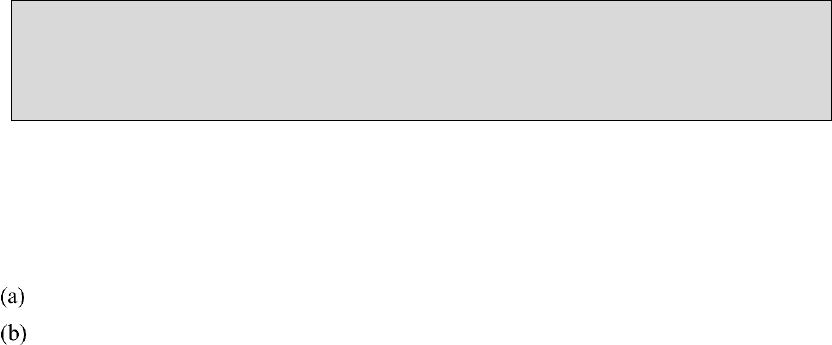
Energy Savings Scheme Rule of 2009
Effective from 19 June 2024
Page 30
Note: Sub-metering may be used to effectively reduce the size of the Site considered for
baseline calculations, thereby increasing the accuracy of the baseline and hence the
Confidence Factor.
8.4A Additional Requirements for Lighting Upgrades
The Metered Baseline Method in this clause 8 may only be used to calculate Energy Savings
for a Lighting Upgrade where each item of End-User Equipment used in the Lighting
Upgrade is either:
a Standard Equipment Class as listed in Table A9.1 of Schedule A or,
an Other Equipment Class as listed in Table A9.3 of Schedule A, provided that the item is
accepted by the Scheme Administrator as meeting the Equipment Requirements relating
to safety Published, from time to time, by the Scheme Administrator in accordance with
clause 8.4B.
8.4B Acceptable End-User Equipment for Lighting Upgrades
8.4B.1 Under the Metered Baseline Method, Equipment Requirements apply to End-User Equipment
used in a Lighting Upgrade. The Equipment Requirements are specified in clause 8.4A, and
also include any additional Equipment Requirements relating to safety (as Published from
time to time by the Scheme Administrator) that apply to the relevant calculation method of
this Rule.
8.4B.2 The Scheme Administrator may Publish, from time to time, a list of Products that are
accepted by the Scheme Administrator as meeting the Equipment Requirements referred to in
clause 8.4A by:
(a) Publishing a detailed list identifying each Product;
(b) Publishing a reference to a list from a certifying body, along with any restrictions
on that list; and/or
(c) Publishing a requirement for labelling in accordance with a labelling scheme,
along with any restrictions on that labelling.
8.4B.3 Subject to clause 8.4B.4, any Accredited Certificate Provider (or other persons as Published
by the Scheme Administrator), may apply to the Scheme Administrator to have a Product
accepted as meeting the Equipment Requirements, provided that they:
(a) apply in a form and manner required by the Scheme Administrator;
(b) pay any fee required by the Scheme Administrator in respect of the investigation
and determination of the application on a cost recovery basis and including an
allowance for:
(i) the recovery by the Scheme Administrator of its costs in establishing, operating and
maintaining the systems and databases required in connection with the assessment,
acceptance and rejection of applications made under this clause 8.4B.3;
(ii) the exercise of the Scheme Administrator's powers under clauses 8.4B.2 and 8.4B.5;
and
(iii) the payment and collection of fees under this clause 8.4B.3(b);
(c) identify the Product; and
(d) provide evidence that the Product meets all of the Equipment Requirements.
NSW Government Gazette
20 December 2023

Energy Savings Scheme Rule of 2009
Effective from 19 June 2024
Page 31
8.4B.4 The Scheme Administrator may limit the number of applications that may be made during a
period under clause 8.4B.3, either in aggregate or by particular persons or classes of persons,
by Publishing a notice that sets out that period and limit.
8.4B.5 The Scheme Administrator may, at any time, cease to accept a Product as meeting the
Equipment Requirements, provided that it:
(a) notifies all Accredited Certificate Providers accredited for the relevant
Recognised Energy Saving Activity of the change and the reason for the change,
prior to the Product ceasing to be accepted for this purpose; and
(b) ensures that all Published lists reflect the change in a timely manner.
8.4B.5A The Scheme Administrator may accept or reject an application made under clause 8.4B.3.
8.4B.6 Without limiting clause 8.4B.5A, the Scheme Administrator may reject an application made
under clause 8.4B.3 where the applicant has not provided additional information requested by
the Scheme Administrator in support of that application within a timeframe Published by the
Scheme Administrator.
8.5 Baseline per unit of output
Note: This Metered Baseline Method is most appropriate where energy consumption is
strongly linked to output (for example, in aluminium smelting).
Where the relationship is non-linear, or there are multiple products or changes in raw
materials affecting consumption, another method of normalising the baseline should be
used.
8.5.1 The Energy Savings for an Implementation may be calculated using Method 1, provided that:
the energy consumption for the Site is a linear function of output;
fixed energy consumption, which is the energy consumption of the Site that does not vary
with variations in output, can be measured or estimated;
output has not changed from the average output over the period during which the variable
energy baseline is measured by more than 50%; and
the variable energy baseline is calculated using data from periods immediately preceding
the Implementation Date, up to a maximum of 5 years, excluding any periods that are not
representative of the long term Site consumption due to factors including plant shutdown
or major maintenance. Where this is not possible, due to data unavailability or other
reasons, a baseline may be set using other periods acceptable to the Scheme
Administrator.
for Implementations that affect consumption of more than one Eligible Fuel, that Energy
Savings are calculated for each of those Eligible Fuels, even if the savings are negative.
8.5.2 The Implementation Date is the earlier of the start date of the first Measurement Period that
occurs after the end of the last period T
b
referred to in Method 1 or the date on which the
reduction of energy consumption commenced due to the Implementation.
8.5.3 The Energy Saver is the person who is liable (contractually or otherwise) to pay for the
energy consumption at the Site at the Implementation Date.
NSW Government Gazette
20 December 2023

Energy Savings Scheme Rule of 2009
Effective from 19 June 2024
Page 32
8.5.4 For the purposes of clause 34 of Schedule 4A of the Act, Energy Savings calculated under this
clause 8.5 are taken to have occurred on the last date of the Measurement Period.
Method 1 – Baseline per unit of output
Step (1) Select a Measurement Period acceptable to the Scheme Administrator, that will be the
duration of time over which all measurements in this method will be taken and that is:
(a) 0Ba minimum of one day and a maximum of one year; and
(b) 1Bif there is a regular cycle to the consumption of energy on the Site, an integer
multiple of the period of that cycle.
Step (2) Determine Energy Savings by completing Steps (2A) to (2G) for each Eligible Fuel, and
for each time period T
a
by reference to which the Accredited Certificate Provider seeks to create
Energy Savings Certificates by repeating Steps (2E) to (3) for each Eligible Fuel for each such
period.
Step (2A) Determine the Fixed Consumption (in MWh), which is the consumption of the relevant
Eligible Fuel for the Site that does not vary with variations in output, and is:
• determined by estimating or extrapolating from measurements taken during
plant downtime or estimated or determined mathematically from multiple
periods;
• a reasonable reflection of the consumption unaffected by output, and will lead to
Energy Savings calculations that are reasonable, and
• over a period T
b
before Energy Savings commence and the duration of which is
equal to the Measurement Period.
Step (2B) Calculate Variable Consumption
Tb
(in MWh / unit of output) for n time periods T
b
as
follows:
Variable Consumption
Tb
= (Total Consumption
Tb
– Fixed Consumption) / Output
Tb
Where:
• T
b
denotes a time period, before the Implementation Date, the duration of which
is equal to the Measurement Period, and where each time period is mutually
exclusive with each other such time period;
• Total Consumption
Tb
(in MWh) is the consumption of the relevant Eligible Fuel
for the Site measured over each time period T
b
;
• Output
Tb
is the number of units of output during each time period T
b
; and
• n is the number of time periods, T
b
, where n must be at least 1.
Step (2C) Calculate Variable Baseline (in MWh / unit of output):
Variable Baseline = { Variable Consumption
Tb
} / n
Step (2D) Calculate Baseline Variability (in MWh / unit of output), which is the unexplained
variance in the baseline, as follows:
If n > 2:
Baseline Variability = (maximum Variable Consumption
Tb
– minimum Variable
Consumption
Tb
) / 2
Where:
• maximum Variable Consumption
Tb
is the maximum value of Variable
Consumption
Tb
over n time periods T
b
; and
• minimum Variable Consumption
Tb
is the least value of Variable Consumption
Tb
over n time periods T
b
.
=
n
T 1
NSW Government Gazette
20 December 2023
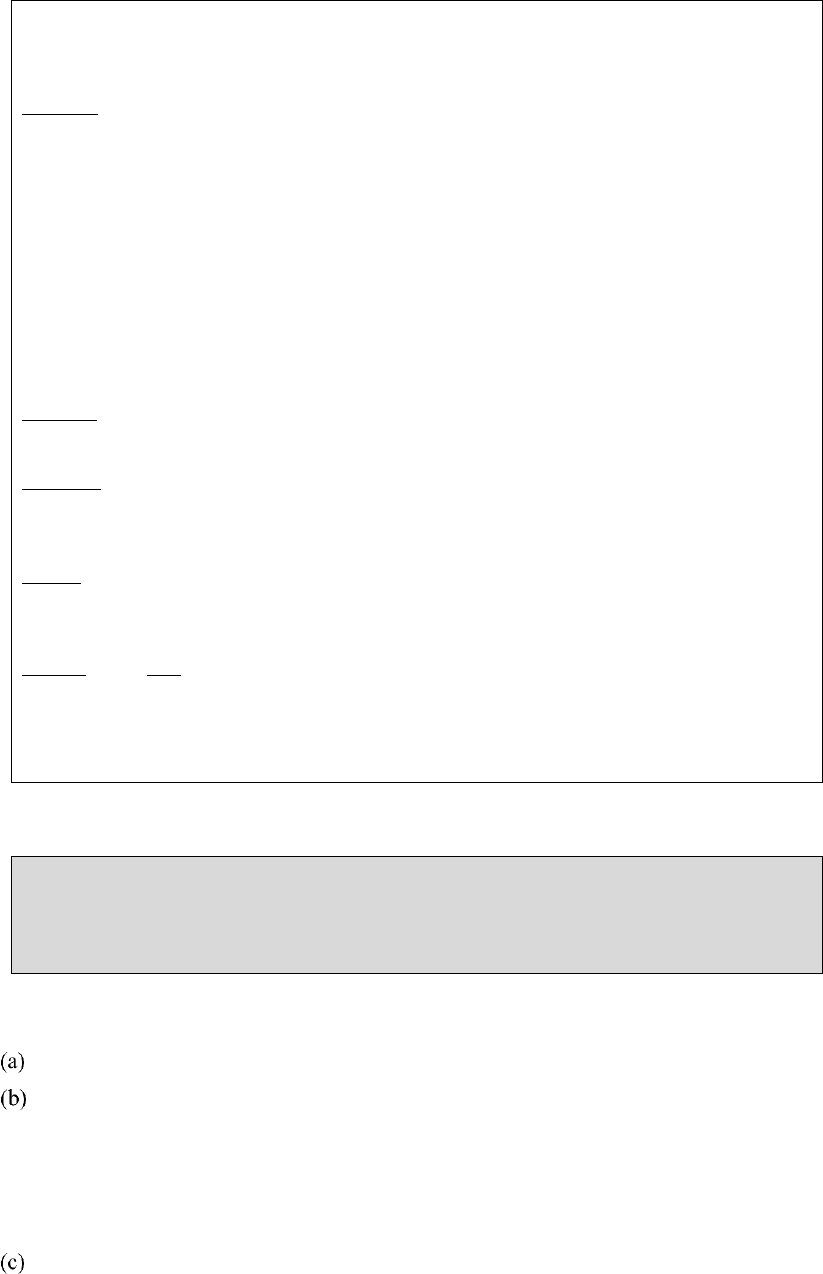
Energy Savings Scheme Rule of 2009
Effective from 19 June 2024
Page 33
If n ≤ 2:
Baseline Variability = 10% of Variable Baseline
Step (2E) Calculate Reduced Consumption (in MWh) for the time period T
a
(after the
Implementation Date) for which the Accredited Certificate Provider seeks to create Energy
Savings Certificates as follows:
Reduced Consumption = (Output
Ta
× Variable Baseline + Fixed Consumption)
– Total Consumption
Ta
Where:
• T
a
denotes a time period, after the Implementation Date, the duration of which is
equal to the Measurement Period;
• Total Consumption
Ta
(in MWh) is the consumption of the relevant Eligible Fuel
for the Site measured over a time period T
a
; and
• Output
Ta
is the number of units of output during the time period T
a
.
Step (2F) Calculate the Confidence Factor as follows:
Confidence Factor = 1 – (Baseline Variability / Variable Baseline)
Step (2G) Calculate relevant Energy Savings
(in MWh) for each time period T
a
for which the
Accredited Certificate Provider seeks to create Energy Savings Certificates as follows:
Energy Savings = Reduced Consumption × Confidence Factor
Where:
Energy Savings means the Energy Savings expression for the relevant fuel f defined in Table
7A.1.
Step (3) Ensure net Energy Savings are non-negative.
After determining Energy Savings for each relevant Eligible Fuel, if the result of Equation 1 is a
negative number, then Energy Savings = 0.
8.6 Baseline unaffected by output
Note: This Metered Baseline Method is most appropriate where consumption is not linked to
output of the End-User Equipment subject to the energy savings activity. To use this method the
output of the End-User Equipment should not be affected by temperature or other standard
normalisation variables.
8.6.1 The Energy Savings for an Implementation may be calculated using Method 2, provided that:
the consumption of all energy sources for the Site is independent of output; and
the Baseline is calculated using data from periods immediately preceding the
Implementation Date, to a maximum duration of 5 years, and excluding any periods that
are not representative of long term Site consumption due to factors including plant
shutdown or major maintenance. Where this is not possible, due to data unavailability or
other reasons, a baseline may be set using other periods acceptable to the Scheme
Administrator.
for Implementations that affect consumption of more than one Eligible Fuel, that Energy
Savings are calculated for each of those Eligible Fuels, even if negative.
NSW Government Gazette
20 December 2023
Energy Savings Scheme Rule of 2009
Effective from 19 June 2024
Page 34
8.6.2 The Implementation Date is the earlier of the start date of the first Measurement Period that
occurs after the end of the last period T
b
referred to in Method 2 or the date on which the
reduction of energy consumption commenced due to the Implementation.
8.6.3 The Energy Saver is the person who is liable (contractually or otherwise) to pay for the
energy consumption at the Site at the Implementation Date.
8.6.4 For the purposes of clause 34 of Schedule 4A of the Act, Energy Savings calculated under this
clause 8.6 are taken to have occurred on the last date of the Measurement Period.
NSW Government Gazette
20 December 2023

Energy Savings Scheme Rule of 2009
Effective from 19 June 2024
Page 35
Method 2 – Baseline unaffected by output
Step (1) Select a Measurement Period acceptable to the Scheme Administrator, that will be the
duration of time over which all measurements in this method will be taken and that is:
(a) 2Ba minimum of one day and a maximum of one year; and
(b) 3Bif there is a regular cycle to the consumption of energy on the Site, an integer
multiple of the period of the respective cycle.
Step (2) Determine Energy Savings by completing Steps (2A) to (2E) for each Eligible Fuel, and
for each time period T
a
by reference to which the Accredited Certificate Provider seeks to create
Energy Savings Certificates by repeating Steps (2C) to (3) for each Eligible Fuel for each such
period.
Step (2A) Calculate Baseline (in MWh) as follows:
Baseline = { Total Consumption
Tb
} / n
Where:
• T
b
denotes a time period, before the Implementation Date, the duration of which
is equal to the Measurement Period, and where each time period is mutually
exclusive with each other such time period
• Total Consumption
Tb
(in MWh) is the consumption of the relevant Eligible Fuel
for the Site measured by metering that consumption over each time period T
b
;
and
• n is the number of time periods, T
b
, where n must be at least 1.
Step (2B) Calculate Baseline Variability (in MWh), which is the variance in the baseline, as
follows:
If n > 1:
Baseline Variability = (maximum Total Consumption
Tb
– minimum Total Consumption
Tb
) /
2
Where:
• maximum Total Consumption
Tb
is the maximum value of Total Consumption
Tb
over n time periods T
b
; and
• minimum Total Consumption
Tb
is the least value of Total Consumption
Tb
over n
time periods T
b
If n = 1:
Baseline Variability = 10% of Baseline
Step (2C) Calculate Reduced Consumption (in MWh) for the time period T
a
(after the
Implementation Date) for which the Accredited Certificate Provider seeks to create Energy Savings
Certificates as follows:
Reduced Consumption = Baseline – Total Consumption
Ta
Where:
• T
a
denotes a time period, after the Implementation Date, the duration of which is
equal to the Measurement Period; and
• Total Consumption
Ta
(in MWh) is the consumption of the relevant Eligible Fuel
for the Site measured over a time period T
a
Step (2D) Calculate Confidence Factor as follows:
Confidence Factor = 1 – (Baseline Variability / Baseline)
=
n
T 1
NSW Government Gazette
20 December 2023
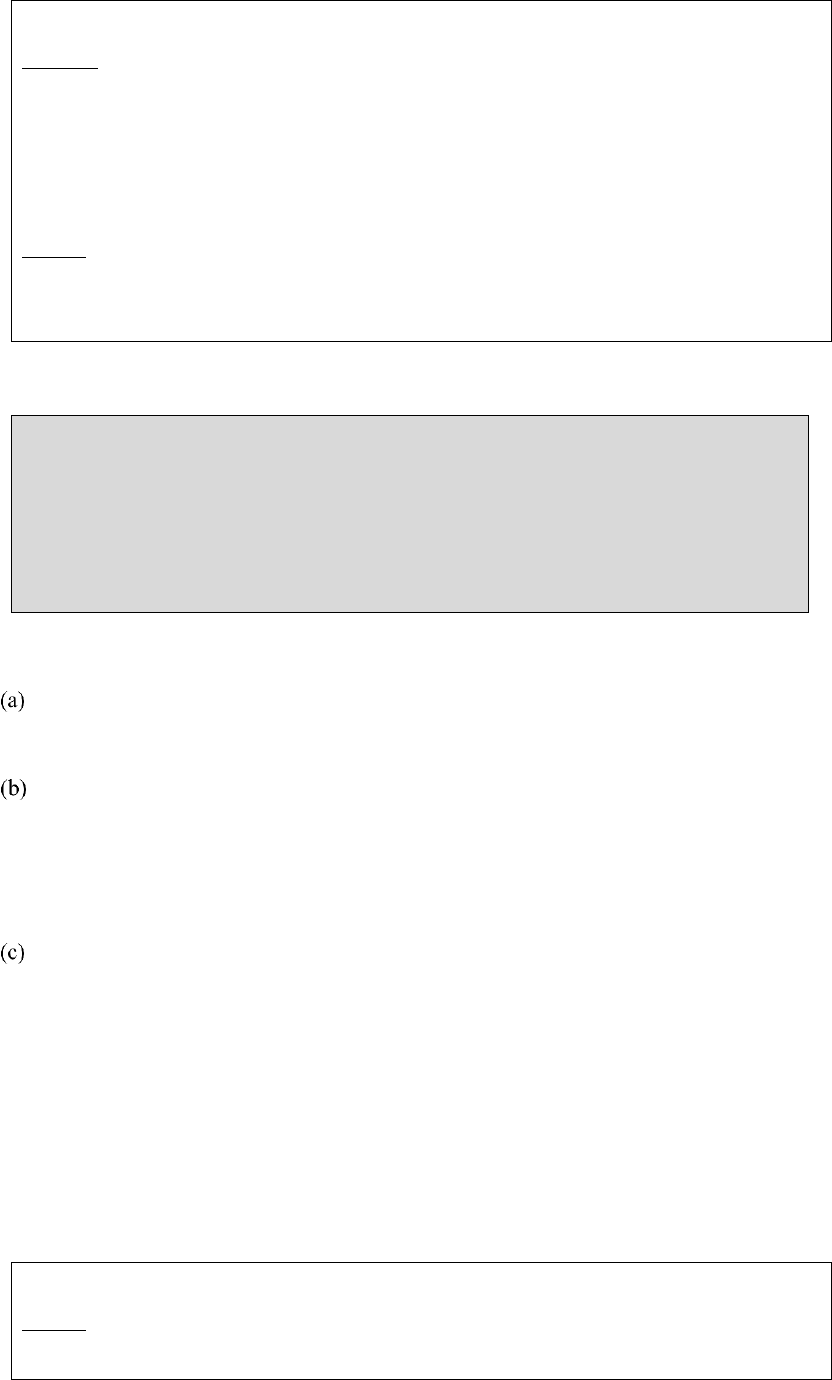
Energy Savings Scheme Rule of 2009
Effective from 19 June 2024
Page 36
Step (2E) Calculate the relevant Energy Savings
(in MWh) for each time period T
a
for which the
Accredited Certificate Provider seeks to create Energy Savings Certificates as follows:
• Energy Savings = Reduced Consumption × Confidence Factor
Where:
• Energy Savings means the Energy Savings expression for the relevant fuel f
defined in Table 7A.1.
Step (3) Ensure net Energy Savings are non-negative.
After determining Energy Savings for each relevant Eligible Fuel, if the result of Equation 1 is a
negative number, then Energy Savings = 0.
8.7 Normalised baseline
Note: This Metered Baseline Method normalises energy consumption for a Site to remove
explainable variation from the baseline, for example, adjusting for variations in ambient
conditions or variations in input characteristics. The factors chosen for the normalisation must
cause the variability (that is the subject of removal) and not be the result of spurious
correlations.
Option C of the IPMVP can be used for guidance as to the normalisation of baselines,
particularly for complex cases.
8.7.1 The Energy Savings for an Implementation may be calculated using Method 3, provided that:
the Normalisation Variables in respect of which the Total Consumption is normalised are
variables corresponding to the specific activities that are a reason for change in Total
Consumption; and
the Normalised Baseline is calculated using data from periods immediately preceding the
Implementation Date, to a maximum duration of 5 years, and excluding any periods that
are not representative of long term Site consumption due to circumstances such as plant
shutdown or major maintenance. Where this is not possible, due to data unavailability or
other reasons, a baseline may be set using other periods acceptable to the Scheme
Administrator.
for Implementations that affect consumption of more than one Eligible Fuel, that Energy
Savings are calculated for each Eligible Fuel, even if negative.
8.7.2 The Implementation Date is the earlier of the start date of the first Measurement Period that
occurs after the end of the last period T
b
referred to in Method 3 or the date on which the
reduction of energy consumption commenced due to the Implementation.
8.7.3 The Energy Saver is the person who is liable (contractually or otherwise) to pay for the
energy consumption at the Site at the Implementation Date.
8.7.4 For the purposes of clause 34 of Schedule 4A of the Act, Energy Savings calculated under this
clause 8.7 are taken to have occurred on the last date of the Measurement Period.
Method 3 – Normalised baseline
Step (1) Select a Measurement Period acceptable to the Scheme Administrator, that will be the
duration of time over which all measurements in this method will be taken and that is:
NSW Government Gazette
20 December 2023

Energy Savings Scheme Rule of 2009
Effective from 19 June 2024
Page 37
(a) 4Ba minimum of one day and a maximum of one year; and
(b) 5Bif there is a regular cycle to the consumption of energy on the Site, an integer
multiple of the period of that cycle.
Step (2) Determine Energy Savings by completing Steps (2A) to (2F) for each Eligible Fuel and for
each time period T
a
by reference to which the Accredited Certificate Provider seeks to create
Energy Savings Certificates, by repeating Steps (2D) to (3) for each Eligible Fuel for each such
period.
Step (2A) Calculate Normalised Consumption
Tb
(in MWh) for n time periods T
b
by normalising the
Total Consumption
Tb
to determine the consumption that would have occurred for period T
b
had the
conditions at time T
a
existed, using:
(a) a set of normalisation coefficients, which are one or more coefficients calculated to
account for the variation in Total Consumption
Tb
per unit of change for each
corresponding normalisation variable used in Step(2A)(b); and
(b) a set of values, which are the difference between the values of the normalisation variables
for each time period T
b
, and the values of the normalisation variables for one time period
T
a
, determined by measurements or other data sources.
Where:
• T
b
denotes a time period, before the Implementation Date, the duration of which
is equal to the Measurement Period, and where each time period is mutually
exclusive with each other such time period
• T
a
denotes a time period, after the Implementation Date, the duration of which is
equal to the Measurement Period
• Total Consumption
Tb
(in MWh) is the consumption of an Eligible Fuel for the
Site measured over each time period T
b
• n is the number of time periods, T
b
, where n must be at least 1; and
• Normalisation Variables are the variables in respect of which the Total
Consumption
Tb
is normalised and must correspond to factors that are a reason for
change in Total Consumption
Tb
Step (2B) Calculate Normalised Baseline (in MWh) as follows:
Normalised Baseline = { Normalised Consumption
Tb
} / n
Step (2C) Calculate Baseline Variability (in MWh), which is the unexplained variance in the
baseline, as follows:
If n > 1:
Baseline Variability = (maximum Normalised Consumption
Tb
– minimum Normalised
Consumption
Tb
) / 2
Where:
• maximum Normalised Consumption
Tb
is the maximum value of Normalised
Consumption
Tb
over n time periods Tb; and
• minimum Normalised Consumption
Tb
is the least value of Normalised
Consumption
Tb
over n time periods Tb
If n = 1:
Baseline Variability = 10% of Normalised Baseline
Step (2D) Calculate Reduced Consumption (in MWh) for the time period T
a
(after the
Implementation Date) for which the Accredited Certificate Provider seeks to create Energy Savings
Certificates, as follows:
Reduced Consumption = Normalised Baseline – Total Consumption
Ta
=
n
T 1
NSW Government Gazette
20 December 2023

Energy Savings Scheme Rule of 2009
Effective from 19 June 2024
Page 38
Where:
• Ta denotes a time period, after the Implementation Date, the duration of which is
equal to the Measurement Period; and
• Total Consumption
Ta
(in MWh) is the consumption of the relevant Eligible Fuel
for the Site over a time period Ta
Step (2E) Calculate Confidence Factor:
Confidence Factor = 1 – (Baseline Variability / Normalised Baseline)
Step (2F) Calculate the relevant Energy Savings (in MWh) for each time period T
a
for which the
Accredited Certificate Provider seeks to create Energy Savings Certificates as follows:
Energy Savings = Reduced Consumption × Confidence Factor ×
Where:
• Energy Savings means the Energy Savings expression for the relevant fuel f
defined in Table 7A.1..
Step (3) Ensure net Energy Savings are non-negative:
After determining Energy Savings for each relevant Eligible Fuel, if the result of Equation 1 is a
negative number, then Energy Savings = 0.
8.8 NABERS baseline
8.8.1 The Energy Savings for an Implementation may be calculated using Method 4 for a
NABERS Building, provided that:
the NABERS Rating is calculated using one of the following NABERS tools:
(i) NABERS for Offices;
(ii) NABERS for Hotels;
(iii) NABERS for Shopping Centres;
(iv) NABERS for Data Centres;
(v) NABERS for Hospitals;
(vi) NABERS for Apartment Buildings;
(vii) NABERS for Residential Aged Care;
(viii) NABERS for Retirement Living;
(ix) NABERS for Warehouses; or
(x) NABERS for Cold Storage;
the NABERS Rating excludes any GreenPower in accordance with clause 5.4(d);
the NABERS Rating meets the eligibility criteria applied in clause 8.8.3;
all sources of on-site electricity generation have been identified; and
all electricity generated from sources of On-site Unaccounted Electricity (as referred to in
Method 4) has been metered and recorded over the Rating Period.
8.8.2 For the purposes of this clause 8.8:
the NABERS Rating is a current NABERS rating that will be used to calculate Energy
Savings;
NSW Government Gazette
20 December 2023

Energy Savings Scheme Rule of 2009
Effective from 19 June 2024
Page 39
the Historical Baseline NABERS Rating is a previous NABERS Rating for the same
NABERS Building, and is used for Calculation Method 2 at Step 2 of Method 4;
the Rating Period is the time over which measurements were taken to establish the
NABERS Rating or the Historical Baseline NABERS Rating for the NABERS Building;
the Current Rating Year is the year for which Energy Savings Certificates will be created,
and is the year that the Rating Period ended for the NABERS Rating;
the Baseline Rating Year is the year that the Rating Period ended for the Historical
Baseline NABERS Rating; and
the forward creation of Energy Savings Certificates in respect of Energy Savings for an
Implementation must be calculated using Calculation Method 2 at Step 2 of Method 4.
8.8.3 The NABERS Rating must:
(a) if using Calculation Method 1:
(i) exceed the Benchmark NABERS Rating from Table A20 of Schedule A by at
least 0.5 stars; and
(ii) be the first NABERS Rating for the building; and
(iii) not be obtained to comply with the Commercial Building Disclosure Program,
or a Development Approval.
(b) exceed the Historical Baseline NABERS Rating by at least 0.5 stars if using Calculation
Method 2.
8.8.4 When calculating a Benchmark NABERS Rating using Calculation Method 2 at step 2 of
Method 4:
the Benchmark NABERS Rating can only be calculated using a fixed Historical Baseline
NABERS Rating which was calculated no more than 7 years before the end date of the
Current Rating Year; or
if this Calculation Method is to be used for Additional Energy Savings and the fixed
Historical Baseline NABERS Rating does not meet the requirements of clause 8.8.4(a), it
must be reset using a previous NABERS Rating that is at least 7 years later than the end
date of the Rating Period for the previous fixed Historical Baseline NABERS Rating;
the Historical Baseline NABERS Rating must meet the ‘similar configuration’ criteria
that has been determined by the Scheme Administrator which is listed in the NABERS
Baseline Method Guide.
8.8.5 The Implementation Date is the end date of the first Rating Period for which Energy Savings
will be calculated under clause 8.8.7.
8.8.6 The Energy Saver is:
(a) the person whose name is identified on the NABERS Rating certificate, or
(b) the building owner or manager of the building or buildings identified on the
NABERS Rating certificate if the person’s name is not identified on the NABERS
Rating certificate, as issued by the NABERS National Administrator, in respect of the
NABERS Rating.
Note: An example of the building owner includes the Owners Corporation for apartment buildings.
NSW Government Gazette
20 December 2023
Energy Savings Scheme Rule of 2009
Effective from 19 June 2024
Page 40
8.8.7 For the purposes of clause 34 of Schedule 4A of the Act, Energy Savings are taken to occur
on the date that the Scheme Administrator determines that the relevant NABERS Rating was
completed.
8.8.8 Energy Savings Certificates cannot be created for a NABERS Rating more than twelve
months after the end of the Rating Period applicable to that NABERS Rating.
8.8.9 The requirements of clauses 6.8(h) and 6.8(i) do not apply in relation to Energy Savings
Certificates for Energy Savings calculated in accordance with clause 8.8.
8.8.10 When calculating Energy Savings using Calculation Method 2 at step 5 of Method 4:
(a) The Maximum Time Period for Forward Creation of Energy Savings Certificates in
respect of Energy Savings for an Implementation calculated using Calculation
Method 2 at step 5 of Method 4 is 3 years;
(b) The Benchmark NABERS Rating can only be calculated using a fixed Historical
Baseline NABERS Rating with the end date of no more than 15 months before the
end date of the NABERS Rating;
(c) NABERS Rating of the same value can only be used once to set a fixed Historical
Baseline NABERS Rating for a NABERS Building. A lower Rating cannot be used
as a new fixed Historical Baseline NABERS Rating in the future.
8.8.11 When calculating Energy Savings after forward creation:
(a) In years 2 to 7, Energy Savings for annual creation or top-up must be calculated at
Calculation Method 2 at step 4 of Method 4 using the Benchmark NABERS Rating
calculated at step 2 of Method 4. When calculating the Benchmark NABERS Rating,
the Historical Baseline NABERS Rating established in accordance with clause 8.8.10
(b) must be used; and
(b) If the fixed Historical Baseline NABERS Rating is used for the purposes of
Calculation Method 2 at steps 4 and 5 of Method 4, it must be reset no later than 7
years after the end date of the fixed Historical Baseline NABERS Rating.
8.8.12 Top-up certificate creation
Accredited Certificate Providers may create new Energy Savings Certificates in respect of
Additional Energy Savings which have been calculated using Calculation Method 2 at step 4
of Method 4 for one or more Rating Periods for the Implementation, according to the
following:
(a) the term 'Counted Energy Savings' in Calculation Method 2 at step 4 of Method 4 is
taken to be the sum of total Electricity Savings and Gas Savings for which Energy
Savings Certificates have previously been created for the Implementation, for each
Rating Year for the relevant Implementation.
NSW Government Gazette
20 December 2023

Energy Savings Scheme Rule of 2009
Effective from 19 June 2024
Page 41
Method 4 – NABERS Benchmark
Step 1 – Calculate Measured Electricity Consumption and Measured Gas Consumption
Using the measurements taken to establish the NABERS Rating, and other measurements taken as
necessary, calculate total energy consumption for the NABERS Building as follows:
Measured Electricity Consumption (MWh)= NABERS Electricity + On-site Unaccounted
Electricity
Measured Gas Consumption (MWh) = NABERS Gas
Where:
• NABERS Electricity, in MWh, is the electricity purchased or imported from the
Electricity Network and accounted for in the NABERS Rating, including electricity
purchased as GreenPower; and
• On-site Unaccounted Electricity, in MWh, is electricity generated on-site from energy
sources which have not been accounted for in the NABERS Rating, including electricity
generated from photovoltaic cells or Gas generators fed from on-site Biogas sources, but
excluding Gas generators where the imported Gas has been accounted for in the
NABERS Rating; and
• NABERS Gas, in MWh, is the total of the Gas accounted for in the NABERS Rating.
Step 2 – Calculate Benchmark NABERS Rating
Calculate the Benchmark NABERS Rating, by using either:
(a) 6BCalculation Method 1: Look up the Benchmark NABERS Rating in Table A20
of Schedule A which corresponds to the relevant Current Rating Year, NABERS
Rating tool and building category; or
(b) 7BCalculation Method 2: Calculate the Benchmark NABERS Rating based on a
Historical Baseline NABERS Rating as follows:
Benchmark NABERS Rating = Historical Baseline NABERS Rating + Annual Rating
Adjustment × (Current Rating Year – Baseline Rating Year)
Where:
• Historical Baseline NABERS Rating is as defined in clause 8.8.2 and meets the
requirements set out in clause 8.8.4
• Annual Rating Adjustment is the amount by which average NABERS Ratings increase
each year and is the value in Table A21 of Schedule A which corresponds to the relevant
NABERS Rating tool and building category; and
• Baseline Rating Year is as defined in clause 8.8.2(e)
Step 3 – Calculate Benchmark Electricity Consumption and Benchmark Gas Consumption
Benchmark Electricity Consumption is the electricity consumption that would be required for that
same NABERS Building to achieve the Benchmark NABERS Rating over the Rating Period,
assuming the same breakdown of energy consumption. It is the electricity component of
maximum allowable energy consumption, converted to MWh.
Benchmark Gas Consumption is the Gas consumption that would be required for that same
NABERS Building to achieve the Benchmark NABERS Rating over the Rating Period, assuming
NSW Government Gazette
20 December 2023

Energy Savings Scheme Rule of 2009
Effective from 19 June 2024
Page 42
the same breakdown of energy consumption. It is the Gas component of maximum allowable
energy consumption, converted to MWh.
Calculate the Benchmark Electricity Consumption and Benchmark Gas Consumption in MWh by
using the NABERS Reverse Calculator for the relevant NABERS method, setting the target star
rating to the Benchmark NABERS Rating, and giving all other input parameters the same value as
for the actual NABERS Rating over that Rating Period, including:
• Rating type;
• Building information (e.g. Rated Area, number of computers); and
• Percentage breakdown of energy consumption (on an energy use basis in MWh).
If necessary for use with the relevant NABERS Reverse Calculator, round down the Benchmark
NABERS Rating to the nearest half or whole star increment.
Next use Step 4 or Step 5
Step 4 – Calculate Energy Savings for annual creation or top-up
Calculate Electricity Savings and Gas Savings, in MWh as follows:
Electricity Savings
NRYi
= (Benchmark Electricity Consumption – Measured Electricity
Consumption)– Counted Energy Savings
NRYi
+ Electricity Savings
NRYi-1
Gas Savings
NRYi
= Benchmark Gas Consumption – Measured Gas Consumption – Counted
Energy Savings
NRYi
+ Gas Savings
NRYi -1
Where:
• NRYi is the NABERS Rating Year;
• NRYi-1 is the NABERS Rating Year immediately preceding NRYi;
• the term Electricity Savings
NRYi-1
or Gas Savings
NRYi -1
should only be included in each
formula if:
o calculating from year 3 onwards of using the fixed Historical Baseline NABERS
Rating; and
o the term is a negative number;
• Counted Energy Savings
NRYi
is the:
o total Electricity Savings for which Energy Savings Certificates have previously
been created for the Implementation for the Rating Year i if calculating
Electricity Savings; or
o total Gas Savings for which Energy Savings Certificates have previously been
created for the Implementation for the Rating Year i if calculating Gas Savings.
Step 5 – Calculate Energy Savings with forward creation
Calculate Electricity Savings and Gas Savings, in MWh as follows:
Electricity Savings = Σ
NRYi
(Benchmark Electricity Consumption – Measured Electricity
Consumption
NRYi
)
Gas Savings = Σ
NRYi
(Benchmark Gas Consumption – Measured Gas Consumption
NRYi
)
Where:
NSW Government Gazette
20 December 2023

Energy Savings Scheme Rule of 2009
Effective from 19 June 2024
Page 43
• NRYi is the NABERS Rating Year;
• the summation is over each NABERS Rating Year i over the Maximum Time Period for
Forward Creation of the Electricity Savings or Gas Savings;
• Maximum Time Period for Forward Creation is determined by clause 8.8.10(a);
• The value of Measured Electricity Consumption
NRYi
is the same for all NABERS Rating
Years and is calculated at Calculation Method 2 at step 1 of Method 4 for NABERS
Rating Year 1 when using the fixed Historical Baseline NABERS Rating;
• The value of Measured Gas Consumption
NRYi
is the same for all NABERS Rating Years
and is calculated at Calculation Method 2 at step 1 of Method 4 for NABERS Rating
Year 1 when using the fixed Historical Baseline NABERS Rating.
8.9 Aggregated Metered Baseline
Note: The Aggregated Metered Baseline sub-method allows for Energy Savings to be calculated
on the basis of measured savings across a group of electricity and/or natural gas customers,
using statistical techniques. To use this method, the Accredited Certificate Provider must engage
an Accredited Statistician to perform the randomised Site allocation and validate the statistical
methods prior to the Implementation Date. This method may be used for any Recognised Energy
Saving Activity, but it is best suited to those activities where:
• Energy Savings are small on a Site by Site basis; and/or
• Energy Savings can vary greatly from Site to Site; and/or
• there is insufficient evidence that the Recognised Energy Saving Activity will not be
reversed.
This method requires a group of energy customers (the Population) to be assigned without bias
into a Treatment Group and a Control Group. The Treatment Group is offered goods or services
that are designed to deliver Energy Savings over the Implementation Period. The Treatment is
the offering of goods and services (and any subsequent provision, engagement and promotion
activities) and is not just the provision of goods and services. The Control Group is not offered
the Treatment, but instead is used to estimate what the energy consumption of the Treatment
Group would have been in the absence of the Treatment.
8.9.1 The Energy Savings for an Implementation may be calculated using Method 5.1 provided
that all of the conditions in clauses 8.9.2 to 8.9.11 are met.
8.9.2 For each Implementation, a number of Sites must be identified and assigned to a Population,
and every Site in that Population must be allocated to either a Treatment Group or a Control
Group prior to the Implementation Date. Additionally:
a Site may choose to join the Population, but once in the Population, must be allocated to
the Treatment Group or the Control Group using an Unbiased Selection Method;
Prior to allocating the Site to the Treatment Group or the Control Group, the Accredited
Certificate Provider must:
(i) choose for each Site that is or will be in the Population, whether to measure the
consumption of electricity or natural gas (or both), subject to clause 8.9.2(f)(ii);
and
(ii) not decide which energy source(s) are included for measurement based on
whether the Site is subsequently allocated in the Treatment Group or the Control
Group; and
NSW Government Gazette
20 December 2023
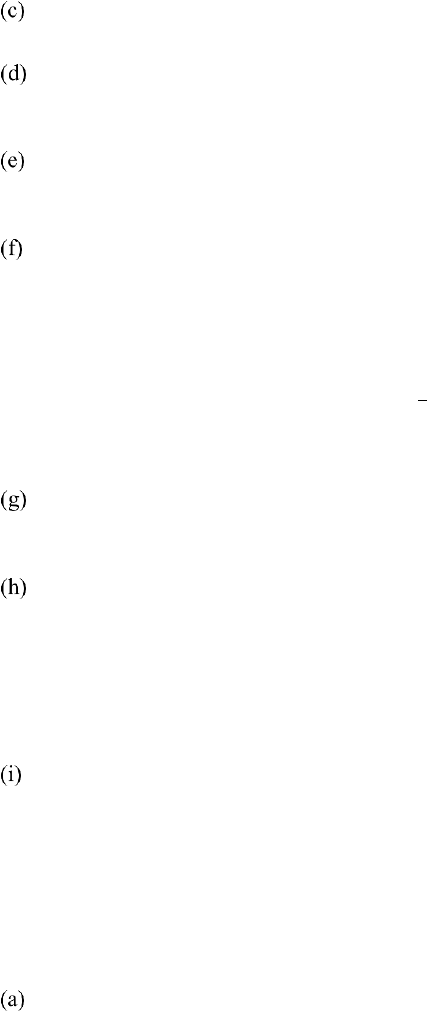
Energy Savings Scheme Rule of 2009
Effective from 19 June 2024
Page 44
(iii) where the Population includes Sites that have measurements of different energy
source combinations, ensure that the Treatment Group size to Control Group size
ratio is, as close as possible, the same for each of the energy source combinations.
persons at Sites must not be informed explicitly that they have been allocated to the
Treatment Group or the Control Group;
once a Site has been allocated to the Treatment Group and the Implementation Date has
occurred, persons managing End-User Equipment at that Site may be offered a choice as
to whether they wish to receive the goods and services component of the Treatment;
if a Site chooses not to receive the goods and services component of the Treatment, that
Site must be retained in the Treatment Group for measurement purposes, except where
clauses 8.9.2(g) and 8.9.2(h) apply;
the Population should not be targeted with the offer of goods and services that;
(i) are aimed at increasing electricity or natural gas use with the intent of creating a
greater difference in electricity or natural gas use between the Control Group and
Treatment Group; or
(ii) promote switching from using grid electricity to natural gas, or vice versa, if both grid
electricity and natural gas consumptions is not measured at all Sites in the Population;
or
(iii) promote switching to a non-renewable energy source other than grid electricity.
a Site must be removed from the Population, and hence Treatment Group or Control
Group, if Measured Electricity Consumption or Measured Gas Consumption data or both,
as per Clause 8.9.2(b)(i), are not available for that Site during the Implementation Period;
all Sites with Measured Electricity Consumption or Measured Gas Consumption data or
both, as per Clause 8.9.2(b)(i), for only part of an Implementation Period due to Attrition,
must be:
(i) removed from the Population; or
(ii) included in the Population until the last date Measured Electricity Consumption or
Measured Gas Consumption data or both, are available for a given Site; and
if data for a Pre-Implementation Period are used, the Accredited Certificate Provider must
specify prior to the Implementation Date a period for which the data are available for the
total Population.
8.9.3 Measurements of electricity consumption under this method must use Measured Electricity
Consumption data for each Site in the Population, where the Measured Electricity
Consumption for a Measurement Period means the metered amount of electricity used by a
Site:
as determined by the metering data held by the Electricity Retailer or Network Service
Provider for that Site, pro-rated across the period, as measured and estimated in
accordance with the provisions of the National Energy Retail Rules under the National
Energy Retail Law (NSW), and in accordance with the provisions of the Electricity
Supply (General) Regulation 2014; or
from a metering arrangement compliant with the accuracy requirements of National
Measurement Institute document M6 (Electricity Meters), or another metering benchmark
accepted by the Scheme Administrator, provided that:
(i) all metering devices are installed without bias as to whether that Site is in the
Treatment Group or Control Group, and by parties who have no knowledge of
whether each Site is part of the Treatment Group or Control Group; and
NSW Government Gazette
20 December 2023

Energy Savings Scheme Rule of 2009
Effective from 19 June 2024
Page 45
(ii) the reading of metering devices and checking, measurement, estimation and pro-
rating of data is done without bias as to whether that Site is in the Treatment
Group or Control Group, and by parties who have no knowledge of whether each
Site is part of the Treatment Group or Control Group.
8.9.3A Measurements of natural gas consumption under this method must use Measured Gas
Consumption data for each Site in the Population, where the Measured Gas Consumption for
a Measurement Period means the metered amount of natural gas used by a Site:
as determined by the metering data held by the Gas Retailer or gas network operator for
that Site, pro-rated across the period, as measured and estimated in accordance with the
provisions of the National Energy Retail Rules under the National Energy Retail Law
(NSW), and in accordance with the provisions of the Gas Supply (Consumer Safety)
Regulation 2012; or
from a metering arrangement compliant with the accuracy requirements of National
Measurement Institute document R137 (Gas Meters), or another metering benchmark
accepted by the Scheme Administrator, provided that:
(i) all metering devices are installed without bias as to whether that Site is in the
Treatment Group or Control Group, and by parties who have no knowledge of
whether each Site is part of the Treatment Group or Control Group; and
(ii) the reading of metering devices and checking, measurement, estimation and pro-
rating of data is done without bias as to whether that Site is in the Treatment Group or
Control Group, and by parties who have no knowledge of whether each Site is part of
the Treatment Group or Control Group.
8.9.4 For the purposes of calculating Energy Savings, the Measured Electricity Consumption or
Measured Gas Consumption data or both, for a given Population must be recorded over one or
more Measurement Periods, where:
(a) Implementation Periods and Pre-Implementation Periods are both Measurement
Periods;
(b) the Implementation Period and the Pre-Implementation Period do not have to be
immediately sequential in time;
(c) Measurement Periods must not overlap; and
(d) each Implementation Period must be at least 3 months and no more than 15
months in length.
8.9.4A Measured Energy Consumption is calculated for each Site in the Population in accordance
with Equation 8.9.1.
Equation 8.9.1
Where:
• Certificate Conversion Factors are as specified in clauses 33(1) and 33A of Schedule
4A of the Act and clause 37A of the Electricity Supply (General) Regulation 2014.
8.9.5 For the purposes of clause 34 of Schedule 4A of the Act, Energy Savings for each
Implementation are taken to have occurred on the last date of that Implementation Period.
NSW Government Gazette
20 December 2023
Energy Savings Scheme Rule of 2009
Effective from 19 June 2024
Page 46
8.9.6 Where required, the Energy Savings for the Implementation will be the sum of estimated
Energy Savings for all Sites in a Treatment Group for each Implementation Period.
8.9.7 The records that must be kept of the method, data and assumptions used to calculate Energy
Savings under Method 5.1 must include:
(a) the Addresses of the Sites in the Population and whether they are allocated to the
Treatment Group or the Control Group;
(b) evidence that Sites were assigned to the Population and were allocated to the
Treatment Group and Control Group in accordance with clause 8.9.2;
(c) information on metering arrangements used according to clause 8.9.3 and 8.9.3A;
(d) information on the Treatment offered to the Treatment Group;
(e) confirmation in writing (together with reasoning) from an Accredited Statistician
prior to the Implementation Date, that the:
(i) Accredited Statistician has randomly allocated Sites from the Population into the
Control Group and the Treatment Group;
(ii) analysis method used to calculate the observed Energy Savings in Step 2 of
Method 5.1 has been selected and is valid;
(iii) explanatory variables, including any interactions between them, have been
documented if Method 5.4 is used;
(iv) lengths of the Implementation Period and the Pre-Implementation Period (if
applicable) have been determined and documented;
(f) information on Sites removed from the Population in accordance with clauses 8.9.2(g)
and 8.9.2(h), including reasoning for each Site’s removal;
(g) documentation of reproducible steps and log files for the calculations performed; and
(h) any additional requirements as Published, from time to time, by the Scheme
Administrator.
8.9.8 The Accredited Certificate Provider can only modify the methods in clause 8.9.7(e) for
subsequent Implementation Periods. If modified, the Accredited Certificate Provider must
obtain from an Accredited Statistician prior to the Implementation Date of the subsequent
Implementation Periods, a new verification in writing.
8.9.9 The Implementation Date is the start date of the Implementation Period.
8.9.10 The Energy Saver is the person who holds the Measured Electricity Consumption or
Measured Gas Consumption data or both, for all Sites in a Population in accordance with
clause 8.9.3 or 8.9.3A.
8.9.11 For the purposes of this clause 8.9, the requirements under clause 6.8 are as Published by the
Scheme Administrator for the purposes of this calculation method.
NSW Government Gazette
20 December 2023

Energy Savings Scheme Rule of 2009
Effective from 19 June 2024
Page 47
Method 5.1
Calculation of Energy Savings under the Aggregated Metered Baseline sub-method
Step (1) For each Population, adjust the Control Group and the Treatment Group for Attrition at
the end of each Implementation Period, in accordance with clause 8.9.2. The number of Sites in
the Treatment and Control Groups will be designated N
T
and N
C
respectively.
Step (2) Calculate the Observed Energy Savings,
, in MWh, over the Implementation
Period using one of the following methods:
(a) 8BMethod 5.2 (Time-Aggregated Energy Consumption During the Implementation
Period); or
(b) 9BMethod 5.3 (Time-Aggregated Energy Consumption During the Implementation and
Pre-Implementation Periods - Difference in Differences); or
(c) 10BMethod 5.4 (Regression Modelling).
Step (3) The Scheme Administrator may provide the Accredited Certificate Provider with an
estimate of Uplift Energy Savings,
, over the Implementation Period using:
(a) 11BMethod 5.5 (Estimation of Uplift Energy Savings); or
(b) 12Banother method as Published by the Scheme Administrator.
If the Scheme Administrator does not provide an estimate of Uplift Energy Savings, the value of
Uplift Energy Savings must be taken to be zero.
Unless otherwise notified by the Scheme Administrator, the Accredited Certificate Provider must
provide the Scheme Administrator with data required to estimate Uplift Energy Savings,
including the Addresses of Sites in the Treatment Group and Control Group; the Implementation
Period data; and any other data, as requested by the Scheme Administrator.
For Sites with Measured Electricity Consumption or Measured Gas Consumption data or both,
as per Clause 8.9.2(b)(i), for part of an Implementation Period due to Attrition, the date of
Attrition is considered the last date of the Implementation Period for those given Sites.
Step (4) Calculate Electricity Savings in MWh, by subtracting the effect of Uplift Energy
Savings from the Observed Energy Savings, ensuring the result is non-negative:
NSW Government Gazette
20 December 2023

Energy Savings Scheme Rule of 2009
Effective from 19 June 2024
Page 48
Method 5.2
Calculation of Observed Energy Savings from Time-Aggregated Energy Consumption
During the Implementation Period
Step (1) Calculate the mean daily energy use of the Treatment Group
over the
Implementation Period:
where:
• s indexes over Sites in the Treatment Group
• E
s
is the Measured Energy Consumption for Site (s) in the Treatment Group over the
Implementation Period, calculated in accordance with clause 8.9.4A of this Rule; and
•
is number of days of Measured Energy Consumption at Site (s) in the Treatment
Group over the Implementation Period
Step (2) Calculate the mean daily energy use of the Control Group
over the Implementation
Period:
where:
• s indexes over Sites in the Control Group
•
is the Measured Energy Consumption for Site (s) in the Control Group over the
Implementation Period, calculated in accordance with clause 8.9.4A of this Rule; and
•
is number of days of Measured Energy Consumption at Site (s) in the Control Group
over the Implementation Period
Step (3) Using the Treatment Group measurements, the Control Group measurements and the
standard error for the Control Group mean, perform the following hypothesis test:
Calculate
Reject
(and accept
) if
where:
• sd is the standard deviation of mean daily energy use at Sites in the Control Group in
the Implementation Period, weighted by the number of days in the Implementation
Period for which there is data about Measured Energy Consumption at Sites in the
Control Group, as worked out using the formula
where:
f
s
means the number of days in the Implementation Period for which there is data
about Measured Energy Consumption at Site (s), as a proportion of the sum of all
the days in the Implementation Period for which there is data about Measured
Energy Consumption at Sites in the Control Group, as follows:
NSW Government Gazette
20 December 2023

Energy Savings Scheme Rule of 2009
Effective from 19 June 2024
Page 49
•
is the number of Sites in the Control Group and
is number of Sites in the
Treatment Group;
•
is the value from standard T tables with
degrees of freedom. For
degrees of freedom exceeding 2400 use the value of 1.6449. Note that 0.95 values of
the T statistic are from the upper 5% points of the distribution;
•
is an optional finite population correction for estimating the Population mean from
the Control Group,
; and
•
is an optional finite population correction when using the Population mean to
predict the Treatment Group mean,
.
If able to reject
, proceed to step (4). Otherwise,
is taken to be less than or equal to
and
is taken to be zero.
Step (4) Calculate the Observed Energy Savings,
, in MWh, over the Implementation
Period:
where:
• s indexes over Sites in the Treatment Group; and
•
is number of days of Measured Energy Consumption at Site (s) in the Treatment
Group over the Implementation Period
Method 5.3
Calculation of Observed Energy Savings from Time-Aggregated Energy Consumption
During the Implementation and Pre-Implementation Periods – Difference in Differences
Step (1) Calculate the change in mean daily energy use
between the Implementation Period
and the Pre-Implementation Period for each Site in the Population:
where:
•
is the Measured Energy Consumption at each Site (s) over the Implementation
Period, calculated in accordance with clause 8.9.4A of this Rule;
•
is the Measured Energy Consumption at Site (s) over the Pre-Implementation
Period, calculated in accordance with clause 8.9.4A of this Rule;
•
corrects for minor differences in length of Implementation Period compared to
Pre- Implementation Period due to leap year;
•
is the number of days of over the Implementation Period for which there is data
about Measured Energy Consumption at Site (s); and
•
is the number of days in the Pre-Implementation Period and must cover the same
period of time in a previous year as
.
NSW Government Gazette
20 December 2023

Energy Savings Scheme Rule of 2009
Effective from 19 June 2024
Page 50
Step (2) Calculate the change in mean daily energy use of the Treatment Group
between the
Implementation Period and the Pre-Implementation Period:
where:
• s indexes over Sites in the Treatment Group; and
•
is the number of days over the Implementation Period for which there is data about
Measured Energy Consumption at Site(s).
Step (3) Calculate the change in mean daily energy use of the Control Group
between the
Implementation Period and the Pre-Implementation Period:
where:
• s indexes over Sites in the Control Group; and
is the number of days over the Implementation Period for which there is data about Measured
Energy Consumption at Site (s).
Step (4) Using the Treatment Group measurements, the Control Group measurements and the
standard error for the Control Group mean difference, perform the following hypothesis test:
Calculate
Reject
(and accept
) if
where:
• sd is the standard deviation of change, between the Pre-Implementation Period and
Implementation Period, in the mean daily energy use at Sites in the Control Group,
weighted by the number of days in the Implementation Period for which there is data
about Measured Energy Consumption at Sites in the Control Group, as worked out
using the formula
where:
f
s
means the number of days in the Implementation Period for which there is data
about Measured Energy Consumption at Site (s), as a proportion of the sum of all
the days in the Implementation Period for which there is data about Measured
Energy Consumption at Sites in the Control Group, as follows:
•
is number of Sites in the Control Group and
is number of Sites in the Treatment
Group;
NSW Government Gazette
20 December 2023

Energy Savings Scheme Rule of 2009
Effective from 19 June 2024
Page 51
•
is the value from standard T tables with
degrees of freedom. For
degrees of freedom exceeding 2400 use the value of 1.6449. Note that 0.95 values of
the T statistic are from the upper 5% points of the distribution;
•
is an optional finite population correction for estimating the Population mean from
the Control Group,
; and
•
is an optional finite population correction when using the Population mean to
predict the Treatment Group mean,
.
If able to reject
, proceed to step (5). Otherwise,
is taken to be less than or equal to
and
is taken to be zero
Step (5) Calculate the Observed Energy Savings,
, in MWh, over the Implementation
Period:
where:
• s indexes over Sites in the Treatment Group; and
•
is the number of days over the Implementation Period for which there is data about
Measured Energy Consumption at Site (s).
Method 5.4
Calculation of Observed Energy Savings from Regression Modelling
Step (1) Calculate the mean daily energy use
for each Site in the Population for the
Implementation Period:
where:
•
is the Measured Energy Consumption for Site (s) over the Implementation Period,
calculated in accordance with clause 8.9.4A of this Rule; and
•
is the number of days of Measured Energy Consumption at Site (s) over the
Implementation Period
Step (2) Calculate the mean daily energy use
for each Site in the Population for the Pre-
Implementation Period:
where:
•
is the Measured Energy Consumption for each Site (s) over the Pre-Implementation
Period, calculated in accordance with clause 8.9.4A of this Rule; and
•
is the number of days of Measured Energy Consumption at Site (s) over the Pre-
Implementation Period.
Step (3) Create the evaluation data set consisting of one observation for each Site in the
Population containing
,
,
and other appropriate explanatory variables, where:
NSW Government Gazette
20 December 2023

Energy Savings Scheme Rule of 2009
Effective from 19 June 2024
Page 52
•
is a variable taking the value 1 if a Site (s) is in the Treatment Group and 0 if it is in
the Control Group; and
•
is the vector of other appropriate explanatory variables.
Step (3B) For cases where there are Sites with Measured Energy Consumption data for part of an
Implementation Period due to Attrition, create another variable
, where:
•
is a variable taking the value 1 if the Site (s) has Measured Energy Consumption
during time period m and 0 otherwise. m = 1 … NTP; and
• NTP is the number of non-overlapping and exhaustive time periods for the
implementation.
• The time periods are to be allocated so that each time period has (as close as is
possible) the same number of Sites subject to Attrition during that period.
Step (4) Estimate the average treatment effect per day
by estimating the following regression
via Weighted Least Squares (WLS) and weighting by Ds,i:
where:
• is the intercept;
• is the treatment effect;
• is the impact of Pre-Implementation Period energy consumption;
•
accounts for time period (m) variation;
•
is the effect of the kth other explanatory variable, k=1….K where K is the total
number of other explanatory variables; and
•
is the error term.
Step (5) Using the estimated treatment effect (denoted as
) and its standard error perform the
following hypothesis test:
Calculate
Reject
(and accept
) if
where:
•
is the standard error of
; and
• T(p=0.05) is the value from the standard T table with
+
–
degrees of freedom. For degrees of freedom exceeding 2400 use the value of
. Note that 0.05 values of the T statistic are from the lower 5% points of the
distribution.
A negative value for
indicates a reduction in energy usage. Therefore, if able to reject H
0
,
proceed to step (6). Otherwise,
is taken to be non-negative and
is taken to be zero.
Step (6) Calculate the Observed Energy Savings,
, in MWh, over the Implementation
Period:
NSW Government Gazette
20 December 2023

Energy Savings Scheme Rule of 2009
Effective from 19 June 2024
Page 53
where:
• s indexes over Sites in the Treatment Group; and
•
is the number of days of Measured Energy Consumption at Site (s) in the Treatment
Group over the Implementation Period.
NSW Government Gazette
20 December 2023

Energy Savings Scheme Rule of 2009
Effective from 19 June 2024
Page 54
Method 5.5 - Estimation of Uplift Energy Savings
Step (1) Estimate the Lifetime Energy Savings,
, from each Other Activity (a) implemented
in each Site (s) in the Population, within the Implementation Period.
Where:
• Other Activity (a) means either:
o any other Recognised Energy Saving Activity, apart from the Recognised
Energy Saving Activity that is the subject of this calculation; or
o an activity referred to in clauses 5.4(f) 5.4(g), or 5.4(i) of this Rule.
Step (2) Calculate the Energy Savings,
, for each Site s due to each Other Activity a during
the Implementation Period:
where:
•
in years, is the Lifetime of the Energy Savings for each Other Activity (a),
or 10 years if it is not defined in this Rule; and
•
in years, is the length of time of the Implementation Period that overlaps
with the Lifetime of the Energy Savings for each Other Activity (a).
• If the Other Activity (a) had one or more Energy Savings calculated using the Metered
Baseline Method, then the Lifetime of the Energy Savings is the length of the
Measurement Period of that calculation.
• The calculation of the duration of overlap must take account of Attrition of Sites.
Step (3) Calculate the average Energy Savings,
and
,
due to all Other Activities (a) for all Sites in the Treatment Group and Control Group
respectively, over the Implementation Period:
and
where:
• The summation is over all Sites (s) in the Treatment Group (for
)
and Control Group (for
), respectively, and all Other Activities that
overlap with the Implementation Period; and
• The
and
are the number of Sites in the Treatment Group and Control Group
respectively for Implementation Period.
Step (4) Calculate the Uplift Energy Savings,
, from Other Activities due to participation
in the program:
Step (5) Ensure the Uplift Energy Savings,
, are non-negative:
NSW Government Gazette
20 December 2023
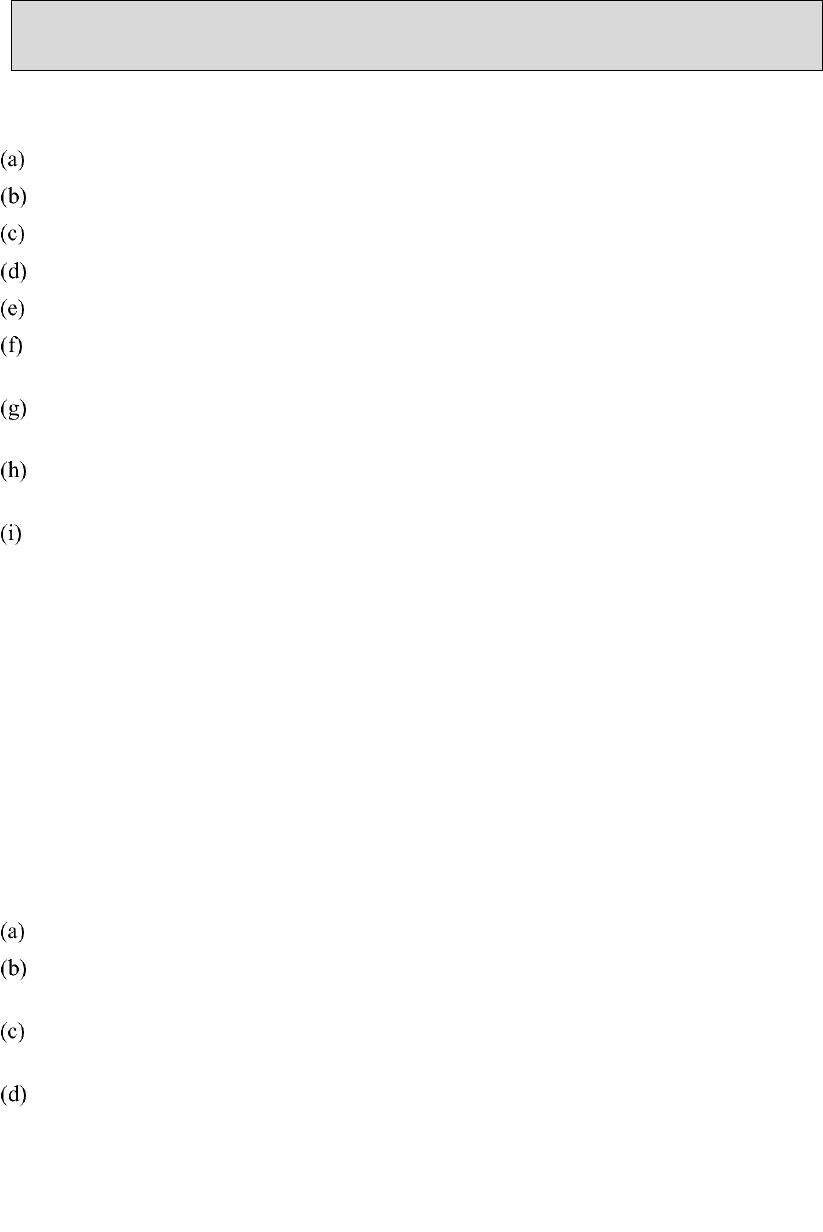
Energy Savings Scheme Rule of 2009
Effective from 19 June 2024
Page 55
9 Deemed Energy Savings Method
Note: The Deemed Energy Savings Method can be used for the replacement, installation, and
delivery of common End-User Equipment such as lighting, refrigerators and electric motors.
9.1 Energy Savings for Implementations may be calculated in accordance with:
clause 9.3 (Sale of New Appliances), for the Activity Definitions set out in Schedule B;
clause 9.4 (Commercial Lighting Energy Savings Formula);
clause 9.4A (Public Lighting Energy Savings Formula);
clause 9.5 (High Efficiency Motor Energy Savings Formula);
clause 9.6 (Power Factor Correction Energy Savings Formula);
clause 9.7 (Removal of Old Appliances), for the Activity Definitions set out in
Schedule C;
clause 9.8 (Home Energy Efficiency Retrofits), for the Activity Definitions set out in
Schedules D and E; or
clause 9.9 (High Efficiency Appliances for Businesses), for the Activity Definitions set
out in Schedule F.
(deleted).
9.2 For the purposes of clause 34 of Schedule 4A of the Act, where the Energy Savings for an
Implementation are calculated using the Deemed Energy Savings Method in this clause 9,
those Energy Savings are taken to occur on the Implementation Date.
9.2A Acceptable End-User Equipment
9.2A.1 Under the Deemed Energy Savings Method, Equipment Requirements apply to End-User
Equipment. The Equipment Requirements are specified in clauses 9.3 to 9.9, and also include
any additional Equipment Requirements (as Published from time to time by the Scheme
Administrator) that apply to the relevant calculation method of this Rule.
9.2A.2 The Scheme Administrator may, on its own motion or on an application made under clause
9.2A.3, accept Products as meeting the Equipment Requirements referred to in clause 9 by:
Publishing a detailed list identifying each Product;
Publishing a reference to a list from a certifying body, along with any restrictions on that
list;
Publishing a requirement for labelling in accordance with a labelling scheme, along with
any restrictions on that labelling; and/or
Publishing a reference to a product register, as in force from time to time, published by a
specified body, along with any restrictions on that product register - so long as the
Scheme Administrator is satisfied that the requirements for listing a product on the
product register are substantially the same as the relevant Equipment Requirements set
out in clause 9 other than any additional Equipment Requirements published by the
Scheme Administrator in accordance with clause 9.2A.1.
NSW Government Gazette
20 December 2023
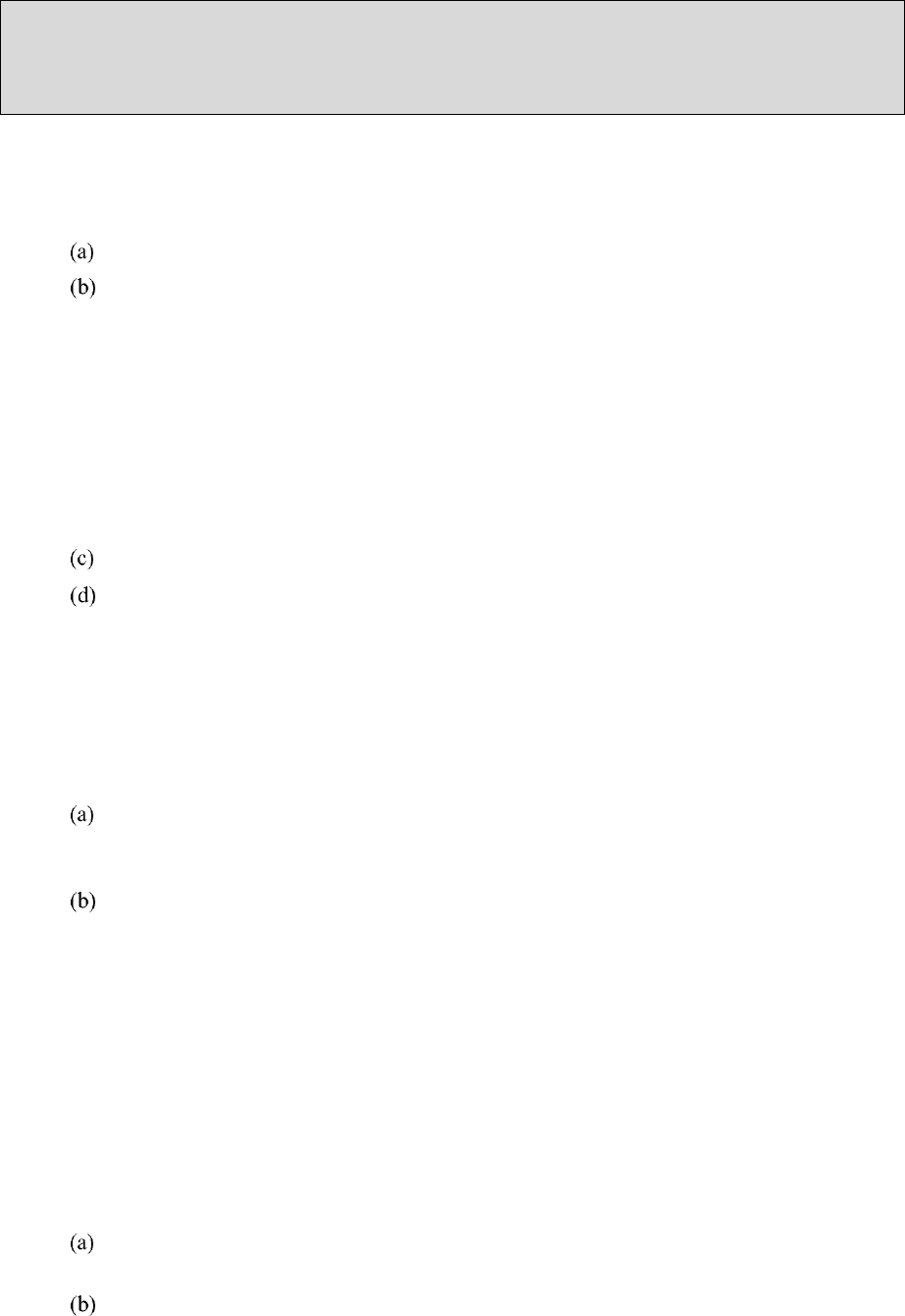
Energy Savings Scheme Rule of 2009
Effective from 19 June 2024
Page 56
Note: For example, the Scheme Administrator publishes a reference to the energy upgrades register of products
published by the Victorian Essential Services Commission along with the restriction that only those products on
the register that are solar or heat pump water heaters are accepted as meeting the Equipment Requirements for
the purposes of cl 9.2A.2.
9.2A.3 Subject to clause 9.2A.4, any Accredited Certificate Provider (or other persons as Published
by the Scheme Administrator), may apply to the Scheme Administrator to have a Product
accepted as meeting the Equipment Requirements, provided that they:
apply in a form and manner required by the Scheme Administrator;
pay any fee required by the Scheme Administrator in respect of the investigation and
determination of the application on a cost recovery basis and including an allowance for:
(i) the recovery by the Scheme Administrator of its costs in establishing, operating
and maintaining the systems and databases required in connection with the
assessment, acceptance and rejection of applications made under this clause
9.2A.3;
(ii) the exercise of the Scheme Administrator's powers under clauses 9.2A.2 and
9.2A.5; and
(iii) the payment and collection of fees under this clause 9.2A.3(b);
identify the Product; and
provide evidence that the Product meets all of the Equipment Requirements.
9.2A.4 The Scheme Administrator may limit the number of applications that may be made during a
period under clause 9.2A.3, either in aggregate or by particular persons or classes of persons,
by Publishing a notice that sets out that period and limit.
9.2A.5 The Scheme Administrator may, at any time, cease to accept a Product as meeting the
Equipment Requirements, provided that it:
notifies all Accredited Certificate Providers accredited for the relevant Recognised
Energy Saving Activity of the change and the reason for the change, prior to the Product
ceasing to be accepted for this purpose; and
ensures that all Published lists reflect the change in a timely manner.
9.2A.5A The Scheme Administrator may accept or reject an application made under clause 9.2A.3.
9.2A.6 Without limiting clause 9.2A.5A, the Scheme Administrator may reject an application made
under clause 9.2A.3 where the applicant has not provided additional information requested by
the Scheme Administrator in support of that application within a timeframe Published by the
Scheme Administrator.
9.3 Sale of New Appliances
9.3.1 The Energy Savings for an Implementation may be calculated using Equation 5, provided
that:
each item of End-User Equipment meets the Equipment Requirements in one of the
Activity Definitions set out in Schedule B;
each item of End-User Equipment was sold by an Appliance Retailer;
NSW Government Gazette
20 December 2023

Energy Savings Scheme Rule of 2009
Effective from 19 June 2024
Page 57
each item of End-User Equipment was new at the time it was sold by the Appliance
Retailer;
each item of End-User Equipment was delivered to an Address, or was sold to a Purchaser
with an Address recorded by the Appliance Retailer; and
compliance with the requirements in clauses (a) to (d) above is evidenced by a tax invoice
and/or other evidence acceptable to the Scheme Administrator.
9.3.2 For the purposes of clause 5.3(a), End-User-Equipment under clause 9.3 is deemed to be
installed upon its sale.
9.3.3 For the purposes of clause 6.8, the Site of the Implementation is the Address referred to in
clause 9.3.1 (d) of this Rule.
9.3.4 The Implementation Date is the date that the End-User Equipment was sold.
9.3.5 The Energy Saver is the Appliance Retailer who sells the End-User Equipment to a Purchaser.
9.3.6 (deleted)
Equation 5
For each Implementation:
Electricity Savings = Σ
Deemed Equipment Electricity Savings
Where:
• the summation is over all items of End-User Equipment that have been sold as part of the
Implementation; and
• Deemed Equipment Electricity Savings, in MWh, for each item of End-User Equipment
are calculated according to the respective Activity Definition B1, B2, B3, B4, B5, B6, or
B7 of Schedule B.
9.4 Commercial Lighting Energy Savings Formula
9.4.1 The Energy Savings for an Implementation may be calculated using Equations 6 and 9 and
either 7 or 8, provided that:
the activity is a Lighting Upgrade of:
(i) Lighting for Roads and Public Spaces;
(ii) Traffic Signals; or
(iii) Building Lighting;
the Lighting Upgrade meets or exceeds the relevant lighting standards for each upgrade,
to the satisfaction of the Scheme Administrator;
if the Lighting Upgrade is of Building Lighting, then each space, after implementation of
the Lighting Upgrade must, to the satisfaction of the Scheme Administrator, achieve:
(i) the relevant requirements of AS/NZS 1680, specifically including but not limited
to maintained illuminance accounting for lumen depreciation, control of glare,
and uniformity of illuminance, or another benchmark approved by the Scheme
Administrator where the Lighting Upgrade is outside the scope of AS/NZS1680;
NSW Government Gazette
20 December 2023

Energy Savings Scheme Rule of 2009
Effective from 19 June 2024
Page 58
(ii) the requirements of the BCA section F4.4, Safe Movement (as updated from time
to time);
(iii) an IPD that equals or is less than the maximum IPD for each space, as defined in
Part J6 of the BCA; and
(iv) any other minimum performance requirements as Published by the Scheme
Administrator;
the Lighting Upgrade is performed by a person authorised to carry out electrical wiring
work under section 14 (1) of the Home Building Act 1989;
the Purchaser has paid a Net Amount of at least $5 (excluding GST) per MWh of
Electricity Savings, which must not be reimbursed, for the goods or services making up
the Implementation, and which payment is evidenced to the satisfaction of the Scheme
Administrator;
each item of End-User Equipment used in the Lighting Upgrade is either:
(i) a Standard Equipment Class as listed in Table A9.1 of Schedule A or,
(ii) an Other Equipment Class as listed in Table A9.3 of Schedule A, provided that the
item is accepted by the Scheme Administrator as meeting the Equipment
Requirements specified in Table A9.4 of Schedule A.
if the Lighting Upgrade is of Lighting for Roads and Public Spaces, then the Lighting
Upgrade, must, to the satisfaction of the Scheme Administrator, achieve:
(i) the requirements of the AS/NZS 1158 series of standards; or
(ii) any other standard or benchmark specified by the Scheme Administrator.
if the Lighting Upgrade is of Traffic Signals, then the Lighting Upgrade must, to the
satisfaction of the Scheme Administrator, achieve:
(i) the relevant requirements of AS 2144:2014; or
(ii) any other standard or benchmark specified by the Scheme Administrator.
Space types Un-switched Maintained Emergency Luminaire and Switched Maintained
Emergency Luminaire in Table A10. 2 do not apply unless the existing lighting End-User
Equipment is an Un-Switched Maintained Emergency Luminaire.
Note: Non-Cash Inducements and in-kind payments are not an acceptable form of payment for the
purposes of clause 9.4.1(e). They do not contribute to the Net Amount paid. For example, the
purchaser cannot provide goods and services in exchange for goods and services that make up the
Implementation for the purposes of clause 9.4.1(e).
9.4.2 The Implementation Date is the date when the Lighting Upgrade was completed.
9.4.3 The Energy Saver is the Purchaser.
9.4.4 (deleted).
Equation 6
For each Implementation:
NSW Government Gazette
20 December 2023

Energy Savings Scheme Rule of 2009
Effective from 19 June 2024
Page 59
Electricity Savings = [Baseline Consumption – Upgrade Consumption]
Where:
• Baseline Consumption, in MWh, is calculated:
• using Equation 7, if the Lighting Upgrade is part of a refurbishment that would
not have been required to comply with the BCA Part J6, had the Lighting
Upgrade component of the refurbishment not occurred;
• using Equation 7 if the Lighting Upgrade is part of a refurbishment that would
have been required to comply with the BCA Part J6, had the Lighting Upgrade
component of the refurbishment not occurred and where the existing lighting
meets or is below the maximum IPD requirements of the BCA Part J6; or
• using Equation 8 if the Lighting Upgrade is part of a refurbishment that would
have been required to comply with the BCA Part J6, had the Lighting Upgrade
component of the refurbishment not occurred, and where the existing lighting
does not meet the IPD requirements of the BCA Part J6.
• Upgrade Consumption, in MWh, is calculated using Equation 9.
Equation 7
Baseline Consumption (MWh) =
Σ
Each Incumbent Lamp
( LCP × Asset Lifetime × Annual Operating Hours × CM × AM ) ÷ 10
6
Where:
• Each Incumbent Lamp means each Lamp and Control Gear in the pre-existing lighting
system;
• LCP, in Watts, is the default lamp circuit power corresponding to that type of Lamp and
Control Gear for that End-User Equipment as set out in Table A9.2 or Table A9.4 of
Schedule A, representing the power drawn by the Lamp, plus the losses of its Control Gear;
• Asset Lifetime, in years, is the default lifetime of the Lighting Upgrade for the relevant End-
User Equipment as used in Equation 9;
• Annual Operating Hours, in hours/year, is the default number of hours per annum that the
upgraded lighting system is expected to operate for the relevant building and space type as
set out in Table A10.2 of Schedule A;
• CM is the control multiplier. If the Lamp is connected to a Control System, the factor for
the control multiplier shall be applied for the relevant End-User Equipment or activity as set
out in Table A10.4 of Schedule A to this Rule, otherwise CM = 1.0; and
• AM is the air-conditioning multiplier for the space as used in Equation 9.
Equation 8
Baseline Consumption (MWh) =
Σ
Each Space
( IPD × Area × Asset Lifetime × Annual Operating Hours × AM ) ÷ 10
6
Where:
NSW Government Gazette
20 December 2023

Energy Savings Scheme Rule of 2009
Effective from 19 June 2024
Page 60
• Each Space means each portion of space within the Site requiring a different IPD as defined
in Part J6 of the BCA;
• IPD, in Watts/m
2
, is the maximum allowable IPD for each space, as required by Table J6.2a
of the BCA. For simplicity, the Scheme Administrator may take a weighted average of
similar IPDs in the Commercial Lighting Energy Savings Formula.
• Area, in m
2
, is the area of Each Space;
• Asset Lifetime, in years, is the default lifetime of the Lighting Upgrade for the relevant End-
User Equipment as used in Equation 9;
• Annual Operating Hours, in hours/year, is the default number of hours per annum that the
upgraded lighting system is expected to operate for the relevant building and space type as
set out in Table A10.2 of Schedule A; and
• AM is the air-conditioning multiplier for the space as used in Equation 9.
Equation 9
Upgrade Consumption (MWh) =
Σ
Each Upgrade Lamp
( LCP × Asset Lifetime × Annual Operating Hours × CM × AM ) ÷ 10
6
Where:
• Each Upgrade Lamp means each Lamp and Control Gear in the upgraded lighting system.
• LCP, in Watts, is the default lamp circuit power corresponding to that type of Lamp and
Control Gear for that End-User Equipment as set out in Table A9.2 or Table A9.4 of
Schedule A, representing the power drawn by the Lamp, plus the losses of its Control Gear;
• Asset Lifetime, in years, is the default lifetime of the Lighting Upgrade for the relevant End-
User Equipment as set out in Table A10.1 of Schedule A, or another value accepted by the
Scheme Administrator;
• Annual Operating Hours, in hours/year, is the default number of hours per annum that the
upgraded lighting system is expected to operate for the relevant building and space type as
set out in Table A10.2 of Schedule A;
• CM is the control multiplier. If the Lamp is connected to a Control System, the factor for
the control multiplier shall be applied for the relevant End-User Equipment or activity as set
out in Table A10.4 of Schedule A, otherwise CM = 1.0; and
• AM is the air-conditioning multiplier for the space, after Implementation, as set out in Table
A10.5 of Schedule A.
9.4A Public Lighting Energy Savings Formula
9.4A.1 The Energy Savings for an Implementation may be calculated using Equations 6A, 7A and
9A, provided that:
(a) the activity is a Lighting Upgrade of:
(i) Lighting for Roads and Public Spaces; or
(ii) Traffic Signals; and
(b) the Luminaire is an asset owned and/or maintained by a Distributor or Roads and
Maritime Services; and
NSW Government Gazette
20 December 2023

Energy Savings Scheme Rule of 2009
Effective from 19 June 2024
Page 61
(c) each item of End-User Equipment used in the Lighting Upgrade is either:
(i) a Standard Equipment Class as listed in Table A9.1 of Schedule A; or
(ii) an Other Equipment Class as listed in Table A9.3 of Schedule A, provided that the
item is accepted by the Scheme Administrator as meeting the Equipment
Requirements specified in Table A9.4 of Schedule A.
9.4A.2 The Implementation Date is the date when the Lighting Upgrade was completed.
9.4A.3 The Energy Saver is:
(a) the Distributor or Roads and Maritime Services that is the owner of the Luminaire; or
(b) the Council or Roads and Maritime Services if they:
(i) are a public lighting customer, for billing, regulatory or management purposes, of the
Distributor that owns the Luminaire, and
(ii) request the Lighting Upgrade from the Distributor that owns the Luminaire, in
writing.
9.4A.4 If the Lighting Upgrade involves an existing or replacement Lamp or Luminaire that:
(a) is registered on a national electricity market load table for unmetered connection points,
the device load value listed in that load table must be used as the LCP in Equations 7A
and 9A; or
(b) is not registered on a national electricity market load table for unmetered connection
points, the device load value as listed in a Public Lighting Inventory must be used as the
LCP in Equations 7A and 9A.
Equation 6A
For each Implementation:
Electricity Savings = [Baseline Consumption – Upgrade Consumption]
Where:
• Baseline Consumption, in MWh, is calculated using Equation 7A
• Upgrade Consumption, in MWh, is calculated using Equation 9A
NSW Government Gazette
20 December 2023

Energy Savings Scheme Rule of 2009
Effective from 19 June 2024
Page 62
Equation 7A
Baseline Consumption (MWh) =
Σ
Each Incumbent Lamp
(LCP × Asset Lifetime × Annual Operating Hours) ÷ 10
6
Where:
• Each Incumbent Lamp means each Lamp and Control Gear in the pre-existing lighting
system;
• LCP, in Watts, is the default lamp circuit power as defined in clause 9.4A.4;
• Asset Lifetime is 12 years;
• Annual Operating Hours, in hours/year, is:
• 4,500, if the activity is a Lighting Upgrade of Lighting for Roads and Public
Spaces; or
• 8,760, if the activity is a Lighting Upgrade of Traffic Signals.
Equation 9A
Upgrade Consumption (MWh) =
Σ
Each Upgrade Lamp
(LCP × Asset Lifetime × Annual Operating Hours) ÷10
6
Where:
• Each Upgrade Lamp means each Lamp and Control Gear in the upgraded lighting system;
• LCP, in Watts, is the default lamp circuit power as defined in clause 9.4A.4;
• Asset Lifetime is 12 years;
• Annual Operating Hours, in hours/year, is:
• 4,500, if the activity is a Lighting Upgrade of Lighting for Roads and Public
Spaces; or
• 8,760, if the activity is a Lighting Upgrade of Traffic Signals.
9.5 High Efficiency Motor Energy Savings Formula
9.5.1 The Energy Savings may be calculated using Equation 12, provided that:
the End-User Equipment is a new High Efficiency Motor; and
the High Efficiency Motor is installed.
9.5.2 The Implementation Date is the date that the High Efficiency Motor was installed.
9.5.3 The Energy Saver is the Purchaser.
9.5.4 (deleted).
9.5.5 An Accredited Certificate Provider may only calculate Energy Savings for an Implementation
using Equation 12 if they were accredited by the Scheme Administrator to create Energy
NSW Government Gazette
20 December 2023

Energy Savings Scheme Rule of 2009
Effective from 19 June 2024
Page 63
Savings Certificates using the High Efficiency Motor Energy Savings Formula on or before
15 April 2016.
Equation 12
For each Implementation:
Electricity Savings = P × LUF × DEI × Asset Life × 8760 ÷ 1000
Where:
• P, in kW, is the rated output of the High Efficiency Motor
• LUF is the Default Load Utilisation Factors for the relevant High Efficiency Motor as set
out in Table A12 of Schedule A, where the Business Classification and End-Use Service
relevant to the Energy Savings is known, or Table A13 of Schedule A otherwise;
• DEI is the default efficiency improvement (as a fraction, not as a percentage) for the relevant
High Efficiency Motor as set out in Table A11 of Schedule A; and
• Asset Life, in years, of the High Efficiency Motor is set out in Table A14 of Schedule A to
this Rule for the corresponding rated output of the High Efficiency Motor.
9.6 Power Factor Correction Energy Savings Formula
9.6.1 The Energy Savings may be calculated using Equations 13 and 14, provided that:
the capacitors to provide the power factor correction services are installed at a Site where
electricity is supplied from the Electricity Network at less than 50 kilovolts (kV);
the capacitors improve the power factor of the Site to achieve a minimum of 0.9 lagging;
the capacitors are not installed as part of a mandatory program of installation;
the capacitors are installed at the main switchboard, where the Site is connected to the
Electricity Network; and
the capacitors are new.
9.6.2 The Implementation Date is the date on which the capacitors were installed.
9.6.3 The Energy Saver is the Purchaser.
9.6.4 (deleted)
NSW Government Gazette
20 December 2023

Energy Savings Scheme Rule of 2009
Effective from 19 June 2024
Page 64
Equation 13
For each Implementation:
Electricity Savings = (Power Savings) / 1000 × (Annual operating hours) × (Site Life)
Where:
• Power Savings, in kW, is the line loss power savings, less capacitor losses, during operating
hours, and is calculated according to Equation 14;
• Annual operating hours, in hours/year, is the number of hours per year that the Site is
operating and equals 1750; and
• Site Life, in years, is the expected remaining lifetime of the Site and the capacitors and equals
10.
Equation 14
Power Savings (kW) = Real Power × 0.7 × (DLF – 1) × (1 – (Initial power factor)
2
/
(Final power factor)
2
) – 0.0039 × (Rating of installed capacitors)
Where:
• Real Power, in kW, is the real power component of the average Site load during operating
hours;
• DLF is the distribution loss factor for the Distribution District that the Site is connected to,
as detailed in Table A19 of Schedule A;
• Initial power factor is the power factor of the load before the capacitors are installed, or 0.9,
whichever is greater;
• Final power factor is the power factor of the load after the capacitors have been installed,
or 0.98, whichever is lesser; and
• Rating of installed capacitors, in kvar, is the rated reactive power of the installed capacitors.
9.7 Removal of Old Appliances
9.7.1 The Energy Savings for an Implementation may be calculated using Equation 15, provided
that:
the Site is a Residential Building or a Small Business Site;
each item of End-User Equipment meets one of the Equipment Requirements in Activity
Definition C1 or C2 of Schedule C;
each item of End-User Equipment is removed from the Site and disposed of; and
compliance with the requirements in clauses 9.7.1(a) to (c) above is evidenced by a copy
of the disposal agent’s refrigerant handling Licence, and/or other evidence acceptable to
the Scheme Administrator.
9.7.2 The Implementation Date is the date that the End-User Equipment was removed from the Site.
9.7.3 The Energy Saver is the person who is contracted to remove the End-User Equipment.
NSW Government Gazette
20 December 2023

Energy Savings Scheme Rule of 2009
Effective from 19 June 2024
Page 65
Equation 15
For each Implementation:
Electricity Savings = Σ
Deemed Equipment Electricity Savings
Where:
• the summation is over all items of End-User Equipment that have been removed as part of
the Implementation; and
• Deemed Equipment Electricity Savings, in MWh, are calculated according to Activity
Definition C1 or C2 of Schedule C.
9.8 Home Energy Efficiency Retrofits
9.8.1 The Energy Savings for an Implementation may be calculated using Equation 16, provided
that:
the Site is a Residential Building or a Small Business Site, as evidenced to the satisfaction
of the Scheme Administrator;
a Site Assessment has been conducted on or before the Implementation Date;
the Eligibility Requirements for the relevant Activity Definition are met immediately
prior to the Implementation Date;
installed End-User Equipment or Products that modify End-User Equipment meet all of
the Equipment Requirements for the relevant Activity Definition;
the completed Implementation satisfies all of the relevant Implementation Requirements;
the Accredited Certificate Provider has evidence satisfactory to the Scheme Administrator
that the Purchaser has paid for the Implementation, assessment and other associated
works carried out at the Site a Net Amount of:
(i) at least $200 (excluding GST) for each item of End-User Equipment installed as part
of an Implementation using any of Activity Definitions D16, D17, D18, D19, D20
and D21; or
(ii) at least $30 (excluding GST) for an Implementation using any other Activity
Definition in Schedule D or Schedule E.
9.8.1A An Accredited Certificate Provider must ensure that a payment made by a Purchaser which
the Accredited Certificate Provider relies upon under clause 9.8.1(f) is not reimbursed.
9.8.1B Clause 9.8.1(f) does not apply to an Implementation delivered through a Low-income
Energy Program or an Exempt Energy Program.
Note: Non-Cash Inducements and in-kind payments are not an acceptable form of payment for the purposes
of clause 9.8.1(f). They do not contribute to the Net Amount paid. For example, the purchaser cannot
provide goods and services in exchange for goods and services that make up the Implementation for the
purposes of clause 9.8.1(f).
9.8.2 The Implementation Date is the date that the End-User Equipment is installed.
9.8.3 The Energy Saver is the Purchaser.
NSW Government Gazette
20 December 2023

Energy Savings Scheme Rule of 2009
Effective from 19 June 2024
Page 66
9.8.4 (deleted)
9.8.5 The activities that make up the Implementation must be identified, recorded and reported to
the Scheme Administrator in a manner and form determined by the Scheme Administrator.
Equation 16
For each Implementation:
Electricity Savings = Σ
Deemed Activity Electricity Savings
Gas Savings = Σ
(Deemed Activity Gas Savings)
Where:
• the summation is over all activities at the Site in accordance with this clause 9.8; and
• Deemed Activity Electricity Savings, in MWh, are calculated according to the Activity
Energy Savings formula set out in the relevant Activity Definition in Schedule D or
Schedule E for each Implementation at the Site.
• Deemed Activity Gas Savings, in MWh, are calculated according to the Activity Energy
Savings formula set out in the relevant Activity Definition in Schedule D or Schedule E
for each Implementation at the Site.
9.9 Installation of High Efficiency Appliances for Businesses
9.9.1 The Energy Savings for an Implementation may be calculated using Equation 17, provided
that:
each item of End-User Equipment meets the Equipment Requirements in an Activity
Definition listed in Schedule F;
each item of End-User Equipment meets the Installation Requirements as specified in the
relevant Activity Definition in Schedule F; and
each item of End-User Equipment is installed at an Address in an ESS Jurisdiction
the Site is not a Residential Building unless otherwise specified in the Eligibility
Requirements in an Activity Definition listed in Schedule F; and
the Accredited Certificate Provider has evidence satisfactory to the Scheme Administrator
that the Purchaser has paid for the Implementation, assessment and other associated
works carried out at the Site a Net Amount of at least $200 (excluding GST) for each item
of End-User Equipment installed as part of an Implementation using any of Activity
Definitions F1.1, F1.2, F16 or F17.
9.9.1A An Accredited Certificate Provider must ensure that a payment made by a Purchaser which
the Accredited Certificate Provider relies upon under clause 9.9.1(e) is not reimbursed.
9.9.1B Clause 9.9.1(e) does not apply to an Implementation delivered through an Exempt Energy
Program.
9.9.1C Where two or more heat pumps are joined by manifold to form a single system, that
manifold system is deemed to be a single item of End-User Equipment for the purposes of
clause 9.9.1(e).
NSW Government Gazette
20 December 2023
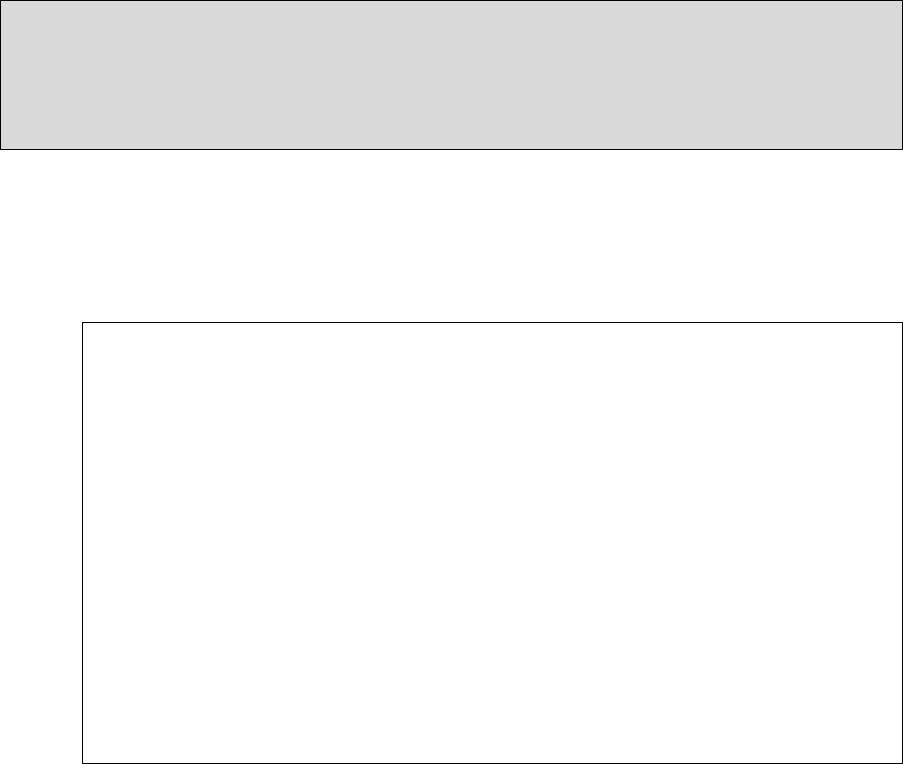
Energy Savings Scheme Rule of 2009
Effective from 19 June 2024
Page 67
Note: Non-Cash Inducements and in-kind payments are not an acceptable form of payment for the
purposes of clause 9.9.1(e). They do not contribute to the Net Amount paid. For example, the
purchaser cannot provide goods and services in exchange for goods and services that make up the
Implementation for the purposes of clause 9.9.1(e).
9.9.2 The Implementation Date is the date that the End-User Equipment is installed.
9.9.3 The Energy Saver is the Purchaser.
9.9.4 (deleted)
Equation 17
For each Implementation:
Electricity Savings = Σ
Deemed Equipment Electricity Savings
Gas Savings = Σ Deemed Equipment Gas Savings
Where:
• the summation is over all items of End-User Equipment that have been installed as part of
the Implementation; and
• Deemed Equipment Electricity Savings, in MWh, for each item of End-User Equipment are
calculated according to the relevant Activity Definition in Schedule F.
• Deemed Equipment Gas Savings, in MWh, for each item of End-User Equipment are
calculated according to the relevant Activity Definition in Schedule F.
9.10 (deleted)
NSW Government Gazette
20 December 2023

Energy Savings Scheme Rule of 2009
Effective from 19 June 2024
Page 68
10 Definitions and Interpretation
10.1 In this Rule:
“Accreditation Date” means, with respect to a Recognised Energy Saving Activity, the date on
which the Scheme Administrator approves an Accredited Certificate Provider’s application:
for accreditation with respect to that activity; or
to amend its existing accreditation to add that activity.
“Accredited Certificate Provider” has the same meaning it has in the Act.
“Accredited Statistician” means a person:
accredited by the Statistical Society of Australia Inc. at the time of carrying out the
verification in accordance with clause 8.9.7(e); and
accepted by the Scheme Administrator for the purposes of this Rule.
“Accuracy Factor” has the meaning given to that term in clause 7A.10.
“ACOP” means Annual Coefficient of Performance as defined in the Greenhouse and Energy
Minimum Standards (Air Conditioners up to 65kW) Determination 2019.
“Act” means the Electricity Supply Act 1995.
“Activity Definition” means an activity as specified in a Schedule to this Rule.
“Additional Energy Savings” means, in respect of clauses 7, 7A and 8, Energy Savings for which no
Energy Savings Certificates have been created, but which arise from an Implementation in relation to
which Energy Savings Certificates have been created.
“Address” means a street address within an ESS Jurisdiction, in a format approved by the Scheme
Administrator.
“Adjusted Coefficient of Determination” means, for the purpose of clause 7A, a statistical measure
of the extent to which variations in the energy consumption are explained by an energy model that is
established using Regression Analysis, adjusted to the number of Independent Variables used in the
energy model.
“AEER” means Annual Energy Efficiency Ratio as defined in the Greenhouse and Energy Minimum
Standards (Air Conditioners up to 65kW) Determination 2019.
“ANZSIC” means the Australian and New Zealand Standard Industrial Classification developed by
the Australian Bureau of Statistics and Statistics New Zealand.
“Appliance Retailer” means a person who has sold End-User Equipment which meets the Equipment
Requirements of a Recognised Energy Saving Activity set out in Schedule B, in a new condition, to a
Purchaser.
“Approved Corresponding Scheme” has the same meaning as it has in clause 30(3) of Schedule 4A
of the Act.
“AS” means an Australian Standard as published by SAI Global.
NSW Government Gazette
20 December 2023

Energy Savings Scheme Rule of 2009
Effective from 19 June 2024
Page 69
“AS/NZS” means an Australian/New Zealand Standard as published by SAI Global.
“AS/NZS 3823.4 Climate Zone” means the three climate zones defined in AS/NZS 3823.4.1,
AS/NZS 3823.4.2 and the E3 Climate Zone Mapping Report listed by postcode, as detailed in Table
A27.
“Attrition” means, in relation to clause 8.9, the termination of the natural gas or electricity account in
relation to a specific Site, for example, due to electricity customers switching retailers, relocating to a
different Site, or disconnection from their electricity service.
“Ballast EEI” means the ballast energy efficiency index as defined in AS/NZS 4783.2 Performance
of electrical lighting equipment - Ballasts for fluorescent lamps - Energy labelling and minimum
energy performance standards requirements.
“Baseline Energy Model” is the model described in clause 7A.3.
“Baseline NABERS Rating” has the meaning given in Step 2 of Method 4, under clause 8.8.
“BASIX” means the NSW Building Sustainability Index established under the Environmental
Planning and Assessment Regulation 2000.
“BCA” means the Building Code of Australia, forming part of the National Construction Code as
updated from time to time.
“BCA Climate Zone” means the BCA Climate Zone number listed by postcode, as detailed in
Table A26.
“Biodiesel” has the same meaning as it has in the Biofuels Act 2007 (NSW)
“Biofuel” has the same meaning as it has in the Electricity Supply (General) Regulation 2014.
“Biofuel Savings” means the reduction of the amount or equivalent amount of Biofuel consumption
for stationary energy (in MWh) arising from the Implementation as calculated by the approved
calculation method in clauses 7, 7A, 8 or 9. Biofuel Savings may be negative.
“Biogas” has the same meaning as it has in the Electricity Supply (General) Regulation 2014.
“Biogas Savings” means the reduction of the amount or equivalent amount of Biogas consumption
for stationary energy (in MWh) arising from the Implementation as calculated by the approved
calculation method in clauses 7, 7A, 8 or 9. Biogas Savings may be negative.
“Biomass” has the same meaning as it has in the Electricity Supply (General) Regulation 2014.
Note: Energy Crops and the biomass-based waste fuels listed in the NSW Environment Protection Authority’s
Eligible Waste Fuels Guidelines as in force from time to time are eligible types of Biomass under this Rule.
“Biomass Savings” means the reduction of the amount or equivalent amount of Biomass
consumption for stationary energy (in MWh) arising from the Implementation as calculated by the
approved calculation method in clauses 7, 7A, 8 or 9. Biomass Savings may be negative.
“Building Lighting” means End-User-Equipment lighting affixed to a Commercial/Industrial
premises which is classified under the BCA as Class 3, 5, 6, 7, 8, 9, 10(a) or 10(b) buildings or the
Common Area of a BCA Class 2 building.
NSW Government Gazette
20 December 2023

Energy Savings Scheme Rule of 2009
Effective from 19 June 2024
Page 70
“Business Classification” is the primary classification of the business making use of the End-Use
Service for which energy was saved, detailed in Table A18 of Schedule A.
“Certificate Conversion Factor” has the same meaning as it has in the Act.
“CFL” means compact fluorescent Lamp.
“CFLi” means a compact fluorescent Lamp with integrated ballast.
“CFLn” means a compact fluorescent Lamp with non-integrated ballast.
“Coefficient of Variation” means, for the purposes of clause 7A, the sample standard deviation
expressed as a percentage of the sample mean.
“Coefficient of Variation of the Root Mean Squared Error” means, for the purpose of clause 7A,
the standard error of an energy model that is established using Regression Analysis expressed as a
percentage of the average energy consumption.
“Commercial Building Disclosure Program” is a regulatory program established under the Building
Energy Efficiency Disclosure (BEED) Act 2010.
“Common Areas” means:
for buildings owned under strata title, the common property as defined in either the Strata
Schemes (Freehold Development) Act 1973, or Strata Schemes (Leasehold Development)
Act 1986; or
for buildings not owned under strata title (e.g. under company title), the non-residential
property of BCA Class 2 buildings.
“Computer Simulation” means a method to establish an energy model that uses software to simulate
energy consumption by End-User Equipment and can be tested against statistical requirements
Published by the Scheme Administrator for the purposes of clause 7A of this Rule.
“Control Gear” means the lighting ballast, transformer or driver.
“Control Group” means, in relation to clause 8.9, the group of Sites selected to not be offered the
Treatment.
“Control Multiplier A” is a factor from Table A10.4A of Schedule A for a control device that
switches the luminaire on and off and must control a maximum of 6 luminaires (except Occupancy
Sensor 1).
“Control Multiplier B” is a factor from Table A10.4A of Schedule A for a control device that
reduces the luminaire’s power output and must control a maximum of 6 luminaires (except
Occupancy Sensor 1). The luminaire must have at least two rated LCP modes that must not be
adjusted after the Implementation.
“Control System” means a system for controlling the light output of a Luminaire, including:
Occupancy Sensor;
Daylight-Linked Control;
Programmable Dimming;
NSW Government Gazette
20 December 2023

Energy Savings Scheme Rule of 2009
Effective from 19 June 2024
Page 71
Manual Dimming; or
Voltage Reduction Unit.
“Council” means a Council as defined by the Local Government Act 1993 or corresponding
legislation in an approved corresponding scheme jurisdiction.
“Counted Energy Savings” means the total Eligible Fuel Savings for which Energy Savings
Certificates have previously been created for the Implementation. Counted Energy Savings can only
be used to account for Energy Savings Certificates created for the same Implementation, not for
Energy Savings Certificates created under another Recognised Energy Saving Activity.
“Data Exclusion Method” means, for the purpose of clause 7A, the Non-Routine Adjustment
method described in the PIAM&V Method Application Requirements for Non-Routine Events and
Adjustments that is used to adjust for a temporary Non-Routine Event that is less than or equal to 25%
of the Measurement Period of choice, or to adjust for a permanent Non- Routine Events commencing
within the first 25% of the Baseline Energy Model Measurement Period or within the last 25% of the
Operating Energy Model Measurement Period.
“Decay Factor” is a number between 0 and 1 which quantifies the decay of the relevant Energy
Savings due to equipment degradation over time, as determined in accordance with clauses 7 and 7A.
“Deemed Energy Savings Method” means the method in clause 9.
“Default Load Utilisation Factor” is a composite of a deemed load factor and a deemed utilisation
factor for HEMs, as set out in Table A12 or Table A13 of Schedule A.
“Diesel Savings” means the reduction of the amount of diesel consumption for stationary energy (in
MWh) arising from the Implementation as calculated by the approved calculation method in clauses 7,
7A, 8 or 9. Diesel Savings may be negative.
“Distribution District” has the same meaning as it has in the Act.
“Distribution Pipeline” has the same meaning as it has in the Gas Supply Act 1996.
“Distribution System” has the same meaning as it has in the Act.
“Distributor” has the same meaning as it has in the Act.
“Downward Light Output” means the luminous flux (measured in lumens) emitted in the
downwards direction, equivalent to the Light Output from a Lamp or Luminaire when installed flush
with a ceiling.
“Effective Range” means the range over which values of Independent Variables for which a Baseline
Energy Model or Operating Energy model (as the case may be) is valid for the purposes of clause 7A
of this Rule.
“Effective Range Adjustment Factor” is an adjustment factor applied to Normal Year Eligible Fuel
Savings and measured Eligible Fuels Savings during time periods at the Modelling Frequency
corresponding to values of the Independent Variables that are outside the Effective Range of either the
Baseline Energy Model or Operating Energy Model.
NSW Government Gazette
20 December 2023

Energy Savings Scheme Rule of 2009
Effective from 19 June 2024
Page 72
“Electricity Network” means all electricity Transmission Systems and Distribution Systems located
in an ESS Jurisdiction.
“Electricity Retailer” has the same meaning as “retailer” in the National Energy Retail Law (NSW).
“Electricity Savings” means the reduction of the amount or equivalent amount of electricity
consumption (in MWh) arising from the Implementation as calculated by the approved calculation
method in clauses 7, 7A, 8 or 9. Electricity Savings may be negative.
“Eligibility Requirements” means:
in relation to clause 7A, the set of defined requirements that a Site must meet to be
included in the Population; or
in relation to the Deemed Energy Savings Method, the eligibility requirements specified
in an Activity Definition in the Schedules to this Rule.
“Eligible Fuel” means the recognised forms of energy prescribed in clause 29A of the Electricity
Supply (General) Regulation 2014 and electricity.
“ELV” means extra low voltage, not exceeding 50 volts alternating current (AC) or 120 volts ripple
free direct current (DC), as defined in AS/NZS 3000 Electrical installations (known as the
Australian/New Zealand Wiring Rules).
“Energy Crops” means crops that are specifically grown for Bioenergy generation. Biomass from a
plantation is not an Energy Crop unless it meets all of the conditions under Part 2, Division 2.2, clause
9(1) of the Renewable Energy (Electricity) Regulation 2001 (Cth).
“End-Use Service” is the primary service provided by End-User Equipment, such services being as
detailed in Table A17 of Schedule A.
“End-User Equipment” means Eligible Fuel consuming equipment, processes, or systems, including
the equipment directly consuming one or more Eligible Fuels, and other equipment or products that
cause, control or influence the consumption of one or more Eligible Fuels, and includes (in the
context of clause 8.8) a NABERS Building.
“Energy Saver” means the person who has the right to create Energy Savings Certificates for
particular Energy Savings arising from an Implementation of a Recognised Energy Saving Activity at
a Site, as defined in the relevant calculation method of this Rule.
“Energy Savings” means the Electricity Savings, Gas Savings, Diesel Savings, Biofuel Savings,
Biogas Savings, Biomass Savings, Onsite Renewables Savings or a combination or two or more of
these.
“Energy Savings Certificate” has the same meaning as it has in the Act.
“Energy Star Rating” means an Energy Star Rating as defined in the relevant AS/NZS.
“Equipment Requirements” means the equipment requirements as specified in a Schedule in this
Rule or as Published from time to time by the Scheme Administrator in accordance with clauses
7A.21A, 8.4B and 9.2A.
“ESS Jurisdiction” means the state of New South Wales, or a jurisdiction in which an Approved
Corresponding Scheme is in operation in accordance with clause 30 of Schedule 4A of the Act.
NSW Government Gazette
20 December 2023

Energy Savings Scheme Rule of 2009
Effective from 19 June 2024
Page 73
“Estimate of the Mean” means, for the purposes of clause 7A, a method to establish an energy
model as described in clause 7A.2 (a)(i).
“Ethanol” has the same meaning as it has in the Biofuels Act 2007( NSW).
“Exempt Energy Program” means a NSW Government energy initiative which has been notified to
the Scheme Administrator, and approved by the Minister for the Environment, as an Exempt Energy
Program for the purposes of this Rule.
“Exempt Seller” has the same meaning as it has in the National Energy Retail Law (NSW).
“Fan-Forced Roof Space Ventilators” are products capable of controlled roof cavity ventilation via
a powered fan, controller and temperature humidity sensors, or both.
“Forestry and Sawmilling Residues” has the same meaning as defined in the NSW Environment
Protection Authority’s Eligible Waste Fuels Guidelines as in force from time to time.
“Gas” means natural gas or liquefied petroleum gas.
“Gas Retailer” has the same meaning as “retailer” in the National Energy Retail Law (NSW).
“Gas Savings” means the reduction of the amount of Gas consumption for stationary energy (in
MWh) arising from the Implementation as calculated by the approved calculation method in clauses 7,
7A, 8 or 9. Gas Savings may be negative.
“GEMS Registry” means a published registry of products registered under either Greenhouse and
Energy Minimum Standards or published Minimum Energy Performance Standards (MEPS).
“GreenPower” means renewable energy purchased in accordance with the National GreenPower
Accreditation Program Rules.
“GST” means the tax imposed by the A New Tax System (Goods and Services Tax) Act 1999 (Cth)
and the related impositions by Acts of the Commonwealth.
“Guide” means a guidance document Published by the Scheme Administrator.
“High Efficiency Motor” (HEM) is an electric motor meeting the high efficiency requirements of
AS/NZS 1359.5 (0.73 to <185kW).
“HSPF” means Heating Seasonal Performance Factor as defined in the Greenhouse and Energy
Minimum Standards (Air Conditioners up to 65kW) Determination 2019.
“Implementation” means the delivery of a Recognised Energy Saving Activity at a Site, or for the
purposes of clause 8.9, the delivery of a Recognised Energy Saving Activity across a Population.
“Implementation Date” is defined in each calculation method of this Rule.
“Implementation Period” means, for the purpose of clause 7A, the period extending from the end
date of the Baseline Energy Model Measurement Period to the start date of the Operating Energy
Model Measurement Period, and within which the Implementation Date occurs.
“Implementation Period” means, for the purpose of clause 8, the Measurement Period for which
Energy Savings Certificates may be created.
NSW Government Gazette
20 December 2023
Energy Savings Scheme Rule of 2009
Effective from 19 June 2024
Page 74
“Implementation Requirements” means the implementation requirements specified in an Activity
Definition in the Schedules to this Rule.
“Incumbent Lamp” means, in relation to a Lighting Upgrade, each Lamp and Control Gear in the
pre-existing lighting system.
“Independent Variable” means a parameter that varies over time, can be measured, and affects the
End-User Equipment’s energy consumption for the purposes of clause 7A of this Rule.
“Installation Requirements” means the installation requirements specified in an Activity Definition
in the Schedules to this Rule.
“Integrated Luminaire” means a Luminaire that integrates Lamp and Control Gear into a single
item of End-User Equipment and connects to 240V supply.
“Interactive Energy Effects
f
” means a change in a Site’s consumption of Eligible Fuel, f, outside of
the Measurement Boundary, due to interactions with End-User Equipment for which energy
consumption is not measured for the purposes of clause 7A.
“IPD” means the illumination power density as defined in the BCA part J6.
“IPMVP” means the International Performance Measurement and Verification Protocol, published by
the Efficiency Valuation Organization.
“kV” means a kilovolt of electrical potential.
“kvar” means a kilovolt-amperes reactive of reactive power.
“kW” means a kilowatt of electrical power.
“kWh” means a kilowatt-hour of electrical energy.
“Lamp” means an artificial source of visible light.
“Lamp Life” means the expected operating lifetime of a Lamp, in hours, measured in accordance
with Table A9.6 of Schedule A.
“Lamp Only” means the replacement of an existing Lamp with a Lamp that consumes less
electricity, and could include the installation or replacement of a Control System.
“Large Customer” has the same meaning as it has in the National Energy Retail Law (NSW).
“LCP” means lamp circuit power, which is the power drawn by a single Lamp and its associated
Control Gear. If the Control Gear supplies multiple Lamps, then the Control Gear losses are assigned
pro rata to each Lamp, according to power drawn by each Lamp.
“LED” means light emitting diode.
“Licensed” means a person that holds a current licence that covers activities in the ESS Jurisdiction
in which the Recognised Energy Saving Activity is implemented for the duration of the
Implementation.
NSW Government Gazette
20 December 2023
Energy Savings Scheme Rule of 2009
Effective from 19 June 2024
Page 75
“Lifetime” means the time period over which Energy Savings will be delivered and for the purposes
of Schedules B, C, D, E, and G are for reference only, as the relevant time period is already taken into
account in the savings factors in those Schedules.
“Light Output” means the luminous flux (measured in lumens) emitted by a Lamp or Luminaire,
determined in accordance with a standard accepted by the Scheme Administrator.
“Lighting for Roads and Public Spaces” means lighting covered by AS/NZS 1158: Lighting for
roads and public spaces or AS/NZS 60598.2.3 Luminaires - Particular requirements - Luminaires for
road and street lighting or both, as applicable.
“Lighting Upgrade” means the replacement of existing lighting End-User Equipment with new
lighting End-User Equipment that consumes less electricity, or the modification of existing lighting
End-User Equipment resulting in a reduction in the consumption of electricity compared to what
would have otherwise been consumed.
“liquefied petroleum gas” has the same meaning as it has in the Gas and Electricity (Consumer
Safety) Act 2017.
“Low-income Energy Program” means a New South Wales Government low income household
energy initiative which has been notified to the Scheme Administrator by the New South Wales
Government, and approved by the Minister for the Environment, as a Low-income Energy Program
for the purposes of this Rule.
“LPG” means liquefied petroleum gas.
“LUF” means load utilisation factor.
“Luminaire” means the apparatus that distributes, filters or transforms the light emitted from a light
source, including Lamps, Control Gear and all components necessary for fixing and protecting the
Lamps, including the troffer.
“Maximum Time Period for Forward Creation” is determined in accordance with clauses 7A.12
and 8.8.10 (a), accordingly.
“Measured Electricity Consumption”: (a) for the purposes of clause 8.8 means the electricity
consumption as determined in accordance with Method 4; and (b) for the purposes of clause 8.9
means the electricity consumption as determined in accordance with clause 8.9.3.
“Measured Gas Consumption”: (a) for the purposes of clause 8.8 means the Gas consumption as
determined in accordance with Method 4; and (b) for the purposes of clause 8.9 means the natural gas
consumption as determined in accordance with clause 8.9.3A.
“Measurement and Verification Professional” is defined in clause 7A.15 of this Rule.
“Measurement Boundary” means all End-User Equipment which is modified, replaced, installed, or
removed as a result of the Implementation, as well as all End-User Equipment within that boundary
whose energy consumption is impacted by the Implementation.
“Measurement Frequency” is how often measurements of Eligible Fuel consumption, Independent
Variables, Site Constants, or any other relevant parameter are taken.
NSW Government Gazette
20 December 2023

Energy Savings Scheme Rule of 2009
Effective from 19 June 2024
Page 76
“Measurement Period” means the duration of time over which measurement of energy consumption
will be taken for the purposes of calculating the Energy Savings under clause 7, 7A or 8, and defined
therein.
“Metered Baseline Method” means the method in clause 8.
“Modelling Frequency” is how often independent observations of Eligible Fuel consumption,
Independent Variables, or any other relevant parameter are used in the Baseline Energy Model or
Operating Energy Model. Measurement Frequency and Modelling Frequency may differ where
measurements are aggregated into independent observations.
“MWh” means a megawatt-hour of energy.
“NABERS” means the National Australian Built Environment Rating System.
“NABERS Building” means a building that has been rated under NABERS.
“NABERS Rating” means a rating, expressed as a number, for a NABERS Building.
“NABERS Reverse Calculator” means the tool provided by the NABERS National Administrator.
“National Greenhouse Accounts Factors” means the factors published by the Australian
Government's Department of the Environment designed for use by companies and individuals to
estimate greenhouse gas emissions.
“National GreenPower Accreditation Program Rules” mean the terms and conditions of
participation in the National GreenPower Accreditation Program, available on the GreenPower
website.
“Native Forest Bio-materials” has the meaning given to that term under the Protection of the
Environment Operations (General) Regulation 2009 (NSW).
“natural gas” has the same meaning as it has in the National Gas (NSW) Law.
“Natural Roof Space Ventilators” are products capable of providing roof cavity ventilation by wind
or buoyancy effects and have no external power source.
“Net Amount” means the amount of money paid by a Purchaser, minus any money paid to the
Purchaser and the value of any Non-Cash Inducements given to the Purchaser in connection with an
Implementation.
“Network Service Provider” has the same meaning as it has in the National Electricity (NSW) Law.
“New End-User Equipment” means End-User Equipment where no End-User Equipment of the
same type, function, output or service was previously in its place (but does not include additional
components installed in the course of modifying existing End-User Equipment).
Note: The installation of one or more air sourced heat pump can claim Energy Savings under Activity
Definitions F16 and F17 if the New End User Equipment is installed to add additional capacity at a Site. New
End User Equipment can claim savings under Activity Definition F17 if the capacity of the New End User
Equipment does not contribute to any of the capacity of the system being replaced.
NSW Government Gazette
20 December 2023

Energy Savings Scheme Rule of 2009
Effective from 19 June 2024
Page 77
“NLP”, or Nominal Lamp Power, means the manufacturer’s rated value (or tested value, as
acceptable to the Scheme Administrator) for power drawn by a single Lamp.
“Non-Cash Inducement” includes a gift card, gift voucher, credit note or other like inducement, and
also includes goods or services that are not reasonably necessary for or incidental to an
Implementation.
Note: For example, where an Implementation consists of installing a new water heater:
• providing the water heater itself would not be a Non-Cash Inducement (because it is reasonably
necessary for the Implementation), but
• providing a television would be a Non-Cash Inducement.
“Non-Habitable Building” means a building built as a BCA Class 10a or Class 10b building.
“Non-Network Option” has the same meaning as it has in the National Electricity Rules under the
National Electricity (NSW) Law.
“Non-renewable Fuels” means fuels which are existing in limited quantities that cannot be replaced
after they have all been used. This includes coal, oil, gas, and nuclear fuels.
“Non-Routine Adjustments” means, for the purpose of clause 7A, amendments made to energy data
to account for a Non-Routine Events in accordance with clause 7A.5B1 to enable like-for-like
comparison of before and after Energy Savings scenarios.
“Non-Routine Events” means, for the purposes of clause 7A, temporary or permanent events which
affect energy consumption, within the Measurement Boundary and during any Measurement Period.
The events are not modelled by any Independent Variables or Site Constants.
“Normal Operating Conditions” means the normal operating conditions of the End-User Equipment
over one complete operating cycle, from maximum energy consumption and demand to minimum.
“Normal Year” is a typical year for the operation of the End-User Equipment at the Site after the
Implementation Date for the purposes of clause 7A of this Rule.
“Number of Certificates” means the number of Energy Savings Certificates permitted to be created
by an Accredited Certificate Provider for Energy Savings calculated in accordance with clause 6.5 and
the methods set out in clause 7, 7A, 8 or 9.
“Number of Model Parameters” means, for the purposes of clause 7A:
(a) if the energy model is developed for a single Site, the number of Independent Variables; or
(b) if the energy model is developed for multiple Sites, the sum of the number of Independent
Variables and Site Constants.
“Occupied Space Ventilators” are products capable of controlled ventilation in the occupied space
of a building via a powered fan, controller and temperature or humidity sensors or both.
“Onsite Renewable Energy” has the same meaning as it has in the Electricity Supply (General)
Regulation 2014.
NSW Government Gazette
20 December 2023

Energy Savings Scheme Rule of 2009
Effective from 19 June 2024
Page 78
“Onsite Renewables Savings” means the reduction of the amount of Onsite Renewable Energy
consumption for stationary energy (in MWh) arising from the Implementation as calculated by the
approved calculation method in clauses 7, 7A, 8 or 9. Onsite Renewables Savings may be negative.
“Operating Energy Model” is the model established in accordance with the criteria in clause 7A.2
and described in clause 7A.4.
“Organic Residues from Virgin Paper Pulp Activities” has the same meaning as defined in the
NSW Environment Protection Authority’s Eligible Waste Fuels Guidelines as in force from time to
time.
“Other Implementations (OIMPs) Estimate Method” means, for the purpose of clause 7A, the
Non-Routine Adjustment method described in the PIAM&V Method Application Requirements for
Non-Routine Events and Adjustments that accounts for Energy Savings from Implementations other
than the Implementation for which the PIAM&V energy model is being established.
“Owners Corporation” means an owners corporation constituted under section 8 of the Strata
Schemes Management Act 2015 (NSW).
“Persistence Model” means a model that is able to forecast the continuation of Energy Savings from
an Implementation over its useful lifetime.
“PIAM&V Method Application Requirements for Non-Routine Events and Adjustments”
means the Project Impact Assessment with Measurement and Verification Method Application
Requirements for Non-Routine Events and Adjustments and is a document Published by the NSW
Government to support clause 7A.5B1 under clause 7A.5B.
“PIAM&V Method Requirement” means the Project Impact Assessment with Measurement and
Verification method requirement and is a requirement Published by the Scheme Administrator under
clause 7A.16.
“Population”
in relation to clause 8.9, means the set of all Sites in the Control Group and Treatment
Group; or
in relation to Implementations under clause 7A using the Sampling Method, means the set
of all Sites identified as meeting the Eligibility Requirements.
“Pre-Implementation Period” means the Measurement Period prior to the Implementation Period. If
Method 5.3 is used, the Pre-Implementation Period must cover the same period of time in a previous
year as the Implementation Period.
“Prescribed Transmission Services” has the same meaning as it has in the National Electricity
Rules under the National Electricity (NSW) Law.
“Prior Accreditation” means an accreditation with respect to a Recognised Energy Saving Activity
where the Accreditation Date is on or before 30 June 2014 and that accreditation has not been
cancelled, and includes the conditions to that accreditation.
“Product” means a class of End-User Equipment identified uniquely by its manufacturer identifier
and manufacturer’s model identifier and, in some cases, model year or year of manufacture.
NSW Government Gazette
20 December 2023

Energy Savings Scheme Rule of 2009
Effective from 19 June 2024
Page 79
“Product Stewardship Scheme” means a recycling program such as ‘Fluorocycle’ or equivalent.
“Project Impact Assessment Method” means the method in clause 7.
“Project Impact Assessment with Measurement and Verification Method” means the method in
clause 7A.
“Public Lighting Inventory” means the inventory required to be maintained by the Distributor, in
accordance with the NSW Public Lighting Code.
“Publish” means to make publicly available in writing, for example on a website or online system
maintained by the Scheme Administrator or another NSW Government agency.
“Purchaser” means, for the purposes of clause 7, 7A and 9, the person who purchases or leases the
goods or services that enable the relevant Energy Savings to be made; except where
the person is an Accredited Certificate Provider and is not the owner, occupier or operator
of the Site; or
the person purchases or leases the goods or services for the purpose of reselling the End-
User Equipment, unless the resale will be an inclusion in a contract for the sale of land, or
in a strata scheme, the sale of a lot.
Note: Housing developers that bulk purchase and install appliances in their residential developments are
defined as the purchaser if the appliances will be sold in the contract for the sale of the home (as opposed to
display appliances only). This applies to both the sale of land, and covers strata apartments, involving the sale
of lots.
“PV Powered Fan-Forced Roof Space Ventilators” are fan-forced roof space ventilators where all
or a portion of the fan’s electricity consumption is powered by photovoltaic (PV) cells that are
directly connected to the ventilator.
“Rating Period” means the continuous 12-month period covered by the data used for a NABERS
Rating.
“Recognised Energy Saving Activity” has the same meaning as it has in the Act.
“Regional Site” means a Site that has a regional network factor more than 1 according to Table A24.
“Regression Analysis” means a method to establish an energy model that determines a mathematical
function for approximating the relationship between Energy Consumption and Independent Variables
and / or Site Constants for the purposes of clause 7A of this Rule, and includes, but is not limited to,
linear regression, and mixed models.
“Regulations” means regulations made for the purposes of Schedule 4A of the Act.
“Representativeness Test” means, for the purposes of clause 7A, a test that can be applied to the set
of Site Constants across the Sample Sites to test whether they are distributed in a way that represents
the expected distribution of those Site Constants across the Population.
“Residential Building” means a building or part of a building classified as a BCA Class 1, 2 or 4
building, and may include any Non-Habitable Building on the same site.
NSW Government Gazette
20 December 2023

Energy Savings Scheme Rule of 2009
Effective from 19 June 2024
Page 80
“Sample Site” means, for the purposes of clause 7A, a Site in the Population where measurements
are taken for inclusion in a multiple Site model.
“Sampling Method” means the statistical method for conducting measurements at Sample Sites in a
Population to estimate the Energy Savings of the entire Population for the purposes of clause 7A of
this Rule.
“Scheme Administrator” has the same meaning as in the Act.
“Short Energy Models Method” means, for the purpose of clause 7A, the Non-Routine Adjustment
method described in the PIAM&V Method Application Requirements for Non-Routine Events and
Adjustments that is used to adjust for a temporary Non-Routine Event that is greater than 25% of the
Measurement Period of choice, or to adjust for a permanent Non-Routine Event commencing after the
first 25% of the Baseline Energy Model Measurement Period and before the last 25% of the Operating
Energy Model Measurement Period.
“Site” means the location of the End-User Equipment included in a Recognised Energy Saving
Activity, as defined by:
an Address; or
a unique identifier, as specified for the relevant Implementation that identifies the affected
End-User Equipment; or
a method accepted by the Scheme Administrator.
“Site Assessment” means identification of Energy Savings that may be generated at a Site using
Equation 16 with reference to activities identified in Schedule D and Schedule E.
“Site Constant” means a parameter of a Site that does not vary over time under Normal Operating
Conditions. A Site Constant affects energy consumption of End-User Equipment but is not an
Independent Variable and is not used to derive a dependent variable.
“Small Business Site” means a Site:
(a) that is entirely occupied by one business; and
(b) where the business, as a consumer of electricity at the Site:
i. is a Small Customer (and, for the avoidance of doubt, has not aggregated its load at the
Site with consumption at other Sites for the purposes of being treated as a Large
Customer under its electricity purchase arrangements); or
ii. is a customer of an Exempt Seller, and has an annual electricity consumption below the
Upper Consumption Threshold for electricity.
“Small Customer” has the same meaning as it has in the National Energy Retail Law (NSW).
“Standard Control Service” has the same meaning as it has in the National Electricity Rules under
the National Electricity (NSW) Law.
“Standard Luminaire” means, in relation to Table A9.4 of Schedule A, a Luminaire that is listed on
a Distributor’s current maintained list of standard luminaires, in accordance with the NSW Public
Lighting Code.
“Sub-metering Method” means, for the purpose of clause 7A, the Non-Routine Adjustment method
described in the PIAM&V Method Application Requirements for Non-Routine Events and
Adjustments that is used to adjust for Non-Routine Events with existing sub-metering.
NSW Government Gazette
20 December 2023

Energy Savings Scheme Rule of 2009
Effective from 19 June 2024
Page 81
“Switched Maintained Emergency Luminaire” has the same meaning as it has in the AS/NZS
2293.1: Emergency lighting and exit signs for buildings - System design, installation and operation.
“System U-Value” is a measure of the thermal transmittance, in W/m
2
K, of a window system
including glass, sash and frame, as registered under WERS.
“t-statistic of Independent Variable” means, for the purpose of clause 7A, a statistical test to verify
the accuracy and significance of the estimated relationship between an Independent Variable and
energy consumption for an energy model that is established using Regression Analysis.
“TCSPF” means Total Cooling Seasonal Performance Factor as defined in the Greenhouse and
Energy Minimum Standards (Air Conditioners up to 65kW) Determination 2019.
“Traffic Signals” means lighting referred to in AS 2144 Traffic signal lanterns series of standards.
“Transmission System” has the same meaning as it has in the Act.
“Treatment” is the offering of goods and services (and any subsequent provision, engagement and
promotion activities) to the Treatment Group to deliver Energy Savings.
“Treatment Group” means, in relation to clause 8.9, the group of Sites selected to be offered the
Treatment.
“Un-Switched Maintained Emergency Luminaire” has the same meaning as it has in the AS/NZS
2293.1: Emergency lighting and exit signs for buildings - System design, installation and operation.
“Unbiased Selection Method” means a randomisation technique which ensures that every Site in the
Population has an equal chance of being selected into the Treatment Group. This does not require
Treatment Group and Control Group to be of an equal size.
“Uncontaminated Wood Waste” has the same meaning as defined in the NSW Environment
Protection Authority’s Eligible Waste Fuels Guidelines as in force from time to time.
“Uplift Energy Savings” means, in relation to clause 8.9, is the difference in energy consumption
between the Control Group and Treatment Group that is estimated to have taken place due to other
Recognised Energy Saving Activities or activities excluded as ineligible under clause 5.4 of this Rule.
“Upper Consumption Threshold” has the same meaning as it has in the National Energy Retail Law
(NSW).
“VEU” means the Victorian Energy Upgrades program established under the Victorian Energy
Efficiency Target Act 2007 (Victoria).
“WERS” means the Window Energy Rating Scheme managed by the Australian Window
Association.
“Working Order”, when referring to an existing Lamp or Luminaire, means being capable (to the
satisfaction of the Scheme Administrator) of providing continuous, fault-free illumination at a level
which is at least 50% of the level provided by the equipment when new.
“Zoned Energy Rating Label” means a label that assists consumers compare the energy efficiency
and energy consumption of air conditioning products covered by the Greenhouse and Energy
Minimum Standards (Air Conditioners up to 65kW) Determination 2019 in different climate zones.
NSW Government Gazette
20 December 2023
Energy Savings Scheme Rule of 2009
Effective from 19 June 2024
Page 82
10.2 Simplified outlines and notes in this Rule do not form part of this Rule.
10.3 (deleted)
10.4 The terms and expressions used in this Rule have the same meaning as they have for the
purposes of Schedule 4A of the Act, unless otherwise defined by this clause 10.
10.4A.1 Subject to clause 10.4A.2, any reference to “AS” or “AS/NZS” is a reference to that standard
as amended from time to time.
10.4A.2 A reference to AS/NZS 4234 in Activity Definitions D17, D18, D19, D20, D21, F16 and F17
means either:
(a) AS/NZS 4234:2008; or
(b) If the Scheme Administrator has Published a notice under this clause, the version or
versions of AS/NZS 4234 specified in that notice.
10.5 A reference to accreditation with respect to a Recognised Energy Saving Activity means
accreditation as an Accredited Certificate Provider in respect of that Recognised Energy
Saving Activity.
NSW Government Gazette
20 December 2023

Energy Savings Scheme Rule of 2009
Effective from 19 June 2024
Page 83
11 Savings and Transitional Arrangements
Applications for registration of Energy Savings Certificates made between 28 April 2017
and 30 June 2017
11.1 “Previous Rule” means the Energy Savings Scheme Rule of 2009 as in force immediately prior
to the commencement of the Energy Savings Scheme (Amendment No. 1) Rule 2017.
An Accredited Certificate Provider may calculate Energy Savings pursuant to the Previous
Rule for the calculation of Energy Savings used to create Energy Savings Certificates for which
an application for registration is made after 28 April 2017 if all of the following criteria are
satisfied:
the Implementation Date of the relevant Implementation is prior to 28 April 2017;
no previous applications to register Energy Savings Certificates in respect of that
Implementation have been made prior to 28 April 2017; and
an application to register Energy Savings Certificates in respect of those Energy Savings
is made on or before 30 June 2017.
Definitions of Energy Saver and Recognised Energy Saving Activity
11.2 Notwithstanding clause 5.2, an Accredited Certificate Provider may create Energy Savings
Certificates in respect of the Additional Energy Savings of an Implementation for which they
are the Energy Saver in accordance with their Prior Accreditation, if the initial Energy
Savings Certificates for that Implementation were created on or before 30 June 2014.
(deleted)
Creation of Energy Savings Certificates
11.3 (deleted)
11.4 Clause 6.2 does not apply to Energy Savings Certificates created in respect of the Additional
Energy Savings of an Implementation if the initial Energy Savings Certificates for that
Implementation were created on or before 30 June 2014.
11.5 (deleted)
11.6 (deleted)
11.7 (deleted)
11.8 (deleted)
Transitional arrangements for calculation of Energy Savings under the Commercial
Lighting Energy Savings Formula from 31 July 2018 until 31 October 2018
11.9 In clause 11.10:
“2018 Energy Savings” means Energy Savings for which the Implementation Date is on or
before 31 October 2018 and for which an application to register Energy Savings Certificates in
respect of those Energy Savings is made on or before 31 October 2018;
NSW Government Gazette
20 December 2023
Energy Savings Scheme Rule of 2009
Effective from 19 June 2024
Page 84
“Old Clause 9.4” means clause 9.4 and Tables A9.2, A10.1, A10.2 and A10.3 in Schedule A
of the Rule as in force immediately before the commencement of Schedule 2 of the Energy
Savings Scheme (Amendment No. 1) Rule 2018.
11.10 An Accredited Certificate Provider must calculate 2018 Energy Savings in accordance with
Old Clause 9.4 for the purpose of creating Energy Savings Certificates under the Commercial
Lighting Energy Savings Formula after 31 July 2018.
General transitional arrangements arising from the Energy Savings Scheme (Amendment
No. 1) Rule 2020 for calculation of Energy Savings
11.11 Subject to clauses 11.12 to 11.15, an Accredited Certificate Provider must calculate Energy
Savings from an Implementation in accordance with the Rule as in force immediately before
the commencement of the Energy Savings Scheme (Amendment No. 1) Rule 2020, where the
Implementation Date determined in accordance with the Energy Savings Scheme (Amendment
No. 1) Rule 2020 of the relevant Implementation is on or before 29 March 2020.
Project Impact Assessment Measurement & Verification method: transitional
arrangements arising from the Energy Savings Scheme (Amendment No. 1) Rule 2020 for
calculation of Energy Savings
11.12 Clause 7A.5A does not apply to Energy Savings Certificates of an Implementation with an
Implementation Date on or before 14 August 2020.
NABERS Baseline sub-method: transitional arrangements arising from the Energy
Savings Scheme (Amendment No. 1) Rule 2020 for calculation of Energy Savings
11.13 Where the following criteria is satisfied:
(a) Calculation Method 1 of clause 8.8 of the previous versions of the Rule has been used to
calculate Energy Savings for Implementation with an Implementation Date on or before 29
March 2020; and
(b) an application to register Energy Savings Certificates in respect of those Energy Savings is
made on or before 30 June 2021,
an Accredited Certificate Provider may calculate Energy Savings using Calculation Method
1 set out in clause 8.8 of the Rule as in force immediately before the commencement of the
Energy Savings Scheme (Amendment No. 1) Rule 2020. When calculating these Energy
Savings, an Accredited Certificate Provider must:
(c) use Benchmark Rating Index of the relevant NABERS Rating tool and Building Category
of 2020 (Table A20 of the previous Rule) for years 2020-2022, and use 0.5 star higher
Index from 2023 and onwards; and
(d) only calculate Energy Savings within the period finishing seven years from the end date of
the Rating Period applicable to the NABERS Rating used to create Energy Savings
Certificates using Calculation Method 1 for the first time.
Sale of New Appliances sub-method: transitional arrangements arising from the Energy
Savings Scheme (Amendment No. 1) Rule 2020 for calculation of Energy Savings
11.14 An Accredited Certificate Provider must calculate Energy Savings from an Implementation in
accordance with clause 9.3 of the Rule as in force immediately before the commencement of
NSW Government Gazette
20 December 2023

Energy Savings Scheme Rule of 2009
Effective from 19 June 2024
Page 85
the Energy Savings Scheme (Amendment No. 1) Rule 2020, where the following criteria are
satisfied:
the Implementation Date of the relevant Implementation is on or before 14 August 2020;
and
an application to register Energy Savings Certificates in respect of those Energy Savings
is made on or before 30 June 2021.
Installation of High Efficiency Appliances for Businesses sub-method: transitional
arrangements arising from the Energy Savings Scheme (Amendment No. 1) Rule 2020 for
calculation of Energy Savings
11.15 An Accredited Certificate Provider may calculate Energy Savings from an Implementation in
accordance with Activity Definition F1 of the Rule:
(a) as in force immediately before the commencement of the Energy Savings Scheme
(Amendment No. 1) Rule 2020; or
(b) in Schedule F (as amended by the Energy Savings Scheme (Amendment No. 2) Rule
2020),
where the Implementation Date of the relevant Implementation is before the commencement
date of the Greenhouse and Energy Minimum Standards (Refrigerated Cabinets)
Determination 2020.
To avoid doubt, this clause 11.15 does not apply to any Implementation that has an
Implementation Date on or after the commencement date of the Greenhouse and Energy
Minimum Standards (Refrigerated Cabinets) Determination 2020.
General transitional arrangements arising from the Energy Savings Scheme (Amendment
No. 1) Rule 2021 for calculation of Energy Savings
11.16 Subject to clauses 11.17 to 11.18, an Accredited Certificate Provider must calculate Energy
Savings from an Implementation in accordance with the Rule as in force immediately before
the commencement of the Energy Savings Scheme (Amendment No. 1) Rule 2021, where the
Implementation Date of the relevant Implementation is on or before 27 February 2022.
Home Energy Efficiency Retrofits sub-method: transitional arrangements arising from
the Energy Savings Scheme (Amendment No. 1) Rule 2021 for calculation of Energy
Savings
11.17 An Accredited Certificate Provider must only calculate Energy Savings from an
Implementation in accordance with Activity Definitions D17, D18, D19, D20 and D21 of
Schedule D, where the Implementation Date is on and from 1 April 2022.
11.18 An Accredited Certificate Provider must only calculate Energy Savings from an
Implementation in accordance with Activity Definitions F16 and F17 of Schedule F, where the
Implementation Date is on and from 1 April 2022.
Saving of references to former Activity Definitions amended by the Energy Savings
Scheme (Amendment No. 1) Rule 2021
11.19 On and from the date of commencement of the Energy Savings Scheme (Amendment No. 1)
Rule 2021, a reference in a notice of accreditation as an Accredited Certificate Provider to both
Activity Definition D3 and Activity Definition D4 under the Rule as in force immediately
NSW Government Gazette
20 December 2023
Energy Savings Scheme Rule of 2009
Effective from 19 June 2024
Page 86
before the commencement of the Energy Savings Scheme (Amendment No. 1) Rule 2021, is
taken to be a reference to Activity Definition D16.
Installation of High Efficiency Appliances for Businesses sub-method: transitional
arrangement for co-payment requirement arising from the Energy Savings Scheme
(Amendment No. 1) Rule 2022
11.20 Clause 9.9.1(e) does not apply to the installation of a refrigerated cabinet under Activity
Definition F1.1 or F1.2 where both of the following conditions are met:
(a) the Scheme Administrator is satisfied that a contract with the Purchaser for the
installation of that refrigerated cabinet was executed before 1 August 2022; and
(b) the Implementation Date is before 15 August 2022.
11.21 On and from the date of commencement of the Energy Savings Scheme (Amendment No. 1)
Rule 2022, a reference in a notice of accreditation as an Accredited Certificate Provider to
Activity Definition F1 under the Rule as in force immediately before the commencement of the
Energy Savings Scheme (Amendment No. 1) Rule 2022, is taken to be a reference to Activity
Definition F1.1 and F1.2.
Home Energy Efficiency Retrofits sub-method: retrospective arrangement for pool
pumps installed from 1 October 2022 under the Energy Savings Scheme (Amendment No.
1) Rule 2023
11.22 The installation of a pool pump under Activity Definition D5 where the Implementation Date is
on or after 1 October 2022 that meets the requirements of Energy Savings Scheme (Amendment
No. 1) Rule 2023 is eligible to create certificates.
General transitional arrangement arising from the Energy Savings Scheme (Amendment
No. 2) Rule 2023
11.23 An Accredited Certificate Provider must calculate Energy Savings from an Implementation in
accordance with the Rule as in force immediately before the commencement of the Energy
Savings Scheme (Amendment No.2) Rule 2023 where the Implementation Date of the relevant
Implementation is before 19 June 2024.
NSW Government Gazette
20 December 2023

Energy Savings Scheme Rule of 2009
Effective from 19 June 2024
Page 87
Schedule A – Default Factors and Classifications
Table A9.1: Standard Equipment Classes for Lighting Upgrades
Equipment Class
Definition
T12 linear fluorescent Lamp
A double-capped fluorescent Lamp as defined by AS/NZS 4782.1 Double-capped fluorescent lamps –
Performance specifications with a tube diameter of 38.1mm. These are also referred to as T38.
T8 linear fluorescent Lamp
A double-capped fluorescent Lamp as defined by AS/NZS 4782.1 Double-capped fluorescent lamps –
Performance specifications with a tube diameter of 25.4mm. These are also referred to as T26.
T5 linear fluorescent Lamp
A double-capped fluorescent Lamp as defined by AS/NZS 4782.1 Double-capped fluorescent lamps –
Performance specifications with a tube diameter of 15.9mm. These are also referred to as T16.
T5 or T8(T9) Circular
fluorescent Lamp
A double-capped circular fluorescent Lamp with a typical tube diameter of 16mm or 29mm as
defined by AS/NZS 4782.1 Double-capped fluorescent lamps – Performance specifications. These
are also referred to as T9.
Compact fluorescent Lamp with
non-integrated ballast (CFLn)
An externally ballasted single-capped fluorescent Lamp as defined by AS/NZS 60901 Single-capped
fluorescent lamps-Performance specifications. The Lamp may include an internal means of starting
and pre-heated cathodes.
Compact fluorescent Lamp with
integrated ballast (CFLi)
A Self-ballasted compact fluorescent Lamp as defined by AS/NZS 4847 Self-ballasted lamps for
general lighting services.
Tungsten halogen Lamp (240V)
A Tungsten halogen Lamp as defined in AS 4934 Incandescent lamps for general lighting service,
with a rated voltage of 240V.
Tungsten halogen Lamp (ELV)
A Tungsten halogen Lamp as defined in AS 4934 Incandescent lamps for general lighting service,
with an ELV rating, typically 12V. These Lamps run off an Extra-low voltage lighting converter
(ELC) as defined in AS 4879.1.
Infrared coated (IRC) halogen
Lamp (ELV)
An ELV Tungsten halogen Lamp as defined in AS 4934 where the halogen globe is coated with a
reflective infrared coating which improves the efficiency of the globe.
Metal halide Lamp
A discharge Lamp classified as a Metal halide Lamp as defined by IEC 61167 Metal halide lamps –
Performance specification.
Mercury vapour Lamp
A discharge Lamp classified as a High pressure mercury vapour Lamp as defined by IEC 60188
High-pressure mercury vapour lamps – Performance specifications.
High pressure sodium (HPS)
Lamp
A discharge Lamp classified as a High pressure sodium vapour Lamp as defined by IEC 60662 High-
pressure sodium vapour lamps.
Lighting for Roads and Public
Spaces or Traffic Signals (other
than LED lighting)
Lighting for Roads and Public spaces as defined by AS 1158 Lighting for roads and public spaces.
Table A9.2: Lamp Circuit Power (LCP) values for Standard Equipment Classes
Equipment Class
Control Gear
LCP (Watts)
Notes
T8 or T12 linear fluorescent
Lamp or T8(T9) or T12
circular fluorescent Lamp
Ballast EEI = A1
NLP + 2
Ballast EEI = A2
NLP
Ballast EEI = A3
NLP + 2
Ballast EEI = B1
NLP + 6
Ballast EEI = B2
NLP + 8
Ballast EEI = C
NLP + 10
Ballast EEI = D
NLP + 12
EEI Unknown
(Electronic ballast)
NLP + 2
NSW Government Gazette
20 December 2023

Energy Savings Scheme Rule of 2009
Effective from 19 June 2024
Page 88
Equipment Class
Control Gear
LCP (Watts)
Notes
EEI Unknown
(Magnetic ballast)
NLP + 10
T5 linear fluorescent Lamp
or T5 circular fluorescent
Lamp
Ballast EEI = A1
1.13 × NLP + 2.5
Ballast EEI = A2
1.08 × NLP + 1.5
Ballast EEI = A3
1.13 × NLP + 2.5
EEI = Unknown
(Electronic ballast)
1.13 × NLP + 2.5
Compact fluorescent Lamp
with non-integrated ballast
(CFLn)
Ballast EEI = A1
NLP + 3
Ballast EEI = A2
NLP + 1
Ballast EEI = A3
NLP + 3
Ballast EEI = B1
NLP + 5
Ballast EEI = B2
NLP + 7
Ballast EEI = C
NLP + 9
Ballast EEI = D
NLP + 11
EEI Unknown
(Electronic ballast)
NLP + 3
EEI Unknown
(Magnetic ballast)
NLP + 9
Compact fluorescent Lamp
with integrated ballast (CFLi)
Built In
NLP
Tungsten halogen Lamp
(240V)
Built In
NLP
Tungsten halogen Lamp
(ELV) or Infrared coated
(IRC) halogen Lamp (ELV)
Magnetic transformer
1.25 × NLP
If the NLP of the Incumbent Lamp exceeds 35W, the
LCP is to be calculated using an NLP of 35W.
Electronic transformer
1.08 × NLP
Metal halide Lamp
Magnetic non-
integrated ballast
(reactor type)
1.05 × NLP + 14
If the Incumbent Lamp is located indoors and has an
NLP exceeding 400W, the LCP is to be calculated
using an NLP of 400W.
If the Incumbent Lamp is located outdoors (evidenced
to the satisfaction of the Scheme Administrator), the
LCP is to be calculated using the NLP of the
Incumbent Lamp.
Magnetic non-
integrated ballast
(constant wattage type)
1.07 × NLP + 22
Electronic non-
integrated ballast
1.10 × NLP + 0.9
Built In
NLP
If the Incumbent Lamp is located indoors and has an
NLP exceeding 450W, the LCP is to be calculated
using an NLP of 450W.
If the Incumbent Lamp is located outdoors (evidenced
to the satisfaction of the Scheme Administrator), the
LCP is to be calculated using the NLP of the
Incumbent Lamp.
Mercury vapour Lamp
Magnetic non-
integrated ballast
1.03 × NLP + 11
If the Incumbent Lamp is located indoors and has an
NLP exceeding 400W, the LCP is to be calculated
using an NLP of 400W.
NSW Government Gazette
20 December 2023
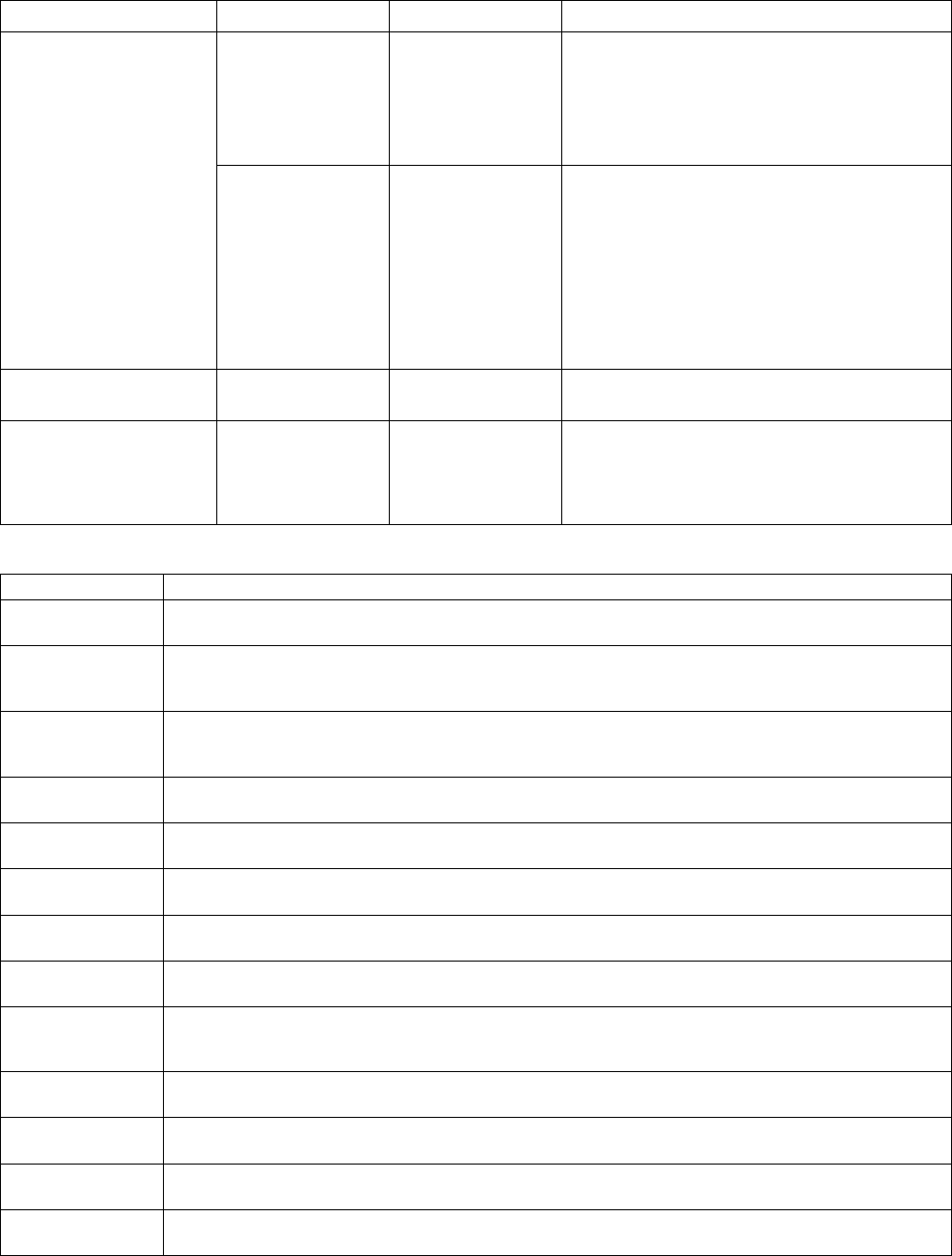
Energy Savings Scheme Rule of 2009
Effective from 19 June 2024
Page 89
Table A9.3: Other Equipment Classes for Lighting Upgrades
Equipment Class
Definition
T5 adaptor kit
Any equipment that enables a T8 or T12 Luminaire to accommodate or provide physical support to a T5 Lamp
or Luminaire.
Retrofit Luminaire -
LED Linear Lamp
A T5, T8 or T12 Luminaire that has been retrofitted with an LED linear Lamp in place of the linear fluorescent
Lamp. This cannot involve modification to the wiring of the Luminaire other than removal, replacement or
modification of the starter.
LED Lamp Only –
ELV
An LED Lamp that runs off an existing Extra-low voltage lighting converter (ELC) designed for retrofitting into
an existing Luminaire or Lamp holder. These are typically used as a replacement for ELV Tungsten halogen
Lamps.
LED Lamp Only –
240V Self Ballasted
A self-ballasted LED Lamp as defined by AS/NZS 62560 Self-ballasted LED lamps for general lighting services
by voltage > 50 V. These Lamps are connected directly to a 240V supply.
Induction Luminaire
A gas discharge Lamp in which the power required to generate light is transferred from outside the Lamp
envelope to the gas via electromagnetic induction.
LED Lamp and
Driver
A LED-reflector Lamp and matching LED Driver intended as an alternative to a Mirrored Reflector Halogen
Lamp.
Modified Luminaire
–LED Linear Lamp
A T5, T8 or T12 luminaire that has been modified for use with an LED linear Lamp. This involves modifying,
removing or rendering redundant any wiring or structure of the Luminaire, beyond the replacement of a starter.
LED Luminaire –
fixed type
An LED Luminaire intended for use as a fixed luminaire as defined in AS/NZS 60598.2.1 Luminaires –
Particular requirements – Fixed general purpose luminaires.
LED Luminaire –
Linear Lamp
An LED Luminaire intended for use as an alternative to a linear fluorescent Luminaire, where the Luminaire
houses a matching Linear LED tube or a linear array of integrated LEDs. Where the Luminaire uses a Linear
LED tube, the Luminaire must not be compatible with a linear fluorescent Lamp.
LED Luminaire –
floodlight
An LED Luminaire intended for use as a floodlight as defined in AS/NZS 60598.2.5 Luminaires – Particular
requirements – Floodlights.
LED Luminaire –
recessed
An LED Luminaire intended for use as a recessed luminaire as defined in AS/NZS 60598.2.2 Luminaires –
Particular requirements – Recessed luminaires.
LED Luminaire –
high/lowbay
An LED Luminaire intended for use as high-bay or low-bay lighting.
LED Luminaire –
streetlight
An LED Luminaire intended for use as a streetlight as defined in AS/NZS 60598.2.3 Particular requirements –
Luminaires for road and street lighting.
Equipment Class
Control Gear
LCP (Watts)
Notes
If the Incumbent Lamp is located outdoors (evidenced
to the satisfaction of the Scheme Administrator), the
LCP is to be calculated using the NLP of the
Incumbent Lamp.
Built In
NLP
If the Incumbent Lamp is located indoors and has an
NLP exceeding 450W, the LCP is to be calculated
using an NLP of 450W.
If the Incumbent Lamp is located outdoors (evidenced
to the satisfaction of the Scheme Administrator), the
LCP is to be calculated using the NLP of the
Incumbent Lamp.
High pressure sodium (HPS)
Lamp
Magnetic ballast
1.05 × NLP + 13
Lighting for Roads and
Public Spaces or Traffic
Signals (other than LED
lighting)
Built in or Independent
Lighting Load Table
Published by AEMO
or relevant regulator.
An entire traffic signal unit or Integrated Luminaire is
used as the basis for calculation, rather than individual
Lamps.
NSW Government Gazette
20 December 2023

Energy Savings Scheme Rule of 2009
Effective from 19 June 2024
Page 90
Equipment Class
Definition
LED Luminaire –
emergency lighting
An LED Luminaire intended for use as an Emergency lighting luminaire as defined in AS/NZS 60598.2.22
Particular requirements – Luminaires for emergency lighting.
LED Luminaire –
hospital use
An LED Luminaire intended for use in the clinical areas of a hospital or health care building as defined in
AS/NZS 60958.2.25 Particular requirements – Luminaires for use in clinical areas of hospitals and health care
buildings.
Other Emerging
Lighting Technology
Any lighting equipment not defined above.
NSW Government Gazette
20 December 2023
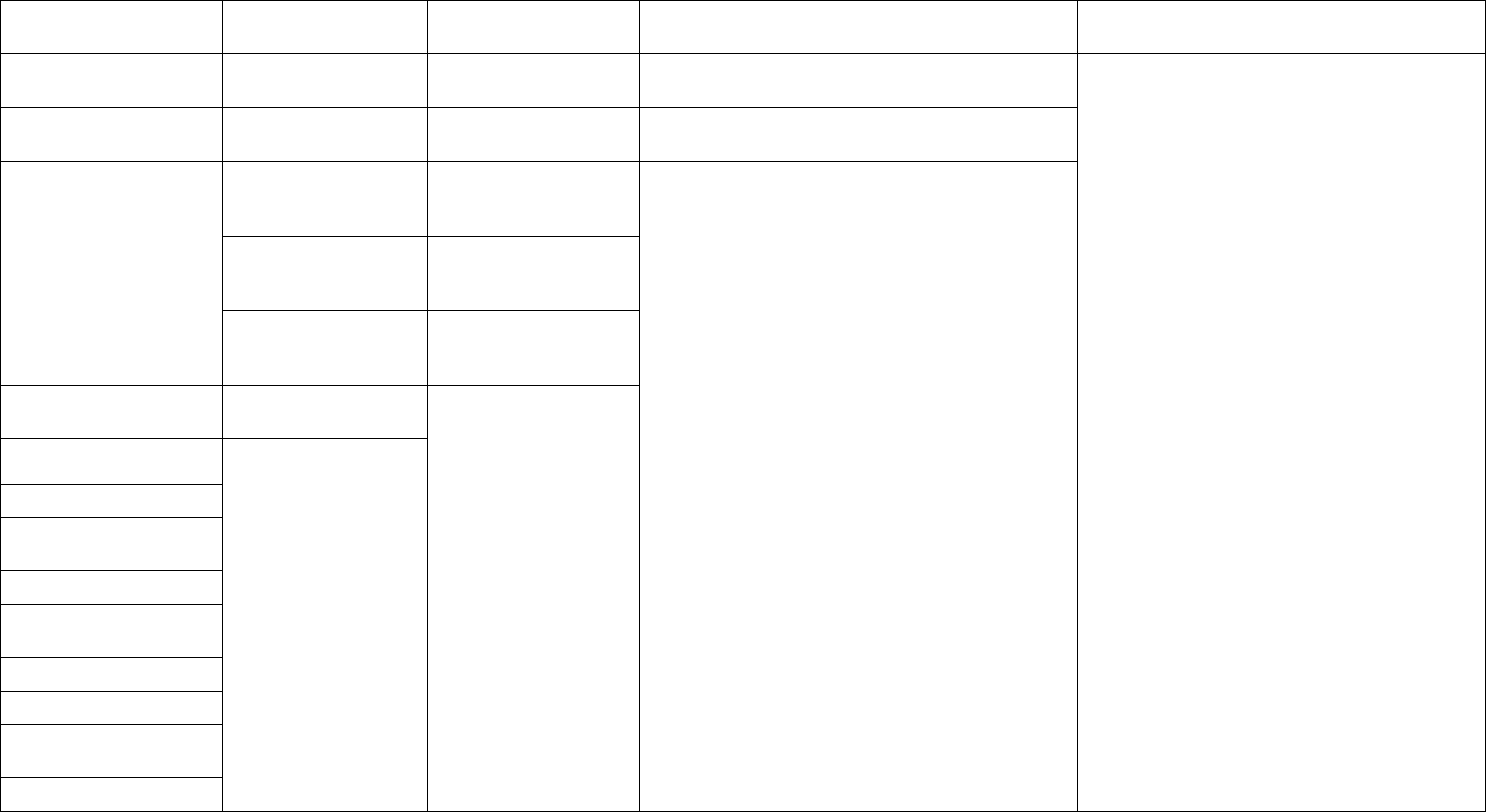
Energy Savings Scheme Rule of 2009
Effective from 19 June 2024
Page 91
Table A9.4: Lamp Circuit Power (LCP) values and Equipment Requirements for other Equipment Classes for Lighting Upgrades
Equipment Class
Control Gear
LCP Value
Equipment Requirement
(Equipment being installed)
Equipment Requirement
(Equipment being removed)
T5 Adaptor Kit
Not Applicable
(ineligible)
As Published by the
Scheme Administrator
Ineligible
Must demonstrate the LCP to the satisfaction of the
Scheme Administrator.
Retrofit Luminaire – LED
Linear Lamp
Not Applicable(ineligible)
As Published by the
Scheme Administrator
Ineligible
LED Lamp Only – ELV
Built In + Existing
Magnetic Transformer
(Excluding clause 9.8)
1.25 × NLP as Published
by Scheme Administrator
Must meet product requirements and minimum
performance specifications for Lamp Life, electro-
magnetic compatibility (where applicable), luminous
efficacy, power factor and LCP as evidenced by:
(a) a certification scheme accepted by the Scheme
Administrator, including but not limited to a Standard
Luminaire list; and
(b) test reports from an accredited laboratory, in
accordance with requirements Published by the
Scheme Administrator; or
(c) compliance with a relevant AS/NZS standard for the
relevant Equipment Class recognised by the Scheme
Administrator; or
(d) demonstrated product acceptance under schedules of
the VEU program recognised as relevant by the
Scheme Administrator including compliance with any
additional Equipment Requirements Published by the
Scheme Administrator.
Built In + Existing
Electronic Transformer
(Excluding clause 9.8)
1.08 × NLP as Published
by Scheme Administrator
Generic ballast (for use in
Activity Definition E1
only)
1.165 x NLP as Published
by Scheme Administrator
LED Lamp Only – 240V
Self Ballasted
Built In
As Published by the
Scheme Administrator
Induction Luminaire
Built In or Independent
LED Lamp and Driver
Modified Luminaire – LED
Linear Lamp
LED Luminaire – fixed type
LED Luminaire – Linear
Lamp
LED Luminaire – floodlight
LED Luminaire – recessed
LED Luminaire –
high/lowbay
LED Luminaire – streetlight
NSW Government Gazette
20 December 2023

Energy Savings Scheme Rule of 2009
Effective from 19 June 2024
Page 92
LED Luminaire –
emergency lighting
LED Luminaire – hospital
use
Other Emerging Lighting
Technology
NSW Government Gazette
20 December 2023

Energy Savings Scheme Rule of 2009
Effective from 19 June 2024
Page 93
Table A9.5: Control gear for Lighting Upgrades
Control Gear
Definition
Magnetic ballast
A Ferromagnetic ballast as defined in AS/NZS 4783 Performance of electrical lighting equipment
– Ballasts for fluorescent lamps
Electronic ballast
An A.C. supplied electronic ballast as defined in AS/NZS 4783 Performance of electrical lighting
equipment – Ballasts for fluorescent lamps
Magnetic ballast (reactor type)
An electromagnetic ballast that use an inductor or autotransformer to limit the current and provide
the voltage necessary to ignite the Lamp. These ballasts do not include any means of regulating
the light output.
Magnetic ballast (constant wattage
type)
An electromagnetic ballast that uses a combination of inductive and capacitive components to
provide a regulated power output (constant wattage) to the Lamp
Magnetic transformer
A magnetic isolating transformer as defined in AS/NZS 4879.1 Performance of transformers and
electronic step-down convertors for ELV lamps - Test method - Energy performance.
Electronic transformer
An electronic step-down convertor as defined in AS/NZS 4879.1 Performance of transformers and
electronic step-down convertors for ELV lamps - Test method - Energy performance.
Table A9.6: Default Lamp Life for Lighting Upgrades
Type of Lamp
Lamp Life (hours)
Standard equipment classes defined in Table A9.1
As per product labelling.
Other equipment classes defined in Table A9.3
As Published by the Scheme Administrator.
Table A10.1: Asset Lifetimes for Lighting Upgrades
Activity
Asset Lifetime (years)
Replacement of:
• Luminaire, or
• Control Gear (not
integrated into Lamp).
Refer to Table A10.6
Replacement of:
• Lamp Only.
Lamp Life ÷ Annual Operating Hours
(Where Lamp Life is measured in accordance with
Table A9.6 and is a maximum of 30,000 hours)
Maximum Asset Lifetime:
refer to Table A10.6
Installation of:
• Control System as listed
in Table A10.4
where the Lighting Upgrade only
consists of the installation of a
Control System
Maximum Asset Lifetime = 5 years
Table A10.2: Operating Hours for Lighting Upgrades by space type
Space Type
Annual Operating Hours (hours
per annum)
Building/Space Group
Auditorium, church and public hall
2,000
A (Others)
Board room and conference room
3,000
B (Office)
Carpark – general (undercover) and Car Park - entry zone
7,000
C (Industrial)
Carpark – general (open air)
4,500
C (Industrial)
Common rooms, spaces, corridors in a BCA Class 2 building
(including stairways and lift cars)
7,000
A (Others)
NSW Government Gazette
20 December 2023
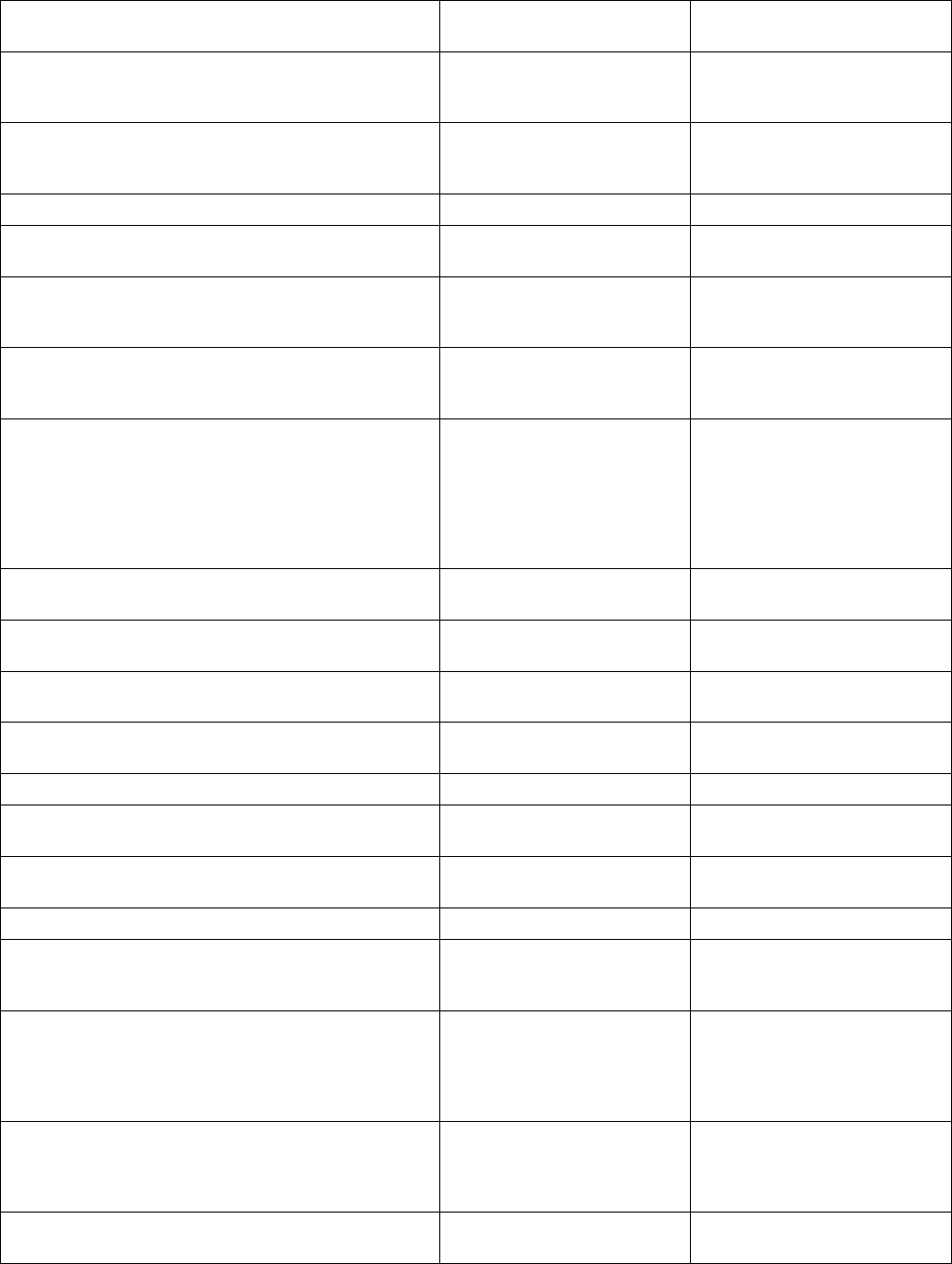
Energy Savings Scheme Rule of 2009
Effective from 19 June 2024
Page 94
Space Type
Annual Operating Hours (hours
per annum)
Building/Space Group
Control room, switch room, and the like – intermittent
monitoring and constant monitoring
Value in Table A10.3 for BCA
Classification of the surrounding
space
See Table A10.3
Corridors
Value in Table A10.3 for BCA
Classification of the surrounding
space
See Table A10.3
Courtroom
2,000
A (Others)
Dormitory of a BCA Class 3 building used for sleeping only
or sleeping and study
3,000
A (Others)
Entry lobby from outside the building
Value in Table A10.3 for BCA
Classification of the surrounding
space.
See Table A10.3
Health-care - children's ward, examination room, patient
ward, all patient care areas including corridors where
cyanosis lamps are used
6,000
A (Others)
Health and fitness centres and gymnasia operations, classified
as Division R (9111) in the Australian and New Zealand
Standard Industrial Classification
Note: this only includes health and fitness centres and
gymnasia operations that are membership-based, whose
members’ primary purpose is to frequent these operations
5,100
A (Others)
Kitchen and food preparation area
Value in Table A10.3 for BCA
Classification surrounding space
See Table A10.3
Laboratory - artificially lit to an ambient level of 400 lx or
more
3,000
A (Others)
Library - stack and shelving area, reading room and general
areas
3,000
A (Others)
Lounge area for communal use in a BCA Class 3 building or
BCA Class 9c aged care building
7,000
A (Others)
Un-Switched Maintained Emergency Luminaire
8,500
See Table A10.3
Switched Maintained Emergency Luminaire with a Control
System listed Table A10.4 or Table A10.4A
8,500
See Table A10.3
Museum and gallery - circulation, cleaning and service
lighting
2,000
A (Others)
Office
3,000
B (Office)
Plant room
Value in Table A10.3 for BCA
Classification of the surrounding
space
See Table A10.3
Restaurant, café, bar, hotel lounge and a space for the serving
and consumption of food or drinks that fall under Division H
- Accommodation and food services as defined in the
Australian and New Zealand Standard Industrial
Classification
5,000
D (Retail)
Restaurant, café, bar, hotel lounge and a space for the serving
and consumption of food or drinks that fall under Division R
– Arts and Recreation Services as defined in the Australian
and New Zealand Standard Industrial Classification
2,000
D (Retail)
Retail space including a museum and gallery whose purpose
is the sale of objects
5,000
D (Retail)
NSW Government Gazette
20 December 2023
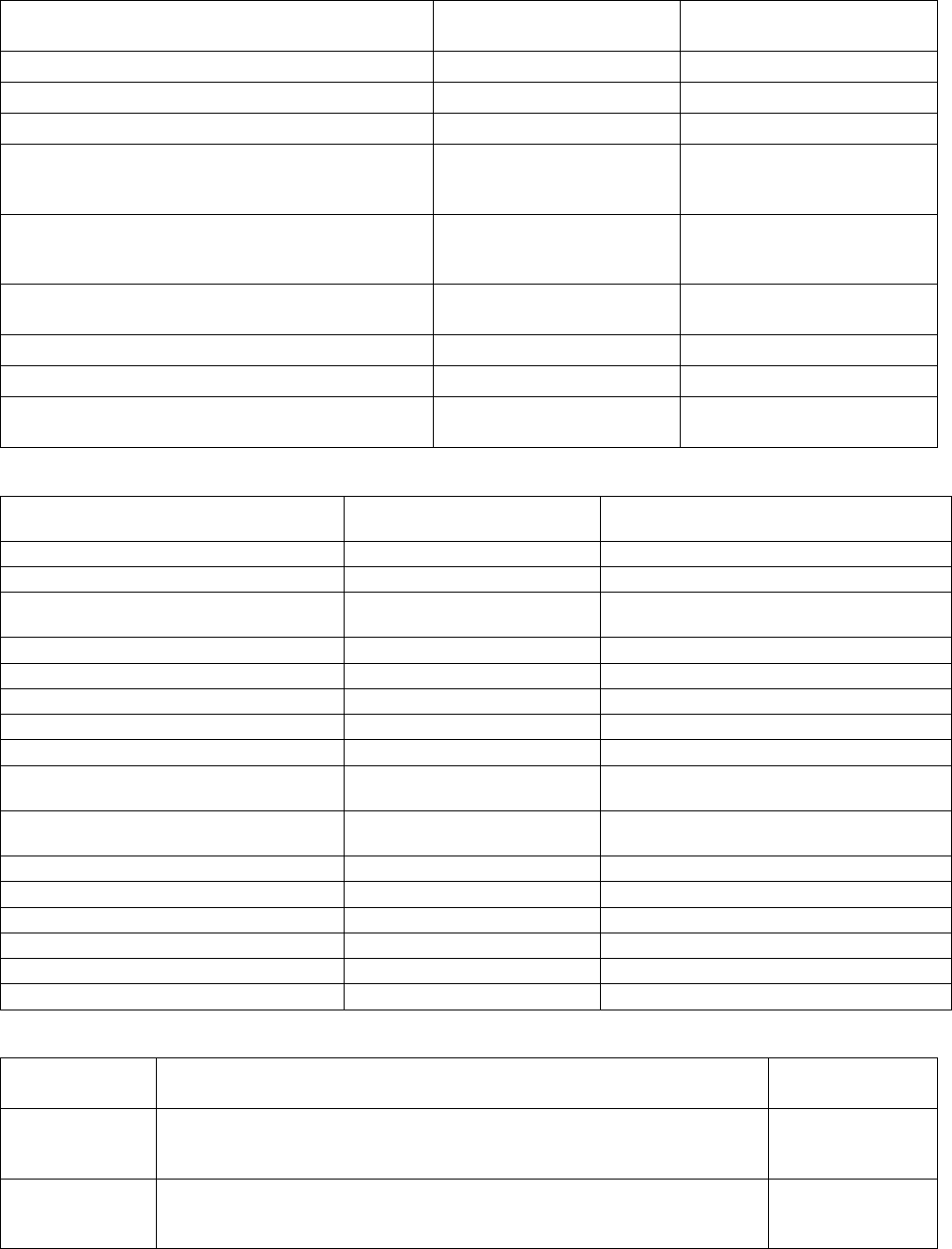
Energy Savings Scheme Rule of 2009
Effective from 19 June 2024
Page 95
Space Type
Annual Operating Hours (hours
per annum)
Building/Space Group
School - general purpose learning areas and tutorial rooms
3,000
A (Others)
Sole-occupancy unit of a BCA Class 3 or 9c building
3,000
A (Others)
Storage
5,000
A (Others)
Service area, cleaner's room and the like
Value in Table A10.3 for BCA
Classification of the surrounding
space
See Table A10.3
Toilet, locker room, staff room, rest room and the like
Value in Table A10.3 for BCA
Classification of the surrounding
space
See Table A10.3
Wholesale storage and display area with a vertical
illuminance target of 160 lx (including distribution centres)
5,000
C (Industrial)
Stairways, including fire-isolated stairways
See Table A10.3
See Table A10.3
Lift cars
See Table A10.3
See Table A10.3
Other spaces not defined above
Value in Table A10.3 for BCA
Classification of space
See Table A10.3
Table A10.3: Annual Operating Hours for Lighting Upgrades by building type
Building Classification
Annual Operating Hours (hours
per annum)
Building/Space Group
BCA Class 2 buildings (Common Areas)
7,000
A (Others)
BCA Class 3 buildings (Common Areas)
7,000
A (Others)
BCA Class 3 buildings (other than Common
Areas)
3,000
A (Others)
BCA Class 5 buildings
3,000
B (Office)
BCA Class 6 buildings
5,000
D (Retail)
BCA Class 7a buildings (open air car parks)
4,500
C (Industrial)
BCA Class 7a buildings (undercover car parks)
7,000
C (Industrial)
BCA Class 7b buildings
5,000
C (Industrial)
BCA Class 8 buildings (other than ANZSIC
Division C, Manufacturing)
3,000
A (Others)
BCA Class 8 buildings (ANZSIC Division C,
Manufacturing)
5,000
C (Industrial)
BCA Class 9a and 9c buildings
6,000
A (Others)
BCA Class 9b buildings
2,000
A (Others)
BCA Class 10a buildings
1,000
A (Others)
BCA Class 10b buildings
1,000
A (Others)
Roads and Public Spaces
4,500
E (Public)
Traffic Signals
8,760
E (Public)
Table A10.4: Control Systems and Control Multipliers for Lighting Upgrades
Control System
Definition
Control Multiplier
(CM)
Occupancy Sensor
Control device that uses a motion sensor to detect the presence of people in the Space
and adjusts the light output of the Luminaire. Each Occupancy Sensor must control a
maximum of 6 Luminaires.
0.7
Daylight-Linked
Control
Control device that uses a photoelectric cell to measure ambient daylight levels to
automatically vary Luminaire light output. Each Luminaire must be located close to a
significant source of daylight.
0.7
NSW Government Gazette
20 December 2023

Energy Savings Scheme Rule of 2009
Effective from 19 June 2024
Page 96
Control System
Definition
Control Multiplier
(CM)
(Not applicable to Carpark – general (open air) space type as referenced in Table A10.2
and BCA Class 7 (a) buildings (open air car parks) and Roads and Public Spaces
building type as referenced in Table A10.3)
Programmable
Dimming
Luminaire light output controlled by pre-selected light levels (scenes) which are
automatically selected according to time of day, photoelectric cell and/or Occupancy
Sensor. Scenes must reduce lighting power.
0.85
Manual Dimming
Control device that allows a user to control Luminaire light output using a knob, slider
or other manual input mechanism or by manually selecting a pre-programmed light level
(scene).
0.9
Multiple Control
Systems
Programmable Dimming and Manual Dimming
0.76
Any other combination of 2 or more control systems above.
0.6
Voltage Reduction
Units (VRU)
A control device that reduces the voltage applied to the Luminaire after start-up, when
used with appropriate Luminaires.
As approved by
Scheme Administrator
Specialised
Occupancy Sensor
An Occupancy Sensor defined in Table A10.4A
CM in Table A10.4A
as applicable
Table A10.4A: Occupancy Sensor Control Multipliers for Lighting Upgrades
Control System
Definition
Control
Multiplier
(CM) A
(See Definition
in 10.1)
Control
Multiplier
(CM) B
(See Definition in
10.1)
Occupancy Sensor 1
Control device that uses a motion sensor to detect the presence
of people in the Space and adjusts the light output of the
Luminaire. Each Occupancy Sensor must control a maximum
of 2 Luminaires.
0.55
0.55 + 0.45 *
(LCP
low power
/
LCP)
Occupancy Sensor 2 in a Carpark
– general (undercover) of a BCA
class 2, 5 and 7a building.
Control device that uses a motion sensor to detect the presence
of people in the parking area of a BCA class 2, 5 or 7a building
and adjusts the light output of the Luminaire.
0.3
0.3 + 0.7 *
(LCP
low power
/
LCP)
Occupancy Sensor 3 in the fire
stairs of a BCA class 2, 5 and 7a
building.
Control device that uses a motion sensor to detect the presence
of people in the fire stairs of a BCA class 2, 5 or 7a building
and adjusts the light output of the Luminaire.
0.15
0.15 + 0.85 *
(LCP
low power
/
LCP)
Occupancy Sensor 4 in a corridor
of a BCA class 2 building.
Control device that uses a motion sensor to detect the presence
of people in the corridor area of a BCA class 2 building and
adjusts the light output of the Luminaire.
0.25
0.25 + 0.75 *
(LCP
low power
/
LCP)
Table A10.5: Air-conditioning Multipliers for Lighting Upgrades
Space Air-conditioning system
Air-conditioning
Multiplier (AM)
Space air-conditioned during normal
operating hours by a refrigerant-based
air-conditioner.
1.07
Data Centre spaces air-conditioned by a
refrigerant-based air conditioner.
1.3
Refrigerated rooms
1.3
All other spaces
1
NSW Government Gazette
20 December 2023

Energy Savings Scheme Rule of 2009
Effective from 19 June 2024
Page 97
Table A10.6: Asset Lifetime (in years) by Building/Space Group
Building/Space Group
(See Table A10.2 and
A10.3)
Asset Lifetime for
Implementations
at a Regional Site
Asset Lifetime for all
other
Implementations
A (Others)
10.0
7.3
B (Office)
10.0
7.4
C (Industrial)
11.7
11.7
D (Retail)
10.0
7.4
E (Public)
12.0
12.0
Table A11: Default Efficiency Improvement (DEI) for High Efficiency Motors
Rated output (kW)
DEI by number of poles
2 poles
4 poles
6 poles
8 poles
0.73 to < 2.6
0.033
0.030
0.039
0.047
2.6 to < 9.2
0.021
0.020
0.024
0.027
9.2 to < 41
0.014
0.014
0.016
0.017
41 to <100
0.010
0.009
0.010
0.010
100 to < 185
0.008
0.007
0.008
0.008
NSW Government Gazette
20 December 2023
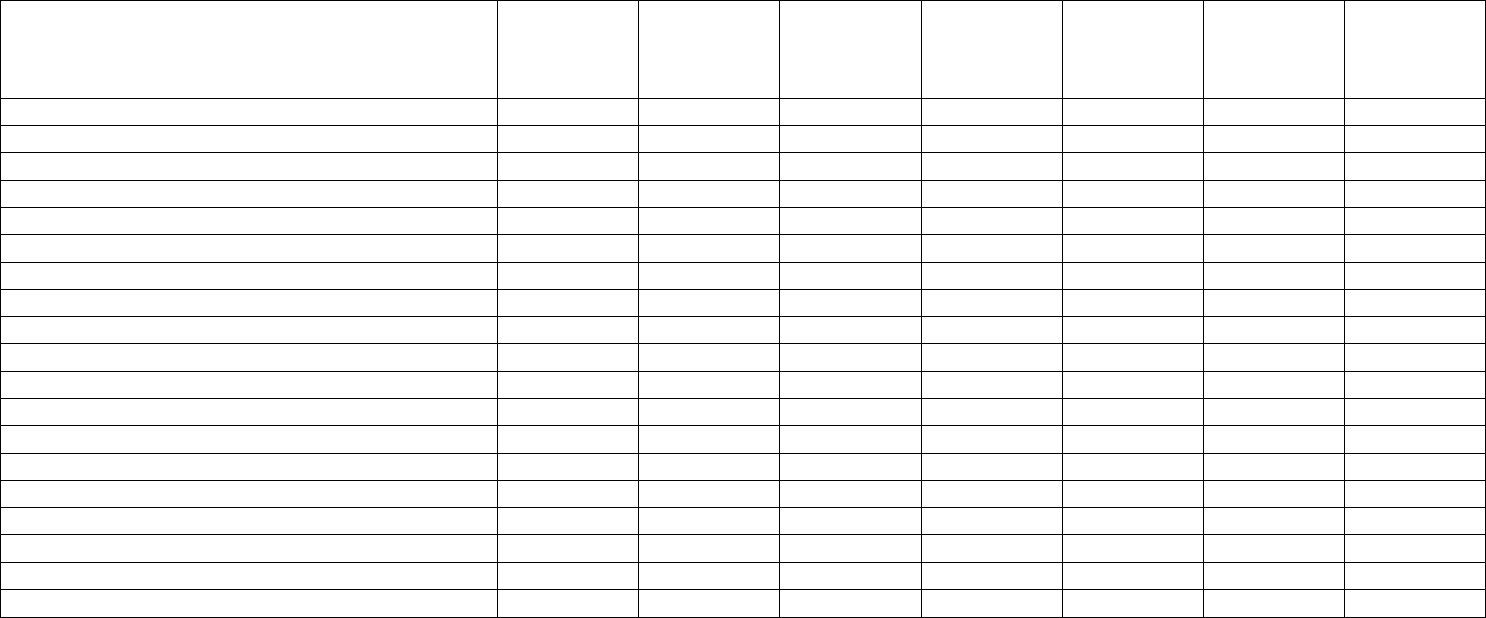
Energy Savings Scheme Rule of 2009
Effective from 19 June 2024
Page 98
Table A12: Default Load Utilisation Factor for High Efficiency Motors – Where Business Classification and End-Use Service are known
Load Utilisation Factor
Refrigeration
and freezing
Water/liquid
pumping
Air
compression
Air handling,
fans,
ventilation
Process Drives
Milling,
mixing,
grinding
Material
handling/
conveying
Division A Agriculture, Forestry and Fishing
0.14
0.32
0.27
0.28
0.32
0.2
0.2
Division B Mining
0.09
0.36
0.32
0.41
0.32
0.32
0.28
Division C Manufacturing
0.28
0.32
0.27
0.32
0.27
0.24
0.28
Division D Electricity, Gas, Water and Waste Services
0.11
0.32
0.24
0.28
0.28
0.12
0.17
Division E Construction
0.09
0.24
0.15
0.15
0.17
0.14
0.2
Division F Wholesale Trade
0.2
0.14
0.07
0.13
0.13
0.03
0.11
Division G Retail Trade
0.17
0.09
0.07
0.13
0.13
0.03
0.07
Division H Accommodation and Food Services
0.24
0.11
0.04
0.14
0.13
0.09
0.11
Division I Transport, Postal and Warehousing
0.17
0.11
0.08
0.13
0.17
0.03
0.16
Division J Information Media and Telecommunications
0.11
0.09
0.04
0.1
0.11
0.03
0.03
Division K Financial and Insurance Services
0.09
0.05
0.04
0.06
0.06
0.03
0.03
Division L Rental, Hiring and Real Estate Services
0.09
0.05
0.04
0.06
0.06
0.03
0.03
Division M Professional, Scientific and Technical Services
0.17
0.07
0.05
0.08
0.08
0.04
0.03
Division N Administrative and Support Services
0.11
0.05
0.04
0.06
0.04
0.03
0.03
Division O Public Administration and Safety
0.09
0.05
0.04
0.06
0.04
0.03
0.03
Division P Education and Training
0.11
0.05
0.04
0.06
0.04
0.03
0.03
Division Q Health Care and Social Assistance
0.11
0.08
0.11
0.06
0.06
0.03
0.03
Division R Arts and Recreation Services
0.09
0.05
0.04
0.06
0.04
0.03
0.03
Division S Other Services
0.07
0.05
0.04
0.06
0.04
0.03
0.03
NSW Government Gazette
20 December 2023
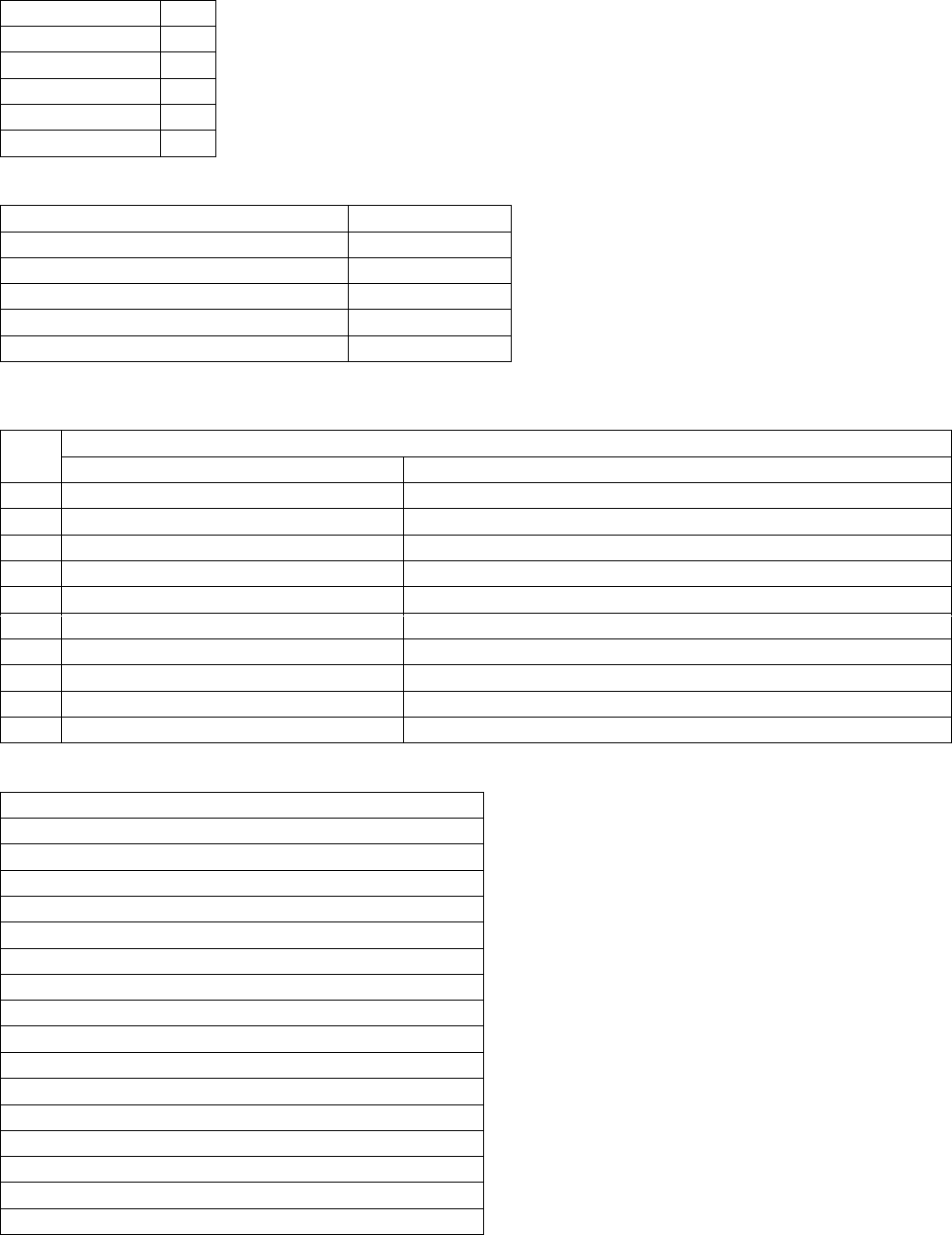
Energy Savings Scheme Rule of 2009
Effective from 19 June 2024
Page 99
Table A13: Default Load Utilisation Factor for High Efficiency Motors – Where Business Classification or End-Use Service
are not known
Rated output (kW)
LUF
0.73 to < 2.6
0.09
2.6 to < 9.2
0.10
9.2 to < 41
0.11
41 to < 100
0.13
100 to < 185
0.15
Table A14: Asset Life for High Efficiency Motors (t)
Rated output (kW) of High Efficiency Motor
t (Asset life (years))
0.73 to < 2.6
12
2.6 to < 9.2
15
9.2 to < 41
20
41 to < 100
22
100 to < 185
25
Table A16: Decay Factors for calculating future Energy Savings under the Project Impact Assessment Method (clause 7) or
the Project Impact Assessment with Measurement and Verification Method (clause 7A)
Year
Decay Factor
Energy Savings Calculated using clause 7
Default Decay Factor for Energy Savings calculated using clause 7A
1
1.00
1.00
2
0.80
0.80
3
0.60
0.64
4
0.40
0.51
5
0.20
0.41
6
Not applicable
0.33
7
Not applicable
0.26
8
Not applicable
0.21
9
Not applicable
0.17
10
Not applicable
0.13
Table A17: End-Use Services
End-Use Services
Air heating and cooling
Air handling, fans, ventilation
Water heating
Water/liquid pumping
Refrigeration and freezing
Lighting
Cooking
Home entertainment
Computers, office equipment
Communications
Cleaning, washing
Process heat
Air compression
Process drives
Milling, mixing, grinding
Transport
NSW Government Gazette
20 December 2023

Energy Savings Scheme Rule of 2009
Effective from 19 June 2024
Page 100
End-Use Services
People movement, lifts, escalators
Materials handling, conveying
Other machines
Electricity supply
Unknown
Other End-Use Services as Published by the Scheme Administrator
Table A18: Business Classifications
Business Classification
A Agriculture, Forestry and Fishing
B Mining
C Manufacturing
D Electricity, Gas, Water and Waste Services
E Construction
F Wholesale Trade
G Retail Trade
H Accommodation and Food Services
I Transport, Postal and Warehousing
J Information Media and Telecommunications
K Financial and Insurance Services
L Rental, Hiring and Real Estate Services
M Professional, Scientific and Technical Services
N Administrative and Support Services
O Public Administration and Safety
P Education and Training
Q Health Care and Social Assistance
R Arts and Recreation Services
S Other Services
Residential
Unknown
Table A19: Distribution Loss Factors (DLF) for losses between the Subtransmission network and Low Voltage connection points
Distributor
Distribution District
DLF
Endeavour Energy
Endeavour Energy
1.054
Essential Energy
Essential Energy
1.074
AusGrid
AusGrid
1.043
NSW Government Gazette
20 December 2023
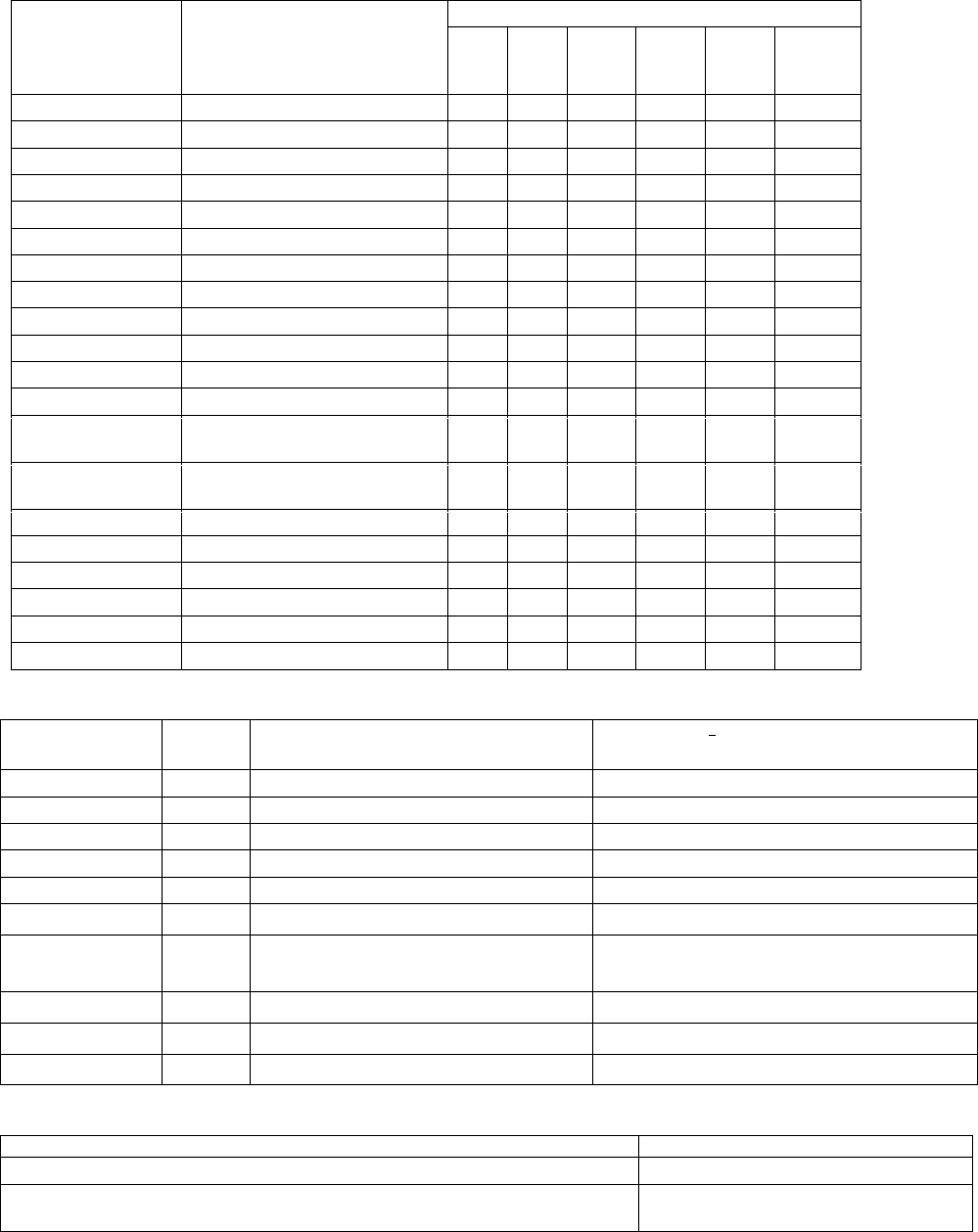
Energy Savings Scheme Rule of 2009
Effective from 19 June 2024
Page 101
Table A20: Benchmark NABERS Ratings Index
NABERS Rating
tool
Building category
Year of NABERS Rating Period End Date
2015
2016
2017
2018
2019
2020
and
onwards
Offices
Built prior to 1 November 2006
4.0
4.0
4.5
4.5
4.5
4.5
Offices
Built on or after 1 November 2006
5.0
5.0
5.5
5.5
5.5
5.5
Hotels
Built prior to 1 November 2006
3.0
3.5
3.5
3.5
3.5
3.5
Hotels
Built on or after 1 November 2006
4.0
4.5
4.5
4.5
4.5
4.5
Shopping Centres
Built prior to 1 November 2006
3.5
4.0
4.0
4.0
4.0
4.0
Shopping Centres
Built on or after 1 November 2006
4.5
5.0
5.0
5.0
5.0
5.0
Data Centres
Built prior to 1 November 2006
3.5
3.5
3.5
4.0
4.0
4.0
Data Centres
Built on or after 1 November 2006
4.5
4.5
4.5
5.0
5.0
5.0
Hospitals
Built prior to 1 November 2006
3.0
3.0
3.5
3.5
3.5
3.5
Hospitals
Built on or after 1 November 2006
4.0
4.0
4.5
4.5
4.5
4.5
Apartment Buildings
Built prior to 1 November 2006
3.0
3.0
3.0
3.5
3.5
3.5
Apartment Buildings
Built on or after 1 November 2006
4.0
4.0
4.0
4.5
4.5
4.5
Residential Aged
Care
Built prior to 1 November 2006
3.0
Residential Aged
Care
Built on or after 1 November 2006
3.5
Retirement Living
Built prior to 1 November 2006
3.0
Retirement Living
Built on or after 1 November 2006
3.0
Warehouses
Built prior to 1 November 2006
3.0
Warehouses
Built on or after 1 November 2006
3.0
Cold Storage
Built prior to 1 November 2006
3.0
Cold Storage
Built on or after 1 November 2006
3.5
Table A21: NABERS Annual Ratings Adjustment
NABERS Rating
tool
Building
category
Annual rating adjustment for Historical
Baseline NABERS Rating that is 1 year old.
Annual ratings adjustment for Historical Baseline
NABERS Rating that is 2 - 7 years old.
Offices
All
0
0.09
Hotels
All
0
0.04
Shopping Centres
All
0
0.13
Data Centres
All
0
0.04
Hospitals
All
0
0.04
Apartment Buildings
All
0
0
Residential Aged
Care
All
0
0
Retirement Living
All
0
0
Warehouses
All
0
0
Cold Storage
All
0
0
Table A22: Minimum statistical requirements that must be met when using Regression Analysis
Modelling Criteria
Minimum Requirement
t-statistic of Independent Variable
Absolute Value > 2
Adjusted Coefficient of Determination (Adjusted R
2
) and Coefficient of Variation of
the Root Mean Square Error (CV
RMSE
)
CV
RMSE
< 0.25 for Adjusted R
2
0.5
CV
RMSE
< 0.1 for Adjusted R
2
< 0.5
NSW Government Gazette
20 December 2023
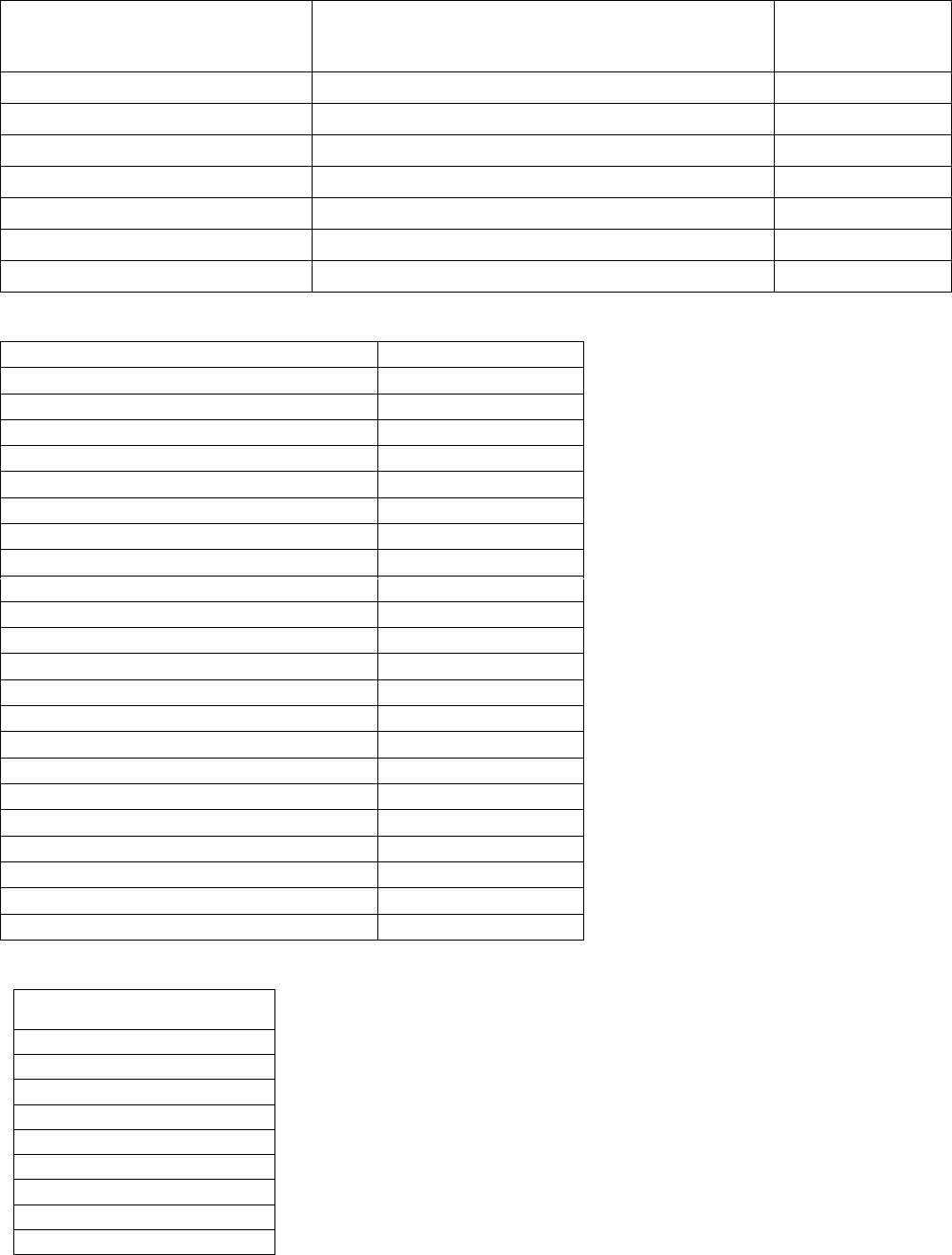
Energy Savings Scheme Rule of 2009
Effective from 19 June 2024
Page 102
Table A23: Accuracy Factor according to energy model type and relative precision of Energy Savings estimate
Relative precision of Electricity Savings
or Gas Savings estimate at a 90%
confidence level
Accuracy Factor if an energy model developed under clause
7A.2 (a)(i) is used for the Baseline Energy Model or
Operating Energy Model or both
Accuracy Factor for
all other energy
models
< 25%
0.9
1
25% - 50%
0.8
0.9
50% - 75%
0.7
0.8
75% - 100%
0.5
0.6
100% - 150%
0.3
0.4
150% - 200%
0.1
0.2
> 200%
0
0
Table A24: Regional Network Factors
Postcode of Site where Implementation occurred
Regional Network Factor
2311-2312
1.03
2321
1.03
2324
1.03
2329
1.03
2338-2490
1.03
2536-2537
1.03
2545-2551
1.03
2579-2594
1.03
2611
1.03
2618-2739
1.03
2787
1.03
2791-2844
1.03
2850-2880
1.03
3644
1.03
3691
1.03
3707
1.03
4375
1.03
4377
1.03
4380
1.03
4383
1.03
4385
1.03
All other postcodes
1
Table A25: Metropolitan Levy Area by postcode
Metropolitan Levy Area
postcodes
2000-2011
2015-2050
2052
2060-2077
2079-2090
2092-2097
2099-2122
2125-2148
2150-2168
NSW Government Gazette
20 December 2023

Energy Savings Scheme Rule of 2009
Effective from 19 June 2024
Page 103
2170-2179
2190-2200
2203-2214
2216-2234
2250-2251
2256-2265
2267
2278
2280-2287
2289-2300
2302-2308
2314-2327
2334-2335
2500
2502
2505-2506
2508
2515-2519
2525-2530
2533-2536
2538-2541
2555-2560
2563-2567
2570
2571
2575-2579
2622
2745
2747-2750
2753-2763
2765-2770
2775
Table A26: BCA Climate Zones by postcode
Postcodes
BCA Climate Zone
2000
5
2006-2011
5
2015-2050
5
2052
5
2060-2077
5
2079-2097
5
2099-2123
5
2125-2128
5
2130-2144
5
2145-2148
6
2150-2154
5
2155-2159
6
2160-2163
5
2164-2168
6
NSW Government Gazette
20 December 2023

Energy Savings Scheme Rule of 2009
Effective from 19 June 2024
Page 104
Postcodes
BCA Climate Zone
2170-2179
6
2190-2200
5
2203-2214
5
2216-2234
5
2250-2251
5
2256-2265
5
2267
5
2278
5
2280-2287
5
2289-2300
5
2302-2309
5
2311
5
2312
2
2314-2319
5
2320
6
2321
5
2322
6
2323
5
2324
2
2325-2327
6
2328-2329
7
2330-2331
6
2333
7
2334-2335
6
2336-2341
7
2342
4
2343-2347
7
2350-2355
7
2356-2357
4
2358
7
2359
4
2360-2361
7
2365
7
2369-2371
7
2372
4
2379
4
2380-2382
7
2386-2388
4
2390
4
2395-2402
4
2403-2404
7
2405
3
2406
4
2408-2411
4
2415
6
NSW Government Gazette
20 December 2023

Energy Savings Scheme Rule of 2009
Effective from 19 June 2024
Page 105
Postcodes
BCA Climate Zone
2420-2422
6
2423
2
2424-2425
6
2426-2430
5
2431
2
2439
5
2440-2441
2
2443-2446
5
2447-2450
2
2452
2
2453
7
2454-2456
2
2460
2
2462-2466
2
2469-2475
2
2476
7
2477-2490
2
2500
5
2502
5
2505-2506
5
2508
5
2515-2519
5
2522
5
2525-2526
5
2527
6
2528
5
2529
5
2530
5
2533-2541
6
2545-2546
6
2548-2551
6
2555-2560
6
2563-2574
6
2575
7
2576
6
2577-2583
7
2584-2586
4
2587
7
2588
4
2590
4
2594
7
2611
7
2618-2623
7
2624-2625
8
2626
7
NSW Government Gazette
20 December 2023

Energy Savings Scheme Rule of 2009
Effective from 19 June 2024
Page 106
Postcodes
BCA Climate Zone
2627
8
2628
7
2629
8
2630-2633
7
2640-2648
4
2649
7
2650-2652
4
2653
7
2655-2656
4
2658-2661
4
2663
4
2665-2666
4
2668-2669
4
2671-2672
4
2675
4
2678
4
2680-2681
4
2700-2703
4
2705-2707
4
2710-2717
4
2720
7
2721-2722
4
2725-2727
4
2729
4
2730
7
2731-2739
4
2745
6
2747-2750
6
2752-2754
6
2756-2763
6
2765-2770
6
2773-2775
6
2776
7
2777
6
2778-2780
7
2782-2787
7
2790-2793
7
2794
4
2795
7
2797-2800
7
2803
7
2804-2806
4
2807
7
2808-2810
4
2817-2818
4
NSW Government Gazette
20 December 2023

Energy Savings Scheme Rule of 2009
Effective from 19 June 2024
Page 107
Postcodes
BCA Climate Zone
2820-2836
4
2838-2840
4
2842-2844
4
2845-2850
7
2852
4
2864
4
2865-2867
7
2868-2871
4
2873-2880
4
2890
2
2898-2899
2
3644
4
3691
4
3707
7
4375
6
4377
6
4380
6
4383
6
4385
4
All other NSW
postcodes excluding
Post Office Boxes
5
Table A27: AS/NZS 3823.4 Climate Zone Definition by Post Code
Postcodes
AS/NZS 3823.4 Climate Zone
1639
Average
2000
Average
2006-2011
Average
2015-2050
Average
2052
Average
2060-2077
Average
2079-2090
Average
2092-2097
Average
2099-2123
Average
2125-2128
Average
2130-2148
Average
2150-2168
Average
2170-2179
Average
2190-2200
Average
2203-2214
Average
2216-2234
Average
2250-2251
Average
2256-2265
Average
2267
Average
2278
Average
2280-2287
Average
2289-2300
Average
2302-2309
Average
2311-2312
Average
2314-2327
Average
2328-2329
Cold
2330-2331
Average
2333
Cold
NSW Government Gazette
20 December 2023

Energy Savings Scheme Rule of 2009
Effective from 19 June 2024
Page 108
Postcodes
AS/NZS 3823.4 Climate Zone
2334-2335
Average
2336-2347
Cold
2350-2361
Cold
2365
Cold
2369-2372
Cold
2379-2382
Cold
2386-2388
Average
2390
Average
2395-2396
Cold
2397-2402
Average
2403-2404
Cold
2405-2406
Average
2408-2411
Average
2415
Average
2420-2431
Average
2439-2441
Average
2443-2450
Average
2452
Average
2453
Cold
2454-2456
Average
2460
Average
2462-2466
Average
2469-2474
Average
2475-2476
Cold
2477-2479
Hot
2480
Average
2481-2490
Hot
2500
Average
2502
Average
2505-2506
Average
2508
Average
2515-2519
Average
2522
Average
2525-2526
Average
2527
Cold
2528
Average
2529
Cold
2530
Average
2533-2541
Cold
2545-2546
Cold
2548-2551
Cold
2555-2560
Average
2563-2574
Average
2575-2588
Cold
2590
Cold
2594
Cold
2600-2607
Cold
2609
Cold
2611-2612
Cold
2614-2615
Cold
2617-2633
Cold
2640-2647
Cold
2648
Average
2649-2653
Cold
2655-2656
Cold
2658-2661
Cold
2663
Cold
2665-2666
Cold
2668
Cold
2669
Average
2671
Cold
NSW Government Gazette
20 December 2023

Energy Savings Scheme Rule of 2009
Effective from 19 June 2024
Page 109
Postcodes
AS/NZS 3823.4 Climate Zone
2672
Average
2675
Average
2680-2681
Average
2700
Average
2701-2702
Cold
2703
Average
2705-2707
Average
2710-2711
Average
2712
Cold
2713-2717
Average
2720-2722
Cold
2725-2727
Cold
2729-2730
Cold
2730-2739
Average
2745
Average
2747-2750
Average
2752-2763
Average
2765-2770
Average
2773-2775
Average
2776
Cold
2777
Average
2778-2780
Cold
2782-2787
Cold
2790-2795
Cold
2797-2800
Cold
2803-2810
Cold
2820-2821
Cold
2823-2825
Cold
2827-2830
Cold
2831-2836
Average
2839-2840
Average
2842-2850
Cold
2852
Cold
2864-2871
Cold
2873-2876
Cold
2877-2880
Average
2898-2899
Average
3500
Average
3585-3586
Average
3644
Cold
3707
Cold
All other NSW
postcodes
Excluding PO boxes
Average
Table A28: Full fuel cycle greenhouse gas emissions factors
Eligible Fuel
CO
2
kg/MWh
Electricity
810
Gas
233
Diesel
265
Biomass
40
Biofuels
70
Biogas
100
NSW Government Gazette
20 December 2023

Energy Savings Scheme Rule of 2009
Effective from 19 June 2024
Page 110
Schedule B – Activity Definitions for the Sale of New Appliances (clause 9.3)
Activity Definition B1
Name of Activity
SELL A HIGH EFFICIENCY CLOTHES WASHING MACHINE
Equipment Requirements
1. The End-User Equipment must be a Clothes Washing Machine as defined in AS/NZS 2040:2005 Performance of household
electrical appliances—Clothes washing machines.
2. The Clothes Washing Machine must be registered for energy labelling.
3. The Clothes Washing Machine must be either a top loader or a front loader.
4. The Clothes Washing Machine must have a load (in kilograms), recorded in the GEMS Registry.
5. If the Clothes Washing Machine is a combination washer/dryer, only the Energy Star Rating and load for the wash cycle may
be used to calculate the Deemed Equipment Electricity Savings.
Equipment Electricity Savings
Energy Star
Rating
Deemed Equipment Electricity Savings (MWh per washing machine sold)
Load > 4kg to ≤ 6.5kg
Load > 6.5kg to ≤ 7kg
Load > 7kg to ≤ 7.5kg
Load > 7.5kg
4.0
2.5
-
-
-
4.5
2.9
-
1.2
-
5.0
3.3
2.1
1.7
1.7
5.5
3.7
2.6
2.2
2.3
≥6.0
4.0
2.9
2.6
2.7
Lifetime (for information purposes only)
Lifetime = 10 years.
NSW Government Gazette
20 December 2023
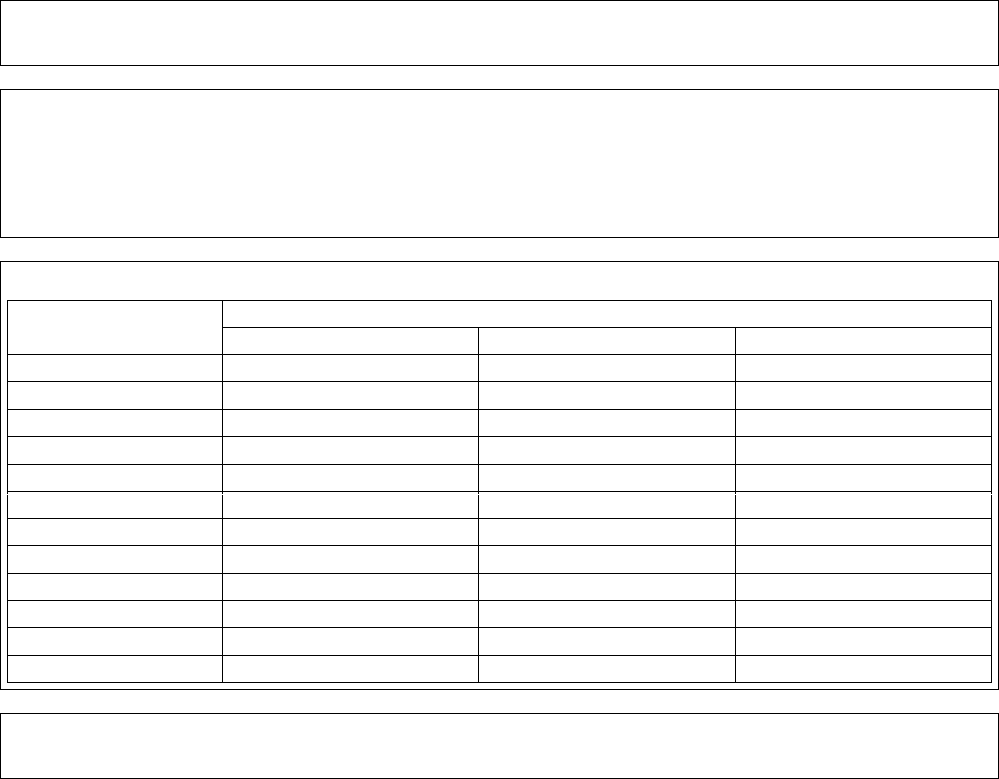
Energy Savings Scheme Rule of 2009
Effective from 19 June 2024
Page 111
Activity Definition B2
Name of Activity
SELL A HIGH EFFICIENCY CLOTHES DRYER
Equipment Requirements
1. The End-User Equipment must be a Clothes Dryer as defined by “Rotary clothes dryer” in AS/NZS 2442.1 and 2442.2
Performance of household electrical appliances—Rotary clothes dryers.
2. The Clothes Dryer must be registered for energy labelling.
3. The Clothes Dryer must not form part of a combination washer/dryer.
4. The Clothes Dryer must have a load (in kilograms), recorded in the GEMS Registry.
Equipment Electricity Savings
Energy Star Rating
Deemed Equipment Electricity Savings (MWh per clothes dryer sold)
Load < 5kg
Load ≥ 5kg to <8kg
Load ≥ 8kg
2.5
0.1
3.0
0.2
-
-
3.5
0.4
-
-
4.0
0.5
-
-
4.5
0.6
-
-
5.0
0.7
-
-
5.5
0.8
-
-
6.0
0.8
1.1
-
7.0
1.0
1.3
0.6
8.0
1.1
1.5
0.9
9.0
1.2
1.6
1.1
10.0
1.3
1.7
1.3
Lifetime (for information purposes only)
Lifetime = 10 years.
NSW Government Gazette
20 December 2023
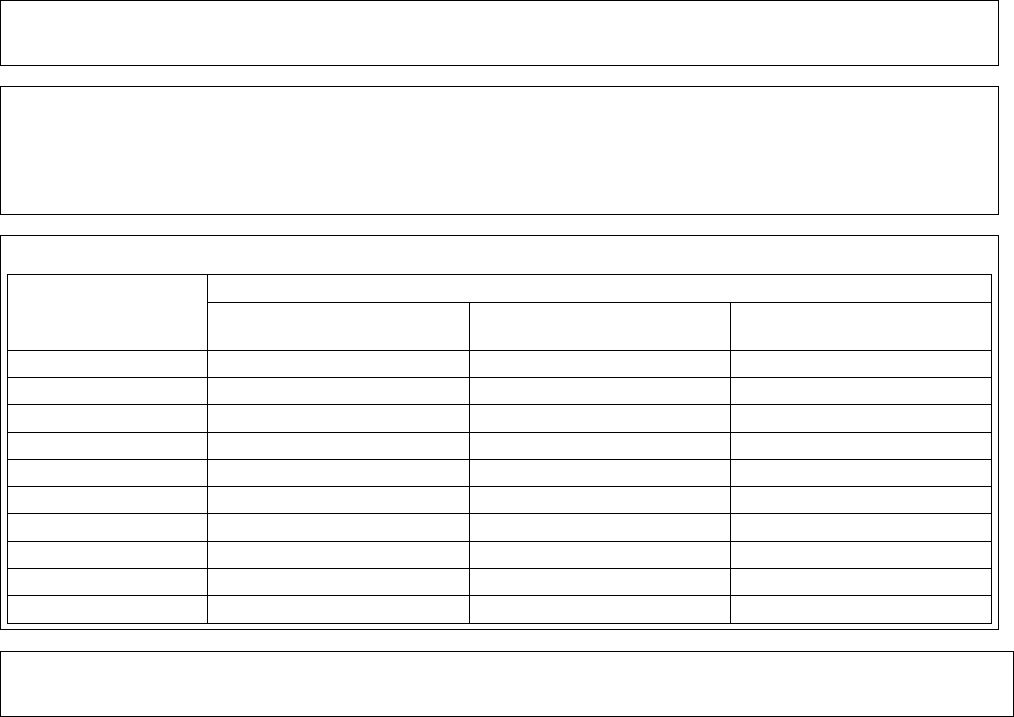
Energy Savings Scheme Rule of 2009
Effective from 19 June 2024
Page 112
Activity Definition B3
Name of Activity
SELL A HIGH EFFICIENCY DISHWASHER
Equipment Requirements
1. The End-User Equipment must be a Dishwasher as defined in AS/NZS 2007 Performance of household electrical appliances—
Dishwashers.
2. The Dishwasher must be registered for energy labelling.
3. The Dishwasher must have a number of place settings recorded in the GEMS Registry.
Equipment Electricity Savings
Energy Star Rating
Deemed Equipment Electricity Savings (MWh per dishwasher sold)
< 9 place settings
≥ 9 place settings to < 13 place
settings
≥ 13 place settings
3.5
0.1
0.4
-
4.0
0.3
0.8
-
4.5
0.5
1.1
0.9
5.0
0.7
1.4
1.2
5.5
0.8
1.6
1.5
6.0
0.9
1.8
1.7
7.0
1.1
2.0
2.0
8.0
1.2
2.2
2.3
9.0
1.3
2.4
2.4
10.0
1.3
2.5
2.5
Lifetime (for information purposes only)
Lifetime = 10 years.
NSW Government Gazette
20 December 2023
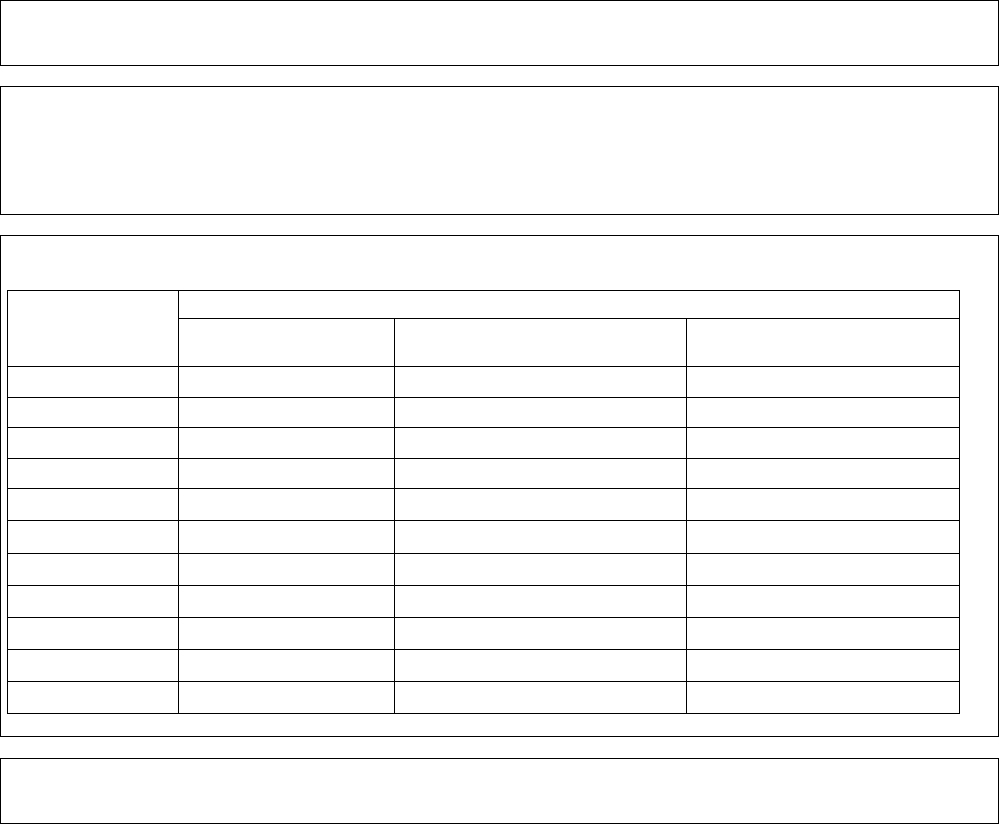
Energy Savings Scheme Rule of 2009
Effective from 19 June 2024
Page 113
Activity Definition B4
Name of Activity
SELL A HIGH EFFICIENCY 1-DOOR REFRIGERATOR
Equipment Requirements
1. The End-User Equipment must be a 1-door Refrigerator of Groups 1, 2, or 3 as defined in AS/NZS 4474.1 and 4474.2
Performance of household electrical appliances—Refrigerating appliances.
2. The Refrigerator must be registered for energy labelling.
3. The Refrigerator must have a total volume (in litres) recorded in the GEMS Registry.
Equipment Electricity Savings
Energy Star Rating
Deemed Equipment Electricity Savings (MWh per refrigerator sold)
Total volume < 200 litres
Total volume ≥200 litres to < 250
litres
Total volume ≥ 250 litres
3.0
-
0.5
-
3.5
0.7
0.8
0.1
4.0
0.9
1.1
0.4
4.5
1.1
1.3
0.7
5.0
1.3
1.5
1.0
5.5
1.4
1.7
1.2
6.0
1.6
1.8
1.4
7.0
1.8
2.1
1.7
8.0
2.0
2.3
1.9
9.0
2.1
2.5
2.1
10.0
2.2
2.6
2.3
Lifetime (for information purposes only)
Lifetime = 12 years.
NSW Government Gazette
20 December 2023

Energy Savings Scheme Rule of 2009
Effective from 19 June 2024
Page 114
Activity Definition B5
Name of Activity
SELL A HIGH EFFICIENCY REFRIGERATOR WITH 2 OR MORE DOORS
Equipment Requirements
1. The End-User Equipment must be a 2 door or above Refrigerator of Groups 4, 5B, 5T or 5S as defined in AS/NZS 4474.1 and
4474.2 Performance of household electrical appliances—Refrigerating appliances.
2. The Refrigerator must be registered for energy labelling.
3. The Refrigerator must have a total volume (in litres) recorded in the GEMS Registry.
Equipment Electricity Savings
Energy Star
Rating
Deemed Equipment Electricity Savings (MWh per refrigerator sold)
Total volume < 300
litres
Total volume ≥ 300
litres to < 450 litres
Total volume ≥ 450
litres to < 550 litres
Total volume ≥ 550 litres
3.5
0.6
-
-
-
4.0
1.0
0.8
-
1.3
4.5
1.3
1.3
-
1.9
5.0
1.6
1.7
0.8
2.4
5.5
1.9
2.0
1.2
2.9
6.0
2.1
2.4
1.6
3.3
7.0
2.5
2.9
2.1
3.9
8.0
2.8
3.2
2.6
4.5
9.0
3.1
3.5
2.9
4.9
10.0
3.2
3.8
3.2
5.2
Lifetime (for information purposes only)
Lifetime = 12 years.
NSW Government Gazette
20 December 2023
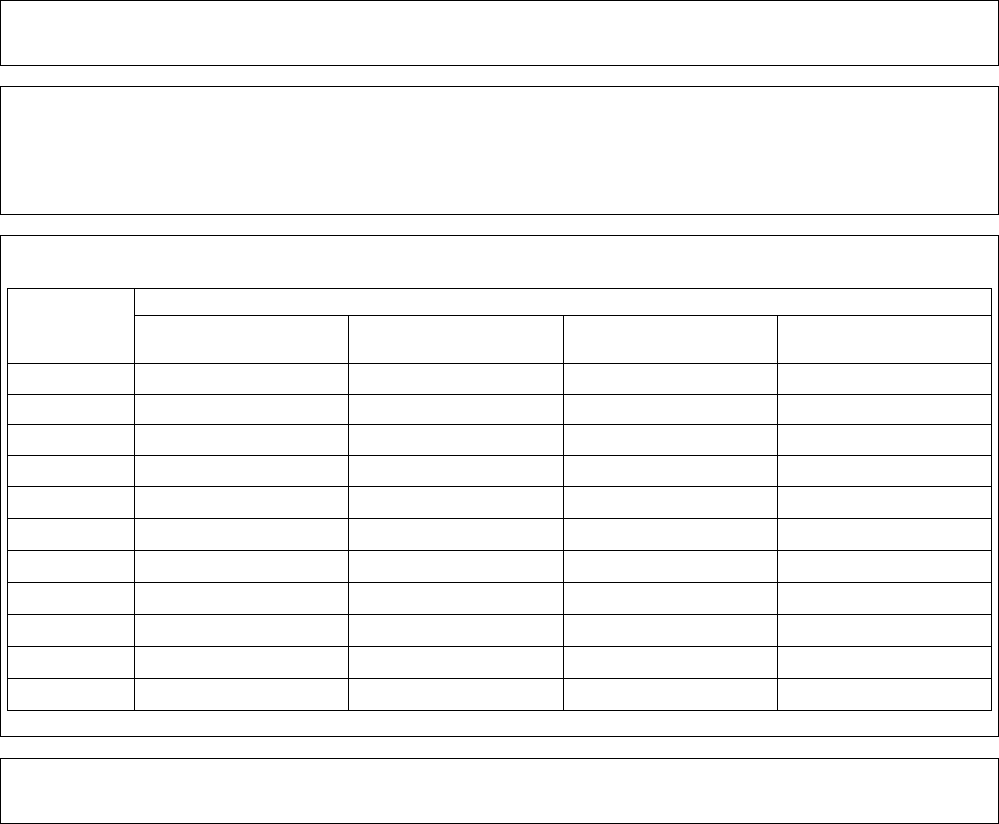
Energy Savings Scheme Rule of 2009
Effective from 19 June 2024
Page 115
Activity Definition B6
Name of Activity
SELL A HIGH EFFICIENCY CHEST FREEZER OR UPRIGHT FREEZER
Equipment Requirements
1. The End-User Equipment must be a Chest Freezer or Upright Freezer of Groups 6C, 6U or 7 as defined in AS/NZS 4474.1 and
4474.2:2009 Performance of household electrical appliances—Refrigerating appliances.
2. The Freezer must be registered for energy labelling.
3. The Freezer must have a total volume (in litres) recorded in the GEMS Registry.
Equipment Electricity Savings
Energy Star
Rating
Deemed Equipment Electricity Savings (MWh per freezer sold)
Total volume < 150 litres
Total volume ≥ 150 litres
to < 300 litres
Total volume ≥ 300 litres
to < 500 litres
Total volume ≥ 500 litres
3.0
-
-
-
0.9
3.5
0.2
0.6
0.9
1.6
4.0
0.6
1.0
1.5
2.2
4.5
0.8
1.4
1.9
2.8
5.0
1.1
1.7
2.3
3.3
5.5
1.3
1.9
2.7
3.7
6.0
1.4
2.2
3.0
4.1
7.0
1.7
2.5
3.5
4.8
8.0
2.0
2.8
3.9
5.2
9.0
2.1
3.1
4.2
5.6
10.0
2.3
3.2
4.4
5.9
Lifetime (for information purposes only)
Lifetime = 12 years.
NSW Government Gazette
20 December 2023
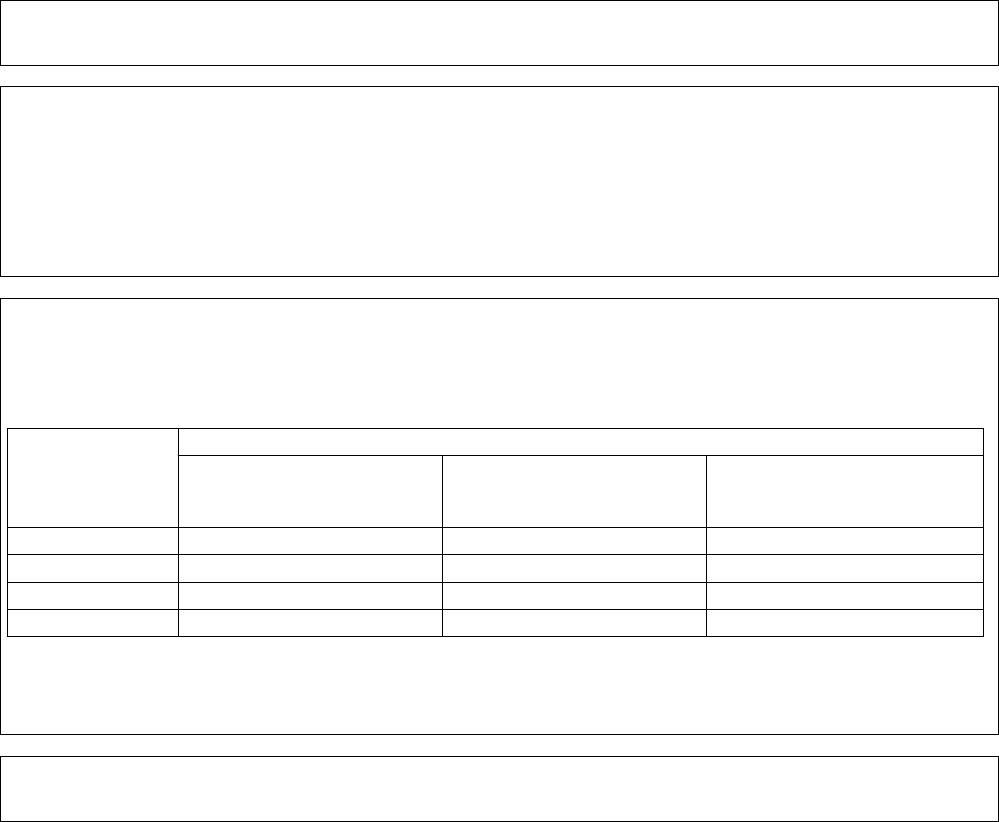
Energy Savings Scheme Rule of 2009
Effective from 19 June 2024
Page 116
Activity Definition B7
Name of Activity
SELL A HIGH EFFICIENCY TELEVISION
Equipment Requirements
1. The End-User Equipment must be a Television as defined in AS/NZS 62087.1 Power consumption of audio, video and related
equipment; and 62087.2.2:2011 Power consumption of audio, video and related equipment—Minimum energy performance
standards (MEPS) and energy rating label requirements for Television Sets.
2. The Television must be registered for energy labelling.
3. The Television must have a screen size (in centimetres), recorded in the GEMS Registry.
4. The Energy Star Rating refer to Tier 2 MEPS and labelling as set out in AS/NZS 62087.2.2:2011 and the Greenhouse and
Energy Minimum Standards (Television) Determination 2013 (No. 2).
Equipment Electricity Savings
Energy Star Rating
Deemed Equipment Electricity Savings (MWh per television sold)
Screen size
> 40cm to ≤ 65cm
Screen size
> 65cm to ≤ 120cm
Screen size
> 120cm
7
0.5
1.1
3.4
8
0.6
1.4
4.0
9
0.7
1.6
4.5
10
0.8
1.8
4.9
Lifetime (for information purposes only)
Lifetime = 10 years.
NSW Government Gazette
20 December 2023
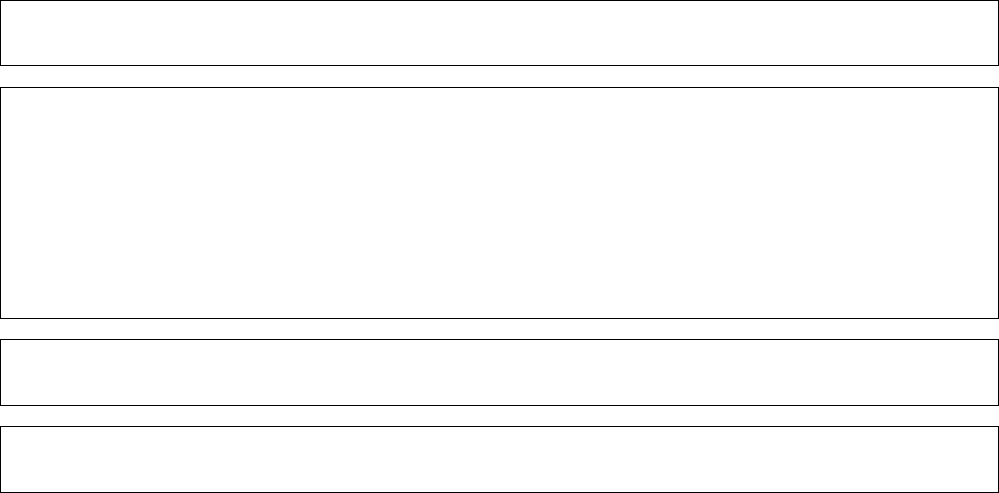
Energy Savings Scheme Rule of 2009
Effective from 19 June 2024
Page 117
Schedule C – Activity Definitions for the Removal of Old Appliances (clause 9.7)
Activity Definition C1
Name of Activity
REMOVE A SPARE REFRIGERATOR OR FREEZER
Equipment Requirements
1. The Site where the End-User Equipment is located must be a Residential Building.
2. The End-User Equipment must be a Refrigerator or Freezer (or combination) that may be classified as Group 1, 2, 3, 4, 5T,
5B, 5S, 6C, 6U or 7 according to AS/NZS 4474.1 and 4474.2 Performance of household electrical appliances—Refrigerating
appliances.
3. The capacity of the Refrigerator or Freezer (as defined in AS/NZS 4474) must be 200 litres or more.
4. The Refrigerator or Freezer must be in working order.
5. There must be another Refrigerator or Freezer (as appropriate) at the Site that provides primary refrigeration or freezing
services, located in, or closer to, the kitchen.
6. As a result of the activity there must be 1 fewer spare refrigerators and freezers at the Site.
Equipment Electricity Savings
Deemed Equipment Electricity Savings = 5.7 MWh per spare refrigerator or freezer removed
Lifetime (for information purposes only)
Lifetime = 7 years.
NSW Government Gazette
20 December 2023
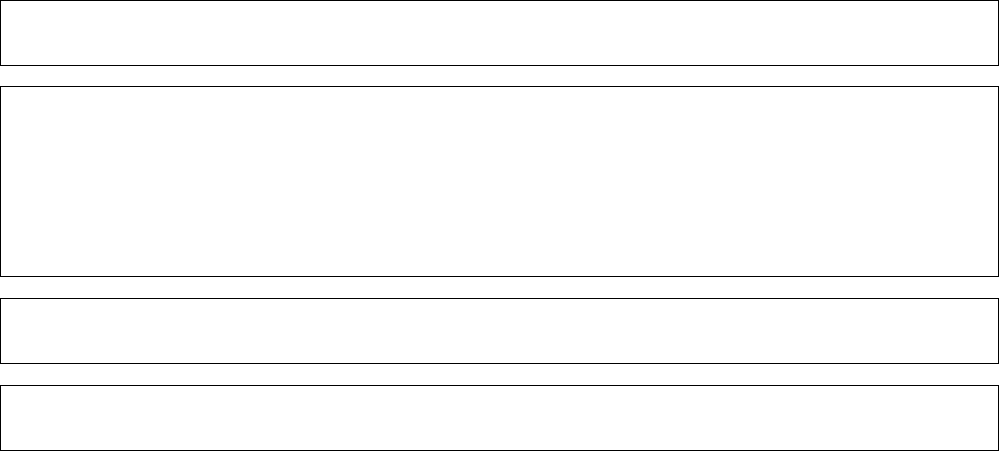
Energy Savings Scheme Rule of 2009
Effective from 19 June 2024
Page 118
Activity Definition C2
Name of Activity
REMOVE A PRIMARY REFRIGERATOR OR FREEZER
Equipment Requirements
1. The Site where the End-User Equipment is located must be a Residential Building or Small Business Site.
2. The End-User Equipment must be a Refrigerator or Freezer (or combination) that may be classified as Group 1, 2, 3, 4, 5T,
5B, 5S, 6C, 6U or 7 according to AS/NZS 4474.1 and 4474.2 Performance of household electrical appliances—Refrigerating
appliances.
3. The capacity of the Refrigerator or Freezer (as defined in AS/NZS 4474) must be 200 litres or more.
4. The Refrigerator or Freezer must be in working order.
5. The activity may be carried out in combination with the delivery of a new refrigerator or freezer.
Equipment Electricity Savings
Deemed Equipment Electricity Savings = 2.4 MWh per primary refrigerator or freezer removed
Lifetime (for information purposes only)
Lifetime = 7 years.
NSW Government Gazette
20 December 2023

Energy Savings Scheme Rule of 2009
Effective from 19 June 2024
Page 119
Schedule D – Activity Definitions for General Activities for Home Energy Efficiency Retrofits (clause 9.8)
Activity Definition D1
Name of Activity
REPLACE AN EXTERNAL SINGLE GLAZED WINDOW OR DOOR WITH A THERMALLY EFFICIENT WINDOW OR
DOOR
Eligibility Requirements
1. The existing window must be single glazed.
2. The existing door must be a fully single glazed framed unit.
3. The existing window or door must be an external window or door of a Residential Building or Small Business Site.
Equipment Requirements
1. The new End-User Equipment must be a window or door product (glazing and frame) rated by WERS.
2. The new End-User Equipment can be either a single glazed or double glazed or triple glazed insulating glass unit.
3. The window or door must comply with AS 2047 and AS 1288.
4. The window or door must be rated as 6 Star by WERS in accordance with the minimum requirements for a thermally efficient
window or door as detailed in Table D1.1.
5. The window or door must have a warranty of at least 5 years.
Table D1.1 – Minimum requirements for a thermally efficient window or door
Window/ door
rating
Minimum WERS star rating in
heating mode
Minimum WERS rating in
cooling mode
Maximum System U-Value
(W/m
2
K)
6 Star Window or
Door
6 stars
3.5 stars
3
Implementation Requirements
The window or door must be installed in compliance with of AS 2047 and AS 1288.
Activity Energy Savings
Deemed Activity Electricity Savings = Electricity Savings Factor × Glazing Unit Area
Deemed Activity Gas Savings = Gas Savings Factor × Glazing Unit Area
Where:
• Electricity Savings Factor and Gas Savings Factor, in MWh per m
2
, are the values from Tables D1.2, D1.3, D1.4 and D1.5,
corresponding to the Uw value of the window or door and the Site’s location.
• Glazing Unit Area, in m
2
, is the total window or door area of the thermally efficient window or door installed.
• Implementation of the Activity allows both Electricity Savings Factors and Gas Savings Factors to be applied, regardless of
fuel used for heating or cooling at the premises.
• Uw is the System U-Value of the thermally efficient window or door.
Table D1.2 –Residential Building Electricity Savings Factors for thermally efficient windows or doors (MWh per m
2
of window or door
replaced)
Window/ Door
rating
BCA Climate
Zones 2 and 3
BCA Climate
Zone 4
BCA Climate
Zone 5
BCA Climate
Zone 6
BCA Climate
Zones 7 and 8
Uw ≤ 3
0.13
0.21
0.11
0.17
0.25
Uw ≤ 2
0.16
0.26
0.14
0.21
0.30
Uw ≤ 1
0.19
0.30
0.16
0.26
0.35
Table D1.3 – Residential Building Gas Savings Factors for thermally efficient windows or doors (MWh per m
2
of window or door
replaced)
NSW Government Gazette
20 December 2023
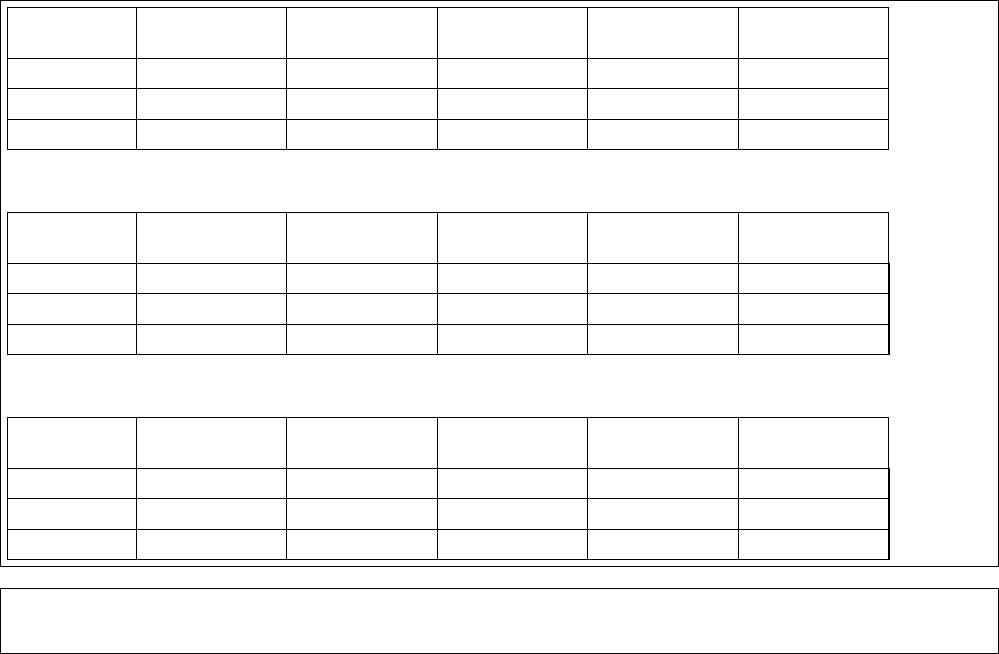
Energy Savings Scheme Rule of 2009
Effective from 19 June 2024
Page 120
Window/
Door rating
BCA Climate
Zones 2 and 3
BCA Climate
Zone 4
BCA Climate
Zone 5
BCA Climate
Zone 6
BCA Climate
Zones 7 and 8
Uw ≤ 3
0.09
0.26
0.13
0.18
0.39
Uw ≤ 2
0.11
0.30
0.14
0.20
0.46
Uw ≤ 1
0.12
0.33
0.16
0.23
0.53
Table D1.4 – Small Business Site Electricity Savings Factors for thermally efficient windows or doors (MWh per m
2
of window or door
replaced)
Window/
Door rating
BCA Climate
Zones 2 and 3
BCA Climate
Zone 4
BCA Climate
Zone 5
BCA Climate
Zone 6
BCA Climate
Zones 7 and 8
Uw ≤ 3
0.35
0.38
0.26
0.41
0.27
Uw ≤ 2
0.50
0.54
0.39
0.59
0.38
Uw ≤ 1
0.66
0.72
0.54
0.81
0.50
Table D1.5 – Small Business Site Gas Savings Factors for thermally efficient windows or doors (MWh per m
2
of window or door
replaced)
Window/
Door rating
BCA Climate
Zones 2 and 3
BCA Climate
Zone 4
BCA Climate
Zone 5
BCA Climate
Zone 6
BCA Climate
Zones 7 and 8
Uw ≤ 3
0.01
0.04
0.02
0.02
0.09
Uw ≤ 2
0.01
0.04
0.02
0.02
0.10
Uw ≤ 1
0.00
0.04
0.02
0.02
0.10
Lifetime (for information purposes only)
Lifetime = 30 years.
NSW Government Gazette
20 December 2023
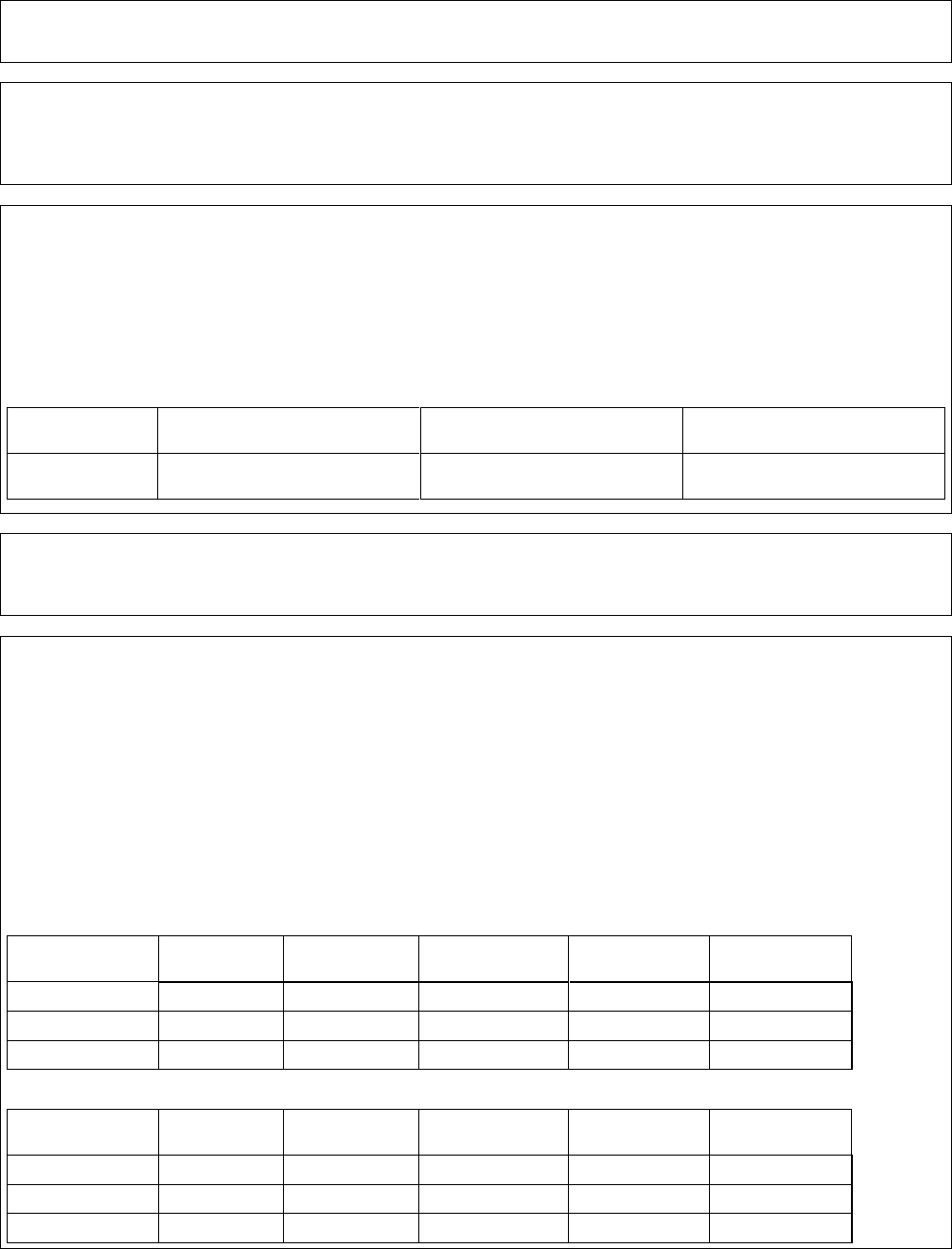
Energy Savings Scheme Rule of 2009
Effective from 19 June 2024
Page 121
Activity Definition D2
Name of Activity
MODIFY AN EXTERNAL WINDOW OR GLAZED DOOR BY INSTALLING SECONDARY GLAZING
Eligibility Requirements
1. The existing window must be single glazed.
2. The existing door must be a fully single glazed framed unit.
3. The existing window or door must be an external window or door of a Residential Building or Small Business Site.
Equipment Requirements
1. The End-User Equipment must be a secondary glazing product that retrofits a second glazing sheet (e.g. glass or acrylic or
polycarbonate) to an existing single glazed window or door so as to form a still air gap between the specified product and the
existing glazing.
2. The secondary glazing product when retrofitted must produce a window or door that is a 6 Star Window or Door in
accordance with the minimum requirements for a thermally efficient window or door as detailed in Table D2.1.
3. The secondary glazing product must have a warranty of at least 5 years.
Table D2.1 – Minimum requirements for a thermally efficient window or door fitted with secondary glazing
Window/ Door
rating
Minimum WERS star rating in
heating mode
Minimum WERS rating in
cooling mode
Maximum System U-Value
(W/m
2
K)
6 Star Window or
Door
6 stars
3.5 stars
3
Implementation Requirements
The secondary glazing product must be fitted in compliance with AS 2047 and AS 1288 and in accordance with the manufacturer’s
instructions.
Activity Energy Savings
Deemed Activity Electricity Savings = Electricity Savings Factor × Glazing Unit Area
Deemed Activity Gas Savings = Gas Savings Factor × Glazing Unit Area
Where:
• Electricity Savings Factor and Gas Savings Factor, in MWh per m
2
, are the values from Tables D2.2, D2.3, D2.4 and D.5
corresponding to the Uw value of the window or door and the Site’s location.
• Glazing Unit Area, in m
2
, is the total window or door area of the window or door modified to be thermally efficient.
• Implementation of the Activity allows both Electricity Savings Factors and Gas Savings Factors to be applied, regardless of
fuel used for heating or cooling at the premises.
• Uw is the System U-Value of the thermally efficient window or door
Table D2.2 – Residential Building Electricity Savings Factors for secondary glazing products (MWh per m
2
of window or door
modified)
Window/ Door
rating
BCA Climate
Zones 2 and 3
BCA Climate
Zone 4
BCA Climate
Zone 5
BCA Climate
Zone 6
BCA Climate
Zones 7 and 8
Uw ≤ 3
0.06
0.11
0.06
0.09
0.13
Uw ≤ 2
0.08
0.13
0.07
0.11
0.15
Uw ≤ 1
0.10
0.15
0.08
0.13
0.18
Table D2.3 – Residential Building Gas Savings Factors for secondary glazing products (MWh per m
2
of window or door modified)
Window/ Door
rating
BCA Climate
Zones 2 and 3
BCA Climate
Zone 4
BCA Climate
Zone 5
BCA Climate
Zone 6
BCA Climate
Zones 7 and 8
Uw ≤ 3
0.05
0.13
0.06
0.09
0.20
Uw ≤ 2
0.05
0.15
0.07
0.10
0.23
Uw ≤ 1
0.06
0.17
0.08
0.11
0.26
NSW Government Gazette
20 December 2023
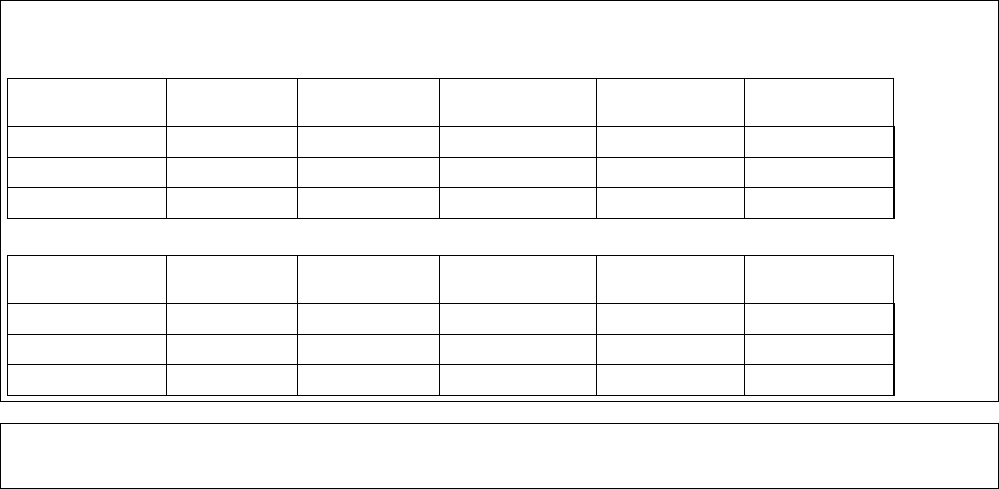
Energy Savings Scheme Rule of 2009
Effective from 19 June 2024
Page 122
Table D2.4 – Small Business Site Electricity Savings Factors for secondary glazing products (MWh per m
2
of window or door
modified)
Table D2.5 – Small Business Site Gas Savings Factors for secondary glazing products (MWh per m
2
of window or door modified)
Window/ Door
rating
BCA Climate
Zones 2 and 3
BCA Climate
Zone 4
BCA Climate
Zone 5
BCA Climate
Zone 6
BCA Climate
Zones 7 and 8
Uw ≤ 3
0.00
0.02
0.01
0.01
0.05
Uw ≤ 2
0.00
0.02
0.01
0.01
0.05
Uw ≤ 1
0.00
0.02
0.01
0.01
0.05
Window/ Door
rating
BCA Climate
Zones 2 and 3
BCA Climate
Zone 4
BCA Climate
Zone 5
BCA Climate
Zone 6
BCA Climate
Zones 7 and 8
Uw ≤ 3
0.18
0.19
0.13
0.21
0.14
Uw ≤ 2
0.25
0.27
0.20
0.30
0.19
Uw ≤ 1
0.34
0.37
0.27
0.41
0.25
Lifetime (for information purposes only)
Lifetime = 10 years.
NSW Government Gazette
20 December 2023
Energy Savings Scheme Rule of 2009
Effective from 19 June 2024
Page 123
Activity Definition D3
(deleted)
NSW Government Gazette
20 December 2023
Energy Savings Scheme Rule of 2009
Effective from 19 June 2024
Page 124
Activity Definition D4
(deleted)
NSW Government Gazette
20 December 2023

Energy Savings Scheme Rule of 2009
Effective from 19 June 2024
Page 125
Activity Definition D5
Name of Activity
REPLACE AN EXISTING POOL PUMP WITH A HIGH EFFICIENCY POOL PUMP
Eligibility Requirements
1. There must be an existing pool pump installed at the Site at time of replacement.
Equipment Requirements
1. The New End-User Equipment must be a product for use with a domestic pool or spa that is a single phase motor and any of
the following types: single speed, two speed, multi speed or variable speed pump unit. The pump unit must have an input
power of not less than 600W and not more than 1,700W for single speed pumps and 3,450W for two speed, multi speed and
variable speed pumps when tested in accordance with AS 5102.1.
2. The new End-User Equipment must be a registered product in the GEMS Registry as complying with the Greenhouse and
Energy Minimum Standards (Swimming Pool Pump-units) Determination 2021.
3. The new End-User Equipment must achieve a minimum 4.5 star rating when determined in accordance with AS 5102.2.
4. The new End-User Equipment must have a warranty of at least 3 years.
Implementation Requirements
1. The pool pump must be installed by a Licensed plumber and/or electrician, where required by relevant legislation.
2. The decommissioned pool pump must be removed in accordance with relevant safety standards and legislation.
Activity Energy Savings
Deemed Activity Electricity Savings = Savings Factor
Where:
• Savings Factor, in MWh, is the value from Table D5.1 corresponding to the pool pump’s energy star rating.
Table D5.1 – Savings Factors (MWh per pool pump installed)
Energy Star Rating
Savings Factors
4.5
1.3
5
2.5
5.5
3.5
6
4.5
7
6.1
8
7.4
9
8.4
10
9.2
Lifetime (for information purposes only)
Lifetime = 12 years.
NSW Government Gazette
20 December 2023
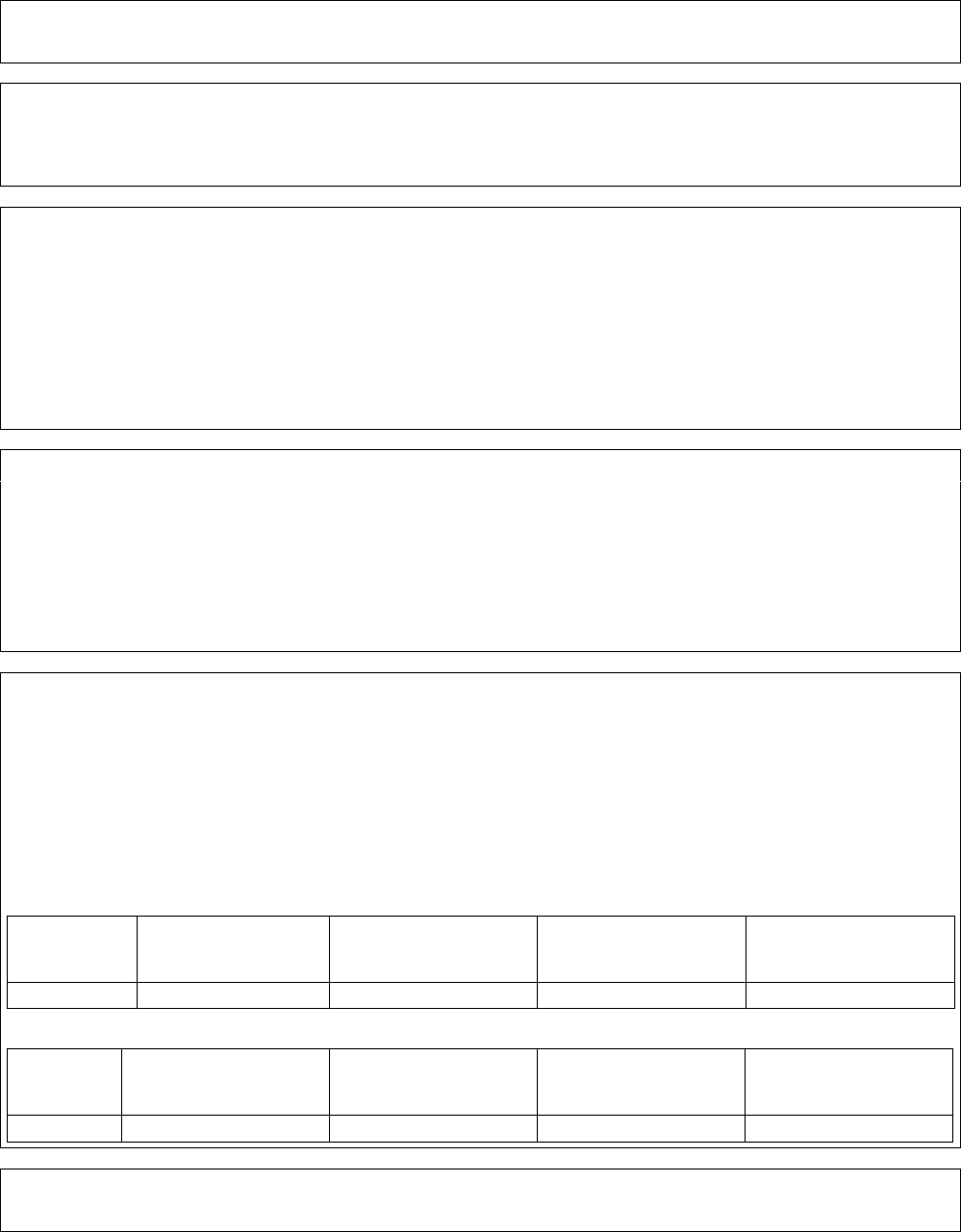
Energy Savings Scheme Rule of 2009
Effective from 19 June 2024
Page 126
Activity Definition D6
Name of Activity
INSTALL CEILING INSULATION IN AN UNINSULATED CEILING SPACE
Eligibility Requirements
1. There must be no existing roof or ceiling insulation present in the ceiling space.
2. For the purposes of this Activity, ceiling spaces with single sheet reflective foil insulation hung below the roofing material are
deemed to be uninsulated ceiling spaces.
Equipment Requirements
1. The insulation product used must comply with the performance requirements of AS/NZS 4859.1, as evidenced by test reports
from an accredited NATA laboratory.
2. The insulation product must achieve a minimum winter R-value, when measured in accordance with AS/NZS 4859.1, of:
o R3.0 if the Site is in BCA Climate Zone 2 or 3;
o R3.5 if the Site is in BCA Climate Zone 4, 5 or 6;
o R5.0 if the Site is in BCA Climate Zone 7 or 8
after being adjusted for perimeter insulation in accordance with AS 3999.
3. The insulation product must have a warranty of at least 25 years.
4. Foil insulation products are not eligible to be used in this activity.
Implementation Requirements
1. The insulation product used must be installed in compliance with AS 3999 and the National Construction Code BCA Section
J1.
2. Installers are required to have completed training courses CPCCOHS1001A; CPCCCM2010A; CPCCOHS2001A;
CPCCPB3027A; CPCCPB3014A and other training requirements as Published by the Scheme Administrator.
3. Insulation must only be installed in ceiling spaces with an exposed roof.
4. Insulation must be installed in at least 95% of the ceiling area able to have insulation installed, after being adjusted for
perimeter insulation in accordance with AS 3999.
5. Cut outs around ceiling penetrations such as downlights must be kept to the minimum permitted by regulation.
Activity Energy Savings
Deemed Activity Electricity Savings = Electricity Savings Factor × Insulation Area
Deemed Activity Gas Savings = Gas Savings Factor × Insulation Area
Where:
• Electricity Savings Factor and Gas Savings Factor, in MWh per m
2
, are the values from Tables D6.1 and D6.2 corresponding
to the Site’s building construction and location.
• Insulation Area, in m
2
, is the total ceiling area that has had insulation product installed.
• Implementation of the Activity allows both Electricity and Gas Savings Factors to be applied, regardless of fuel used for
heating or cooling at the premises.
Table D6.1 – Electricity Savings Factors (MWh per m
2
of ceiling insulation installed)
Climate zone
BCA Climate Zones 2
and 3
Minimum R3.0
BCA Climate Zone 4
Minimum R3.5
BCA Climate Zones 5
and 6
Minimum R3.5
BCA Climate Zones 7
and 8
Minimum R5.0
MWh per m2
0.16
0.29
0.17
0.47
Table D6.2 – Gas Savings Factor (MWh per m
2
of ceiling insulation installed)
Climate
zone
BCA Climate Zones 2
and 3
Minimum R3.0
BCA Climate Zone 4
Minimum R3.5
BCA Climate Zones 5
and 6
Minimum R3.5
BCA Climate Zones 7
and 8
Minimum R5.0
MWh per m
2
0.09
0.18
0.11
0.30
Lifetime (for information purposes only)
Lifetime = 25 years.
NSW Government Gazette
20 December 2023
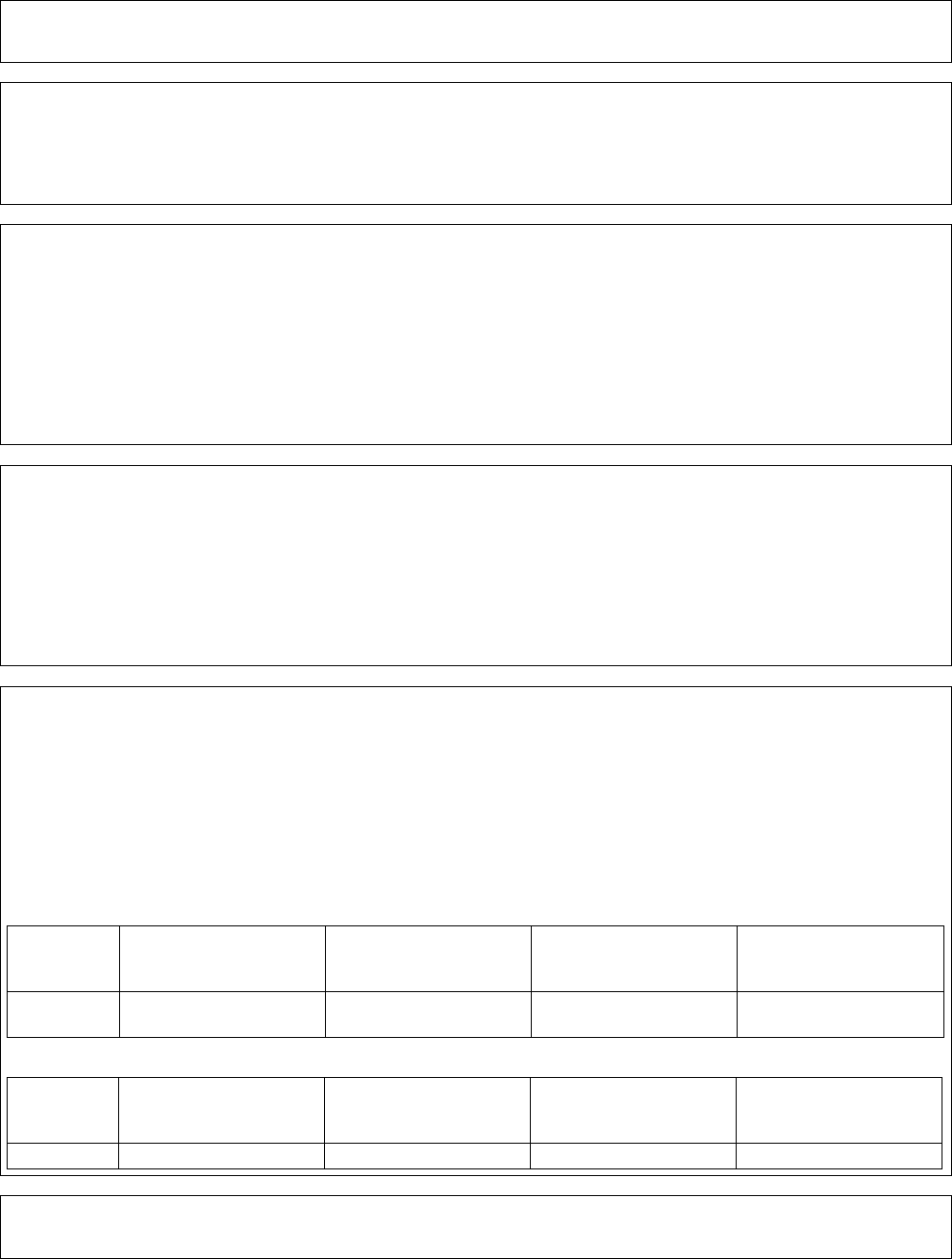
Energy Savings Scheme Rule of 2009
Effective from 19 June 2024
Page 127
Activity Definition D7
Name of Activity
INSTALL CEILING INSULATION IN AN UNDER-INSULATED CEILING SPACE
Eligibility Requirements
1. There must be existing roof or ceiling insulation present in the ceiling space.
2. For the purposes of this Activity, ceiling spaces with single sheet reflective foil insulation hung below the roofing material are
deemed to be uninsulated ceiling spaces.
3. The R-value of existing roof or ceiling insulation must be below 3.0 when measured in accordance with AS/NZS 4859.1.
Equipment Requirements
1. The insulation product used must comply with the performance requirements of AS/NZS 4859.1, as evidenced by test reports
from an accredited NATA laboratory.
2. The insulation product must achieve a minimum winter R-value, when measured in accordance with AS/NZS 4859.1, of:
o R3.0 if the Site is in BCA Climate Zone 2 or 3;
o R3.5 if the Site is in BCA Climate Zone 4, 5 or 6;
o R5.0 if the Site is in BCA Climate Zone 7 or 8
after being adjusted for perimeter insulation in accordance with AS 3999.
3. The insulation product must have a warranty of at least 25 years.
4. Foil insulation products are not eligible to be used in this activity.
Implementation Requirements
1. The insulation product used must be installed in compliance with AS 3999 and the National Construction Code BCA Section
J1.
2. Installers are required to have completed training courses CPCCOHS1001A; CPCCCM2010A; CPCCOHS2001A;
CPCCPB3027A; CPCCPB3014A and other training requirements as Published by the Scheme Administrator.
3. Insulation must only be installed in ceiling spaces with an exposed roof.
4. Insulation must be installed in at least 95% of the ceiling area able to have insulation installed, after being adjusted for
perimeter insulation in accordance with AS 3999.
5. Cut outs around ceiling penetrations such as downlights must be consistent with regulation requirements.
Activity Energy Savings
Deemed Activity Electricity Savings = Electricity Savings Factor × Insulation Area
Deemed Activity Gas Savings = Gas Savings Factor × Insulation Area
Where:
• Electricity Savings Factor and Gas Savings Factor, in MWh per m
2
, are the values from Tables D7.1 and D7.2 corresponding
to the Site’s building construction and location.
• Insulation Area, in m
2
, is the total ceiling area that has had insulation product installed.
• Implementation of the Activity allows both Electricity and Gas Savings Factors to be applied, regardless of fuel used for
heating or cooling at the premises.
Table D7.1 – Electricity Savings Factors (MWh per m
2
of ceiling insulation installed)
Climate
zone
BCA Climate Zones 2
and 3
Minimum R3.0
BCA Climate Zone 4
Minimum R3.5
BCA Climate Zones 5
and 6
Minimum R3.5
BCA Climate Zones 7
and 8
Minimum R5.0
MWh per
m2
0.01
0.03
0.02
0.04
Table D7.2 – Gas Savings Factors (MWh per m
2
of ceiling insulation installed)
Climate
zone
BCA Climate Zones 2
and 3
Minimum R3.0
BCA Climate Zone 4
Minimum R3.5
BCA Climate Zones 5
and 6
Minimum R3.5
BCA Climate Zones 7
and 8
Minimum R5.0
MWh per m
2
0.01
0.02
0.01
0.03
Lifetime (for information purposes only)
Lifetime = 25 years.
NSW Government Gazette
20 December 2023
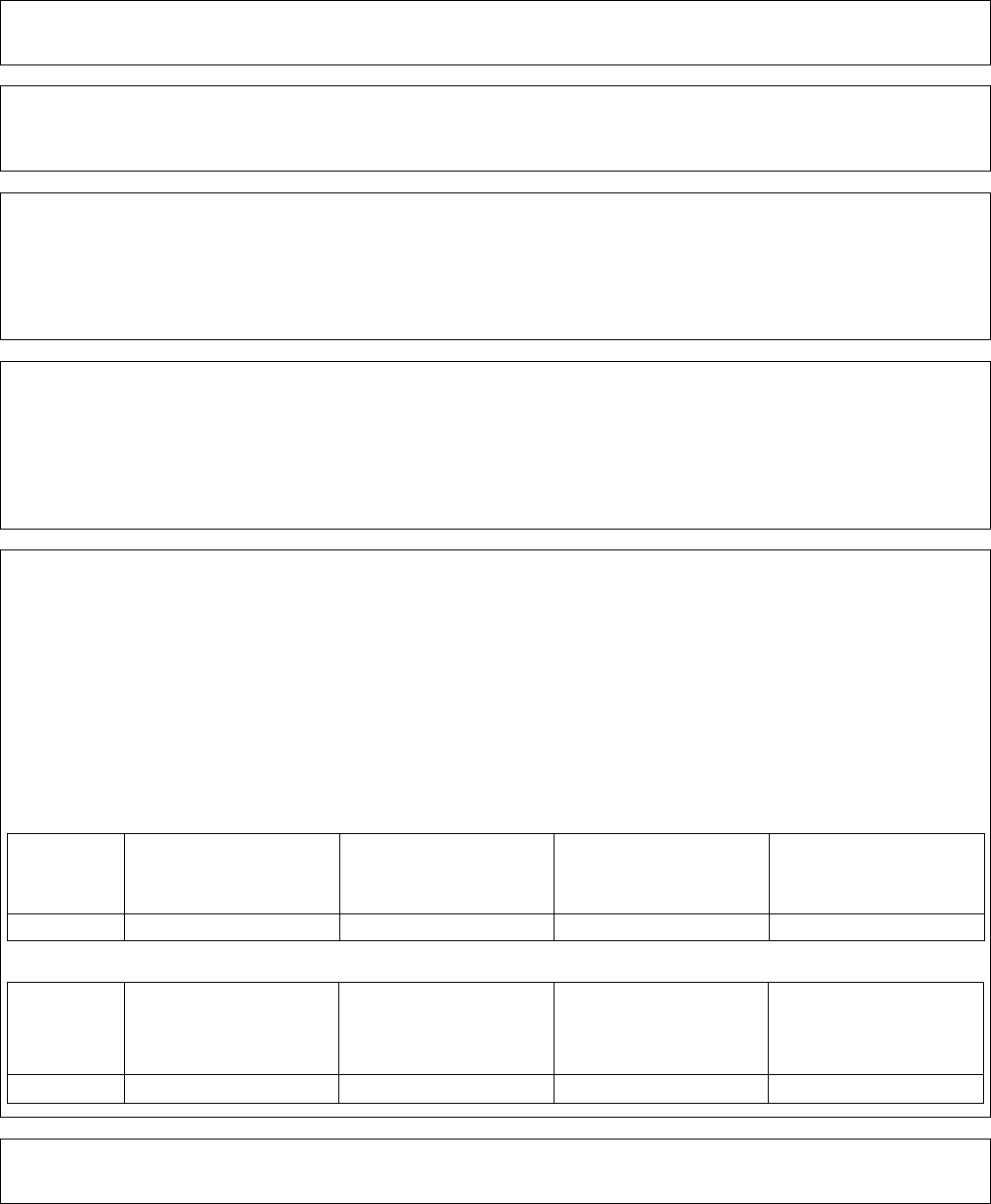
Energy Savings Scheme Rule of 2009
Effective from 19 June 2024
Page 128
Activity Definition D8
Name of Activity
INSTALL UNDER-FLOOR INSULATION
Eligibility Requirements
1. There must be no existing ground floor insulation present.
2. The Site must have a suspended timber floor.
Equipment Requirements
1. The insulation product used must comply with the performance requirements of AS/NZS 4859.1 and achieve a minimum
winter R-value of R2.5 when measured in accordance with AS/NZS 4859.1, as evidenced by test reports from an accredited
NATA laboratory.
2. The insulation product must have a warranty of at least 25 years.
3. Foil insulation products are not eligible to be used in this activity.
Implementation Requirements
1. The Activity is restricted to ground floor suspended timber floor spaces.
2. Installers are required to have completed training courses CPCCOHS1001A; CPCCCM2010A; CPCCOHS2001A;
CPCCPB3014A; and other training requirements as Published by the Scheme Administrator.
3. The insulation product must be installed in accordance with AS 3999 and the National Construction Code BCA Section J1.
4. Insulation must be installed in at least 95% of the ground floor area able to have insulation installed.
5. Insulation may only be applied to areas that have not been previously insulated.
Activity Energy Savings
Deemed Activity Electricity Savings = Electricity Savings Factor × Insulation Area
Deemed Activity Gas Savings = Gas Savings Factor × Insulation Area
Where:
• Electricity Savings Factor and Gas Savings Factor, in MWh per m
2
, are the values from Tables D8.1 and D8.2 corresponding
to the Site’s building construction and location.
• Insulation Area, in m
2
, is the total ground floor area that has had insulation product installed.
• Implementation of the Activity allows both Electricity and Gas Savings Factors to be applied, regardless of fuel used for
heating or cooling at the premises.
Table D8.1 – Electricity Savings Factor (MWh per m
2
of under -floor insulation installed)
Climate
zone
BCA Climate Zones 2
and 3
Minimum R2.5
BCA Climate Zone 4
Minimum R2.5
BCA Climate Zones 5
and 6
Minimum R2.5
BCA Climate Zones 7
and 8
Minimum R2.5
MWh per m
2
n/a
0.02
0.01
0.05
Table D8.2 – Gas Savings Factor (MWh per m
2
of under -floor insulation installed)
Climate
zone
BCA Climate Zones 2
and 3
Minimum R2.5
BCA Climate Zone 4
Minimum R2.5
BCA Climate Zones 5
and 6
Minimum R2.5
BCA Climate Zones 7
and 8
Minimum R2.5
MWh per m
2
0.01
0.02
0.01
0.04
Lifetime (for information purposes only)
Lifetime = 25 years.
NSW Government Gazette
20 December 2023
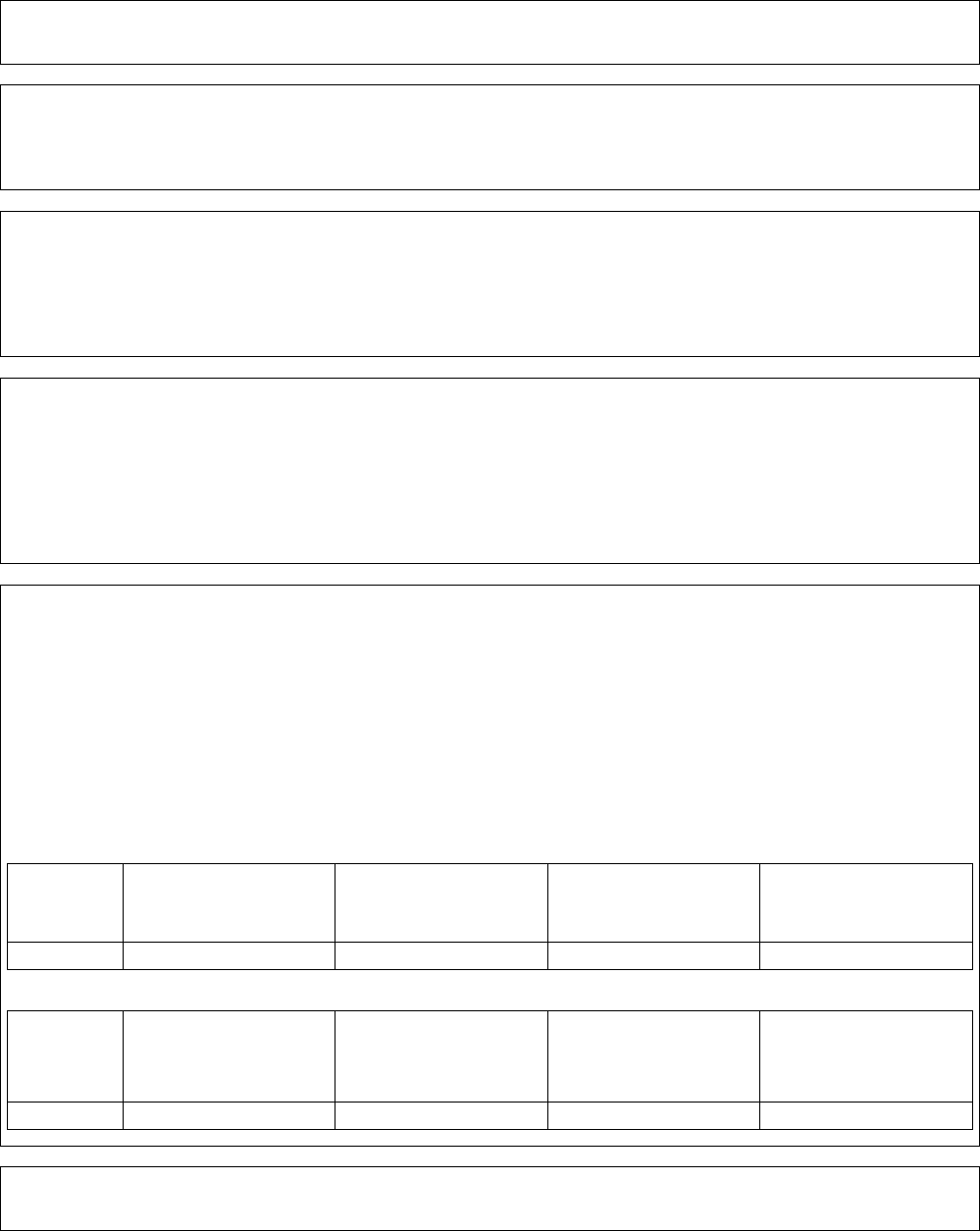
Energy Savings Scheme Rule of 2009
Effective from 19 June 2024
Page 129
Activity Definition D9
Name of Activity
INSTALL WALL INSULATION
Eligibility Requirements
1. There must be no existing wall insulation present.
2. For the purposes of this activity, wall cavities that contain reflective foil sarking only shall be deemed to be uninsulated
spaces.
Equipment Requirements
1. The insulation product used must comply with the performance requirements of AS/NZS 4859.1 and achieve a minimum
winter R-value of 2.0 when measured in accordance with AS/NZS 4859.1, as evidenced by test reports from an accredited
NATA laboratory.
2. The insulation product used must have a warranty of at least 25 years.
3. Foil insulation products are not eligible to be used in this activity.
Implementation Requirements
1. The insulation product used must be installed in accordance with AS 3999 and the National Construction Code BCA Section
J1.
2. Installers are required to have completed training courses CPCCOHS1001A; CPCCCM2010A; CPCCOHS2001A;
CPCCPB3014A; and other training requirements as Published by the Scheme Administrator.
3. The insulation product must be installed in an external wall space (or part of an external wall space) but not in any common
walls (as defined by the National Construction Code).
4. Insulation must be installed in at least 95% of the wall area able to have insulation installed.
Activity Energy Savings
Deemed Activity Electricity Savings = Electricity Savings Factor × Insulation Area
Deemed Activity Gas Savings = Gas Savings Factor × Insulation Area
Where:
• Electricity Savings Factor and Gas Savings Factor, in MWh per m
2
, are the values from Tables D9.1 and D9.2 corresponding
to the Site’s building construction and location.
• Insulation Area, in m2, is the total wall area that has had insulation product installed.
• Implementation of the Activity allows both Electricity and Gas Savings Factors to be applied, regardless of fuel used for
heating or cooling at the premises.
Table D9.1 – Electricity Savings Factor (MWh per m
2
of wall insulation installed)
Climate
zone
BCA Climate Zones 2
and 3
Minimum R2.0
BCA Climate Zone 4
Minimum R2.0
BCA Climate Zones 5
and 6
Minimum R2.0
BCA Climate Zones 7
and 8
Minimum R2.0
MWh per m
2
0.05
0.09
0.05
0.15
Table D9.2 – Gas Savings Factor (MWh per m
2
of wall insulation installed)
Climate
zone
BCA Climate Zones 2
and 3
Minimum R2.0
BCA Climate Zone 4
Minimum R2.0
BCA Climate Zones 5
and 6
Minimum R2.0
BCA Climate Zones 7
and 8
Minimum R2.0
MWh per m
2
0.02
0.06
0.03
0.10
Lifetime (for information purposes only)
Lifetime = 25 years.
NSW Government Gazette
20 December 2023
Energy Savings Scheme Rule of 2009
Effective from 19 June 2024
Page 130
Activity Definition D10
(deleted)
NSW Government Gazette
20 December 2023
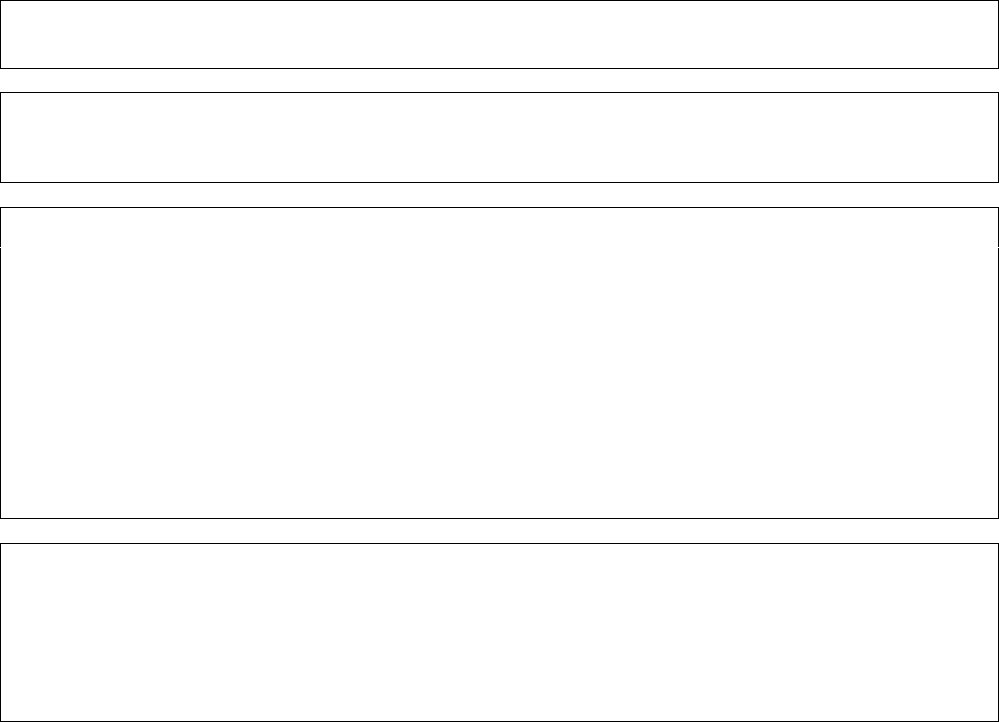
Energy Savings Scheme Rule of 2009
Effective from 19 June 2024
Page 131
Activity Definition D11
Name of Activity
REPLACE AN EXISTING GAS FIRED WATER HEATER WITH A HIGH EFFICIENCY GAS FIRED WATER HEATER
Eligibility Requirements
1. The existing Gas fired water heater is a Gas fired storage water heater.
2. The existing Gas fired water heater does not have to be in working order at time of replacement.
Equipment Requirements
1. The installed End-User Equipment must be a Gas fired water heater as defined in AS4552 or AS/NZS 5263.1.2.
2. The installed End-User Equipment must be listed as certified in the Gas Technical Regulators Committee (GTRC) National
Certification Database and be certified for the fuel to which it will be connected.
3. The capacity of the installed End-User Equipment in Table D11.1 can be either a stored volume for a Gas fired storage water
heater or a heated flow rate for a Gas fired instantaneous water heater.
4. The installed End-User Equipment must be rated at an Annual Energy Consumption of ≤ 18279 MJ (equivalent to 6.25 stars)
in accordance with AS4552 or AS/NZS 5263.1.2 if it is a Gas fired instantaneous water heater.
5. The installed End-User Equipment must be rated at an Annual Energy Consumption of ≤ 20302 MJ (equal to 5.25 stars) in
accordance with AS4552 or AS/NZS 5263.1.2 if it is a Gas fired storage water heater.
6. The installed End-User Equipment must have a capacity the same or smaller than the existing End-User Equipment it replaces.
7. The installed End-User Equipment must have a warranty of at least 10 years for the cylinder or tank of a Gas fired storage
water heater, or the heat exchanger of a Gas fired instantaneous water heater.
Implementation Requirements
1. The existing End-User Equipment must be disconnected and removed; these tasks must be performed or supervised by a
qualified person in accordance with relevant standards and legislation.
2. The End-User Equipment must be installed.
3. The activity must be performed or supervised by a qualified person in accordance with the End-User Equipment installation
instructions and in compliance with plumbing, Gas work, electrical work and permanent wiring standards; and as required by
other relevant legislation, local regulations, and all local codes and regulatory authority requirements.
NSW Government Gazette
20 December 2023
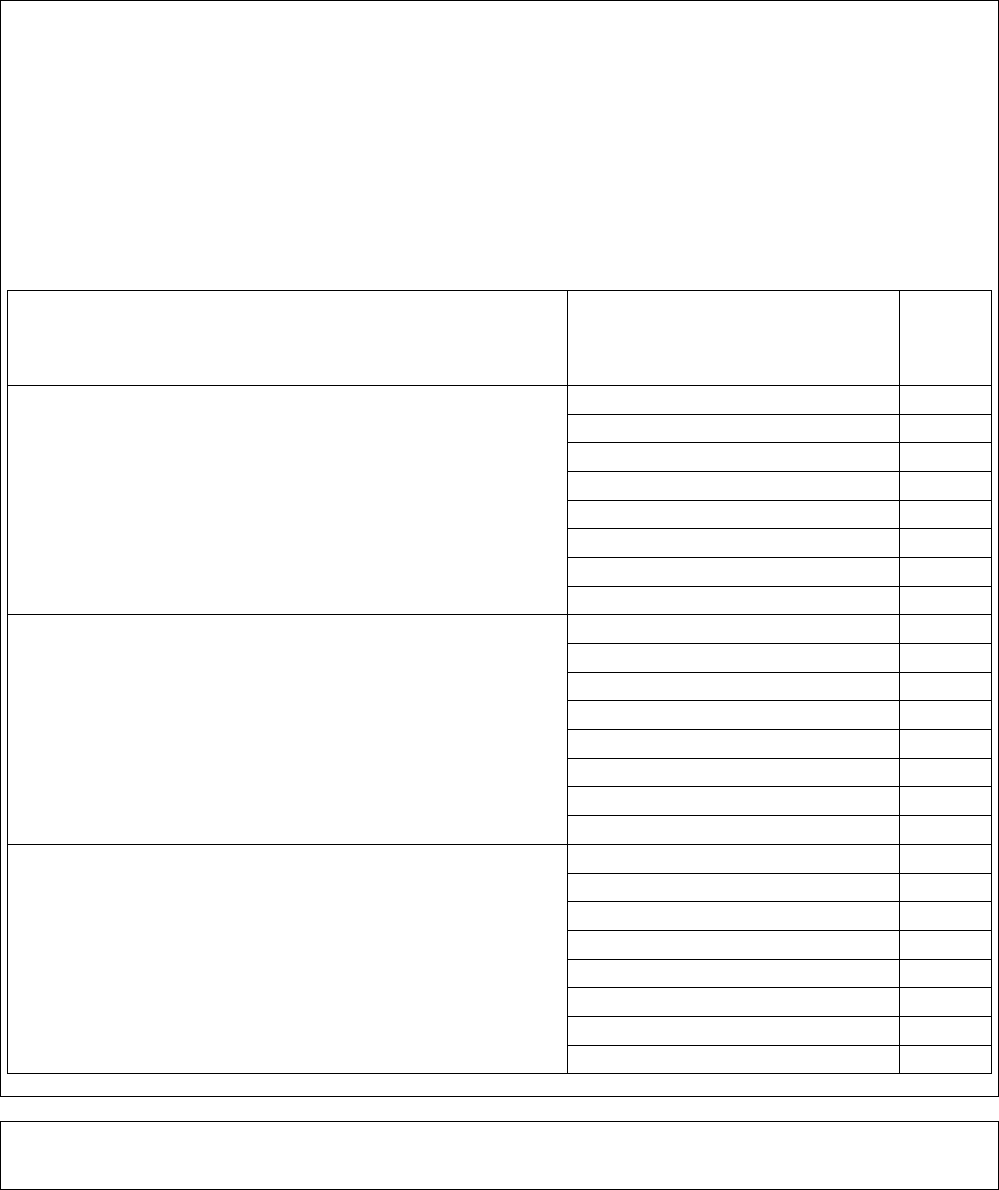
Energy Savings Scheme Rule of 2009
Effective from 19 June 2024
Page 132
Activity Energy Savings
Deemed Activity Gas Savings = Gas Savings Factor
Where:
• Gas Savings Factor, in MWh per installed End-User Equipment, is the value from Table D11.1 corresponding to the capacity
and Annual Energy Consumption of the installed End-User Equipment.
• Capacity of installed End-User Equipment is available from Gas fired water heater specifications.
• Annual Energy Consumption of the installed End-User Equipment is the value listed for the equipment in the GTRC National
Certification Database.
Table D11.1 – Gas Savings Factor (MWh per installed End-User Equipment)
Capacity of installed End-User Equipment
Annual Energy Consumption (MJ)
Gas
Savings
Factor
(MWh)
Gas fired storage water heater: < 95 L
Gas fired instantaneous water heater: < 18 L/min at 25
o
C rise
> 19797 and ≤ 20302
4.43
> 19291 and ≤ 19797
5.06
> 18785 and ≤ 19291
5.69
> 18279 and ≤ 18785
6.32
> 17774 and ≤ 18279
6.95
> 17268 and ≤ 17774
7.59
> 16762 and ≤ 17268
8.22
≤ 16762
8.85
Gas fired storage water heater: 95 to 140 L
Gas fired instantaneous water heater: 18 to 22 L/min at 25
o
C rise
> 19797 and ≤ 20302
7.38
> 19291 and ≤ 19797
8.43
> 18785 and ≤ 19291
9.48
> 18279 and ≤ 18785
10.54
> 17774 and ≤ 18279
11.59
> 17268 and ≤ 17774
12.64
> 16762 and ≤ 17268
13.70
≤ 16762
14.75
Gas fired storage water heater: > 140 L
Gas fired instantaneous water heater: > 22 L/min at 25
o
C rise
> 19797 and ≤ 20302
10.33
> 19291 and ≤ 19797
11.80
> 18785 and ≤ 19291
13.28
> 18279 and ≤ 18785
14.75
> 17774 and ≤ 18279
16.23
> 17268 and ≤ 17774
17.70
> 16762 and ≤ 17268
19.18
≤ 16762
20.65
Lifetime (for information purposes only)
Lifetime = 10 years.
NSW Government Gazette
20 December 2023
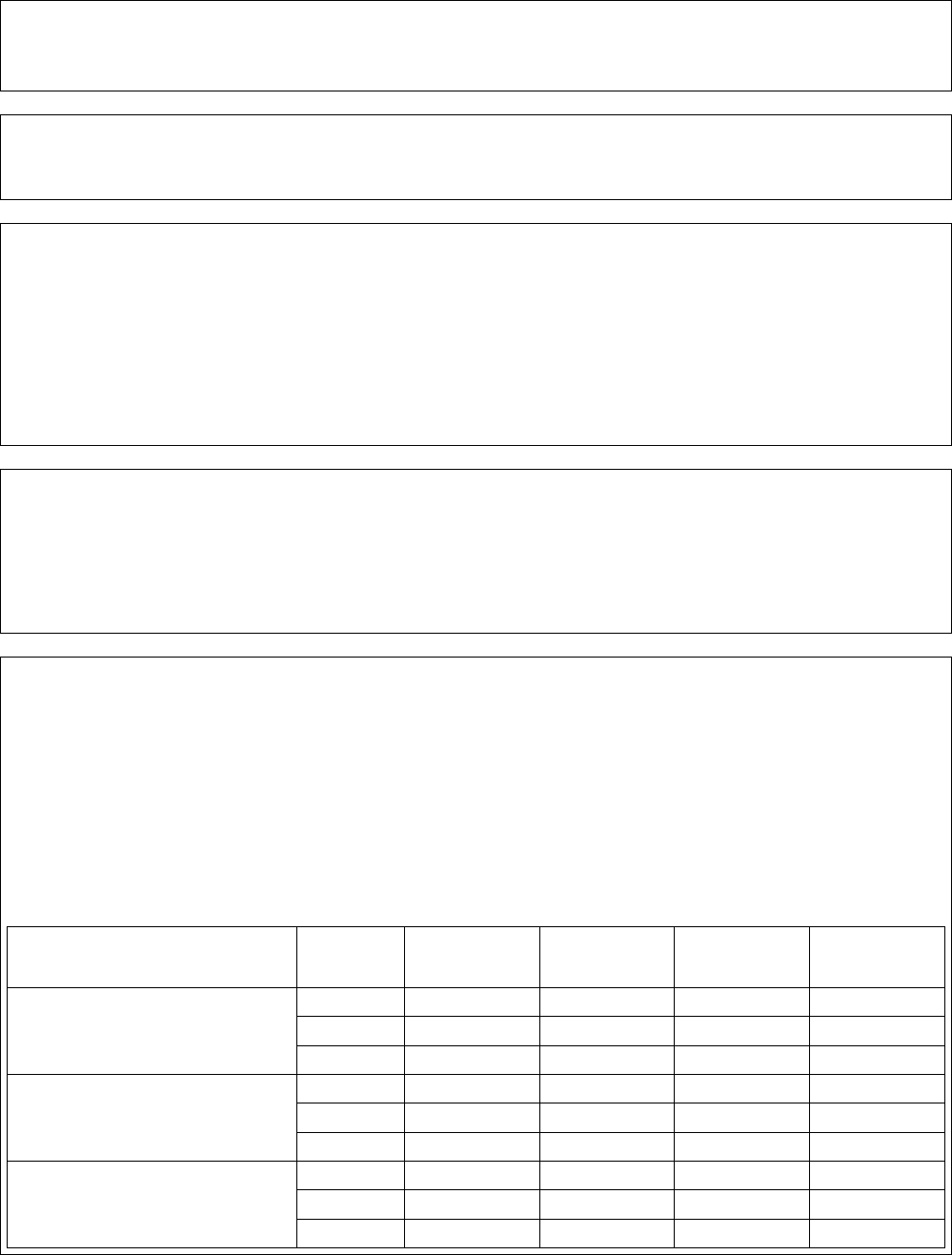
Energy Savings Scheme Rule of 2009
Effective from 19 June 2024
Page 133
Activity Definition D12
Name of Activity
INSTALL A HIGH EFFICIENCY GAS SPACE HEATER OR REPLACE AN EXISTING GAS SPACE HEATER WITH A
HIGH EFFICIENCY GAS SPACE HEATER
Eligibility Requirements
1. This activity must be an installation of a high efficiency Gas space heater or a replacement of an existing Gas space heater
with a high efficiency Gas space heater.
Equipment Requirements
1. The installed End-User Equipment must be a Gas space heating appliance as defined in AS4553 or AS/NZS 5263.1.3.
2. The installed End-User Equipment must be rated at a minimum of 5 stars in accordance with AS4553 or AS/NZS 5263.1.3,
listed in the Directory of Australian Gas Association (AGA) Certified Products and be certified for the fuel to which it will be
connected.
3. The installed End-User Equipment can be a Flued Radiant/Convection Heater, a Balanced Flue Convection Heater or a Wall
Furnace, as listed in the Directory of AGA Certified Products.
4. The installed End-User Equipment must have a capacity the same or smaller than the existing End-User Equipment it replaces,
in the case of replacement of a Gas space heater.
5. The installed End-User Equipment must have a warranty of at least 10 years for the heat exchanger.
Implementation Requirements
1. If there is any existing End-User Equipment, it must be disconnected and removed; these tasks must be performed or
supervised by a qualified person in accordance with relevant standards and legislation.
2. The End-User Equipment must be installed.
3. The activity must be performed or supervised by a qualified person in accordance with the End-User Equipment installation
instructions and in compliance with Gas work, electrical work and permanent wiring standards; and as required by other
relevant legislation, local regulations, and all local codes and regulatory authority requirements.
Activity Energy Savings
Deemed Activity Gas Savings = Gas Savings Factor
Where:
• Gas Savings Factor, in MWh per installed End-User Equipment, is the value from Table D12.1 corresponding to the installed
End-User Equipment Annual Energy Consumption and Star Rating; as well as the BCA climate zone where the Site is
situated.
• Annual Energy Consumption and Star Rating of the installed End-User Equipment are the values listed for the equipment in
the most recent version of Directory of AGA Certified Products.
• In cases where the Star Rating for the installed End-User Equipment is between increments, or above 5.50, it is rounded down
to the closest Star Rating.
Table D12.1 – Gas Savings Factor (MWh per installed End-User Equipment)
Annual Energy Consumption (MJ/y)
Star Rating
BCA Climate
Zones 2 & 3
BCA Climate
Zone 4
BCA Climate
Zones 5 & 6
BCA Climate
Zones 7 & 8
< 9000
5.00 Stars
0.19
0.52
0.28
0.95
5.25 Stars
0.20
0.57
0.31
1.05
5.50 Stars
0.21
0.63
0.33
1.16
9000 to 13000
5.00 Stars
0.39
1.45
0.68
2.83
5.25 Stars
0.42
1.62
0.75
3.18
5.50 Stars
0.46
1.79
0.82
3.52
> 13000
5.00 Stars
0.48
1.90
0.87
3.75
5.25 Stars
0.53
2.13
0.97
4.22
5.50 Stars
0.58
2.36
1.07
4.68
NSW Government Gazette
20 December 2023

Energy Savings Scheme Rule of 2009
Effective from 19 June 2024
Page 134
Lifetime (for information purposes only)
Lifetime = 10 years.
NSW Government Gazette
20 December 2023

Energy Savings Scheme Rule of 2009
Effective from 19 June 2024
Page 135
Activity Definition D13
Name of Activity
INSTALL A NATURAL ROOF SPACE VENTILATOR
Eligibility Requirements
1. The building must not have an existing ventilator installed.
2. There must be a continuous layer of roof or ceiling insulation present in the roof space.
Equipment Requirements
1. The End-User Equipment must be a single or multiple Natural Roof Space Ventilator(s).
2. The End-User Equipment Flow Coefficient (Cf) and Effective Aerodynamic Area (m
2
) must be rated in accordance with AS/
NZS 4740.
3. The total Effective Aerodynamic Area of the installed End-User Equipment must not exceed 1m
2
in a Residential Building and
must not exceed 2m
2
in a Small Business Site.
4. The End-User Equipment must have a warranty of at least 5 years.
Implementation Requirements
1. The activity must be performed by a person holding a suitable licence enabling work at the necessary height and in the roof
space in compliance with the relevant installation standards and legislation as outlined by SafeWork NSW.
2. The End-User Equipment must be installed on a roof of a Residential Building or Small Business Site.
Activity Electricity Savings
Deemed Activity Electricity Savings = Σ
Each Natural Roof Space Ventilator
(Effective Aerodynamic Area × Electricity Savings
Factor)
Where:
• Effective Aerodynamic Area, in m
2
, is the rated Effective Aerodynamic Area of the installed End-User Equipment in
accordance with AS/ NZS 4740.
• Electricity Savings Factor, in MWh/m
2
, is the lifetime Electricity Savings per m
2
of Effective Aerodynamic Area installed, as
specified in Table D13.1 or D13.2 below, according to the Equipment Type, Flow Coefficient and BCA Climate Zone.
Table D13.1 – Residential Building Electricity Savings Factors (MWh per m
2
Effective Aerodynamic Area installed)
Equipment Type
Flow
Coefficient,
Cf (greater
than or equal
to)
BCA Climate
Zones 2 & 3
BCA Climate
Zone 4
BCA Climate
Zone 5
BCA Climate
Zone 6
BCA Climate
Zones 7 & 8
Natural Roof Space
Ventilator
0.05
0.42
0.75
0.78
0.45
-
0.1
0.57
0.86
0.89
0.52
-
0.15
0.49
0.99
0.94
0.60
-
0.2
0.53
1.06
0.99
0.63
-
0.25
0.61
1.11
1.03
0.70
-
0.3
0.62
1.17
1.07
0.72
-
Table D13.2 – Small Business Site Electricity Savings Factors (MWh per m
2
Effective Aerodynamic Area installed)
Equipment Type
Flow
Coefficient,
Cf (greater
than or equal
to)
BCA Climate
Zones 2 & 3
BCA Climate
Zone 4
BCA Climate
Zone 5
BCA Climate
Zone 6
BCA Climate
Zones 7 & 8
0.05
2.26
1.67
1.95
1.42
0.85
NSW Government Gazette
20 December 2023

Energy Savings Scheme Rule of 2009
Effective from 19 June 2024
Page 136
Natural Roof Space
Ventilator
0.1
2.60
2.01
2.26
1.58
0.89
0.15
2.90
2.11
2.38
1.70
1.05
0.2
3.14
2.25
2.49
1.84
1.08
0.25
3.46
2.42
2.65
1.88
1.09
0.3
3.64
2.66
2.72
1.96
1.13
Lifetime (for information purposes only)
Lifetime = 10 years.
NSW Government Gazette
20 December 2023
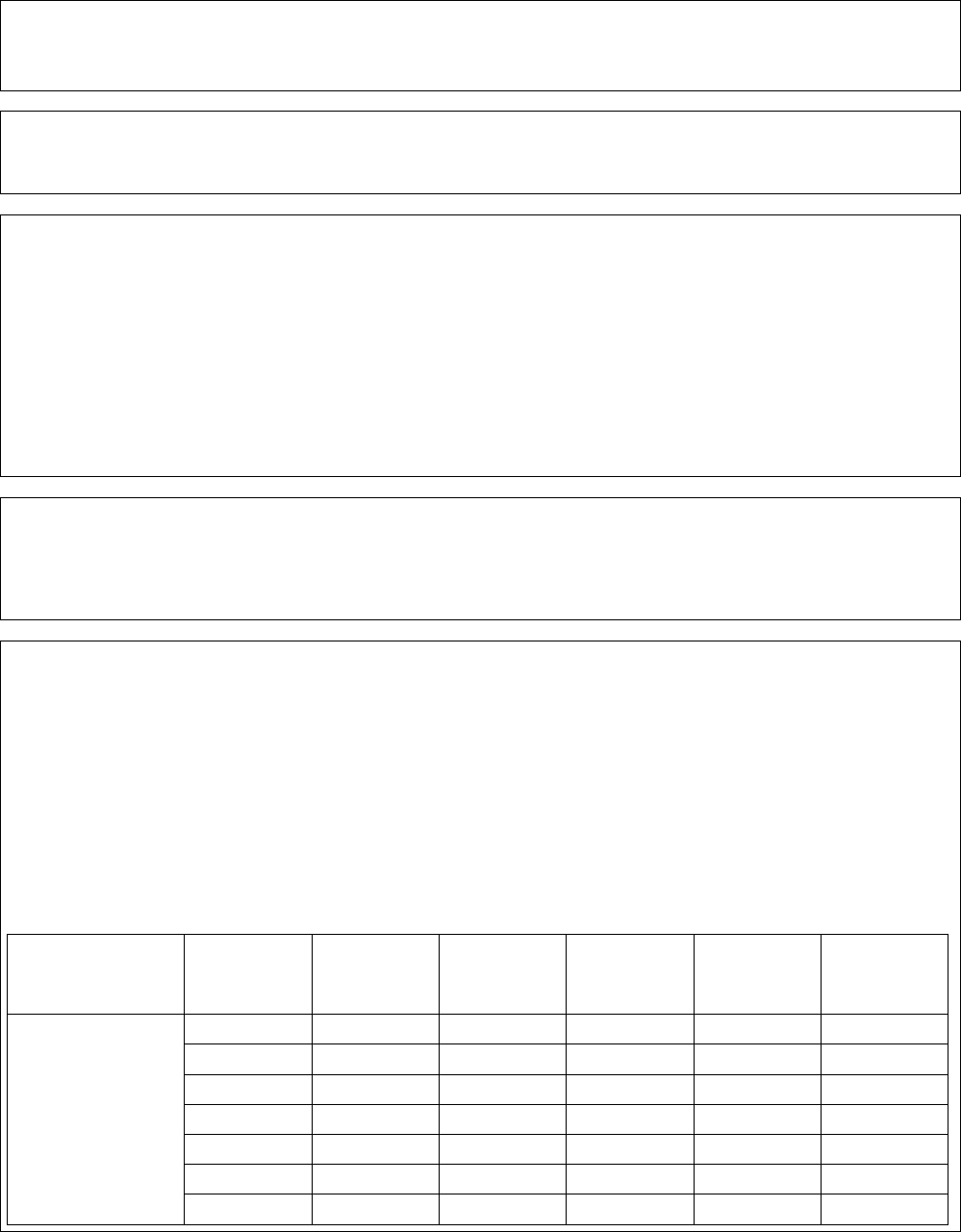
Energy Savings Scheme Rule of 2009
Effective from 19 June 2024
Page 137
Activity Definition D14
Name of Activity
INSTALL A FAN-FORCED ROOF SPACE VENTILATOR, PV POWERED FAN-FORCED ROOF SPACE
VENTILATOR OR AN OCCUPIED SPACE VENTILATOR
Eligibility Requirements
1. The building must not have an existing ventilator installed.
2. There must be continuous roof or ceiling insulation present in the roof space.
Equipment Requirements
1. The End-User Equipment must be a Fan-Forced Roof Space Ventilator, PV Powered Fan-Forced Roof Space Ventilator or an
Occupied Space Ventilator.
2. The End-User Equipment flowrate (m3/hr) and electrical power consumption (W), must be rated in accordance with AS ISO
5801.
3. The total Flow Rate of the installed End-User Equipment must not exceed 5000m
3
/h
in a Residential Building and must not
exceed 10000m
3
/h in a Small Business Site.
4. There must be a temperature sensor installed in the roof cavity with a controller to control air flow when installing a Fan-
Forced Roof Space Ventilator or a PV Powered Fan-Forced Roof Space Ventilator.
5. There must be a temperature and humidity sensor installed in the roof cavity and the occupied space with a controller to
control air flow when installing an Occupied Space Ventilator.
6. The End-User Equipment must have a warranty of at least 5 years.
Implementation Requirements
1. Any persons entering the roof space must hold a suitable licence enabling work at the necessary height and in the roof space in
compliance with the relevant installation standards and legislation as outlined by SafeWork NSW.
2. All electrical work must be performed or supervised by a Licensed electrician.
3. The End-User Equipment must be installed on a roof of a Residential Building or Small Business Site.
Activity Electricity Savings
Deemed Activity Electricity Savings = Σ
Each ventilator
(Flow Rate × Electricity Savings Factor)
Where:
• Flow Rate, in 1000m
3
/h, is the rated Flow Rate of the installed End-User Equipment in accordance with AS ISO 5801.
• Electricity Savings Factor, in MWh/(1000m
3
/h), is the lifetime Electricity Savings per 1000m
3
/h of Flow Rate installed, as
specified in table D14.1 or D14.2 below, according to the Equipment Type, Ratio of Flow Rate per Power, and BCA Climate
Zone.
• Ratio of Flow Rate per Power (m
3
/Wh) is the Flow Rate, in 1000m
3
/h divided by electrical power consumption (W). If
multiple speeds are available, use the Ratio of Flow Rate per Power of the manufacturer's recommended speed or, if there is
no speed recommended by the manufacturer, the speed with lowest Ratio of Flow Rate per Power.
Table D14.1 Residential Building Electricity Savings Factors (MWh per 1000m
3
/h Flow Rate installed)
Equipment Type
Ratio of Flow
Rate per
Power
(m
3
/Wh)
BCA Climate
Zones 2 & 3
BCA Climate
Zone 4
BCA Climate
Zone 5
BCA Climate
Zone 6
BCA Climate
Zones 7 & 8
Fan-forced Roof
Space Ventilators
10
-
-
-
-
-
20
-
-
-
-
-
30
-
-
-
-
-
40
-
-
0.01
0.03
-
50
-
0.02
0.04
0.07
0.01
75
-
0.08
0.09
0.12
0.04
100
0.03
0.12
0.12
0.14
0.06
NSW Government Gazette
20 December 2023

Energy Savings Scheme Rule of 2009
Effective from 19 June 2024
Page 138
PV Powered Fan-
Forced Roof Space
Ventilators
10
-
-
-
-
-
-
20
-
-
0.01
0.03
-
30
-
0.05
0.07
0.09
0.03
40
0.01
0.09
0.10
0.12
0.05
50
0.03
0.12
0.12
0.14
0.06
75
0.05
0.15
0.14
0.17
0.07
100
0.06
0.17
0.16
0.18
0.08
Occupied Space
Ventilator
10
-
-
-
-
-
20
0.24
0.10
0.14
0.26
-
30
0.32
0.22
0.25
0.37
-
40
0.36
0.28
0.31
0.42
-
50
0.38
0.32
0.34
0.46
-
75
0.41
0.36
0.38
0.50
-
100
0.43
0.39
0.41
0.52
-
Table D14.2 Small Business Site Electricity Savings Factors (MWh per 1000m3/h Flow Rate installed)
Equipment Type
Ratio of Flow
Rate per
Power
(m
3
/Wh)
BCA Climate
Zones 2 & 3
BCA Climate
Zone 4
BCA Climate
Zone 5
BCA Climate
Zone 6
BCA Climate
Zones 7 & 8
Fan-forced Roof
Space Ventilators
10
-
-
-
-
-
20
-
-
-
-
-
30
-
-
-
-
-
40
-
-
-
-
-
50
-
-
0.03
-
-
75
0.00
0.03
0.07
0.00
-
100
0.01
0.06
0.09
0.03
0.00
PV Powered Fan-
Forced Roof Space
Ventilators
10
-
-
-
-
-
20
-
-
-
-
-
30
-
0.00
0.05
-
-
40
0.01
0.04
0.07
0.01
-
50
0.02
0.06
0.09
0.03
0.00
75
0.04
0.09
0.11
0.05
0.02
100
0.04
0.11
0.12
0.06
0.02
Occupied Space
Ventilator
10
3.51
2.03
3.04
2.36
1.84
20
4.49
3.16
4.12
3.34
2.58
30
4.82
3.53
4.48
3.66
2.82
40
4.98
3.72
4.66
3.83
2.95
50
5.08
3.83
4.77
3.92
3.02
75
5.21
3.98
4.91
4.05
3.12
100
5.27
4.06
4.98
4.12
3.17
Lifetime (for information purposes only)
Lifetime = 10 years.
NSW Government Gazette
20 December 2023
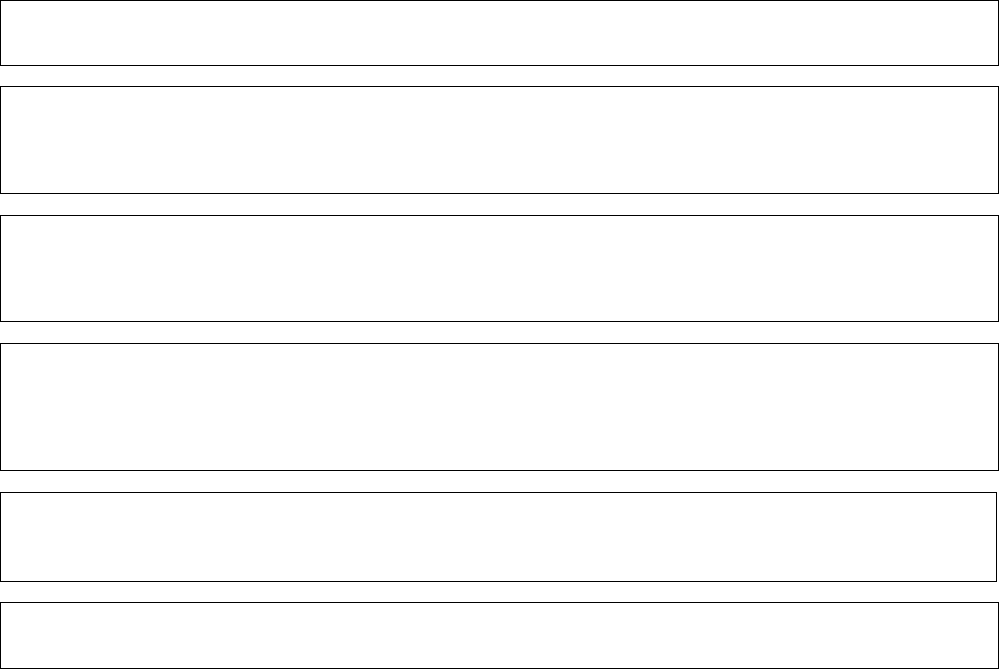
Energy Savings Scheme Rule of 2009
Effective from 19 June 2024
Page 139
Activity Definition D15
Name of Activity
REPLACE AN EXHAUST FAN WITH A SELF SEALING EXHAUST FAN
Eligibility Requirements
1. The Site must be a Residential Building.
2. An existing exhaust fan unit must be present at the Site.
3. Only exhaust fans that exhaust air directly to the outside of the building can be replaced.
Equipment Requirements
1. The exhaust fan must be fitted with a self-closing damper, flap, filter (for instance, of a type commonly fitted to a kitchen
range hood) or other sealing product that can be closed to seal the exhaust of a fan.
2. The End-User Equipment must have a warranty of at least 2 years.
Implementation Requirements
1. The existing exhaust fan unit must be removed from the Site and decommissioned.
2. The End-User Equipment must be installed in strict accordance with the manufacturer’s instructions.
3. All electrical work must be performed or supervised by a Licensed electrician.
4. The exhaust fan unit must comply with any relevant AS/NZS as required by the Scheme Administrator.
Activity Energy Savings
Deemed Activity Electricity Savings = 0.91 MWh (per exhaust fan)
Lifetime (for information purposes only)
Lifetime = 5 years
NSW Government Gazette
20 December 2023

Energy Savings Scheme Rule of 2009
Effective from 19 June 2024
Page 140
Activity Definition D16
Name of Activity
INSTALL A NEW HIGH EFFICIENCY AIR CONDITIONER OR REPLACE AN EXISTING AIR CONDITIONER WITH A
HIGH EFFICIENCY AIR CONDITIONER
Eligibility Requirements
1. This activity must be an installation of a new high efficiency air conditioner or a replacement of an existing air conditioner
(whether operational or not) with a high efficiency air conditioner.
Equipment Requirements
1. The New End-User Equipment or replacement End-User Equipment must be registered in the GEMS Registry as complying
with the Greenhouse and Energy Minimum Standards (Air Conditioners up to 65kW) Determination 2019.
2. If the New End-User Equipment or replacement End-User Equipment has a Cooling Capacity recorded in the GEMS Registry:
a. It must have a Residential TCSPF_mixed value, as recorded in the GEMS Registry, equal to or greater than the
Minimum Residential TCSPF_mixed value for the corresponding Product Type and Cooling Capacity in Table
D16.4; or
b. If it does not have a Residential TCSPF_mixed value recorded in the GEMS Registry, then it must have aRated
AEER in the GEMS Registry equal to or greater than the Minimum Rated AEER for the Product Type and Cooling
Capacity in Table D16.5.
3. If the New End-User Equipment or replacement End-User Equipment has a Heating Capacity recorded in the GEMS Registry,
and is installed in the hot or average zone as defined in Table A27:
a. It must have a Residential HSPF_mixed value, as recorded in the GEMS Registry, equal to or greater than the
Minimum Residential HSPF_mixed value for the same Product Type and Cooling Capacity in Table D16.4; or
b. If it does not have a Residential HSPF_mixed value recorded in the GEMS Registry, then it must have a Rated ACOP
in the GEMS Registry equal to or greater than the Minimum Rated ACOP for the same Product Type and Cooling
Capacity in Table D16.5.
4. If the New End-User Equipment or replacement End-User Equipment has a Heating Capacity recorded in the GEMS Registry,
and is installed in the cold zone as defined in Table A27:
a. It must have a Residential HSPF_cold value, as recorded in the GEMS Registry, equal to or greater than the
Minimum Residential HSPF_cold value for the same Product Type and Cooling Capacity in Table D16.4; or
b. If it does not have a Residential HSPF_cold value recorded in the GEMS Registry, then it must have a Rated ACOP
in the GEMS Registry equal to or greater than the Minimum Rated ACOP for the same Product Type and Cooling
Capacity in Table D16.5.
Implementation Requirements
1. The existing End-User Equipment must be removed.
2. The New End-User Equipment or replacement End-User Equipment must be installed.
3. The activity, including the removal of any existing End-User Equipment, must be performed or supervised by a suitably
qualified licence holder in compliance with the relevant standards and legislation.
Activity Energy Savings
Equation D16.1
Deemed Activity Electricity Savings = [(Reference Cooling Annual Energy Use - Cooling Annual Energy Use) + (Reference Heating
Annual Energy Use - Heating Annual Energy Use)] × Lifetime / 1000
Where:
• Reference Cooling Annual Energy Use and Reference Heating Annual Energy Use, in kWh/y, are calculated using Equation
D16.2 and D16.3 respectively;
• Cooling Annual Energy Use and Heating Annual Energy Use, in kWh/y, are the values of energy use on the Zoned Energy
Rating Label of the New End User Equipment or replacement End-User Equipment for the zone in which the product is
installed, as defined in Table A27
o If the New End User Equipment or replacement End-User Equipment does not have a Zoned Energy Rating Label,
Cooling Annual Energy Use and Heating Annual Energy Use are equal to the values of Residential tcec and
Residential thec as recorded in the GEMS Registry, for the zone in which the product is installed, as defined in
Table A27; or
NSW Government Gazette
20 December 2023
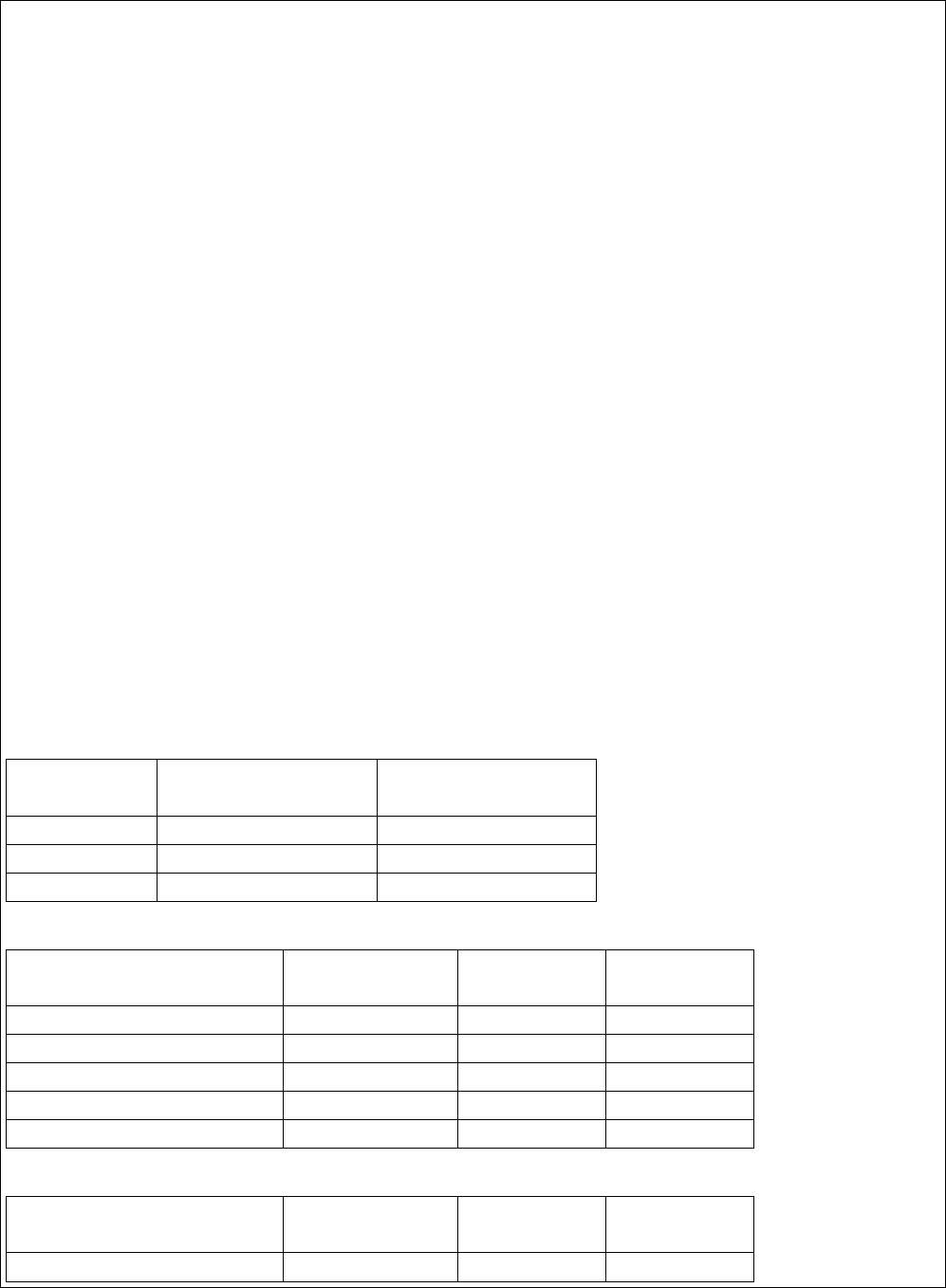
Energy Savings Scheme Rule of 2009
Effective from 19 June 2024
Page 141
o If the New or replacement End-User Equipment does not have a Zoned Energy Rating Label and does not have
Residential tcec and Residential thec values as recorded in the GEMS Registry, the Cooling Annual Energy Use and
Heating Annual Energy Use are determined using Equations D16.4 and D16.5 respectively; and
• Lifetime, in years, is specified in Table D16.6.
Equation D16.2
Reference Cooling Annual Energy Use = Cooling Capacity × Equivalent Cooling Hours / Baseline Cooling AEER
Equation D16.3
Reference Heating Annual Energy Use = Heating Capacity × Equivalent Heating Hours / Baseline Heating ACOP
Where:
• Cooling Capacity and Heating Capacity, in kW, are the values of Cooling Capacity at 35°C and Heating Capacity at 7°C
respectively on the energy rating label of the New End User Equipment or replacement End-User Equipment as recorded in
the GEMS Registry;
• Equivalent Cooling Hours and Equivalent Heating Hours, in h/y, are specified in Table D16.1, according to the climate zone
in which the product is installed, as defined in Table A27; and
• Baseline Cooling AEER and Baseline Heating ACOP are specified in Table D16.2 (for new) and Table D16.3 (for
replacement), according to the Product Type and Cooling Capacity.
Equation D16.4
Cooling Annual Energy Use = Cooling Capacity × Equivalent Cooling Hours / Rated AEER
Equation D16.5
Heating Annual Energy Use = Heating Capacity × Equivalent Heating Hours / Rated ACOP
Where:
• Cooling Capacity and Heating Capacity, in kW, are the values of Cooling Capacity at 35°C and Heating Capacity at 7°C
respectively on the energy rating label of the New End User Equipment or replacement End-User Equipment as recorded in
the GEMS Registry;
• Equivalent Cooling Hours and Equivalent Heating Hours, in h/y, are specified in Table D16.1, according to the climate zone
in which the product is installed, as defined in Table A27; and
• Rated AEER and Rated ACOP are the New End User Equipment or replacement End-User Equipment’s Rated AEER and
Rated ACOP as recorded in the GEMS Registry.
Table D16.1 – Equivalent Cooling and Heating Hours (h/y) as derived from AS/NZS 3823.4
Equivalent Cooling Hours
(h/y)
Equivalent Heating Hours
(h/y)
Hot Zone
1274
109
Average Zone
429
648
Cold Zone
285
1534
Table D16.2 – Baseline AEER and Baseline ACOP for a new air conditioner
Product Type
Cooling Capacity, R
(kW)
Baseline Cooling
AEER
Baseline Heating
ACOP
Air-air, Non-Ducted
R < 4
3.66
2.33
Air-air, Non-Ducted
4 ≤ R < 10
3.22
2.11
Air-air, Ducted
R < 10
3.1
2.05
Air-air, Ducted or Non-Ducted
10 ≤ R < 39
3.1
2.05
Air-air, Ducted or Non-Ducted
39 ≤ R ≤ 65
2.9
1.95
Table D16.3 – Baseline AEER and Baseline ACOP for a replacement air conditioner
Product Type
Cooling Capacity, R
(kW)
Baseline Cooling
AEER
Baseline Heating
ACOP
Air-air, Non-Ducted
R < 4
3.33
2.17
NSW Government Gazette
20 December 2023
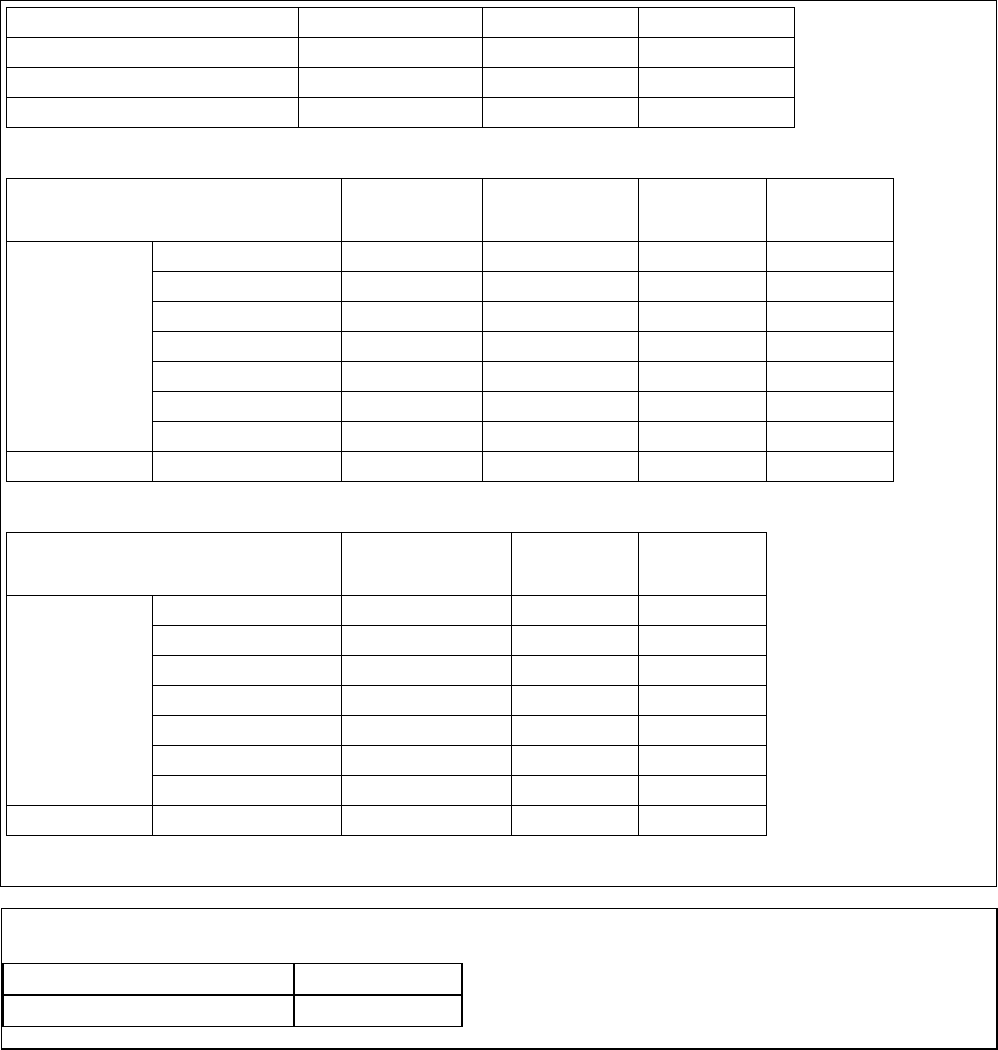
Energy Savings Scheme Rule of 2009
Effective from 19 June 2024
Page 142
Air-air, Non-Ducted
4 ≤ R < 10
2.93
1.97
Air-air, Ducted
R < 10
2.8
1.90
Air-air, Ducted or Non-Ducted
10 ≤ R < 39
2.8
1.90
Air-air, Ducted or Non-Ducted
39 ≤ R ≤ 65
2.75
1.88
Table D16.4 – Residential Minimum TCSPF/HSPF Requirement
Product Type
Cooling
Capacity, R
(kW)
Minimum
Residential
TCSPF_mixed
Minimum
Residential
HSPF_mixed
Minimum
Residential
HSPF_cold
Air-air, Split
Systems
Non-Ducted
R < 4
5.5
4.5
4.0
Non-Ducted
4 ≤ R < 6
5.0
4.0
3.5
Non-Ducted
6 ≤ R < 10
4.5
4.0
3.5
Ducted
R < 10
4.0
4.0
3.5
Ducted or Non-Ducted
10 ≤ R < 13
4.0
4.0
3.5
Ducted or Non-Ducted
13 ≤ R < 25
4.0
3.5
3.0
Ducted or Non-Ducted
25 ≤ R ≤ 65
4.0
3.0
2.5
Air-air, Unitary
Ducted or Non-Ducted
R ≤ 65
3.0
2.5
2.0
Table D16.5 – Minimum Rated AEER/ACOP Requirement*
Product Type
Cooling Capacity,
R (kW)
Minimum
Rated AEER
Minimum
Rated ACOP
Air-air, Split
Systems
Non-Ducted
R < 4
4.3
4.4
Non-Ducted
4 ≤ R < 6
3.6
3.9
Non-Ducted
6 ≤ R < 10
3.5
3.7
Ducted
R < 10
3.5
3.8
Ducted or Non-Ducted
10 ≤ R < 13
3.5
3.9
Ducted or Non-Ducted
13 ≤ R < 25
3.3
3.7
Ducted or Non-Ducted
25 ≤ R ≤ 65
3.2
3.7
Air-air, Unitary
Ducted or Non-Ducted
R ≤ 65
3.3
3.3
*Only to be used if there is no TCSPF/HSPF data recorded in the GEMS registry.
Lifetime (for information purposes only)
Table D16.6
End-User Equipment type
Years
All
10
NSW Government Gazette
20 December 2023
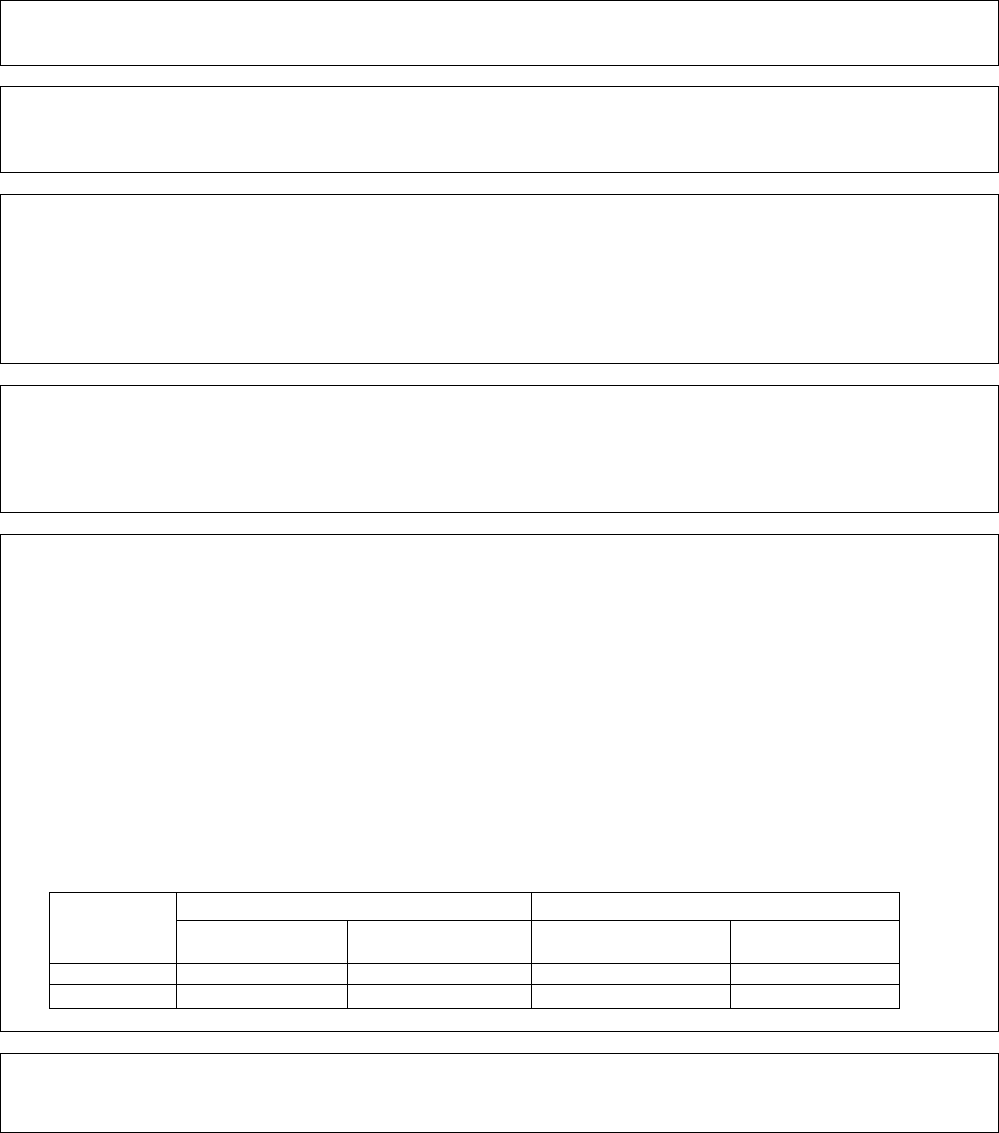
Energy Savings Scheme Rule of 2009
Effective from 19 June 2024
Page 143
Activity Definition D17
Name of Activity
REPLACE AN EXISTING ELECTRIC WATER HEATER WITH AN (AIR SOURCE) HEAT PUMP WATER HEATER
Eligibility Requirements
1. The existing electric water heater must be an electric resistance storage or instantaneous water heater.
2. The existing electric water heater does not have to be in working order at the time of replacement.
Equipment Requirements
1. The installed End-User Equipment must be an air source heat pump water heater as defined in AS/NZS 4234.
2. The installed End-User Equipment must be certified to AS/NZS 2712.
3. The installed End-User Equipment must achieve minimum annual energy savings, when determined as an air sourced heat
pump using a small or medium thermal peak load System Size in accordance with AS/NZS 4234 of:
o 60% when modelled in AS/NZS 4234 climate zone HP3-AU;
o 60% when modelled in AS/NZS 4234 climate zone HP5-AU;
Implementation Requirements
1. The existing End-User Equipment must be removed.
2. The replacement End-User Equipment must be installed at a Site in accordance with the Equipment Requirements.
3. The activity, including the removal of any existing End-User Equipment, must be performed or supervised by a suitably
qualified licence holder in compliance with the relevant standards and legislation.
Equipment Energy savings
Deemed Activity Electricity Savings = Baseline A - a × (Bs + Be)
Where corresponding to the System Size and AS/NZS 4234 climate zone of the installed End-User Equipment in Table D17.1:
• Baseline A is the baseline energy consumption of the End-User Equipment in MWh.
• Bs is the annual supplementary energy, in GJ, used by the installed End-User Equipment determined in accordance with
AS/NZS 4234 and accepted in a manner determined by the Scheme Administrator.
• Be is the annual electrical energy used by the auxiliary equipment, in GJ, of the End-User Equipment determined in
accordance with AS/NZS 4234 and accepted in a manner determined by the Scheme Administrator.
• a = is the adjustment coefficient for hot water load and the installed End-User Equipment type.
• System Size is the small or medium thermal peak load size of the system determined in accordance with AS/NZS 4234 and
accepted in a manner determined by the Scheme Administrator.
Table D17.1 – Baseline energy consumption by system size
System
Size
AS/NZS 4234 climate zone HP3-AU
AS/NZS 4234 climate zone HP5-AU
Baseline A (MWh)
adjustment
coefficient (a)
Baseline A (MWh)
adjustment
coefficient (a)
Small
23.18
2.291
25.43
2.310
Medium
35.14
2.291
38.49
2.310
Lifetime
Lifetime = 12 years
NSW Government Gazette
20 December 2023
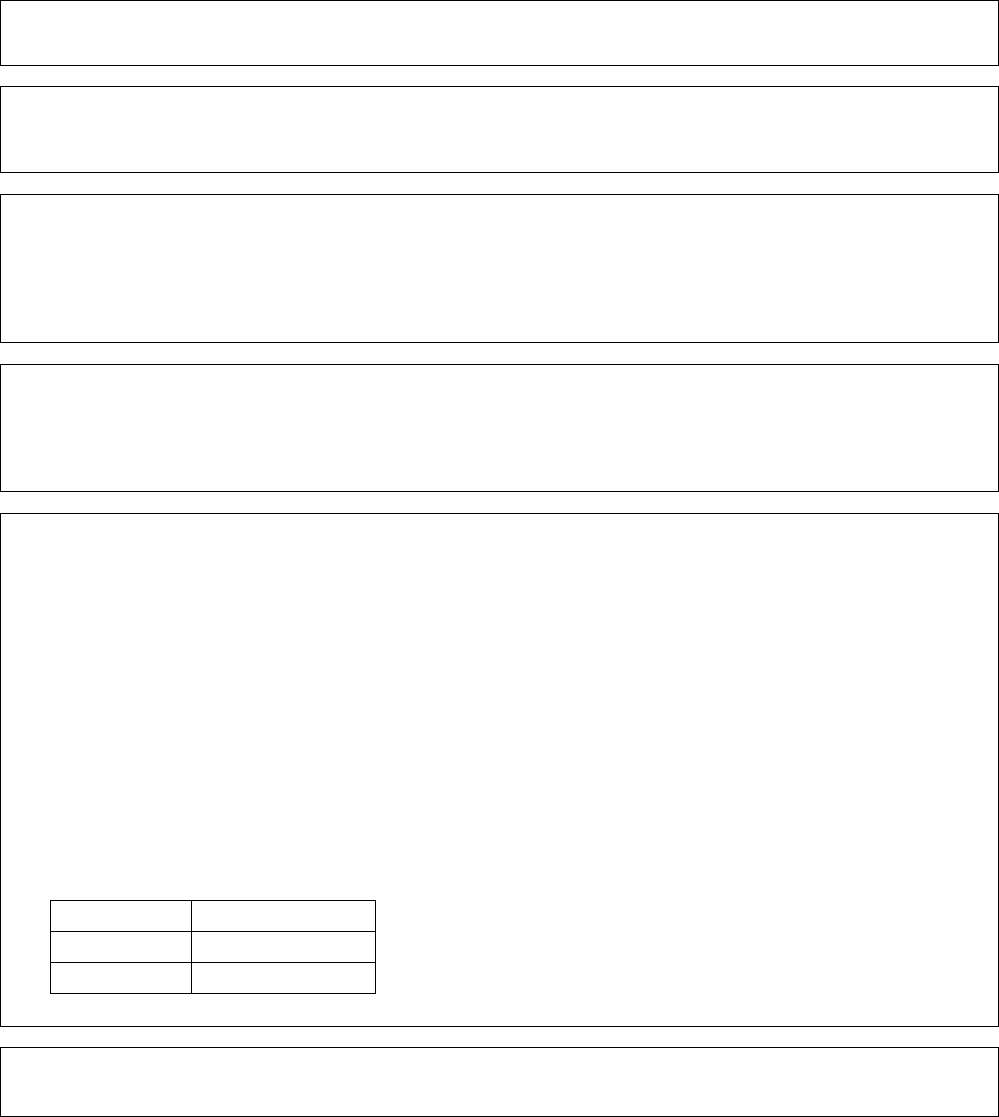
Energy Savings Scheme Rule of 2009
Effective from 19 June 2024
Page 144
Activity Definition D18
Name of Activity
REPLACE AN EXISTING ELECTRIC WATER HEATER WITH A SOLAR (ELECTRIC BOOSTED) WATER HEATER
Eligibility Requirements
1. The existing electric water heater must be an electric resistance storage or instantaneous water heater.
2. The existing electric water heater does not have to be in working order at time of replacement.
Equipment Requirements
1. The installed End-User Equipment must be a solar water heater with a collector as defined in AS/NZS 4234.
2. The installed End-User Equipment must be certified to AS/NZS 2712.
5. The installed End-User Equipment must achieve minimum annual energy savings of 60% when determined as a solar thermal
collector system with supplementary electric resistive heating in AS/NZS 4234 solar water heater climate zone 3 using a small
or medium thermal peak load in accordance with AS/NZS 4234, for all Sites in an ESS Jurisdiction.
Implementation Requirements
1. The existing End-User Equipment must be removed.
2. The replacement End-User Equipment must be installed at a Site in accordance with the Equipment Requirements.
3. The activity, including the removal of any existing End-User Equipment, must be performed or supervised by a suitably
qualified licence holder in compliance with the relevant standards and legislation.
Equipment Energy savings
Deemed Activity Electricity Savings = Baseline A - a × (Bs + Be)
Where:
• Baseline A is the baseline energy consumption of the End-User Equipment in MWh, corresponding to the System Size of the
installed End-User Equipment in Table D18.1.
• Bs is the Annual supplementary energy, in GJ, used by the End-User Equipment determined in accordance with AS/NZS 4234
and accepted in a manner determined by the Scheme Administrator.
• Be is the annual an electricity consumption by the auxiliary equipment, in GJ, of the End-User Equipment determined in
accordance with AS/NZS 4234 and accepted in a manner determined by the Scheme Administrator.
• a =2.310 is the adjustment coefficient for hot water load and the installed End-User Equipment type.
• System Size is the small or medium thermal peak load size of the system determined in accordance with AS/NZS 4234 and
accepted in a manner determined by the Scheme Administrator.
Table D18.1 – Baseline energy consumption by system size
System Size
Baseline A (MWh)
Small
28.98
Medium
43.93
Lifetime
Lifetime = 15 years
NSW Government Gazette
20 December 2023
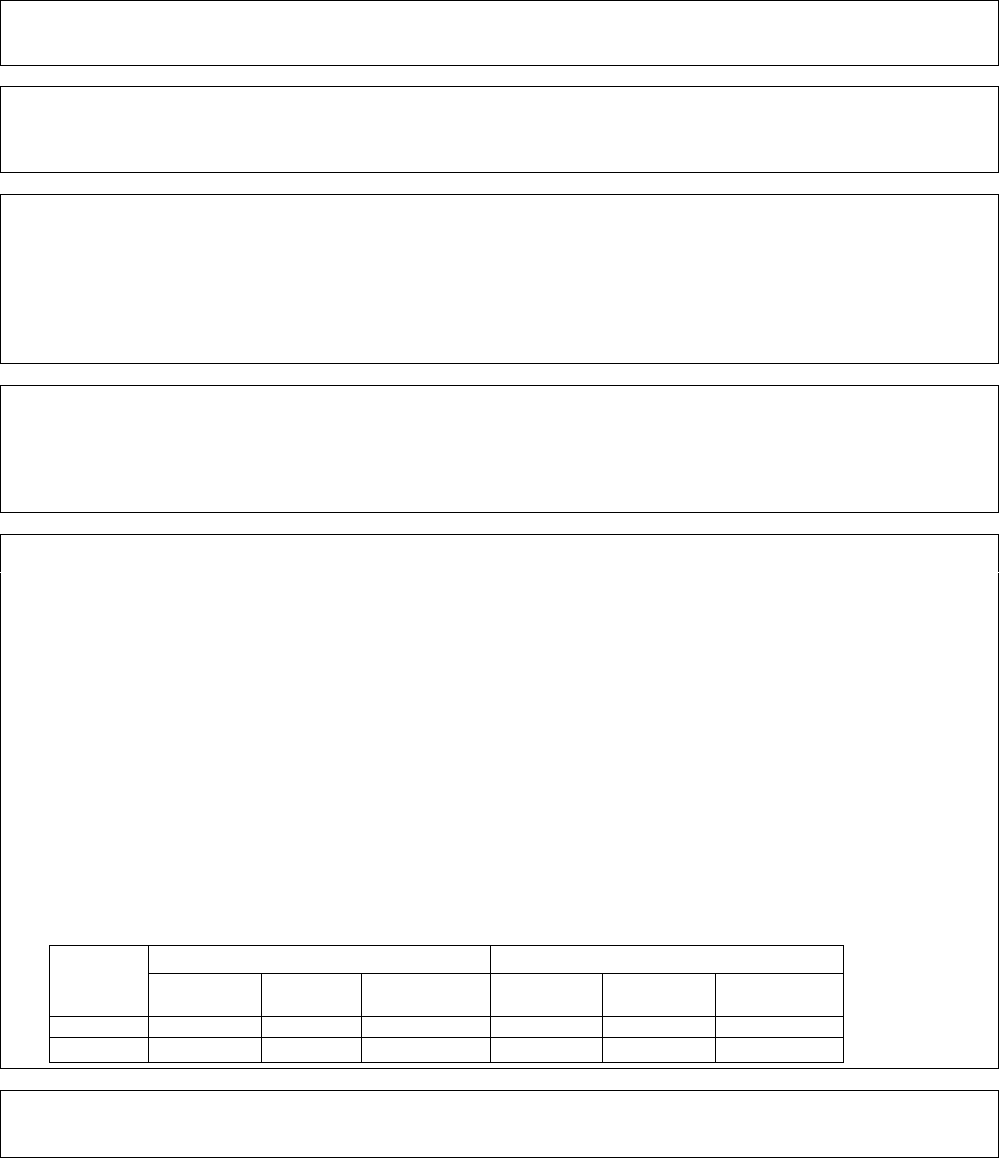
Energy Savings Scheme Rule of 2009
Effective from 19 June 2024
Page 145
Activity Definition D19
Name of Activity
REPLACE AN EXISTING GAS WATER HEATER WITH AN AIR SOURCE HEAT PUMP WATER HEATER
Eligibility Requirements
1. The existing gas water heater must be a gas storage or instantaneous water heater.
2. The existing gas water heater does not have to be in working order at time of replacement.
Equipment Requirements
1. The installed End-User Equipment must be an air source heat pump water heater as defined in AS/NZS 4234.
2. The installed End-User equipment must be certified to AS/NZS 2712.
3. The installed End-User equipment must achieve minimum annual energy savings, when determined as an air sourced heat
pump using a small or medium thermal peak load System Size in accordance with AS/NZS 4232, of:
o 60% when modelled in climate zone HP3-AU.
o 60% when modelled in climate zone HP5-AU.
Implementation Requirements
1. The existing End-User Equipment must be removed.
2. The replacement End-User Equipment must be installed at a Site in accordance with the Equipment Requirements.
3. The activity, including the removal of any existing End-User Equipment, must be performed or supervised by a suitably
qualified licence holder in compliance with the relevant standards and legislation.
Equipment Energy savings
Deemed Activity Electricity Savings = Baseline A - a × (Bs + Be)
Deemed Activity Gas Savings = Baseline B
Where corresponding to the System Size and AS/NZS 4234 climate zone of the installed End-User Equipment in Table D19.1:
• Baseline A is the baseline electrical energy consumption of the End-User Equipment in MWh.
• Baseline B is the baseline gas energy consumption of the End-User Equipment in MWh, corresponding to the system size of
the installed End-User Equipment in Table D19.1.
• Bs is the Annual supplementary energy, in GJ, used by the installed End-User Equipment determined in accordance with
AS/NZS 4234 and accepted in a manner determined by the Scheme Administrator.
• Be is the annual electrical energy used by the auxiliary equipment, in GJ, of the installed End-User Equipment determined in
accordance with AS/NZS 4234 and accepted in a manner determined by the Scheme Administrator.
• a = is the adjustment coefficient for hot water load and the installed End-User Equipment type.
• System Size is the small or medium thermal peak load size of the system determined in accordance with AS/NZS 4234 and
accepted in a manner determined by the Scheme Administrator.
Table D19.1 – Baseline energy consumption by system size
System
Size
AS/NZS 4234 climate zone HP3-AU
AS/NZS 4234 climate zone HP5-AU
Baseline A
(MWh)
Baseline
B (MWh)
adjustment
coefficient (a)
Baseline A
(MWh)
Baseline B
(MWh)
adjustment
coefficient (a)
Small
0.58
28.029
2.291
0.58
31.650
2.310
Medium
0.58
47.337
2.291
0.58
52.750
2.310
Lifetime
Lifetime = 12 years
NSW Government Gazette
20 December 2023

Energy Savings Scheme Rule of 2009
Effective from 19 June 2024
Page 146
Activity Definition D20
Name of Activity
REPLACE AN EXISTING GAS WATER HEATER WITH A SOLAR (ELECTRIC BOOSTED) WATER HEATER
Eligibility Requirements
1. The existing gas water heater must be a gas storage or instantaneous water heater.
2. The existing gas water heater does not have to be in working order at time of replacement.
Equipment Requirements
1. The installed End-User Equipment must be a solar water heater with a collector as defined in AS/NZS 4234.
2. The installed End-User Equipment must be certified to AS/NZS 2712.
3. The installed End-User Equipment must achieve minimum annual energy savings of 60% when determined as a solar thermal
collector system with supplementary electric resistive heating in AS/NZS 4234 solar water heater climate zone 3 using a
small or medium thermal peak load in accordance with AS/NZS 4234, for all Sites in an ESS Jurisdiction.
Implementation Requirements
1. The existing End-User Equipment must be removed.
2. The replacement End-User Equipment must be installed at a Site in accordance with the Equipment Requirements.
3. The activity, including the removal of any existing End-User Equipment, must be performed or supervised by a suitably
qualified licence holder in compliance with the relevant standards and legislation.
Equipment Energy savings
Deemed Activity Electricity Savings = Baseline A - a × (Bs + Be)
Deemed Activity Gas Savings = Baseline B
Where:
• Baseline A is the baseline energy consumption of the End-User Equipment in MWh, corresponding to the System Size of the
installed End-User Equipment in Table D20.1.
• Baseline B is the baseline gas energy consumption of the End-User Equipment in MWh, corresponding to the system size of
the installed End-User Equipment in Table D20.1.
• Bs is the Annual supplementary energy, in GJ, used by the installed End-User Equipment determined in accordance with
AS/NZS 4234 and accepted in a manner determined by the Scheme Administrator.
• Be is the annual electrical energy used by the auxiliary equipment, in GJ, of the installed End-User Equipment determined in
accordance with AS/NZS 4234 and accepted in a manner determined by the Scheme Administrator.
• a = 2.310is the adjustment coefficient for hot water load and the installed End-User Equipment type.
• System Size is the small or medium thermal peak load size of the system determined in accordance with AS/NZS 4234 and
accepted in a manner determined by the Scheme Administrator.
Table D20.1 – Baseline energy consumption by system size
System Size
Baseline A (MWh)
Baseline B (MWh)
Small
0.73
35.036
Medium
0.73
59.171
Lifetime
Lifetime = 15 years
NSW Government Gazette
20 December 2023
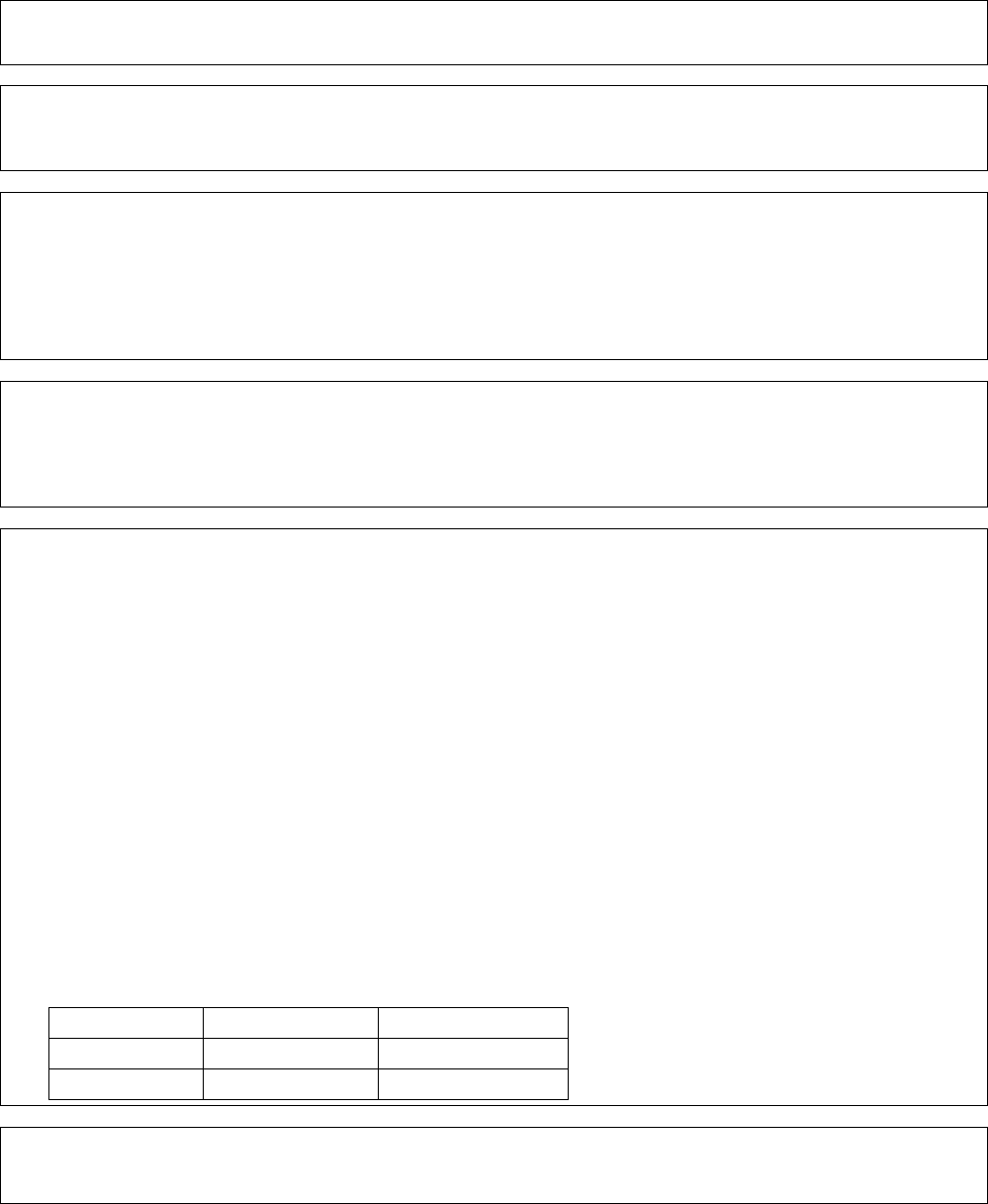
Energy Savings Scheme Rule of 2009
Effective from 19 June 2024
Page 147
Activity Definition D21
Name of Activity
REPLACE AN EXISTING GAS WATER HEATER WITH A SOLAR (GAS BOOSTED) WATER HEATER
Eligibility Requirements
1. The existing gas water heater must be a gas storage or instantaneous water heater.
2. The existing gas water heater does not have to be in working order at time of replacement.
Equipment Requirements
1. The installed End-User Equipment must be a solar water heater with a collector as defined in AS/NZS 4234.
2. The installed End-User Equipment must be certified to AS/NZS 2712.
3. The installed End-User Equipment must achieve minimum annual energy savings of 60% when determined as a solar thermal
collector system with supplementary gas combustion heating through heat exchangers in AS/NZS 4234 solar water heater
climate zone 3 using a small or medium peak thermal load in accordance with AS/NZS 4234, for all Sites in an ESS
Jurisdiction.
Implementation Requirements
1. The existing End-User Equipment must be disconnected and removed.
2. The replacement End-User Equipment must be installed at a Site in accordance with the Equipment Requirements.
3. The activity, including the removal of any existing End-User Equipment, must be performed or supervised by a suitably
qualified licence holder in compliance with the relevant standards and legislation.
Equipment Energy savings
Deemed Activity Electricity Savings = Baseline A - b × Be
Deemed Activity Gas Savings = Baseline B - a × Bs
Where:
• Baseline A is the baseline energy consumption of the End-User Equipment in MWh, corresponding to the System Size of the
installed End-User Equipment in Table D21.1.
• Baseline B is the baseline energy consumption of the End-User Equipment in MWh, corresponding to the System Size of the
installed End-User Equipment in Table D21.1.
• Bs is the Annual supplementary energy, in GJ, used by the installed End-User Equipment determined in accordance with
AS/NZS 4234 and accepted in a manner determined by the Scheme Administrator.
• Be is the annual electrical energy used by the auxiliary equipment, in GJ, of the installed End-User Equipment determined in
accordance with AS/NZS 4234 and accepted in a manner determined by the Scheme Administrator.
• a = 2.322is the adjustment coefficient for hot water load and the installed End-User Equipment type.
• b = 4.167 is the adjustment coefficient for the installed End-User Equipment type.
• System Size is the small or medium thermal peak load size of the system determined in accordance with AS/NZS 4234 and
accepted in a manner determined by the Scheme Administrator.
Table D21.1 – Baseline energy consumption by system size
System Size
Baseline A (MWh)
Baseline B (MWh)
Small
0.73
35.036
Medium
0.73
59.171
Lifetime
Lifetime = 15 years
NSW Government Gazette
20 December 2023

Energy Savings Scheme Rule of 2009
Effective from 19 June 2024
Page 148
Schedule E – Activity Definitions for Low-Cost Activities for Home Energy Efficiency Retrofits (clause
9.8)
Activity Definition E1
Name of Activity
REPLACE HALOGEN DOWNLIGHT WITH AN LED LUMINAIRE AND/OR LAMP
Eligibility Requirements
1. The existing Lamp must be a Tungsten halogen Lamp (240V), Tungsten halogen Lamp (ELV), or Infrared coated (IRC)
halogen Lamp (ELV) as defined in Table A9.1 of Schedule A.
2. The existing Lamp must be a multifaceted reflector Lamp.
3. The existing Lamp must be rated at either 35W or 50W.
4. The existing Lamp and Luminaire must be in working order.
Equipment Requirements
1. The new End-User Equipment must be a LED Lamp only – ELV, LED Lamp and Driver, LED Luminaire-recessed, or an
LED Lamp Only – 240V Self Ballasted, as defined in Table A9.1 or Table A9.3 of Schedule A.
2. Any End-User Equipment classified under Table A9.3 must be accepted by the Scheme Administrator as meeting the
requirements of Table A9.4 of Schedule A.
3. The new End-User Equipment must have an initial Downward Light Output of ≥462 lumens.
4. The new End-User Equipment must have a beam angle consistent with the original Lamp being replaced.
5. The new End-User Equipment must be compatible with any dimmer installed on the same circuit as the new End-User
Equipment.
Implementation Requirements
1. The activity must be performed by a person authorised to carry out electrical wiring work under section 14 (1) of the Home
Building Act 1989.
2. When installing a LED Lamp only – 240V Self Ballasted Lamp the existing ELV halogen Control Gear must be removed and
not used as part of the Lighting Upgrade.
3. When installing a LED Lamp only – ELV the new End-User Equipment must be compatible with the existing transformer.
Activity Energy Savings
Deemed Activity Electricity Savings = Electricity Savings Factor
Where:
• Electricity Savings Factor, in MWh, is the value from Table E1.1 or Table E1.2, corresponding to the existing Lamp or
Luminaire where the Lamp Circuit Power of the replacement Lamp being installed (in Watts); and
• Lamp Circuit Power is the Lamp Circuit Power of the replacement Lamp being installed (in Watts) and is measured in
accordance with Table A9.4 of Schedule A.
Table E1.1 Residential Building Electricity Savings Factor (MWh per Lamp replaced)
Existing Lamp and/or Luminaire
New Lamp and/or Luminaire
New Lamp Circuit Power
(Watts)
≤5 W
≤10 W
≤15 W
Tungsten halogen Lamp (ELV) with Electronic Transformer or
Magnetic Transformer or Infrared coated (IRC) halogen Lamp
(ELV) with Electronic Transformer or Magnetic transformer,
with or without Luminaire.
LED Lamp only
0.52
0.44
0.35
LED Lamp and Driver or LED
Luminaire - recessed
0.54
0.46
0.39
LED Lamp only – 240V Self
Ballasted
Tungsten halogen Lamp (240V), with or without Luminaire.
LED Lamp only – 240V Self
Ballasted or LED Lamp and
Driver or LED recessed
0.68
0.60
0.53
Table E1.2 Small Business Site Electricity Savings Factor (MWh per Lamp replaced)
NSW Government Gazette
20 December 2023
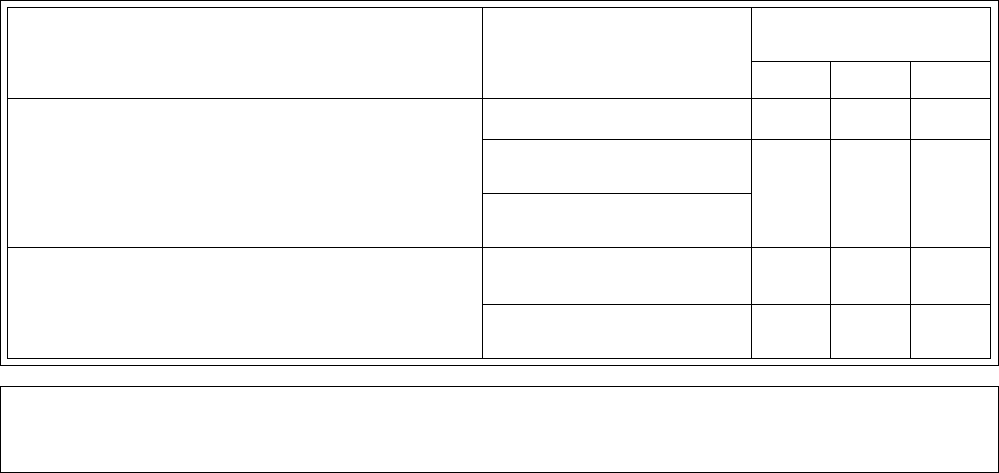
Energy Savings Scheme Rule of 2009
Effective from 19 June 2024
Page 149
Existing Lamp and/or Luminaire
New Lamp and/or Luminaire
New Lamp Circuit Power
(Watts)
≤5 W
≤10 W
≤15 W
Tungsten halogen Lamp (ELV) with Electronic Transformer or
Magnetic Transformer or Infrared coated (IRC) halogen Lamp
(ELV) with Electronic Transformer or Magnetic transformer,
with or without Luminaire.
LED Lamp only
1.05
0.87
0.70
LED Lamp and Driver or LED
Luminaire - recessed
1.50
1.29
1.08
LED Lamp only – 240V Self
Ballasted
Tungsten halogen Lamp (240V), with or without Luminaire.
LED Lamp only – 240V Self
Ballasted
1.35
1.20
1.05
LED Lamp and Driver or LED
Luminaire – recessed
1.89
1.68
1.47
Lifetime (for information purposes only)
Residential Building Lifetime = 15 years.
Small Business Site Lifetime = 10 years.
NSW Government Gazette
20 December 2023

Energy Savings Scheme Rule of 2009
Effective from 19 June 2024
Page 150
Activity Definition E2
Name of Activity
REPLACE A LINEAR HALOGEN FLOODLIGHT WITH A HIGH EFFICIENCY LAMP
Eligibility Requirements
1. The existing Lamp must be a linear halogen floodlight.
2. The existing Lamp must be rated at more than 100W.
3. Existing equipment must be in working order at time of replacement.
Equipment Requirements
1. The new End-User Equipment must be a CFLi or an LED Luminaire – Floodlight, as defined in Table A9.1 or Table A9.3 of
Schedule A.
2. Any End-User Equipment classified under Table A9.3 must be accepted by the Scheme Administrator as meeting the
requirements of Table A9.4 of Schedule A.
3. CFLs must have a Lamp Life of at least 10,000 hours when measured in accordance with Table A9.6 of Schedule A.
4. The new End-User Equipment must have a beam angle consistent with that of the original Lamp being replaced.
Implementation Requirements
1. The activity must be performed by a person authorised to carry out electrical wiring work under section 14 (1) of the Home
Building Act 1989.
Activity Energy Savings
Deemed Activity Electricity Savings = Electricity Savings Factor
Where:
• Electricity Savings Factor, in MWh, is the value from Table E2.1 or Table E2.2 corresponding to the Lamp Circuit Power of
the existing Lamp and the replacement Lamp being installed (in Watts); and
• Lamp Circuit Power is measured in Accordance with Table A9.4 of Schedule A.
Table E2.1 – Residential Building Electricity Savings Factor (MWh per linear halogen floodlight replaced)
Lamp Circuit Power
of existing Lamp
New End-User
Equipment
Light Output of new End-
User Equipment (lm)
Lamp Circuit Power of replacement Lamp (W)
≤30W
≤45W
≤60W
≤90W
≤150W
100W ≤ LCP < 150W
LED Luminaire –
Floodlight or CFLi
≥1,500
0.27
150W ≤ LCP < 200W
LED Luminaire –
Floodlight or CFLi
≥2,500
0.46
0.38
200W ≤ LCP < 300W
LED Luminaire –
Floodlight or CFLi
≥3,500
0.57
0.51
300W ≤ LCP < 500W
LED Luminaire –
Floodlight or CFLi
≥5,700
0.88
0.73
500W ≤ LCP
LED Luminaire –
Floodlight or CFLi
≥10,000
1.46
1.17
Table E2.2 – Small Business Site Electricity Savings Factor (MWh per linear halogen floodlight replaced)
Lamp Circuit Power
of existing Lamp
New End-User
Equipment
Light Output of new End-
User Equipment (lm)
Lamp Circuit Power of replacement Lamp (W)
≤30W
≤45W
≤60W
≤90W
≤150W
100W ≤ LCP < 150W
LED Luminaire –
Floodlight or CFLi
≥1,500
0.75
150W ≤ LCP < 200W
LED Luminaire –
Floodlight or CFLi
≥2,500
1.25
1.05
200W ≤ LCP < 300W
LED Luminaire –
Floodlight or CFLi
≥3,500
1.55
1.40
NSW Government Gazette
20 December 2023

Energy Savings Scheme Rule of 2009
Effective from 19 June 2024
Page 151
300W ≤ LCP < 500W
LED Luminaire –
Floodlight or CFLi
≥5,700
2.40
2.00
500W ≤ LCP
LED Luminaire –
Floodlight or CFLi
≥10,000
4.00
3.20
Lifetime (for information purposes only)
Residential Building Lifetime = 10 years.
Small Business Site Lifetime = 10 years.
NSW Government Gazette
20 December 2023

Energy Savings Scheme Rule of 2009
Effective from 19 June 2024
Page 152
Activity Definition E3
Name of Activity
REPLACE PARABOLIC ALUMINISED REFLECTOR (PAR) LAMP WITH EFFICIENT LUMINAIRE AND/OR LAMP
Eligibility Requirements
1. The existing Lamp must be a 240V parabolic aluminised reflector (PAR) Lamp.
2. The existing Lamp must be rated at between 80W and 160W.
3. Existing lighting equipment must be in working order at time of replacement.
Equipment Requirements
1. The new End-User Equipment must be a LED Lamp Only – 240V Self Ballasted, CFLi or LED Luminaire – Floodlight as
defined in Table A.9.1 or Table A9.3 of Schedule A.
2. Any End-User Equipment classified under Table A9.3 must be accepted by the Scheme Administrator as meeting the
requirements of Table A9.4 of Schedule A.
3. CFL Lamps must have a Lamp Life of at least 10,000 hours when measured in accordance with Table A9.6 of Schedule A.
4. The new End-User Equipment must have a beam angle consistent with that of the original Lamp being replaced.
Implementation Requirements
1. The activity must be performed by a person authorised to carry out electrical wiring work under section 14 (1) of the Home
Building Act 1989.
Activity Energy Savings
Deemed Activity Electricity Savings = Electricity Savings Factor
Where:
• Electricity Savings Factor, in MWh, is the value from Table E3.1 or Table E3.2 corresponding to the lighting retrofit activity
and the Lamp Circuit Power of the replacement lamp being installed (in Watts); and
• Lamp Circuit Power is measured in accordance with Table A9.4 of Schedule A.
Table E3.1 Residential Building Electricity Savings Factor (MWh per PAR lamp replaced)
LCP of Existing Lamp
Light output of new End-User Equipment
Lamp Circuit Power of the replacement lamp (Watts)
≤15 W
≤25 W
≤30 W
≤40 W
80W ≤ LCP < 100W
≥ 1200 lm
0.60
-
-
-
100W ≤ LCP < 120W
≥ 1500 lm
0.80
0.75
-
-
120W ≤ LCP < 140W
≥ 1900 lm
1.00
0.95
0.90
-
140W ≤ LCP < 160W
≥ 2300 lm
1.20
1.15
1.10
1.00
Table E3.2 Small Business Site Electricity Savings Factor (MWh per PAR lamp replaced)
LCP of Existing Lamp
Light output of new End-User Equipment
Lamp Circuit Power of the replacement lamp (Watts)
≤15 W
≤25 W
≤30 W
≤40 W
80W ≤ LCP < 100W
≥ 1200 lm
1.80
-
-
-
100W ≤ LCP < 120W
≥ 1500 lm
2.40
2.25
-
-
120W ≤ LCP < 140W
≥ 1900 lm
3.00
2.85
2.70
-
140W ≤ LCP < 160W
≥ 2300 lm
3.60
3.45
3.30
3.00
NSW Government Gazette
20 December 2023

Energy Savings Scheme Rule of 2009
Effective from 19 June 2024
Page 153
Lifetime (for information purposes only)
Residential Building Lifetime = 10 years.
Small Business Site Lifetime = 10 years.
NSW Government Gazette
20 December 2023
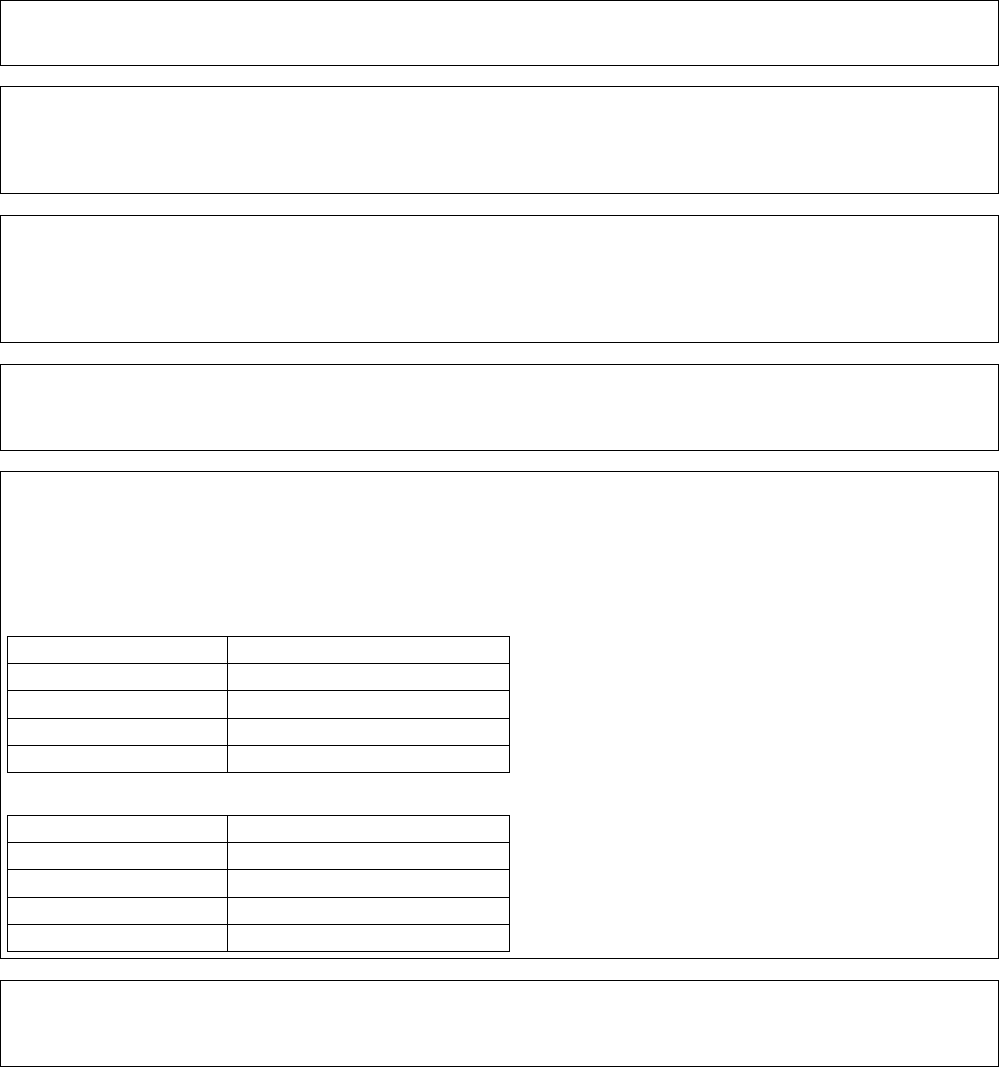
Energy Savings Scheme Rule of 2009
Effective from 19 June 2024
Page 154
Activity Definition E4
Name of Activity
REPLACE A T8 OR T12 LUMINAIRE WITH A T5 LUMINAIRE
Eligibility Requirements
1. Must be an existing 2 foot, 3 foot, 4 foot, or 5 foot T8 or T12 Fluorescent Luminaire.
2. Existing lighting equipment must be in working order at time of replacement.
3. Existing lighting equipment must not be a luminaire modified with T5 adaptor kit.
Equipment Requirements
1. The new End-User equipment must be a T5 linear fluorescent Luminaire.
2. The new End-User Equipment must not be a T5 Adaptor kit.
3. The new Luminaire must have a length consistent with the existing Luminaire.
4. Lamp Life must be at least 20,000 hours when measured in accordance with Table A9.6 of Schedule A.
Implementation Requirements
1. The activity must be performed by a person authorised to carry out electrical wiring work under section 14 (1) of the Home
Building Act 1989.
Activity Energy Savings
Deemed Activity Electricity Savings = Electricity Savings Factor
Where:
• Electricity Savings Factor, in MWh, is the value from Table E4.1 or Table E4.2 corresponding to the Lamp size.
Table E4.1 – Residential Building Electricity Savings Factor (MWh per T8 or T12 Luminaire replaced)
Luminaire and Lamp size
Electricity Savings Factor (MWh)
2 foot (600mm)
0.10
3 foot (900mm)
0.12
4 foot (1200mm)
0.14
5 foot (1500mm)
0.16
Table E4.2 – Small Business Site Electricity Savings Factor (MWh per T8 or T12 Luminaire replaced)
Luminaire and Lamp size
Electricity Savings Factor (MWh)
2 foot (600mm)
0.42
3 foot (900mm)
0.50
4 foot (1200mm)
0.59
5 foot (1500mm)
0.67
Lifetime (for information purposes only)
Residential Building Lifetime = 10 years.
Small Business Site Lifetime = 10 years.
NSW Government Gazette
20 December 2023
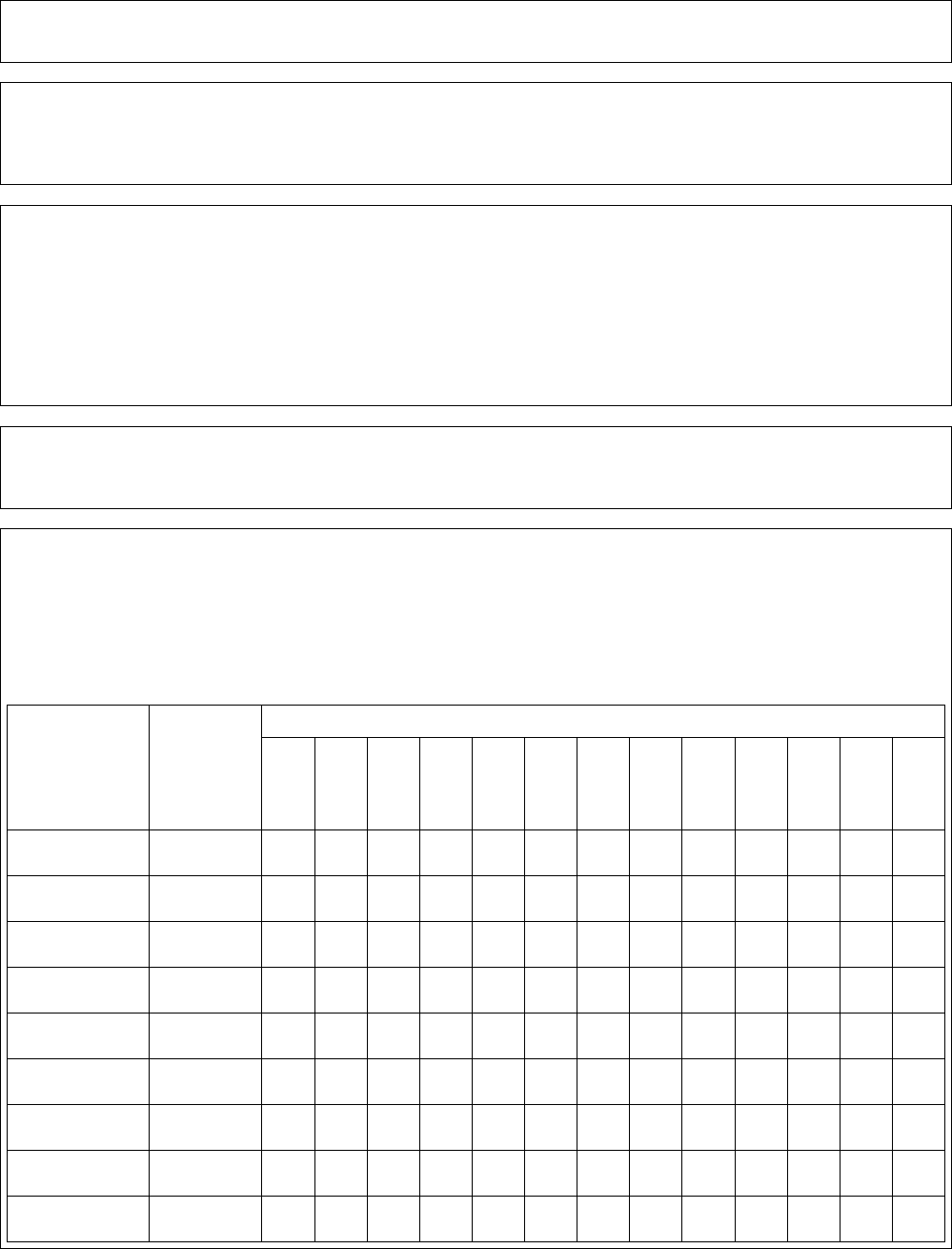
Energy Savings Scheme Rule of 2009
Effective from 19 June 2024
Page 155
Activity Definition E5
Name of Activity
REPLACE A T8 OR T12 LUMINAIRE WITH A LED LUMINAIRE
Eligibility Requirements
1. Must be an existing 2 foot, 3 foot, 4 foot or 5 foot T8 or T12 Fluorescent Luminaire.
2. Existing lighting equipment must be in working order at time of replacement.
3. Existing lighting equipment must not be a luminaire modified with T5 adaptor kit.
Equipment Requirements
1. The new End-User Equipment must be a LED Luminaire – Linear Lamp as defined in Table A9.3 of Schedule A.
2. The new End-User Equipment must not be a Retrofit Luminaire – LED Linear Lamp or Modified Luminaire – LED Linear
Lamp as defined in Table A9.3 of Schedule A.
3. Any End-User Equipment classified under Table A9.3 must be accepted by the Scheme Administrator as meeting the
requirements of Table A9.4 of Schedule A.
4. Lamp Life must be at least 20,000 hours when measured in accordance with Table A9.6.
5. The new End-User Equipment must be compatible with any dimmer installed on the same circuit as the new End-User
Equipment.
Implementation Requirements
1. The activity must be performed by a person authorised to carry out electrical wiring work under section 14 (1) of the Home
Building Act 1989.
Activity Energy Savings
Deemed Activity Electricity Savings = Electricity Savings Factor
Where:
• Electricity Savings Factor, in MWh, is the value from Table E5.1 or Table E5.2 corresponding to the Lamp Circuit Power
(LCP) specified in Table A9.4 of Schedule A.
Table E5.1 – Residential Building Electricity Savings Factor (MWh per T8 or T12 Luminaire replaced)
Existing
Luminaire
Light
Output of
new End-
User
Equipment
(lm)
Lamp Circuit Power of the replacement luminaire (Watts)
≤10
W
≤15
W
≤20
W
≤25
W
≤30
W
≤35
W
≤40
W
≤45
W
≤50
W
≤60
W
≤70
W
≤80
W
≤90
W
550 ≤ 700 mm (1
lamp)
≥ 600
0.24
-
-
-
-
-
-
-
-
-
-
-
-
700 ≤ 1150 mm
(1 lamp)
≥ 1100
0.42
0.35
-
-
-
-
-
-
-
-
-
-
-
1150 ≤ 1350 mm
(1 lamp)
≥ 1500
-
0.44
0.36
0.29
-
-
-
-
-
-
-
-
-
1350 ≤ 1500 (1
lamp)
≥ 2400
-
-
0.69
0.62
0.54
0.47
0.39
-
-
-
550 ≤ 700 mm (2
lamps)
≥ 1200
0.63
0.56
0.48
-
-
-
-
-
-
-
-
-
-
700 ≤ 1150 mm
(2 lamps)
≥ 2200
-
0.92
0.84
0.77
0.69
0.62
-
-
-
-
-
-
-
1150 ≤ 1350 mm
(2 lamps)
≥ 3000
-
-
-
0.95
0.87
0.80
0.72
0.65
0.57
-
-
-
-
1350 ≤ 1500 (2
lamps)
≥ 4900
-
-
-
-
-
1.46
1.38
1.31
1.23
1.08
0.93
0.78
550 ≤ 700 mm (3
or more lamps)
≥ 1900
-
0.95
0.87
0.80
0.72
-
-
-
-
-
-
-
-
NSW Government Gazette
20 December 2023
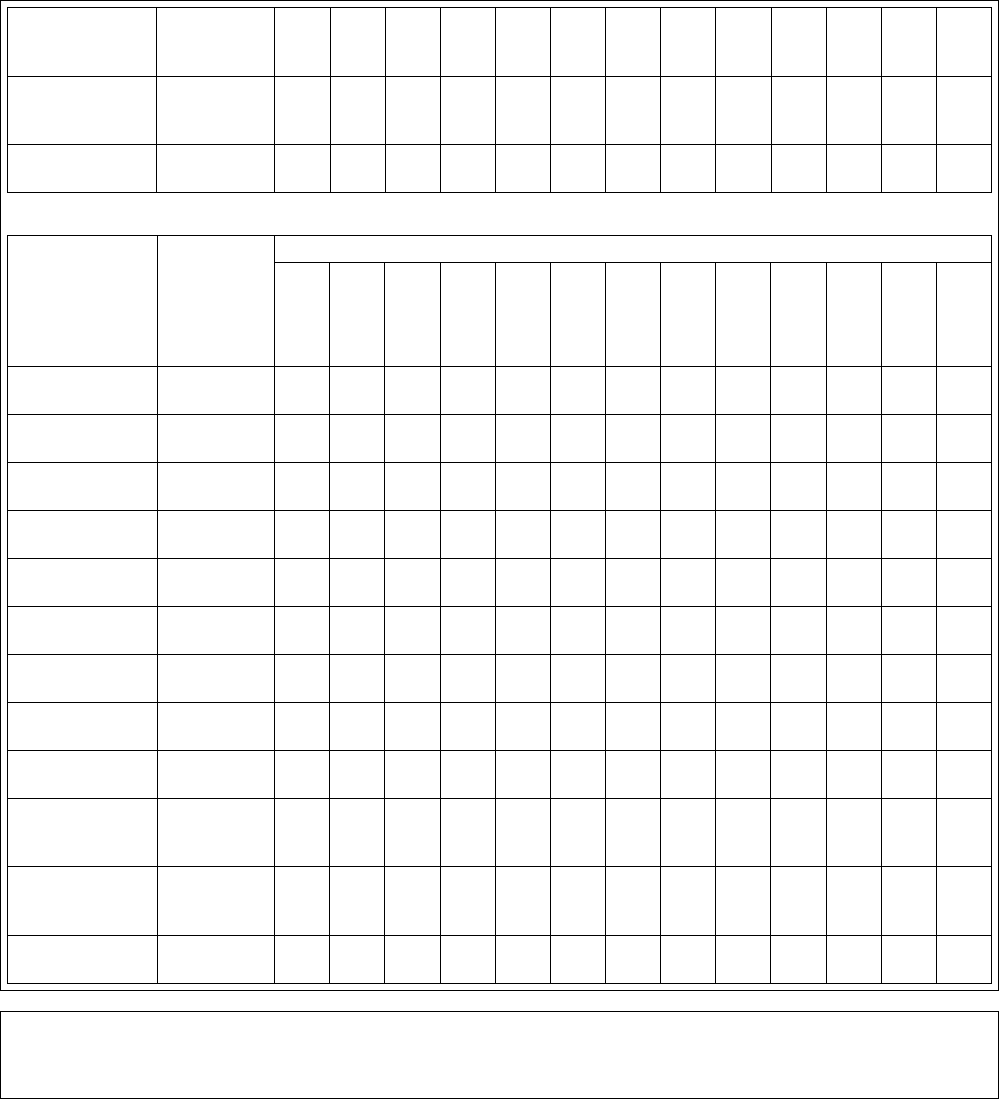
Energy Savings Scheme Rule of 2009
Effective from 19 June 2024
Page 156
700 ≤ 1150 mm
(3 or more
lamps)
≥ 3300
-
-
1.34
1.26
1.19
1.11
1.04
0.96
-
-
-
-
1150 ≤ 1350 mm
(3 or more
lamps)
≥ 4500
-
-
-
-
-
1.46
1.38
1.31
1.23
1.08
0.93
-
-
1350 ≤ 1500 (3
or more lamps)
≥ 7300
-
-
-
-
-
-
-
-
2.22
2.07
1.92
1.77
1.62
Table E5.2 – Small Business Site Electricity Savings Factor (MWh per T8 or T12 Luminaire replaced)
Existing
Luminaire
Light
Output of
new End-
User
Equipment
(lm)
Lamp Circuit Power of the replacement luminaire (Watts)
≤10
W
≤15
W
≤20
W
≤25
W
≤30
W
≤35
W
≤40
W
≤45
W
≤50
W
≤60
W
≤70
W
≤80
W
≤90
W
550 ≤ 700 mm (1
lamp)
≥ 600
0.67
-
-
-
-
-
-
-
-
700 ≤ 1150 mm
(1 lamp)
≥ 1100
1.18
0.97
-
-
-
-
-
-
-
-
-
-
-
1150 ≤ 1350 mm
(1 lamp)
≥ 1500
-
1.22
1.01
0.80
-
-
-
-
-
-
-
-
-
1350 ≤ 1500 (1
lamp)
≥ 2400
-
-
1.93
1.72
1.51
1.30
1.09
-
-
-
-
-
-
550 ≤ 700 mm (2
lamps)
≥ 1200
1.76
1.55
1.34
-
-
-
-
-
-
-
-
-
-
700 ≤ 1150 mm
(2 lamps)
≥ 2200
-
2.56
2.35
2.14
1.93
1.72
-
-
-
-
-
-
-
1150 ≤ 1350 mm
(2 lamps)
≥ 3000
-
-
-
2.65
2.44
2.23
2.02
1.81
1.60
-
-
-
-
1350 ≤ 1500 (2
lamps)
≥ 4900
-
-
-
-
-
4.07
3.86
3.65
3.44
3.02
2.60
2.18
-
550 ≤ 700 mm (3
or more lamps)
≥ 1900
-
2.65
2.44
2.23
2.02
-
-
-
-
-
-
-
-
700 ≤ 1150 mm
(3 or more
lamps)
≥ 3300
-
-
-
3.74
3.53
3.32
3.11
2.90
2.69
-
-
-
-
1150 ≤ 1350 mm
(3 or more
lamps)
≥ 4500
-
-
-
-
-
4.07
3.86
3.65
3.44
3.02
2.60
-
-
1350 ≤ 1500 (3
or more lamps)
≥ 7300
-
-
-
-
-
-
-
-
6.22
5.80
5.38
4.96
4.54
Lifetime (for information purposes only)
Residential Building Lifetime = 15 years.
Small Business Site Lifetime = 10 years.
NSW Government Gazette
20 December 2023
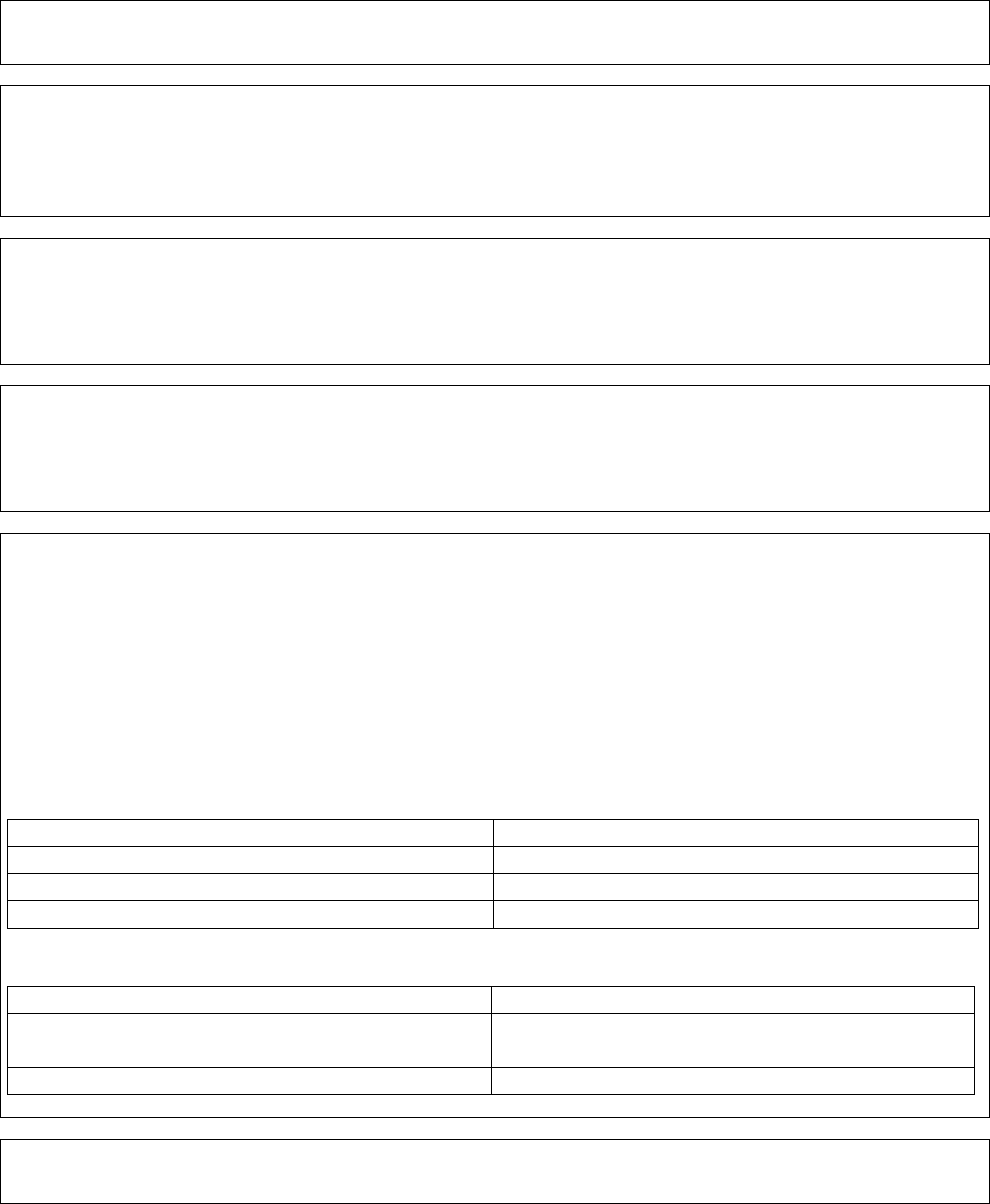
Energy Savings Scheme Rule of 2009
Effective from 19 June 2024
Page 157
Activity Definition E6
Name of Activity
REPLACE AN EXISTING SHOWERHEAD WITH AN ULTRA LOW FLOW SHOWERHEAD
Eligibility Requirements
1. The hot water service supplying the shower must be provided by an electric resistance water heater, an electrically boosted
solar water heater or an electric heat pump water heater (for electricity savings); or by a Gas fired storage water heater, Gas
fired instantaneous water heater or a Gas boosted solar water heater (for Gas savings).
2. There must be an existing showerhead on each shower.
Equipment Requirements
1. The End-User Equipment must be a showerhead as defined in AS/NZS 3662– Performance of showers for bathing.
2. The showerhead must be assigned a minimum 3 Star WELS Rating with a nominal flow rate of ≤ 6 litres/minute when tested
according to AS/NZS 6400 – Water efficient products.
3. The showerhead must have a warranty of at least 2 years.
Implementation Requirements
1. The replacement of the showerhead must be performed or supervised by a Licensed plumber in accordance with the Plumbing
Code of Australia.
2. A maximum of one showerhead per shower can be replaced.
3. The showerhead must be compatible with the installed water heating system.
Activity Energy Savings
Deemed Activity Electricity Savings = Electricity Savings Factor
Deemed Activity Gas Savings = Gas Savings Factor
Where:
• Electricity Savings Factor and Gas Savings Factor, in MWh per showerhead, are the values from Tables E6.1 and E6.2
corresponding to the type of water heating system servicing the shower.
• The Electricity Savings Factor and Gas Savings Factor that are applied must match the type of water heating system.
• In the case where showerhead replacement occurs in conjunction with a water heating system replacement, the Electricity
Savings Factor and Gas Savings Factor that are applied must match the new installed water heating system.
Table E6.1 – Electricity Savings Factor (MWh per showerhead replaced)
Table E6.2 – Gas Savings Factor (MWh per showerhead replaced)
Electric water heating system
Electricity Savings Factor (MWh)
Electric resistance water heater
1.9
Electrically boosted solar water heater
1.1
Electric heat pump water heater
1.1
Gas fired water heating system
Gas Savings Factor (MWh)
Gas fired storage water heater
3.4
Gas fired instantaneous water heater
3.1
Gas boosted solar water heater
1.2
Lifetime (for information purposes only)
Lifetime = 7 years.
NSW Government Gazette
20 December 2023
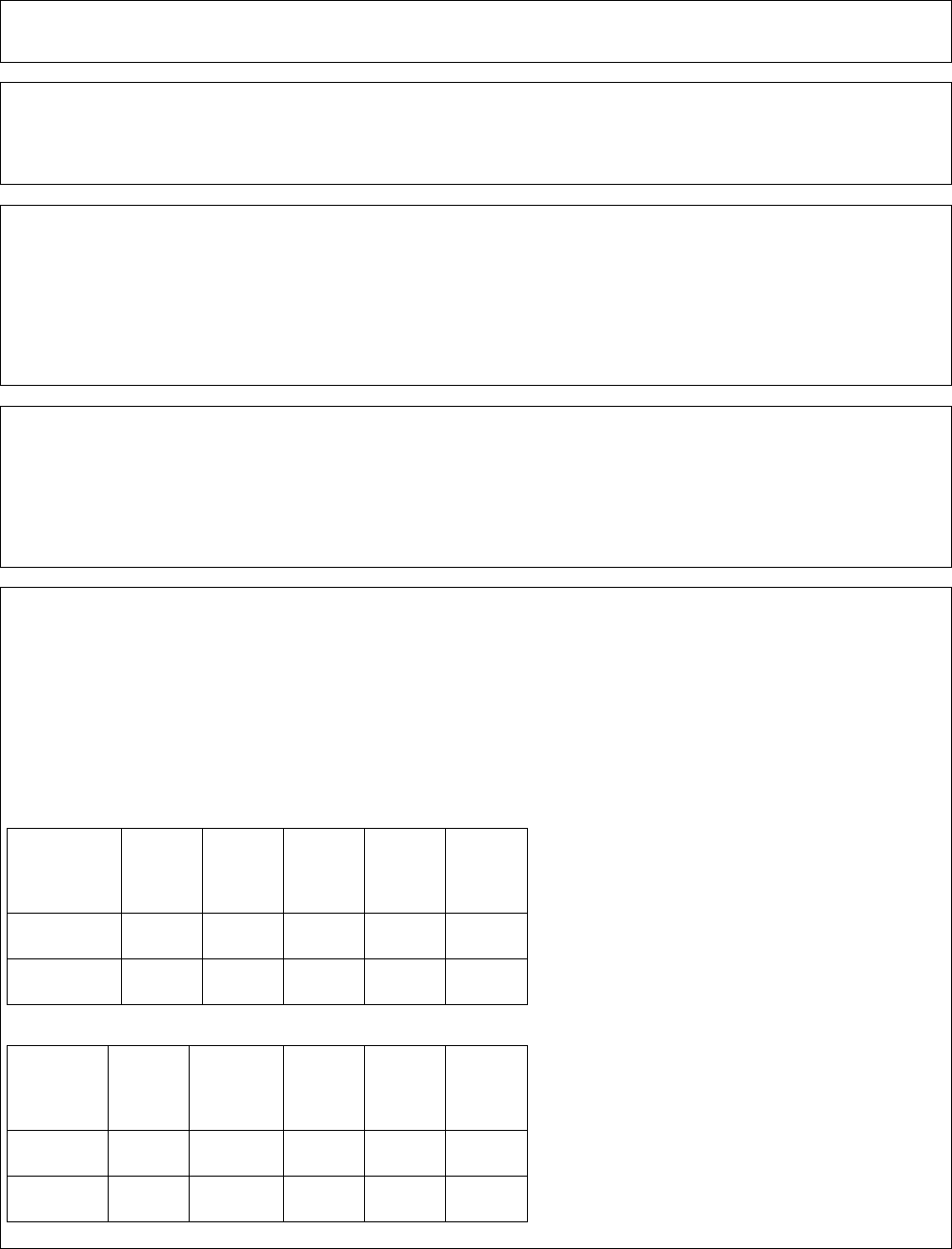
Energy Savings Scheme Rule of 2009
Effective from 19 June 2024
Page 158
Activity Definition E7
Name of Activity
MODIFY AN EXTERNAL DOOR WITH DRAUGHT-PROOFING
Eligibility Requirements
1. Doors to be draught-proofed must have gaps between the door and frame and/or threshold that permit the infiltration of air
into or out of the Site.
2. Only external doors may be draught-proofed.
Equipment Requirements
1. The equipment to be applied must be a retail door bottom sealing product or door perimeter weather-stripping product or a
combination of the two.
2. The product must be fit for purpose.
3. The product’s sealing surface must be made of a durable compressible material such as foam, polypropylene pile, flexible
plastic, rubber compressible strip, fibrous seal or similar.
4. The product must not impair the proper operation of the door.
5. The product must have a warranty of at least 2 years.
Implementation Requirements
1. The product must be applied to a door bottom seal or a set of door jamb and head seals or a combination of both.
2. The product, once applied, must effectively restrict the airflow into or out of the Site around the perimeter of the door.
3. The product must be installed in strict accordance with the manufacturer’s instructions.
4. All external doors (excluding sliding doors) at the Site that meet the Eligibility Requirements must be draught-proofed.
5. The product must be installed in accordance with the National Construction Code BCA Section J3 and any relevant AS/NZS
as required by the Scheme Administrator.
Activity Energy Savings
Deemed Activity Electricity Savings = Electricity Savings Factor
Deemed Activity Gas Savings = Gas Savings Factor
Where:
• Electricity Savings Factor and Gas Savings Factor, in MWh per door, are the values from Tables E7.1, E7.2, E7.3 and E7.4
corresponding to the type of building construction, warranty period and the BCA Climate Zone of the Site.
• Implementation of the Activity allows both Electricity and Gas Savings Factors to be applied, regardless of fuel used for
heating or cooling at the premises.
Table E7.1 – Residential Building Electricity Savings Factor (MWh per door modified)
Warranty
period
BCA
Climate
Zones 2
and 3
BCA
Climate
Zone 4
BCA
Climate
Zone 5
BCA
Climate
Zone 6
BCA
Climate
Zones 7
and 8
2 - 5-year
warranty
0.06
0.08
0.05
0.06
0.10
> 5-year
warranty
0.13
0.16
0.10
0.12
0.21
Table E7.2 – Residential Building Gas Savings Factor (MWh per door modified)
Warranty
Period
BCA
Climate
Zones 2
and 3
BCA
Climate
Zone 4
BCA
Climate
Zone 5
BCA
Climate
Zone 6
BCA
Climate
Zones 7
and 8
2 - 5-year
warranty
0.05
0.12
0.06
0.08
0.17
> 5-year
warranty
0.10
0.25
0.13
0.17
0.35
NSW Government Gazette
20 December 2023
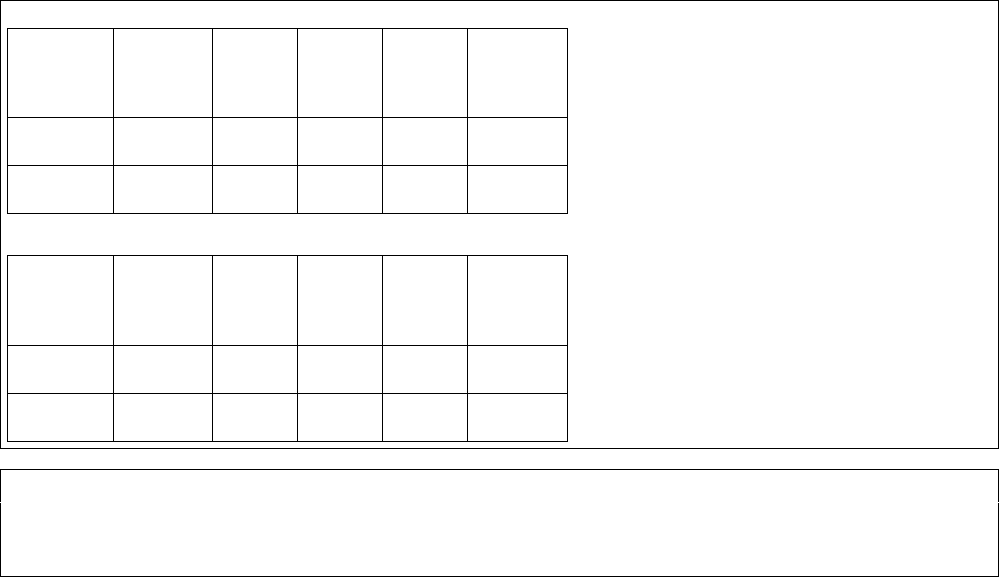
Energy Savings Scheme Rule of 2009
Effective from 19 June 2024
Page 159
Table E7.3 – Small Business Site Electricity Savings Factor (MWh per door modified)
Warranty
Period
BCA
Climate
Zones 2
and 3
BCA
Climate
Zone 4
BCA
Climate
Zone 5
BCA
Climate
Zone 6
BCA
Climate
Zones 7
and 8
2 - 5-year
warranty
0.04
-0.02
-
-0.01
-0.02
> 5-year
warranty
0.07
-0.05
-
-0.03
-0.05
Table E7.4 – Small Business Site Gas Savings Factor (MWh per door modified)
Warranty
Period
BCA
Climate
Zones 2
and 3
BCA
Climate
Zone 4
BCA
Climate
Zone 5
BCA
Climate
Zone 6
BCA
Climate
Zones 7
and 8
2 - 5-year
warranty
0.01
0.05
-
0.02
0.08
> 5-year
warranty
0.02
0.09
-
0.05
0.15
Lifetime (for information purposes only)
Lifetime for 2 – 5-year warranty products = 5 years
Lifetime for > 5-year warranty products = 10 years
NSW Government Gazette
20 December 2023
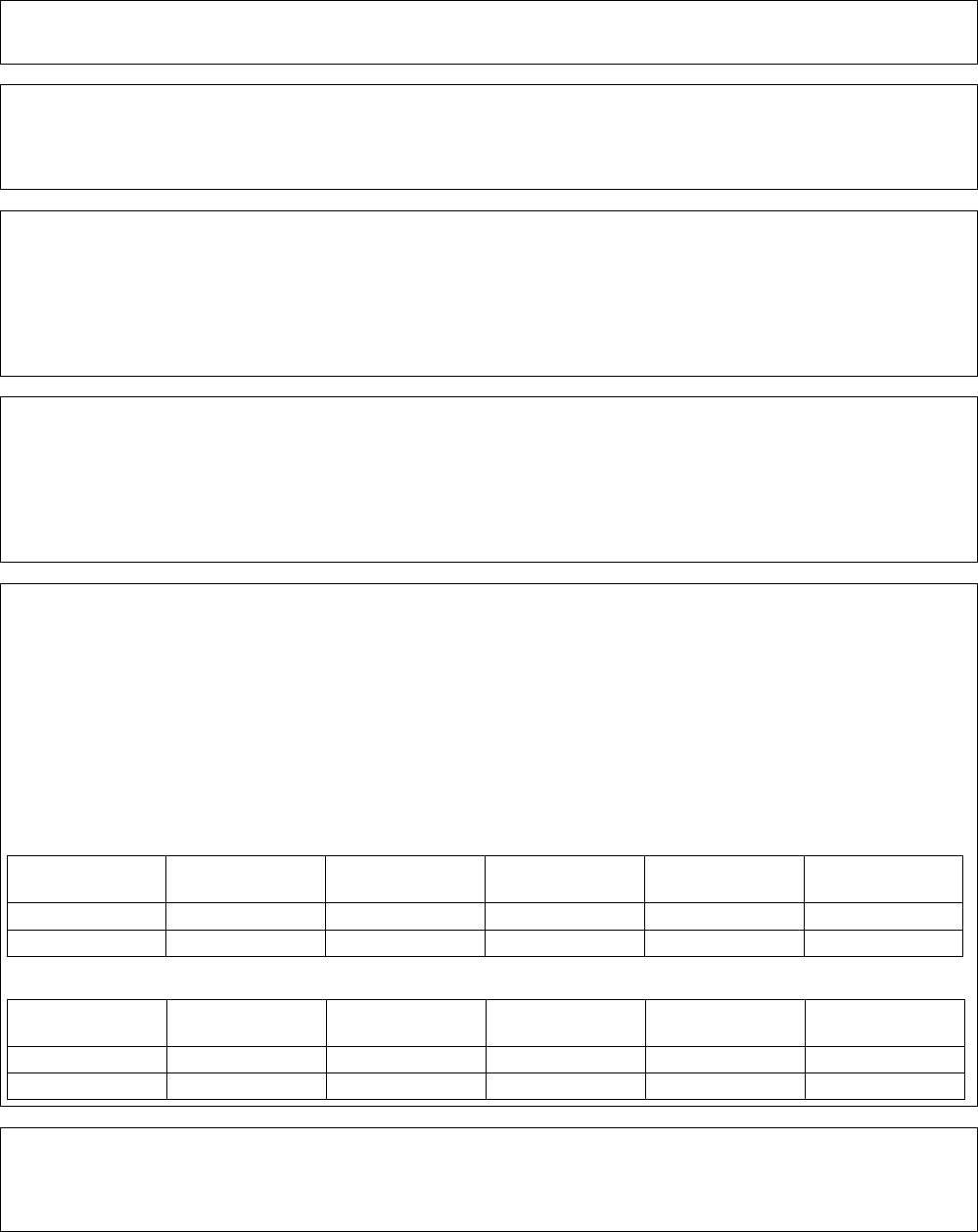
Energy Savings Scheme Rule of 2009
Effective from 19 June 2024
Page 160
Activity Definition E8
Name of Activity
MODIFY AN EXTERNAL WINDOW WITH DRAUGHT-PROOFING
Eligibility Requirements
1. Windows to be draught-proofed must present with gaps between the sash and frame that permit the infiltration of air into or
out of the Site.
2. Only external windows may be draught-proofed.
Equipment Requirements
1. The equipment to be applied must be a retail window sealing or weather stripping product or a combination of the two.
2. The product must be fit for purpose.
3. The product’s sealing surface must be made of a durable compressible material such as foam, polypropylene pile, flexible
plastic, rubber compressible strip, fibrous seal or similar.
4. The product must not impair the proper operation of the window.
5. The product must have a warranty of at least 2 years.
Implementation Requirements
1. The product must be applied to the perimeter of the window sash.
2. The product, once applied, must effectively restrict the airflow into or out of the Site around the perimeter of the window.
3. The product must be installed in strict accordance with the manufacturer’s instructions.
4. All external windows at the Site that meet the Eligibility Requirements must be draught-proofed.
5. The draught-proofing product (or products) must be installed in accordance with the National Construction Code BCA Section
J3 and any relevant AS/NZS as required by the Scheme Administrator.
Activity Energy Savings
Deemed Activity Electricity Savings = Electricity Savings Factor × Length
Deemed Activity Gas Savings = Gas Savings Factor × Length
Where:
• Electricity Savings Factor and Gas Savings Factor, in MWh per metre, are the values from Tables E8.1 and E8.2
corresponding to the type of building construction, warranty period and the BCA Climate Zone of the Site.
• Length, in metres, is the length of window perimeter to which the product has been applied.
• Implementation of the Activity allows both Electricity and Gas Savings Factors to be applied, regardless of fuel used for
heating or cooling at the premises.
Table E8.1 –Residential Building Electricity Savings Factor (MWh per metre of window perimeter modified)
Warranty Period
BCA Climate
Zones 2 and 3
BCA Climate
Zone 4
BCA Climate
Zone 5
BCA Climate
Zone 6
BCA Climate
Zones 7 and 8
2 - 5-year warranty
0.01
0.01
0.01
0.01
0.01
> 5-year warranty
0.01
0.02
0.01
0.01
0.02
Table E8.2 – Residential Building Gas Savings Factor (MWh per metre of window perimeter modified)
Warranty Period
BCA Climate
Zones 2 and 3
BCA Climate
Zone 4
BCA Climate
Zone 5
BCA Climate
Zone 6
BCA Climate
Zones 7 and 8
2 - 5-year warranty
0.01
0.01
0.01
0.01
0.02
> 5-year warranty
0.01
0.03
0.01
0.02
0.04
Lifetime (for information purposes only)
Lifetime for 2 – 5-year warranty products = 5 years
Lifetime for > 5-year warranty products = 10 years
NSW Government Gazette
20 December 2023
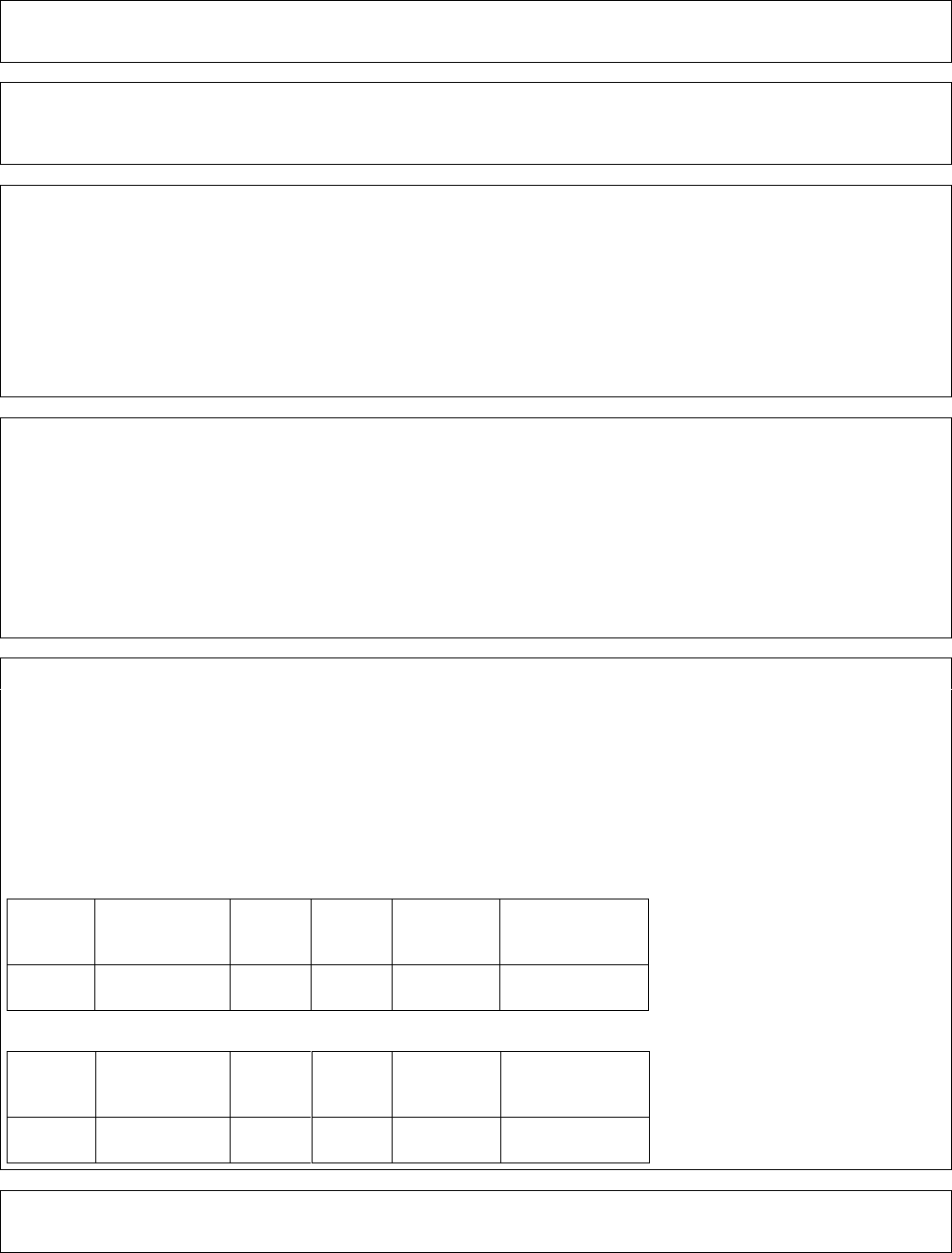
Energy Savings Scheme Rule of 2009
Effective from 19 June 2024
Page 161
Activity Definition E9
Name of Activity
MODIFY A FIREPLACE CHIMNEY BY SEALING WITH A DAMPER
Eligibility Requirements
1. The fireplace that the damper is to be installed in must be within a Residential Building.
2. The fireplace must be an open fireplace; and not have an existing damper.
Equipment Requirements
1. The damper must be fit for purpose and capable of effectively sealing the flue or chimney of an open fireplace.
2. If the damper is designed to be used in an operable fireplace then it must be of a durable construction such that its operation is
not adversely affected by the heat of a fire and when open it must not adversely affect the operation of the fireplace, in
particular the chimney/flue’s capacity to “draw” smoke out of the firebox.
3. The chimney damper must, to the satisfaction of the Scheme Administrator, be a durable product that will deliver long-lasting
energy savings.
4. The damper installed must have a warranty of at least 3 years
5. The damper must not be a chimney balloon.
Implementation Requirements
1. The damper must be installed in accordance with the manufacturer’s instructions.
2. If the damper is not designed to be used in an operable fireplace (i.e. permanent sealing) the fireplace must be sealed such that
access to the combustion chamber is also permanently sealed or if the firebox is not to be sealed then the fuel burning device
must be clearly tagged as having been sealed.
3. If the damper is designed to be used in an operable fireplace it must be installed in a manner that ensures that the safe
operation of the fireplace is not compromised.
4. Works must be carried out in accordance with the National Construction Code BCA Section J3 and any relevant AS/NZS as
required by the Scheme Administrator.
5. All fireplaces at the Site that meet the Eligibility Requirements must be sealed.
Activity Energy Savings
Deemed Activity Electricity Savings = Electricity Savings Factor
Deemed Activity Gas Savings = Gas Savings Factor
Where:
• Electricity Savings Factor and Gas Savings Factor, in MWh per fireplace, are the values from Tables E9.1 and E9.2
corresponding to the type of building construction and the BCA Climate Zone of the Site.
• Implementation of the Activity allows both Electricity and Gas Savings Factors to be applied, regardless of fuel used for
heating or cooling at the premises.
Table E9.1 – Residential Building Electricity Savings Factor (MWh per fireplace modified)
Unit
BCA Climate
Zones 2 and 3
BCA
Climate
Zone 4
BCA
Climate
Zone 5
BCA
Climate
Zone 6
BCA Climate
Zones 7 and 8
MWh per
fireplace
1.21
2.58
1.20
1.17
2.15
Table E9.2 – Residential Building Gas Savings Factor (MWh per fireplace modified)
Unit
BCA Climate
Zones 2 and 3
BCA
Climate
Zone 4
BCA
Climate
Zone 5
BCA
Climate
Zone 6
BCA Climate
Zones 7 and 8
MWh per
fireplace
1.52
4.02
1.73
1.55
3.55
Lifetime (for information purposes only)
Lifetime = 10 years.
NSW Government Gazette
20 December 2023
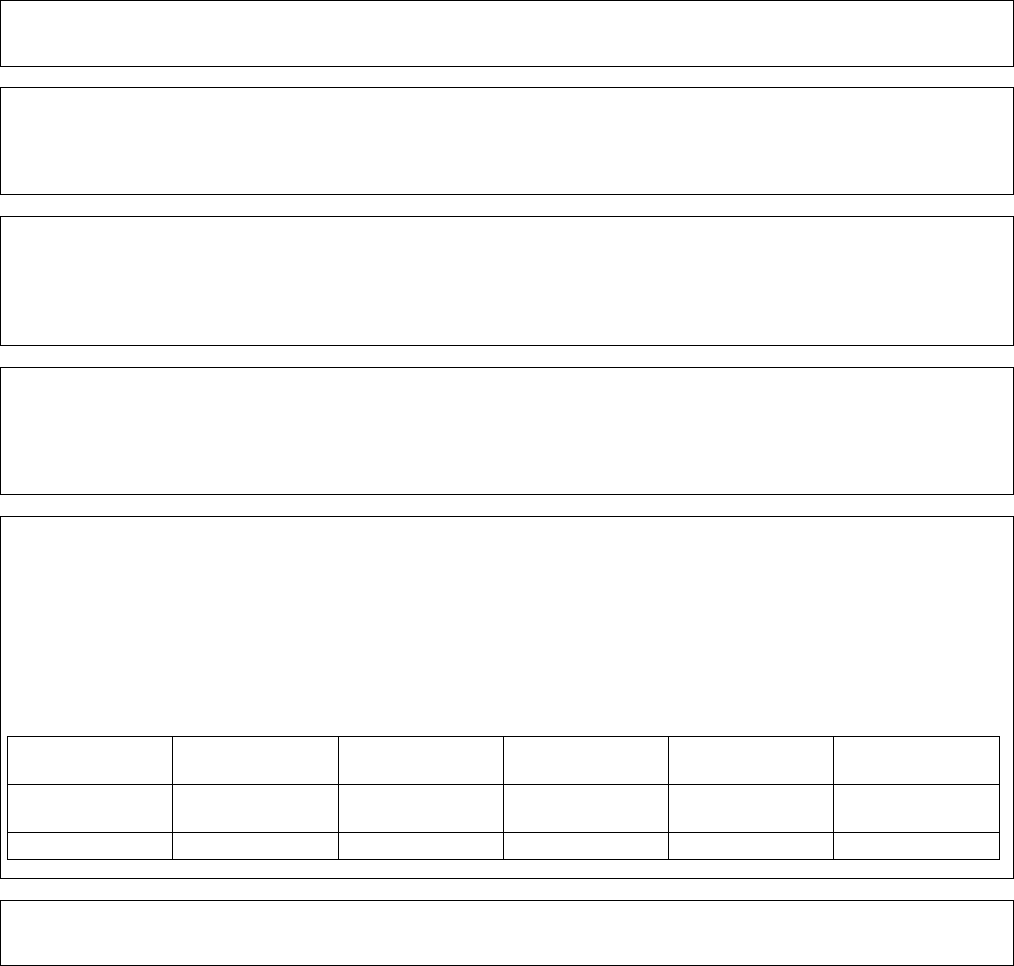
Energy Savings Scheme Rule of 2009
Effective from 19 June 2024
Page 162
Activity Definition E10
Name of Activity
INSTALL AN EXTERNAL BLIND TO A WINDOW OR DOOR
Eligibility Requirements
1. The Site must be a Residential Building or Small Business Site.
2. The window or door must be a fully glazed external window or door.
3. The window or door must not face south (between 135
o
and 225
o
of true north).
Equipment Requirements
1. The End-User Equipment must be an external shading device, such as a shutter, blind, vertical or horizontal building screen
with blades, battens or slats.
2. The End-User Equipment must comply with AS/NZS 60335.2.97 if automated.
3. The End-User Equipment must have a warranty of at least 5 years.
Implementation Requirements
1. The product must be applied externally to the outside of the window or door.
2. The person performing the activity must comply with the relevant installation standards and legislation as outlined by SafeWork
NSW.
3. The product must be installed in accordance with the manufacturer’s instructions.
Activity Energy Savings
Deemed Activity Electricity Savings = Savings Factor × Area
Where:
• Savings Factor, in MWh per m
2
, is the value from Table E10.1 corresponding to the relevant Sector and BCA Climate Zone of
the Site; and
• Area, in m
2
, is the area of window or door glazing which external blinds cover.
Table E10.1 – Savings Factor (MWh per m
2
of external blind applied)
Sector
BCA Climate
Zones 2 and 3
BCA Climate
Zone 4
BCA Climate
Zone 5
BCA Climate
Zone 6
BCA Climate
Zones 7 and 8
Residential
Building
0.05
0.05
0.03
0.04
0.02
Small Business Site
0.18
0.32
0.18
0.25
0.15
Lifetime (for information purposes only)
Lifetime = 10 years.
NSW Government Gazette
20 December 2023
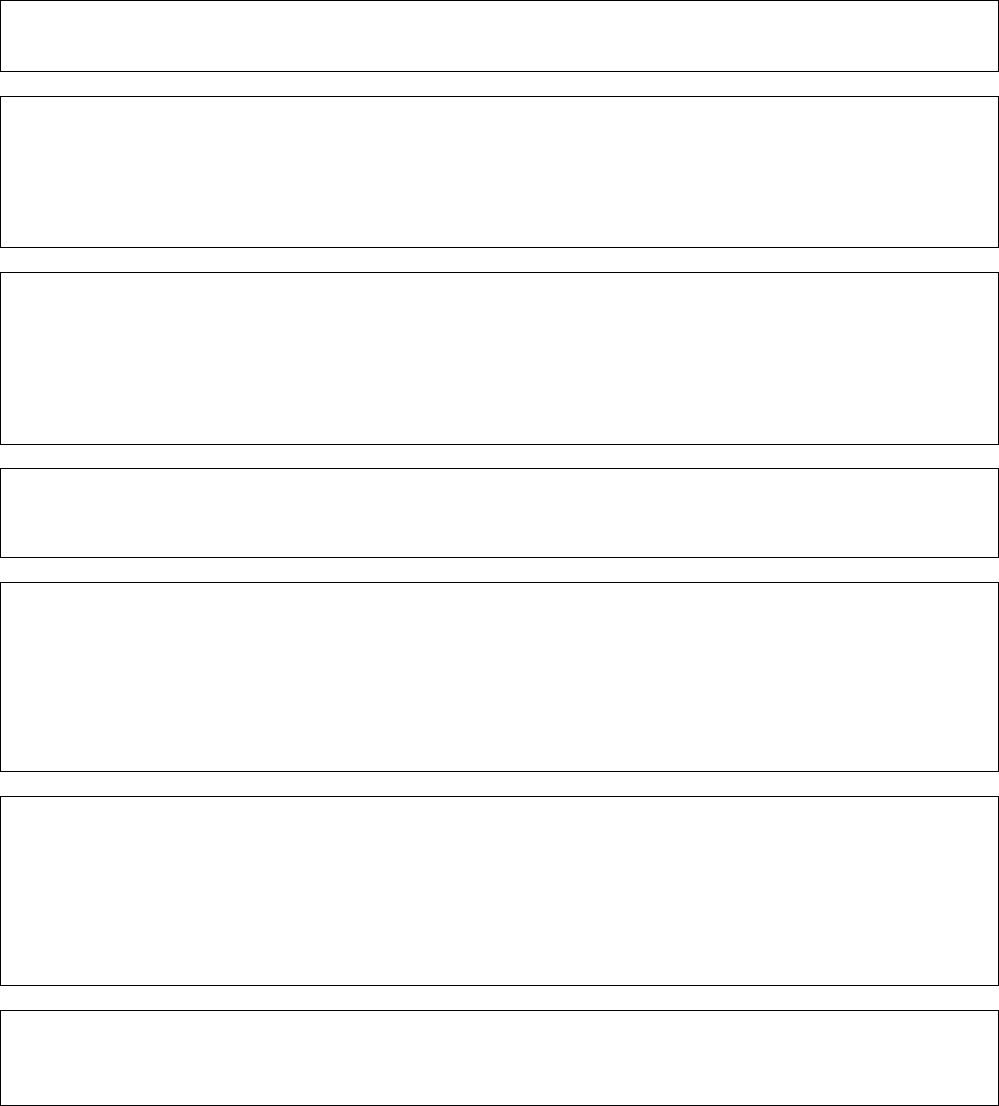
Energy Savings Scheme Rule of 2009
Effective from 19 June 2024
Page 163
Activity Definition E11
Name of Activity
REPLACE AN EDISON SCREW OR BAYONET LAMP WITH AN LED LAMP FOR GENERAL LIGHTING PURPOSES
Eligibility Requirements
1. The existing Lamp must be a 240V fixed ceiling or wall mounted luminaire fixture.
2. The existing Lamp must be an Edison screw or Bayonet Lamp.
3. The existing Lamp must be an Incandescent, halogen or CFL Lamp.
4. The existing Lamp and Luminaire must be in working order.
5. Must be a Lamp only replacement.
Equipment Requirements
1. The new End-User Equipment must be a 240V Edison screw or Bayonet self-ballasted LED Lamp.
2. Any End-User Equipment classified under Table A9.3 of Schedule A must be accepted by the Scheme Administrator as
meeting the requirements of Table A9.4 of Schedule A.
3. The new End-User Equipment must be compatible with any dimmer installed on the same circuit as the new End-User
Equipment.
4. The new End-User Equipment must have a Light Output the same or higher than the replaced Lamp.
Implementation Requirements
1. The activity must be performed by a person authorised to carry out electrical wiring work under section 14 (1) of the Home
Building Act 1989.
Residential Building Activity Energy Savings
Deemed Activity Electricity Savings = LCP of new Lamp × (luminous efficacy of new Lamp / 33.9 – 1) × 840 × 10 / 10
6
Where:
• Lamp Circuit Power, is the wattage of the replacement Lamp being installed and is measured in accordance with Table A9.4
of Schedule A.
• Luminous efficacy of the new Lamp, is the Light Output divided by the Lamp Circuit Power of the new Lamp being installed.
Small Business Site Activity Energy Savings
Deemed Activity Electricity Savings = LCP of new Lamp × (luminous efficacy of new Lamp / 33.9 – 1) × 3000 × 10 / 10
6
Where:
• Lamp Circuit Power, is the wattage of the replacement Lamp being installed and is measured in accordance with Table A9.4
of Schedule A.
• Luminous efficacy of the new Lamp, is the Light Output divided by the Lamp Circuit Power of the new Lamp being installed.
Lifetime (for information purposes only)
Residential Building Lifetime = 10 years.
Small Business Site Lifetime = 10 years.
NSW Government Gazette
20 December 2023
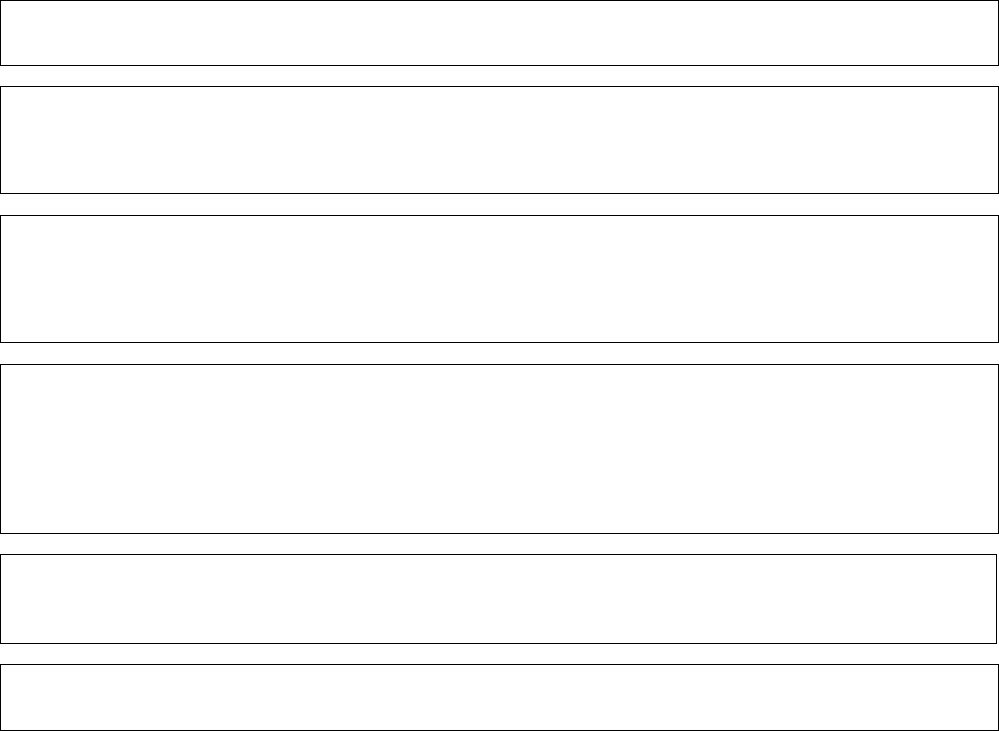
Energy Savings Scheme Rule of 2009
Effective from 19 June 2024
Page 164
Activity Definition E12
Name of Activity
MODIFY AN EXHAUST FAN WITH A SEALING PRODUCT
Eligibility Requirements
1. The Site must be a Residential Building.
2. An existing exhaust fan unit must be present at the Site.
3. Only exhaust fans that exhaust air directly to the outside of the building can be sealed.
Equipment Requirements
1. The product must be a self-closing damper, flap, filter (for instance, of a type commonly fitted to a kitchen range hood) or
other sealing product that can be closed to seal the exhaust of a fan.
2. The installed End-User Equipment must allow the egress of air when the exhaust fan is in operation.
3. The End-User Equipment must have a warranty of at least 2 years.
Implementation Requirements
1. The End-User Equipment must be applied to the existing exhaust fan.
2. The End-User Equipment, once applied, must effectively restrict the airflow into or out of the Site.
3. The End-User Equipment must be installed in strict accordance with the manufacturer’s instructions.
4. All electrical work must be performed or supervised by a Licensed electrician.
5. All exhaust fans at the Site that meet the Eligibility Requirements must be sealed.
6. The End-User Equipment must comply with any relevant AS/NZS as required by the Scheme Administrator.
Activity Energy Savings
Deemed Activity Electricity Savings = 0.91 MWh (per exhaust fan)
Lifetime (for information purposes only)
Lifetime = 5 years
NSW Government Gazette
20 December 2023
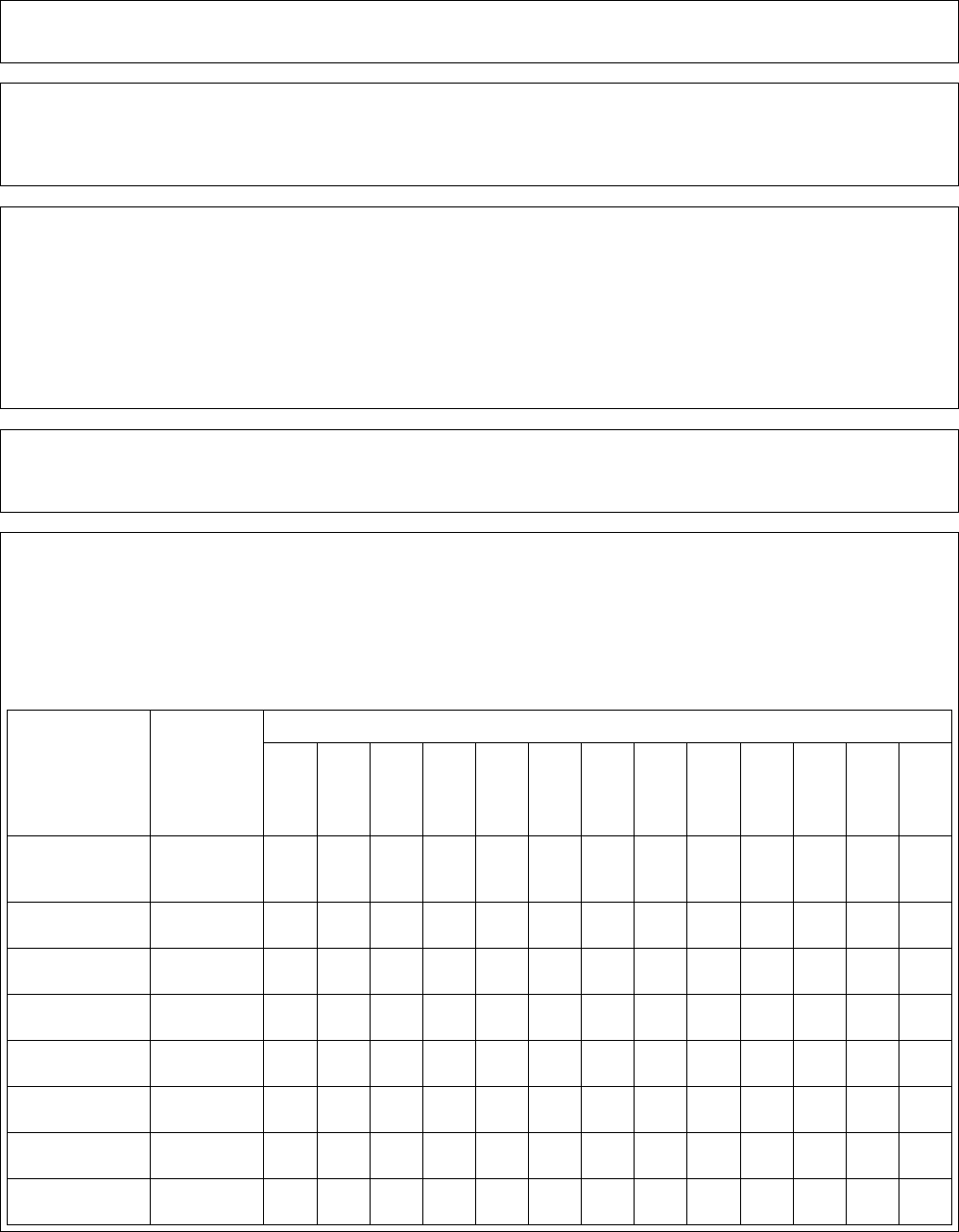
Energy Savings Scheme Rule of 2009
Effective from 19 June 2024
Page 165
Activity Definition E13
Name of Activity
REPLACE A T5 LUMINAIRE WITH A LED LUMINAIRE
Eligibility Requirements
1. Must be an existing 2 foot, 3 foot, 4 foot or 5 foot T5 Luminaire or a luminaire modified with T5 adaptor kit which contains a
T5 linear fluorescent Lamp (as defined in Tables A9.1 and A9.3).
2. Existing lighting equipment must be in working order at time of replacement.
Equipment Requirements
1. The new End-User Equipment must be a LED Luminaire – Linear Lamp as defined in Table A9.3 of Schedule A.
2. The new End-User Equipment must not be a Retrofit Luminaire – LED Linear Lamp or Modified Luminaire – LED Linear
Lamp as defined in Table A9.3 of Schedule A.
3. Any End-User Equipment classified under Table A9.3 must be accepted by the Scheme Administrator as meeting the
requirements of Table A9.4 of Schedule A.
4. Lamp Life must be at least 20,000 hours when measured in accordance with Table A9.6.
5. The new End-User Equipment must be compatible with any dimmer installed on the same circuit as the new End-User
Equipment.
Implementation Requirements
1. The activity must be performed by a person authorised to carry out electrical wiring work under section 14 (1) of the Home
Building Act 1989.
Activity Energy Savings
Deemed Activity Electricity Savings = Electricity Savings Factor
Where:
• Electricity Savings Factor, in MWh, is the value from Table E13.1 or E13.2 corresponding to the Lamp Circuit Power (LCP)
specified in Table A9.4 of Schedule A.
Table E13.1 – Residential Building Electricity Savings Factor (MWh per T5 Luminaire replaced)
Existing
Luminaire
Light
Output of
new End-
User
Equipment
(lm)
Lamp Circuit Power of the replacement luminaire (Watts)
≤10
W
≤15
W
≤20
W
≤25
W
≤30
W
≤35
W
≤40
W
≤45
W
≤50
W
≤60
W
≤70
W
≤80
W
≤90
W
550 ≤ 700 mm (1
lamp)
≥ 600
0.09
-
-
-
-
-
-
-
-
-
-
-
-
700 ≤ 1150 mm
(1 lamp)
≥ 1100
0.20
0.12
0.05
-
-
-
-
-
-
-
-
-
-
1150 ≤ 1350 mm
(1 lamp)
≥ 1500
-
0.23
0.15
0.08
-
-
-
-
-
-
-
-
-
1350 ≤ 1500 (1
lamp)
≥ 2400
-
-
0.26
0.18
0.11
0.03
-
-
-
-
-
-
-
550 ≤ 700 mm (2
lamps)
≥ 1200
-
0.26
0.18
0.11
-
-
-
-
-
-
-
-
-
700 ≤ 1150 mm
(2 lamps)
≥ 2200
-
-
0.39
0.32
0.24
0.17
0.09
-
-
-
-
-
-
1150 ≤ 1350 mm
(2 lamps)
≥ 3000
-
-
-
-
0.45
0.38
0.30
0.23
0.15
-
-
-
-
1350 ≤ 1500 (2
lamps)
≥ 4900
-
-
-
-
-
0.59
0.51
0.44
0.36
0.21
0.06
-
-
NSW Government Gazette
20 December 2023
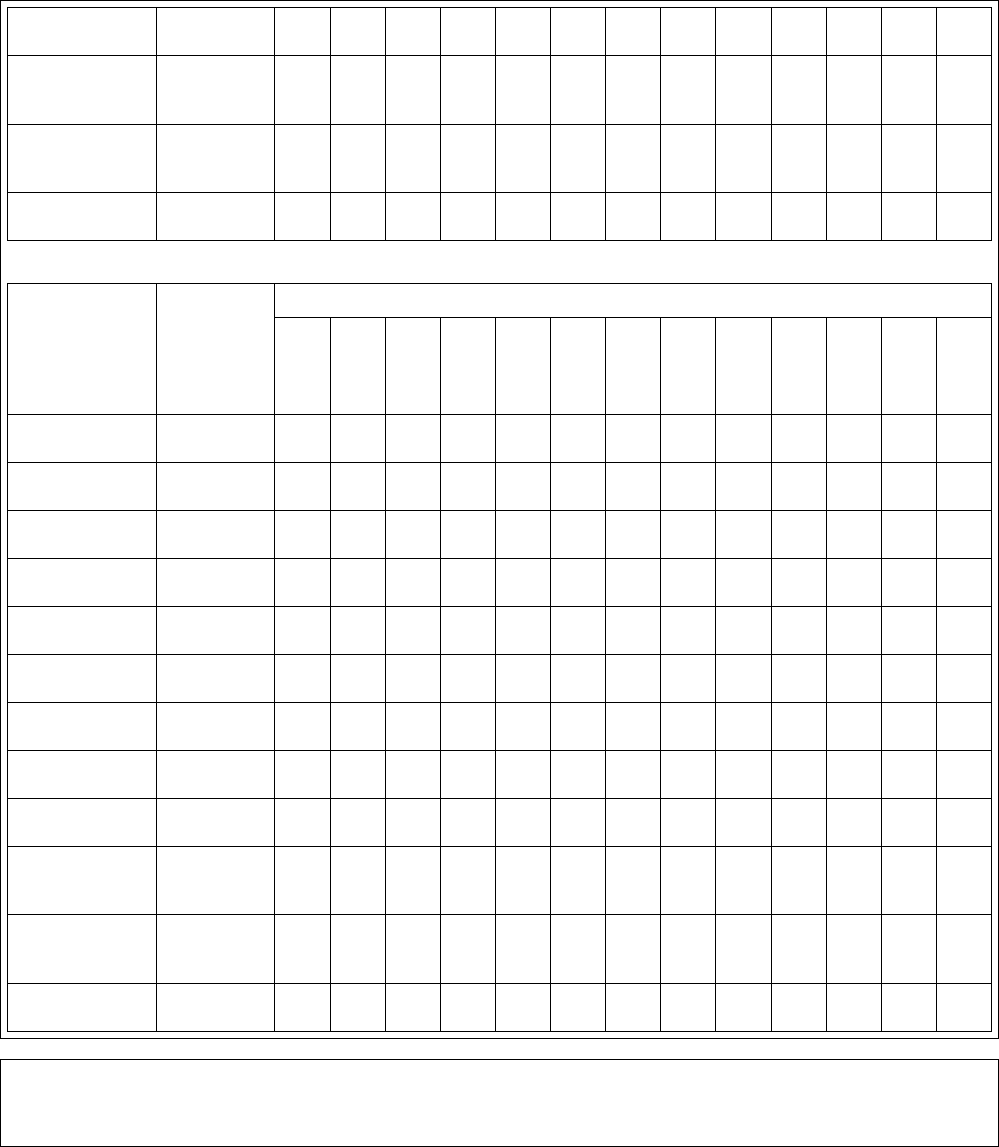
Energy Savings Scheme Rule of 2009
Effective from 19 June 2024
Page 166
550 ≤ 700 mm (3
or more lamps)
≥ 1900
-
-
0.42
0.35
0.27
0.20
0.12
0.05
-
-
-
-
-
700 ≤ 1150 mm
(3 or more
lamps)
≥ 3300
-
-
-
-
0.59
0.51
0.44
0.36
0.29
0.14
-
-
-
1150 ≤ 1350 mm
(3 or more
lamps)
≥ 4500
-
-
-
-
-
-
-
0.68
0.60
0.45
0.30
0.15
-
1350 ≤ 1500 (3
or more lamps)
≥ 7300
-
-
-
-
-
-
-
-
-
0.77
0.62
0.47
0.32
Table E13.2 – Small Business Site Electricity Savings Factor (MWh per T5 Luminaire replaced)
Existing
Luminaire
Light
Output of
new End-
User
Equipment
(lm)
Lamp Circuit Power of the replacement luminaire (Watts)
≤10
W
≤15
W
≤20
W
≤25
W
≤30
W
≤35
W
≤40
W
≤45
W
≤50
W
≤60
W
≤70
W
≤80
W
≤90
W
550 ≤ 700 mm (1
lamp)
≥ 600
0.25
-
-
-
-
-
-
-
-
-
-
-
-
700 ≤ 1150 mm
(1 lamp)
≥ 1100
0.55
0.34
0.13
-
-
-
-
-
-
-
-
-
-
1150 ≤ 1350 mm
(1 lamp)
≥ 1500
-
0.63
0.42
0.21
-
-
-
-
-
-
-
-
-
1350 ≤ 1500 (1
lamp)
≥ 2400
-
-
0.71
0.50
0.29
0.08
-
-
-
-
-
-
-
550 ≤ 700 mm (2
lamps)
≥ 1200
-
0.71
0.50
0.29
-
-
-
-
-
-
-
-
-
700 ≤ 1150 mm
(2 lamps)
≥ 2200
-
-
1.09
0.88
0.67
0.46
0.25
-
-
-
-
-
-
1150 ≤ 1350 mm
(2 lamps)
≥ 3000
-
-
-
-
1.26
1.05
0.84
0.63
0.42
-
-
-
-
1350 ≤ 1500 (2
lamps)
≥ 4900
-
-
-
-
-
1.64
1.43
1.22
1.01
0.59
0.17
-
-
550 ≤ 700 mm (3
or more lamps)
≥ 1900
-
-
1.18
0.97
0.76
0.55
0.34
-
-
-
-
-
-
700 ≤ 1150 mm
(3 or more
lamps)
≥ 3300
-
-
-
-
1.64
1.43
1.22
1.01
0.80
0.38
-
-
-
1150 ≤ 1350 mm
(3 or more
lamps)
≥ 4500
-
-
-
-
-
-
-
1.89
1.68
1.26
0.84
0.42
-
1350 ≤ 1500 (3
or more lamps)
≥ 7300
-
-
-
-
-
-
-
-
-
2.14
1.72
1.30
0.88
Lifetime (for information purposes only)
Residential Building Lifetime = 15 years.
Small Business Site Lifetime = 10 years.
NSW Government Gazette
20 December 2023

Energy Savings Scheme Rule of 2009
Effective from 19 June 2024
Page 167
Schedule F – Activity Definitions for Installation of High Efficiency Appliances for Businesses (clause 9.9)
Activity Definition F1.1
Name of Activity
INSTALL A NEW HIGH EFFICIENCY REFRIGERATED CABINET
Equipment Requirements
1. The New End-User Equipment End-User Equipment must be a Refrigerated Cabinet as defined within the terms of the Greenhouse
and Energy Minimum Standards (Refrigerated Cabinets) Determination 2020.
2. The Refrigerated Cabinet must have an Energy Efficiency Index (EEI) below 77, as recorded in the GEMS Registry, with the
exception of Integral Ice Cream Freezer Cabinets (Product Class 5 in Table F1.1.1) which must have an EEI below 51, as recorded
in the GEMS registry.
3. The Refrigerated Cabinet must be a registered product based on Greenhouse and Energy Minimum Standards (Refrigerated
Cabinets) Determination 2020 or the New Zealand Energy Efficiency (Energy Using Products) Amendment Regulations 2020.
Installation Requirements
1. The New End-User Equipment must be installed and must not replace an existing refrigerated cabinet.
2. The activity must be performed or supervised by a suitably qualified licence holder in compliance with the relevant standards and
legislation.
Equipment Energy Savings
Equation F1.1.1
Deemed Equipment Electricity Savings = TEC × (Baseline EEI / Product EEI – 1) × af × 365× Lifetime/1000
Where:
• Total Energy Consumption (TEC), in kWh/day, is the daily TEC of the new Refrigerated Cabinet model as recorded in the
GEMS Registry
• Baseline Energy Efficiency Index is the Baseline EEI as defined in Table F1.1.1
• Product EEI is the EEI of the new Refrigerated Cabinet model as recorded in the GEMS Registry
• af is the adjustment factor as defined in Table F1.1.1
• Lifetime, in years, is specified in Table F1.1.2
Table F1.1.1 Baseline EEI and Adjustment Factor by Product Class for New End-User Equipment
Product Type
Refrigerated Cabinet
Product Class
(Product
Characteristics
Code)
AS 1731.14 Product
Types
af
Baseline EEI
Heavy Duty
(HD)
Normal Duty (ND)
and Light Duty
(LD)
1. Integral
Refrigerated
Display
Cabinet
Class 1 (IRH)
HC1, HC2, HC3, HC4,
HC5, HC6
1.0
-
77
Class 2 (IFH)
IHF1, IHF3, IHF4, IHF5,
IHF6 (>500l)
1.0
-
60
Class 7 (IRV)
IVC1, IVC2, IVC3, IVC4
Glass door (M1)
1.0
-
45
Class 8 (IFV)
IVF1, IVF2, IVF4 Glass
door
1.0
-
77
Class 11 (IRV-4)
IVC4 Glass door (M2)
1.0
-
77
2. Integral Ice
Cream Freezer
Cabinet
Class 5 (IFH-5)
IHF5, IHF6 (<500 litres)
1.0
-
77
Class 12 (RRH)
RS6, RS7, RS8, RS9
1.0
-
77
NSW Government Gazette
20 December 2023
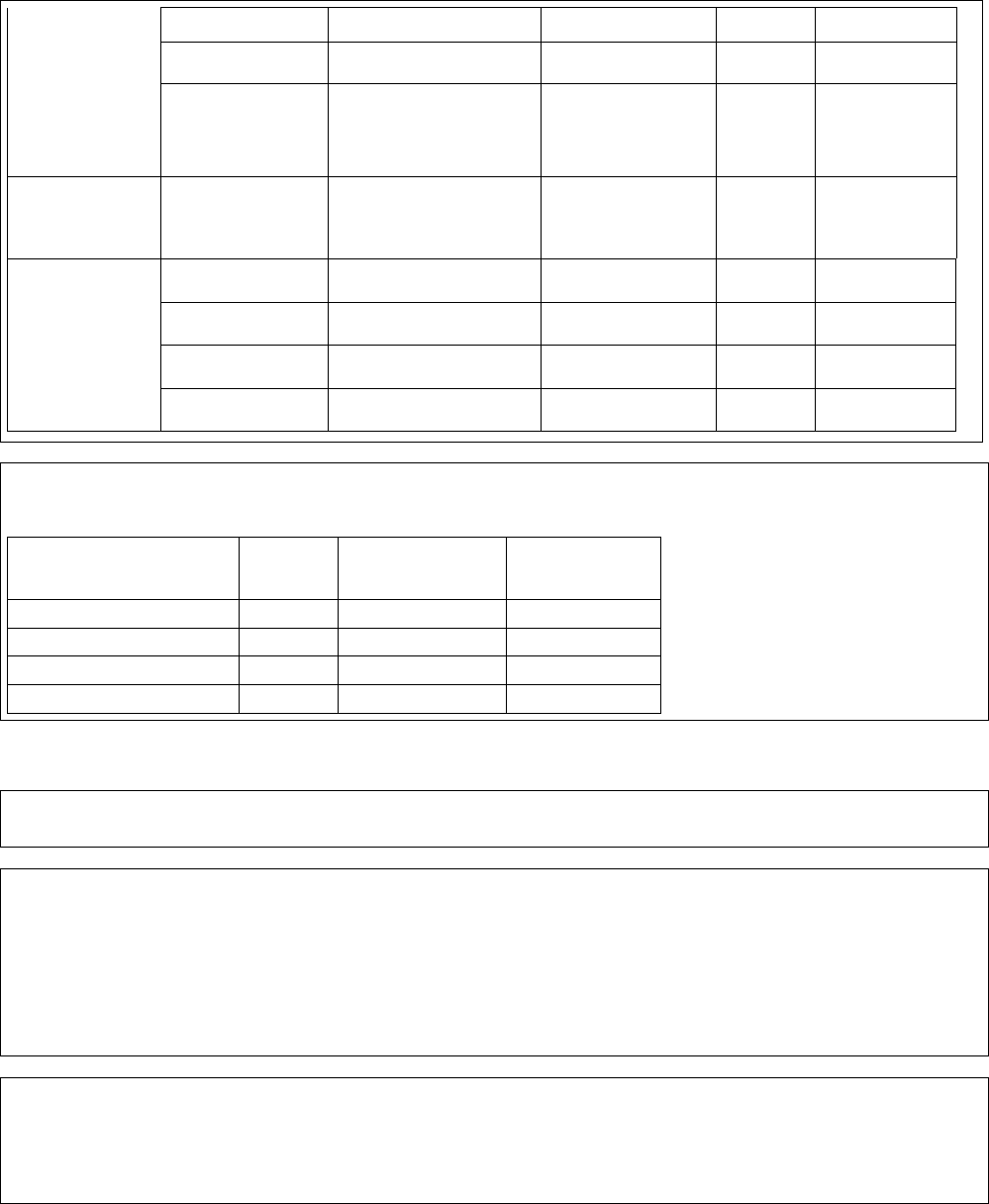
Energy Savings Scheme Rule of 2009
Effective from 19 June 2024
Page 168
3. Remote
Refrigerated
Display
Cabinet
Class 13 (RRH)
RS13, RS14,
1.0
-
60
Class 14 (RRV or
RRV-2)
RS1, RS2, RS3, RS4,
RS5, RS10
1.0
-
60
Class 15 (RFV)
RS11, RS12, RS15, RS16,
RS17, RS18, RS19, RS20
1.0
-
77
4. Gelato or Ice
Cream
Scooping
Cabinet
Class 6 (GSC or ISC)
1.0
-
45
5. Refrigerated
Storage
Cabinet
Class 3 (SRH)
LD:
1.2
60
60
ND or HD:
1.0
Class 4 (SFH)
LD:
1.1
60
60
ND or HD:
1.0
Class 9 (SRV)
LD:
1.2
77
77
ND or HD:
1.0
Class 10 (SFV)
LD:
1.1
77
77
ND or HD:
1.0
Lifetime
Table F1.1.2
Refrigerated Cabinet Class
Total
Display
Area (m
2
)
Temperature class
Lifetime (years)
Classes 1 - 6, 9, 10
-
All
8
Classes 7, 8 and 11
<3.3
All
8
Classes 7, 8 and 11
≥3.3
All
12
Classes 12 - 15
-
All
12
Activity Definition F1.2
Name of Activity
REPLACE AN EXISTING REFRIGERATED DISPLAY CABINET
Equipment Requirements
1. The replacement End-User Equipment must be a Refrigerated Cabinet as defined within the terms of the Greenhouse and Energy
Minimum Standards (Refrigerated Cabinets) Determination 2020.
2. The Refrigerated Cabinet must have an Energy Efficiency Index (EEI) below 81, as recorded in the GEMS Registry, with the
exception of Integral Ice Cream Freezer Cabinets (Product Class 5 in Table F1.2.1) which must have an EEI below 51, as recorded
in the GEMS registry.
3. The Refrigerated Cabinet must be a registered product based on Greenhouse and Energy Minimum Standards (Refrigerated
Cabinets) Determination 2020 or the New Zealand Energy Efficiency (Energy Using Products) Amendment Regulations 2020.
Installation Requirements
1. The existing End-User Equipment must be removed and disposed of in accordance with legislation.
2. The replacement End-User Equipment must be installed.
3. The activity, including the removal of the existing End-User Equipment, must be performed or supervised by a suitably qualified
licence holder in compliance with the relevant standards and legislation.
NSW Government Gazette
20 December 2023
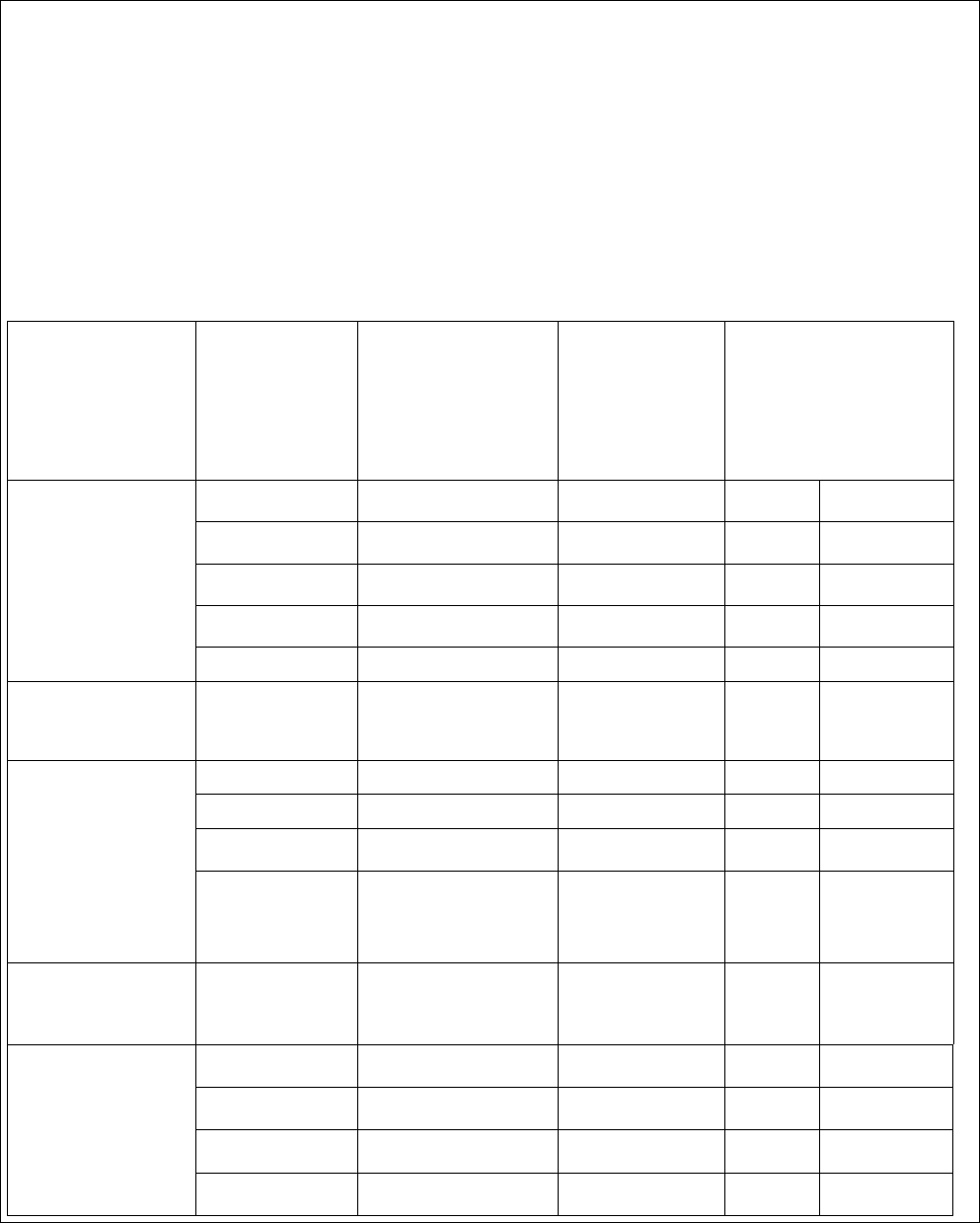
Energy Savings Scheme Rule of 2009
Effective from 19 June 2024
Page 169
Equipment Energy Savings
Equation F1.2.1
Deemed Equipment Electricity Savings = TEC × (Baseline EEI / Product EEI – 1) × af × 365× Lifetime/1000
Where:
• Total Energy Consumption (TEC), in kWh/day, is the daily TEC of the replacement Refrigerated Cabinet model as recorded
in the GEMS Registry
• Baseline Energy Efficiency Index is the Baseline EEI as defined in Table F1.2.1
• Product EEI is the EEI of the replacement Refrigerated Cabinet model as recorded in the GEMS Registry
• af is the adjustment factor as defined in Table F1.2.1
• Lifetime, in years, is specified in Table F1.2.2.
Table F1.2.1 Baseline EEI and Adjustment Factor by Product Class for replacement End-User Equipment
Product Type
Refrigerated
Cabinet Product
Class (Product
Characteristics
Code)
AS 1731.14 Product
Types
af
Baseline EEI
Heavy
Duty (HD)
Normal Duty
(ND) and Light
Duty (LD)
1. Integral
Refrigerated
Display Cabinet
Class 1 (IRH)
HC1, HC2, HC3, HC4,
HC5, HC6
1.0
-
100
Class 2 (IFH)
IHF1, IHF3, IHF4,
IHF5, IHF6 (>500l)
1.0
-
77
Class 7 (IRV)
IVC1, IVC2, IVC3,
IVC4 Glass door (M1)
1.0
-
60
Class 8 (IFV)
IVF1, IVF2, IVF4 Glass
door
1.0
-
100
Class 11 (IRV-4)
IVC4 Glass door (M2)
1.0
-
100
2. Integral Ice Cream
Freezer Cabinet
Class 5 (IFH-5)
IHF5, IHF6 (<500 litres)
1.0
-
100
3. Remote
Refrigerated
Display Cabinet
Class 12 (RRH)
RS6, RS7, RS8, RS9
1.0
-
100
Class 13 (RRH)
RS13, RS14,
1.0
-
77
Class 14 (RRV or
RRV-2)
RS1, RS2, RS3, RS4,
RS5, RS10
1.0
-
77
Class 15 (RFV)
RS11, RS12, RS15,
RS16, RS17, RS18,
RS19, RS20
1.0
-
100
4. Gelato or Ice
Cream Scooping
Cabinet
Class 6 (GSC or ISC)
1.0
-
60
5. Refrigerated
Storage Cabinet
Class 3 (SRH)
LD:
1.2
77
77
ND or HD:
1.0
Class 4 (SFH)
LD:
1.1
77
77
ND or HD:
1.0
Class 9 (SRV)
LD:
1.2
100
100
ND or HD:
1.0
Class 10 (SFV)
LD:
1.1
100
100
ND or HD:
1.0
NSW Government Gazette
20 December 2023

Energy Savings Scheme Rule of 2009
Effective from 19 June 2024
Page 170
Lifetime
Table F1.2.2
Refrigerated Cabinet Class
Total
Display
Area (m
2
)
Temperature class
Lifetime (years)
Classes 1 - 6, 9, 10
-
All
8
Classes 7, 8 and 11
<3.3
All
8
Classes 7, 8 and 11
≥3.3
All
12
Classes 12 - 15
-
All
12
NSW Government Gazette
20 December 2023

Energy Savings Scheme Rule of 2009
Effective from 19 June 2024
Page 171
Activity Definition F2
Name of Activity
INSTALL A NEW HIGH EFFICIENCY LIQUID CHILLING PACKAGE
Equipment Requirements
1. The End User Equipment must be a Liquid Chilling Package (LCP) registered in the GEMS Registry as complying with the
Greenhouse and Energy Minimum Standards (Liquid-chilling Packages Using the Vapour Compression Cycle) Determination
2012.
2. The LCP must have an IPLV at least 10% greater than the Baseline for the corresponding figure for the type and cooling
capacity in Table F2.1.
Installation Requirements
1. The LCP must be installed.
Equipment Energy savings
Deemed Equipment Electricity Savings = (Capacity ÷ Baseline – Capacity ÷ IPLV) × EFLH × Lifetime / 1000
Where:
• Capacity, in kWR, is the total rated cooling capacity of the new Liquid Chilling Package as determined using AS/NZS 4776
Series of Standards and recorded in the GEMS Registry.
• Baseline is the corresponding figure for the cooling capacity class and type of the new Liquid Chilling Package as determined
by AS/NZS 4776 Series of Standards in Table F2.1.
• IPLV is the Integrated Part Load Value of the new Liquid Chilling Package as determined using AS/NZS 4776 and recorded
in the GEMS Registry.
• EFLH is the Equivalent Full Load Hours and is the corresponding figure for the cooling capacity class and type of the new
Liquid Chilling Package in Table F2.1.
• Lifetime, in years, is the corresponding figure for the cooling capacity class and type of the new Liquid Chilling Package as
determined by AS/NZS 4776 in Table F2.2.
Table F2.1
LCP type
Cooling capacity
Baseline (IPLV)
EFLH (hours)
Air cooled
350 to 499 kWR
4.6
2323
Air cooled
500 to 699 kWR
4.7
2323
Air cooled
700 to 999 kWR
4.7
2323
Air cooled
1000 to 1499 kWR
4.5
2323
Air cooled
Greater than 1500 kWR
4.1
2323
Water cooled
350 to 499 kWR
9.0
2323
Water cooled
500 to 699 kWR
8.6
2323
Water cooled
700 to 999 kWR
9.7
2323
Water cooled
1000 to 1499 kWR
9.0
2323
Water cooled
Greater than 1500 kWR
9.9
2323
Lifetime
The Energy Savings from the installation of a new Liquid Chilling Package are assumed to persist at a constant level for the expected
lifetime of the LCP. The Lifetime, in years, is the figure corresponding to the type and capacity class in Table F2.2.
Table F2.2
LCP Type
Capacity class
Lifetime (years)
All
All
10
NSW Government Gazette
20 December 2023

Energy Savings Scheme Rule of 2009
Effective from 19 June 2024
Page 172
Activity Definition F3
Name of Activity
INSTALL A NEW HIGH EFFICIENCY CLOSE CONTROL AIR CONDITIONER
Equipment Requirements
1. The End User Equipment must be a Close Control Air Conditioner (CCAC) registered in the GEMS Registry as complying
with the Greenhouse and Energy Minimum Standards (Close Control Air Conditioner) Determination 2012.
2. The CCAC must have an EER at least 20% greater than the Baseline for the corresponding figure for the type and cooling
capacity in Table F3.1.
Installation Requirements
1. The CCAC must be installed.
Equipment Energy savings
Deemed Equipment Electricity Savings = (Capacity ÷ Baseline – Capacity ÷ EER) × Hours × Lifetime / 1000
Where:
• Capacity, in kW, is the total cooling capacity of the new CCAC as determined using AS/NZS 4965.1 and recorded in the
GEMS Registry.
• Baseline is the corresponding figure for the cooling capacity class of the new CCAC as determined by AS/NZS 4965.1 in
Table F3.1.
• EER is the Energy Efficiency Ratio as determined using AS/NZS 4965.1 and recorded in the GEMS Registry.
• Hours is the annual operating hours and is the corresponding figure for the cooling capacity class of the new CCAC.
• Lifetime, in years, is the corresponding figure for the cooling capacity class of the new CCAC as determined by AS/NZS
4965.1 in Table F3.2.
Table F3.1
CCAC cooling capacity class
Baseline (EER)
Hours (hours p.a.)
Less than 19.05 kW
3.21
5694
19.05 to less than 39.5 kW
3.18
5694
39.5 to less than 70.0 kW
3.20
5694
Greater than or equal to 70.0 kW
3.18
5694
Lifetime
The Energy Savings from the installation of a new CCAC are assumed to persist at a constant level for the expected lifetime of the
CCAC. The Lifetime, in years, is the figure corresponding to the type and capacity class in Table F3.2.
Table F3.2
CCAC capacity class
Capacity class
Lifetime (years)
All
All
10
NSW Government Gazette
20 December 2023

Energy Savings Scheme Rule of 2009
Effective from 19 June 2024
Page 173
Activity Definition F4
Name of Activity
INSTALL A NEW HIGH EFFICIENCY AIR CONDITIONER OR REPLACE AN EXISTING AIR CONDITIONER WITH A
HIGH EFFICIENCY AIR CONDITIONER
Eligibility Requirements
1. This activity must be an installation of a new high efficiency air conditioner or a replacement of an existing air conditioner
(whether operational or not) with a high efficiency air conditioner.
2. For the purposes of clause 9.9.1(d), the New or replacement End-User Equipment must not be installed in a Residential
Building unless the activity is the replacement of an existing air conditioner in a centralised system or in the common areas of
a BCA Class 2 building.
Equipment Requirements
1. The New End-User Equipment or replacement End-User Equipment must be registered in the GEMS Registry as complying
with the Greenhouse and Energy Minimum Standards (Air Conditioners up to 65kW) Determination 2019.
2. If the New End-User Equipment or replacement End-User Equipment has a Cooling Capacity recorded in the GEMS Registry:
a. It must have a Commercial TCSPF_mixed value, as recorded in the GEMS Registry, equal to or greater than the
Minimum Commercial TCSPF_mixed value for the corresponding Product Type and Cooling Capacity in Table F4.4;
or
b. If it does not have a Commercial TCSPF_mixed value recorded in the GEMS Registry, then it must have a Rated
AEER in the GEMS Registry equal to or greater than the Minimum Rated AEER for the Product Type and Cooling
Capacity in Table F4.5.
3. If the New End-User Equipment or replacement End-User Equipment has a Heating Capacity recorded in the GEMS Registry,
and is installed in the hot or average zone as defined in Table A27:
a. It must have a Commercial HSPF_mixed value, as recorded in the GEMS Registry, equal to or greater than the
Minimum Commercial HSPF_mixed value for the same Product Type and Cooling Capacity in Table F4.4; or
b. If it does not have a Commercial HSPF_mixed value recorded in the GEMS Registry, then it must have aRated
ACOP in the GEMS Registry equal to or greater than the Minimum Rated ACOP for the same Product Type and
Cooling Capacity in Table F4.5.
4. If the New End-User Equipment or replacement End-User Equipment has a Heating Capacity recorded in the GEMS Registry
and is installed in the cold zone as defined in Table A27:
a. It must have a Commercial HSPF_cold value, as recorded in the GEMS Registry, equal to or greater than the
Minimum Commercial HSPF_cold value for the same Product Type and Cooling Capacity in Table F4.4; or
b. If it does not have a Commercial HSPF_cold value recorded in the GEMS Registry, then it must have a Rated ACOP
in the GEMS Registry equal to or greater than the Minimum Rated ACOP for the same Product Type and Cooling
Capacity in Table F4.5.
Installation Requirements
1. The existing End-User Equipment must be removed.
2. The New End-User Equipment or replacement End-User Equipment must be installed.
3. The activity, including the removal of any existing End-User Equipment, must be performed or supervised by a suitably
qualified licence holder in compliance with the relevant standards and legislation.
Equipment Energy savings
Equation F4.1
Deemed Activity Electricity Savings = [(Reference Cooling Annual Energy Use - Cooling Annual Energy Use) + (Reference Heating
Annual Energy Use - Heating Annual Energy Use)] × Lifetime / 1000
Where:
• Reference Cooling Annual Energy Use and Reference Heating Annual Energy Use, in kWh/y, are calculated using Equation
F4.2 and F4.3 respectively;
• Cooling Annual Energy Use and Heating Annual Energy Use, in kWh/y, are the values of energy use on the Zoned Energy
Rating Label of the New End User Equipment or replacement End-User Equipment for the zone in which the product is
installed, as defined in Table A27;
o If the New End User Equipment or replacement End-User Equipment does not have a Zoned Energy Rating Label,
Cooling Annual Energy Use and Heating Annual Energy Use are equal to the values of Commercial tcec and
NSW Government Gazette
20 December 2023

Energy Savings Scheme Rule of 2009
Effective from 19 June 2024
Page 174
Commercial thec as recorded in the GEMS Registry, for the zone in which the product is installed, as defined in
Table A27;
o If the New End User Equipment or replacement End-User Equipment does not have a Zoned Energy Rating Label
and does not have Commercial tcec and Commercial thec values as recorded in the GEMS Registry, the Cooling
Annual Energy Use and Heating Annual Energy Use are determined using Equations F4.4 and F4.5 respectively;
and
• Lifetime, in years, is as specified in Table F4.6.
Equation F4.2
Reference Cooling Annual Energy Use = Cooling Capacity × Equivalent Cooling Hours / Baseline Cooling AEER
Equation F4.3
Reference Heating Annual Energy Use = Heating Capacity × Equivalent Heating Hours / Baseline Heating ACOP
Where:
• Cooling Capacity and Heating Capacity, in kW, are the values of Cooling Capacity at 35°C and Heating Capacity at 7°C
respectively on the energy rating label of the New End User Equipment or replacement End-User Equipment as recorded in
the GEMS Registry;
• Equivalent Cooling Hours and Equivalent Heating Hours, in h/y, are specified in Table F4.1, according to the climate zone in
which the product is installed, as defined in Table A27; and
• Baseline Cooling AEER and Baseline Heating ACOP are specified in Table F4.2 (for new) and Table F4.3 (for replacement),
according to the Product Type and Cooling Capacity.
Equation F4.4
Cooling Annual Energy Use = Cooling Capacity × Equivalent Cooling Hours / Rated AEER
Equation F4.5
Heating Annual Energy Use = Heating Capacity × Equivalent Heating Hours / Rated ACOP
Where:
• Cooling Capacity and Heating Capacity, in kW, are the values of Cooling Capacity at 35°C and Heating Capacity at 7°C
respectively on the energy rating label of the New End User Equipment or replacement End-User Equipment as recorded in
the GEMS Registry;
• Equivalent Cooling Hours and Equivalent Heating Hours, in h/y, are specified in Table F4.1, according to the climate zone in
which the product is installed, as defined in Table A27; and
• Rated AEER and Rated ACOP are the New End User Equipment or replacement End-User Equipment’s Rated AEER and
Rated ACOP as recorded in the GEMS Registry.
Table F4.1 - Commercial Equivalent Cooling and Heating Hours (h/y) derived from AS/NZS 3823.4
Equivalent Cooling Hours
(h/y)
Equivalent Heating Hours
(h/y)
Hot Zone
1754
71
Average Zone
801
303
Cold Zone
530
530
Table F4.2 – Baseline AEER and Baseline ACOP for a new air conditioner
Product Type
Cooling Capacity, R
(kW)
Baseline Cooling
AEER
Baseline Heating
ACOP
Air-air, Non-Ducted
R < 4
3.66
2.33
Air-air, Non-Ducted
4 ≤ R < 10
3.22
2.11
Air-air, Ducted
R < 10
3.1
2.05
Air-air, Ducted or Non-Ducted
10 ≤ R < 39
3.1
2.05
Air-air, Ducted or Non-Ducted
39 ≤ R ≤ 65
2.9
1.95
NSW Government Gazette
20 December 2023

Energy Savings Scheme Rule of 2009
Effective from 19 June 2024
Page 175
Table F4.3 – Baseline AEER and Baseline ACOP for a replacement air conditioner
Product Type
Cooling Capacity, R
(kW)
Baseline Cooling
AEER
Baseline Heating
ACOP
Air-air, Non-Ducted
R < 4
3.33
2.17
Air-air, Non-Ducted
4 ≤ R < 10
2.93
1.97
Air-air, Ducted
R < 10
2.8
1.90
Air-air, Ducted or Non-Ducted
10 ≤ R < 39
2.8
1.90
Air-air, Ducted or Non-Ducted
39 ≤ R ≤ 65
2.75
1.88
Table F4.4 – Minimum TCSPF/HSPF Requirement
Product Type
Cooling
Capacity, R
(kW)
Minimum
Commercial
TCSPF_mixed
Minimum
Commercial
HSPF_mixed
Minimum
Commercial
HSPF_cold
Air-air, Split
Systems
Non-Ducted
R < 4
7.0
4.5
4.0
Non-Ducted
4 ≤ R < 6
6.0
4.0
4.0
Non-Ducted
6 ≤ R < 10
6.0
4.0
4.0
Ducted
R < 10
5.0
4.0
4.0
Ducted or Non-
Ducted
10 ≤ R < 13
5.0
4.0
3.5
Ducted or Non-
Ducted
13 ≤ R < 25
5.0
3.5
3.5
Ducted or Non-
Ducted
25 ≤ R ≤ 65
5.0
3.5
3.0
Air-air, Unitary
Ducted or Non-
Ducted
R ≤ 65
3.5
3.0
2.5
Table F4.5 – Minimum Rated AEER/ACOP Requirement*
Product Type
Cooling Capacity,
R (kW)
Minimum
Rated AEER
Minimum
Rated ACOP
Air-air, Split
Systems
Non-Ducted
R < 4
4.3
4.4
Non-Ducted
4 ≤ R < 6
3.6
3.9
Non-Ducted
6 ≤ R < 10
3.5
3.7
Ducted
R < 10
3.5
3.8
Ducted or Non-
Ducted
10 ≤ R < 13
3.5
3.9
Ducted or Non-
Ducted
13 ≤ R < 25
3.3
3.7
Ducted or Non-
Ducted
25 ≤ R ≤ 65
3.2
3.7
Air-air, Unitary
Ducted or Non-
Ducted
R ≤ 65
3.3
3.3
*Only to be used if there is no TCSPF/HSPF data recorded in the GEMS registry.
Lifetime
Table F4.6
Product Class
Lifetime (years)
All
10
NSW Government Gazette
20 December 2023

Energy Savings Scheme Rule of 2009
Effective from 19 June 2024
Page 176
Activity Definition F5
Name of Activity
INSTALL AN ELECTRONICALLY COMMUTATED MOTOR TO POWER A FAN IN AN INSTALLED REFRIGERATED
CABINET, FREEZER OR COOL ROOM
Equipment Requirements
1. The End-User Equipment must be an electronically commutated (brushless DC) motor.
2. The nominal input power (W) of the End-User Equipment as declared by the manufacturer must be less than or equal to 500
W at full capacity with the impeller fitted.
3. The output power (W) or airflow volume (m
3
/hour) of the End-User Equipment as declared by the manufacturer must be equal
to or greater than the existing refrigeration fan it replaces.
4. The End-User Equipment must meet any other requirements specified by the Scheme Administrator, including the suitability
of the impeller for the motor.
Installation Requirements
1. The End-User Equipment must be installed into a refrigerated cabinet or reach in freezer as defined by the Greenhouse and
Energy Minimum Standards (Refrigerated Cabinets) Determination 2019, or a cool room evaporator unit that is in use (i.e. not
a new refrigeration system).
2. The End-User Equipment must replace an equivalent shaded pole motor or a permanent split capacitor motor as identified by
the manufacturer of the End-User Equipment.
3. The installation must be according to manufacturer guidelines and any requirements specified by the Scheme Administrator.
Equipment Energy savings
Deemed Equipment Electricity Savings = (Input Power × (a – Average Power) + b) × (1 + (1 ÷ COP)) × Hours × Lifetime / 10
6
Where:
• Input Power, in Watts, is the nominal input power of the new End User-Equipment at full throttle with the impeller fitted.
• a is the regression coefficient and b is the error in Regression Analysis between the nominal input power of a sample of fans
powered by an electronically commutated motor and fans powered by a shaded pole motor or a permanent split capacitor
motor and are the corresponding figures for the End-User Equipment nominal power consumption in Table F5.1.
• Average Power is the average input power of the new End-User Equipment over a year compared to its nominal input power
and is the corresponding figure the End-User Equipment’s control system in Table F5.2.
• COP is the co-efficient of performance of the refrigeration system and is the corresponding figure for the refrigeration system
in Table F5.3.
• Hours is the number of hours the fan is active per year and is the corresponding figure for the refrigeration system in Table
F5.3.
• Lifetime, in years, is the useful life of the End-User Equipment and is the corresponding figure for the refrigeration system in
Table F5.4.
Table F5.1
End-User Equipment nominal input power
a
b
Less than or equal to 34 W
1.7692
19.385
Greater than 34W and less than or equal to 500 W
1.2698
6.453
Table F5.2
Control system
Average Power
No control system in place
1
Temperature or pressure dependent speed control
0.8
Timer speed control (with low speed setting at least 8 hours per day)
0.8
Table F5.3
Refrigerator system type
COP
Hours
Refrigerated cabinet
2.8
8000
Reach in freezer
1.8
8000
Cool room
2.6
8000
NSW Government Gazette
20 December 2023

Energy Savings Scheme Rule of 2009
Effective from 19 June 2024
Page 177
Lifetime
The energy savings from the new End User Equipment are assumed to persist at a constant level for the expected lifetime of the
equipment. The Lifetime, in years, is the corresponding figure for the refrigerator system type in Table F5.4.
Table F5.4
Refrigerator type
Years
Refrigerated cabinet
4
Reach in freezer
4
Cool room
7
NSW Government Gazette
20 December 2023
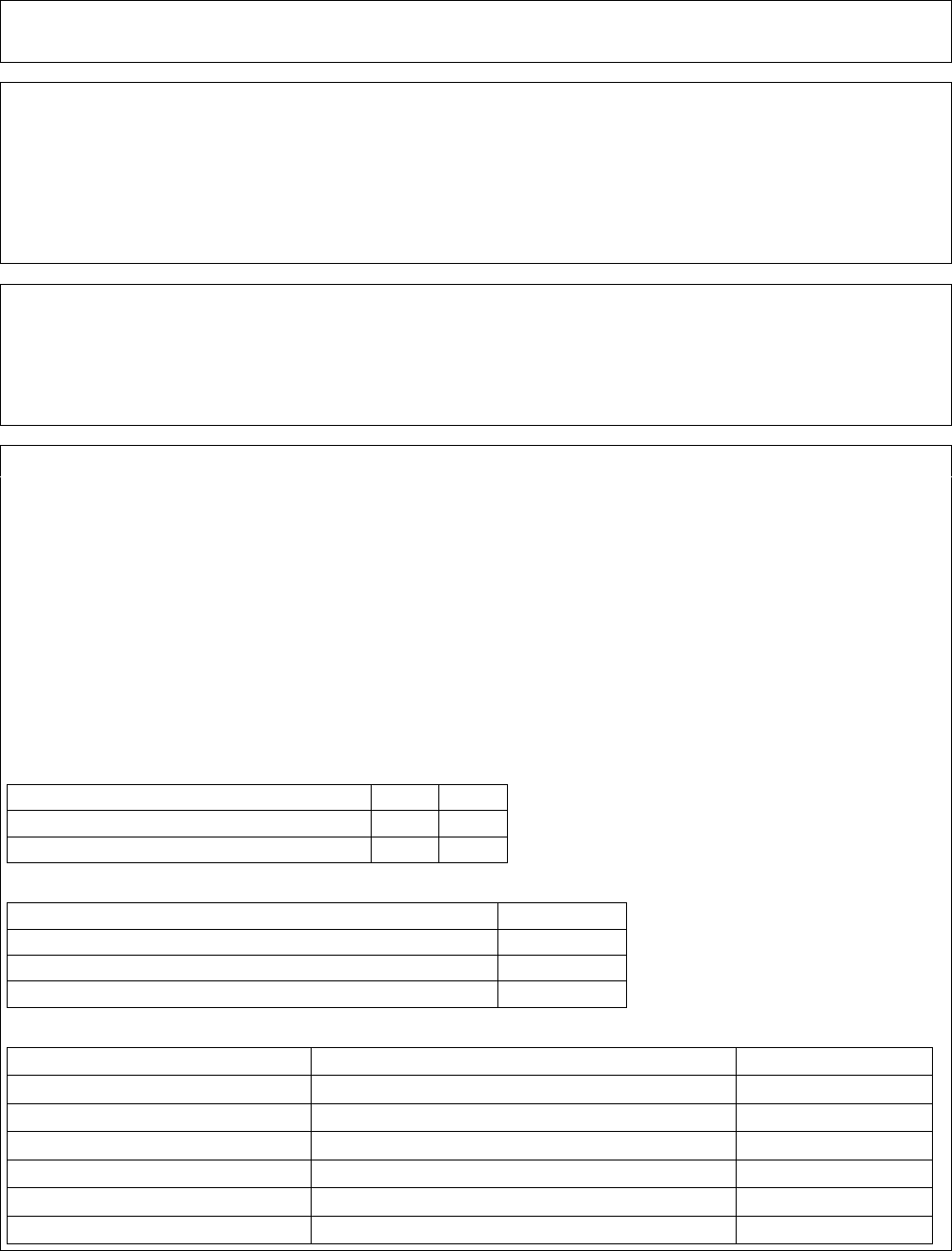
Energy Savings Scheme Rule of 2009
Effective from 19 June 2024
Page 178
Activity Definition F6
Name of Activity
INSTALL AN ELECTRONICALLY COMMUTATED MOTOR TO POWER A VENTILATION FAN
Equipment Requirements
1. The End-User Equipment must be an electronically commutated (brushless DC) motor.
2. The nominal input power (W) of the End-User Equipment as declared by the manufacturer must be less than or equal to 500
W at full capacity with the impeller fitted.
3. The output power (W) or airflow volume (m
3
/hour) of the End-User Equipment as declared by the manufacturer must be equal
to or greater than the existing ventilation fan it replaces.
4. The End-User Equipment must meet any other requirements specified by the Scheme Administrator, including the suitability
of the impeller for the motor.
Installation Requirements
1. The End-User Equipment must be part of a ducted fan or partition fan in an air-handling system, as defined in ISO
13349:2010.
2. The End-User Equipment must replace an equivalent shaded pole motor or a permanent split capacitor motor as identified by
the manufacturer of the End-User Equipment.
3. The installation must be according to manufacturer guidelines and any requirements specified by the Scheme Administrator.
Equipment Energy savings
Deemed Equipment Electricity Savings = (Input Power × (a – Average Power) + b) × Hours × Lifetime / 10
6
Where:
• Input Power, in Watts, is the nominal input power of the new End User-Equipment at full throttle with the impeller fitted.
• a is the regression coefficient and b is the error in regression analysis between the nominal input power of a sample of fans
powered by an electronically commutated motor and fans powered by a shaded pole motor or a permanent split capacitor
motor and are the corresponding figures for the End-User Equipment nominal power consumption in Table F6.1.
• Average Power is the average input power of the new End-User Equipment over a year compared to its nominal input power
and is the corresponding figure the End-User Equipment’s control system in Table F6.2.
• Hours is the number of hours the fan is active per year and is the corresponding figure in Table F6.3 for the BCA building
classification and Business Classification of the entity utilising the End-Use Service.
• Lifetime, in years, is the useful life of the End-User Equipment and is the corresponding figure for the ventilation system in
Table F6.4.
Table F6.1
End-User Equipment nominal input power
a
b
Less than or equal to 34 W
1.7692
19.385
Greater than 34W and less than or equal to 500 W
1.2698
6.453
Table F6.2
Control system
Average Power
No control system in place
1
Temperature or pressure dependent speed control
0.8
Timer speed control (with low speed setting at least 8 hours per day)
0.8
Table F6.3
Building classification
Business Classification
Annual operating hours
BCA Class 2 (multi-unit dwellings)
Services provided by the body corporate or building owner
6300
BCA Class 3 (hotels)
All
6300
BCA Class 5 (offices)
All
2800
BCA Class 6 (shops or shopping centres)
All
4000
BCA Class 6 (restaurants or cafes)
All
5200
BCA Class 7a (car parks)
All
6900
NSW Government Gazette
20 December 2023
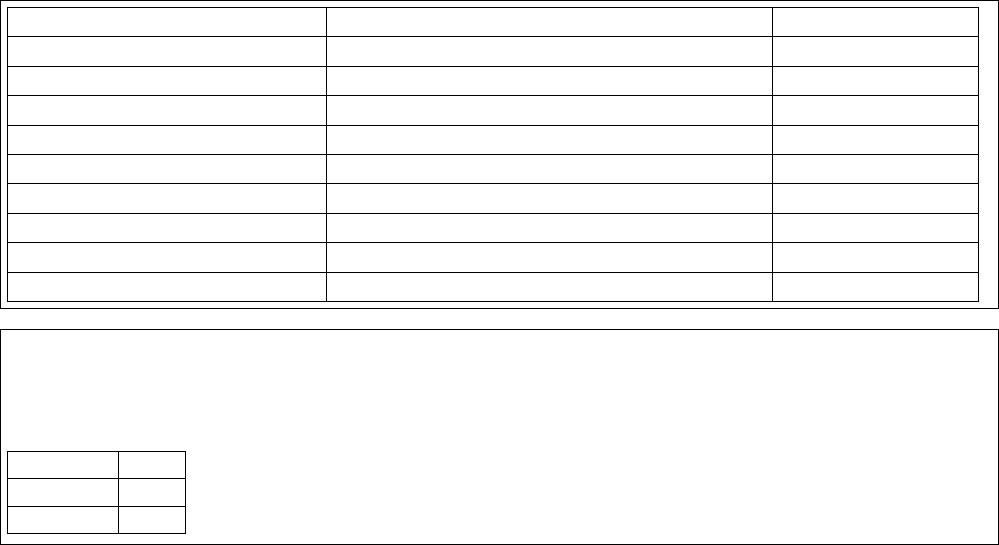
Energy Savings Scheme Rule of 2009
Effective from 19 June 2024
Page 179
BCA Class 7b (warehouses)
ANZSIC Division A (Agriculture, Forestry and Fishing)
8760
BCA Class 7b (warehouses)
Other than ANZSIC Division A
5100
BCA Class 8 (factories)
ANZSIC Division A (Agriculture, Forestry and Fishing)
5100
BCA Class 8 (factories)
ANZSIC Division C (Manufacturing)
5100
BCA Class 8 (factories)
Other than ANZSIC Division A or ANZSIC Division C
2800
BCA Class 9a (clinics)
All
2800
BCA Class 9a (hospitals)
All
8760
BCA Class 9b (theatres)
All
5200
BCA Class 9b (schools)
All
2000
BCA Class 9c (aged care)
All
6300
Lifetime
The energy savings from the new End User Equipment are assumed to persist at a constant level for the expected lifetime of the
equipment. The Lifetime, in years, is the corresponding figure for the fan type in Table F6.4.
Table F6.4
Fan type
Years
Ducted fan
7
Partition fan
7
NSW Government Gazette
20 December 2023
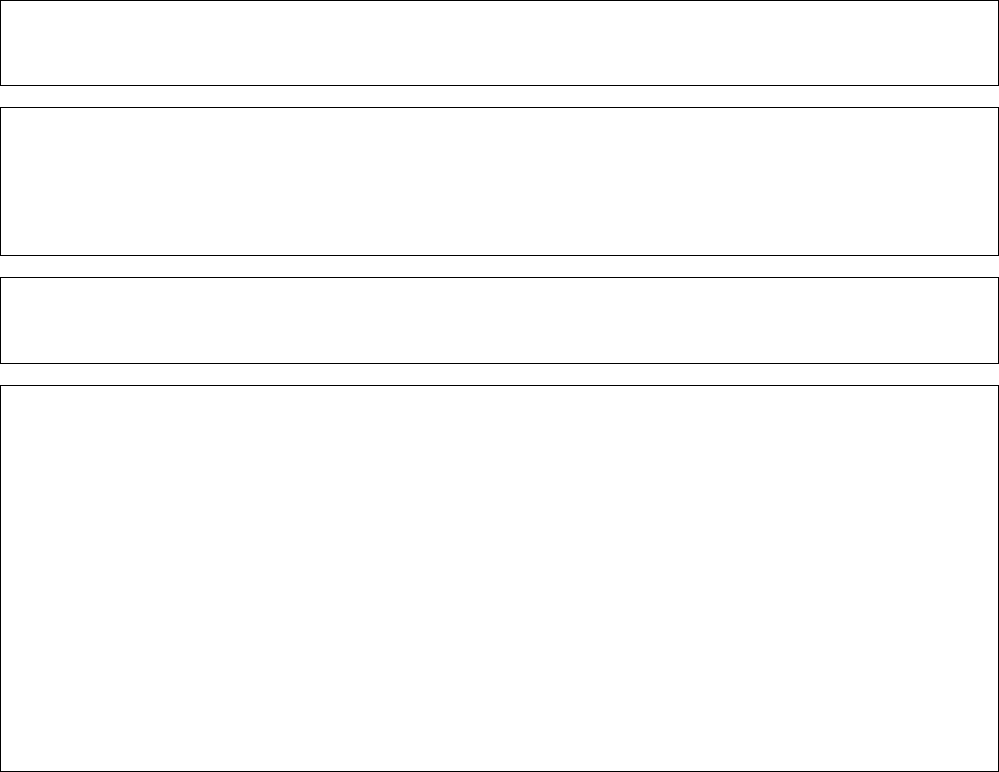
Energy Savings Scheme Rule of 2009
Effective from 19 June 2024
Page 180
Activity Definition F7
Name of Activity
INSTALL A NEW HIGH EFFICIENCY MOTOR OR REPLACE AN EXISTING MOTOR WITH A HIGH EFFICIENCY
MOTOR
Equipment Requirements
1. The End-User Equipment must be a 3 phase electric motor rated ‘high efficiency’ within the meaning of Part 5 of the
Greenhouse and Energy Minimum Standards (Three Phase Cage Induction Motors) Determination 2019 when tested in
accordance with subclause 6.1.3 of IEC60034-2-1.
2. The electric motor must be a registered product under GEMS and comply with the Greenhouse and Energy Minimum
Standards (Three Phase Cage Induction Motors) Determination 2019.
Installation Requirements
1. The electric motor must be installed.
2. The electric motor must have a rated output from 0.73kW to <185kW.
Equipment Energy Savings
Deemed Equipment Electricity Savings = (((P ÷ (Baseline Efficiency ÷ 100)) – (P ÷ (New Efficiency ÷ 100))) × LUF x Asset
Life × 8760 ÷ 1000
Where:
• P is the rated output of the new electric motor as recorded in the GEMS Registry.
• Baseline Efficiency, in %, is:
o the Full Load Efficiency of the existing motor as determined using IEC60034-2-1 and recorded in the GEMS Registry; or
o the corresponding value for the number of poles and rated output of the new electric motor from Table F7.3, if the
existing motor is not listed in the GEMS Registry or if the new electric motor is New End User Equipment. For
intermediate values of rated output, the efficiency shall be determined by linear interpolation
• New Efficiency, in %, is the Full Load Efficiency of the new electric motor as determined using IEC60034-2-1 and recorded in
the GEMS Registry.
• LUF is the Default Load Utilisation Factors for the relevant High Efficiency Motor as set out in Table F7.1 (where the
Business Classification and End-Use Service relevant to the Energy Savings are known), or otherwise Table F7.2
• Asset Life, in years, of the High Efficiency Motor is set out in Table F7.4 for the corresponding rated output of the High
Efficiency Motor.
NSW Government Gazette
20 December 2023
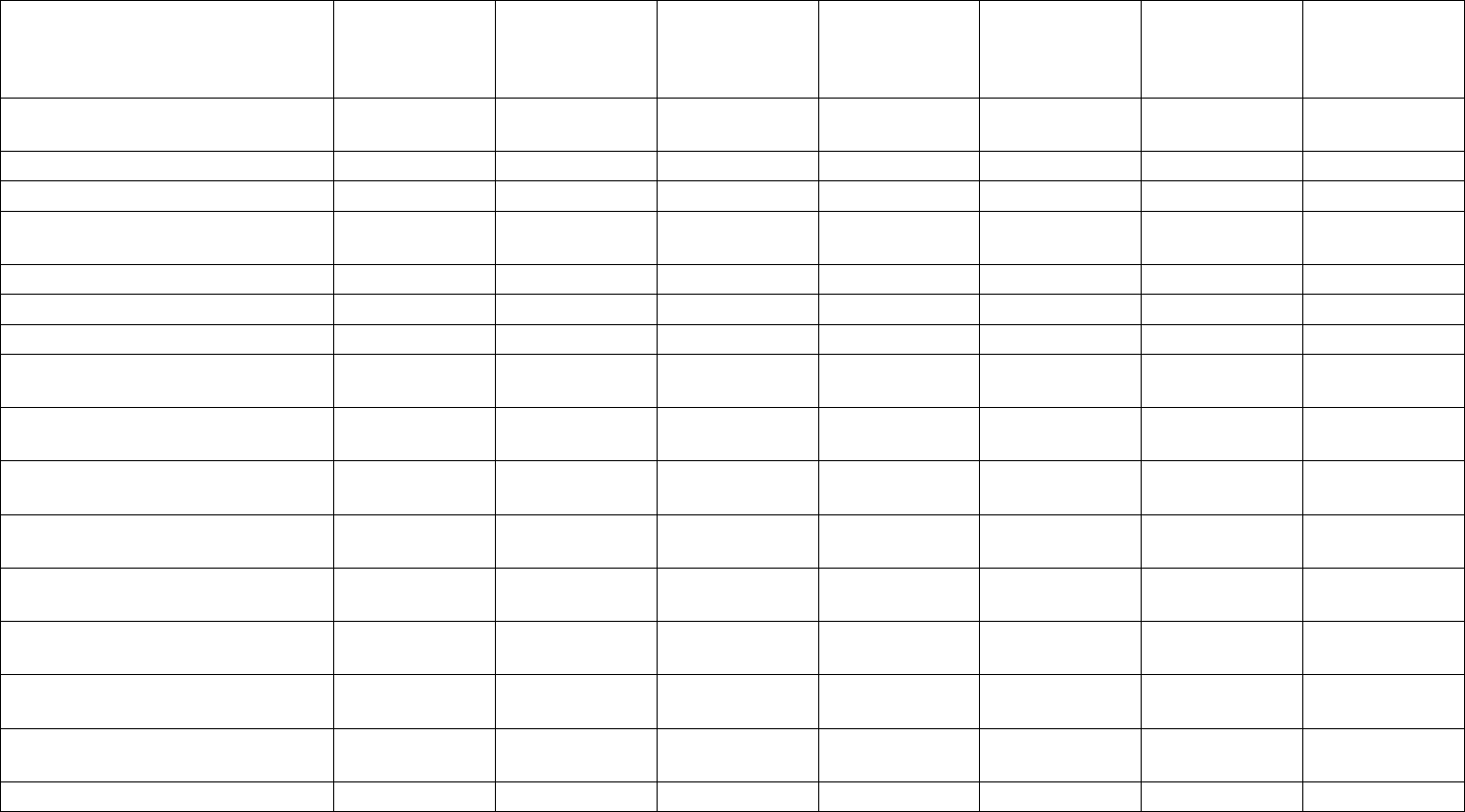
Energy Savings Scheme Rule of 2009
Effective from 19 June 2024
Page 181
Table F7.1 Default Load Utilisation Factor for High Efficiency Motors – Where Business Classification and End-Use Service are known
Load Utilisation Factor
Refrigeration and
freezing
Water/liquid
pumping
Air compression
Air handling,
fans, ventilation
Process Drives
Milling, mixing,
grinding
Material
handling/
conveying
Division A Agriculture, Forestry and
Fishing
0.14
0.32
0.27
0.28
0.32
0.2
0.2
Division B Mining
0.09
0.36
0.32
0.41
0.32
0.32
0.28
Division C Manufacturing
0.28
0.32
0.27
0.32
0.27
0.24
0.28
Division D Electricity, Gas, Water and
Waste Services
0.11
0.32
0.24
0.28
0.28
0.12
0.17
Division E Construction
0.09
0.24
0.15
0.15
0.17
0.14
0.2
Division F Wholesale Trade
0.2
0.14
0.07
0.13
0.13
0.03
0.11
Division G Retail Trade
0.17
0.09
0.07
0.13
0.13
0.03
0.07
Division H Accommodation and Food
Services
0.24
0.11
0.04
0.14
0.13
0.09
0.11
Division I Transport, Postal and
Warehousing
0.17
0.11
0.08
0.13
0.17
0.03
0.16
Division J Information Media and
Telecommunications
0.11
0.09
0.04
0.1
0.11
0.03
0.03
Division K Financial and Insurance
Services
0.09
0.05
0.04
0.06
0.06
0.03
0.03
Division L Rental, Hiring and Real Estate
Services
0.09
0.05
0.04
0.06
0.06
0.03
0.03
Division M Professional, Scientific and
Technical Services
0.17
0.07
0.05
0.08
0.08
0.04
0.03
Division N Administrative and Support
Services
0.11
0.05
0.04
0.06
0.04
0.03
0.03
Division O Public Administration and
Safety
0.09
0.05
0.04
0.06
0.04
0.03
0.03
Division P Education and Training
0.11
0.05
0.04
0.06
0.04
0.03
0.03
NSW Government Gazette
20 December 2023

Energy Savings Scheme Rule of 2009
Effective from 19 June 2024
Page 182
Load Utilisation Factor
Refrigeration and
freezing
Water/liquid
pumping
Air compression
Air handling,
fans, ventilation
Process Drives
Milling, mixing,
grinding
Material
handling/
conveying
Division Q Health Care and Social
Assistance
0.11
0.08
0.11
0.06
0.06
0.03
0.03
Division R Arts and Recreation Services
0.09
0.05
0.04
0.06
0.04
0.03
0.03
Division S Other Services
0.07
0.05
0.04
0.06
0.04
0.03
0.03
NSW Government Gazette
20 December 2023
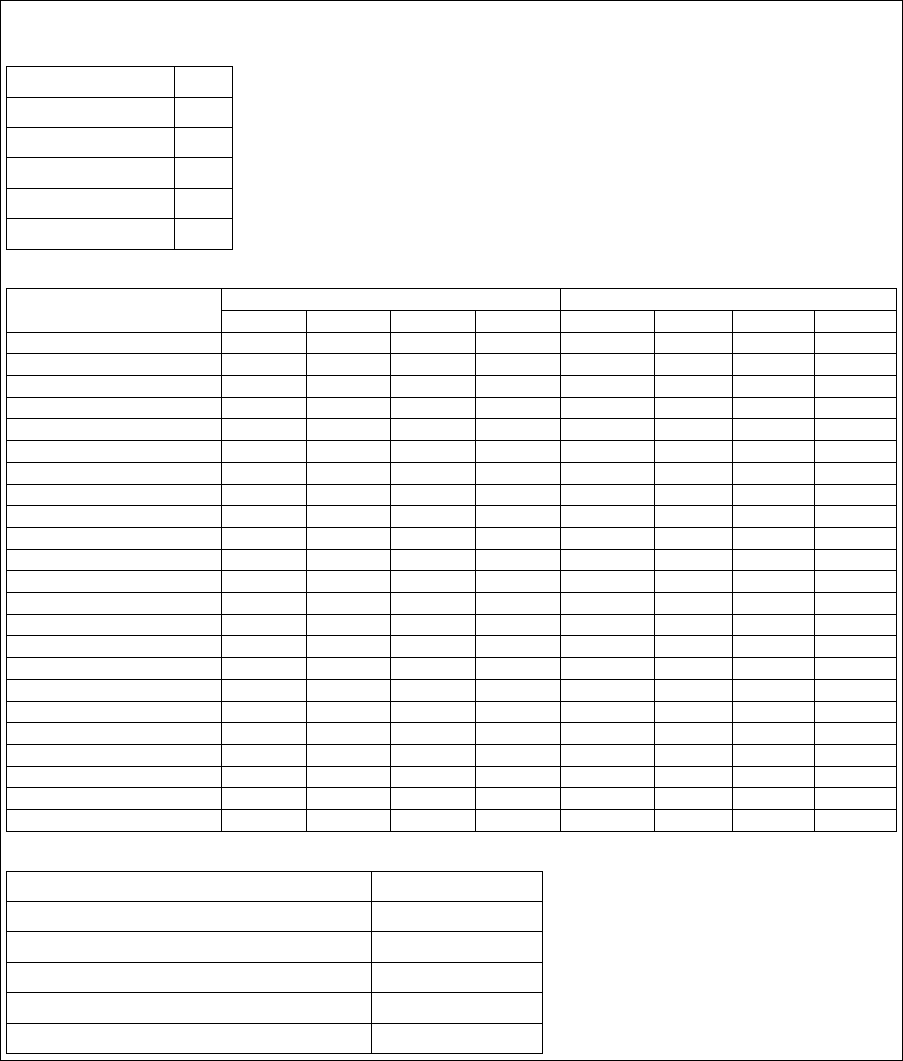
Energy Savings Scheme Rule of 2009
Effective from 19 June 2024
Page 183
Table F7.2 Default Load Utilisation Factor for High Efficiency Motors – Where Business Classification or End-Use
Service are not known
Rated output (kW)
LUF
0.73 to < 2.6
0.09
2.6 to < 9.2
0.10
9.2 to < 41
0.11
41 to < 100
0.13
100 to < 185
0.15
Table F7.3
Rated Output (kW)
Baseline efficiency (%)
Baseline efficiency (%) (60hz)
2 poles
4 poles
6 poles
8 poles
2 poles
4 poles
6 poles
8 poles
0.73
77.4
79.6
75.9
66.2
75.5
78.0
73.0
66.0
0.75
77.4
79.6
75.9
66.2
75.5
78.0
73.0
66.0
1.1
79.6
81.4
78.1
70.8
82.5
84.0
85.5
75.5
1.5
81.3
82.8
79.8
74.1
84.0
84.0
86.5
82.5
2.2
83.2
84.3
81.8
77.6
85.5
87.5
87.5
84.0
3
84.6
85.5
83.3
80.0
87.5
87.5
87.5
85.5
4
85.8
86.6
84.6
81.9
87.5
87.5
87.5
85.5
5.5
87.0
87.7
86.0
83.8
88.5
89.5
89.5
85.5
7.5
88.1
88.7
87.2
85.3
89.5
89.5
89.5
88.5
11
89.4
89.8
88.7
86.9
90.2
91.0
90.2
88.5
15
90.3
90.6
89.7
88.0
90.2
91.0
90.2
89.5
18.5
90.9
91.2
90.4
88.6
91.0
92.4
91.7
89.5
22
91.3
91.6
90.9
89.1
91.0
92.4
91.7
89.5
30
92.0
92.3
91.7
89.8
91.7
93.0
93.0
91.0
37
92.5
92.7
92.2
90.3
92.4
93.0
93.0
91.7
45
92.9
93.1
92.7
90.7
93.0
93.6
93.6
91.7
55
93.2
93.5
93.1
91.0
93.0
94.1
93.6
93.0
75
93.8
94.0
93.7
91.6
93.6
94.5
94.1
93.0
90
94.1
94.2
94.0
91.9
94.5
94.5
94.1
93.6
110
94.3
94.5
94.3
92.3
94.5
95.0
95.0
93.6
132
94.6
94.7
94.6
92.6
95.0
95.0
95.0
93.6
160
94.8
94.9
94.8
93.0
95.0
95.0
95.0
93.6
>160 < 185
95.0
95.1
94.9
93.3
95.4
95.0
95.0
93.6
Table F7.4 Asset Life for High Efficiency Motors (t)
Rated output (kW) of High Efficiency Motor
t (Asset life (years))
0.73 to < 2.6
12
2.6 to < 9.2
15
9.2 to < 41
20
41 to < 100
22
100 to < 185
25
NSW Government Gazette
20 December 2023

Energy Savings Scheme Rule of 2009
Effective from 19 June 2024
Page 184
Activity Definition F8
Name of Activity
REPLACE EXISTING GAS FIRED STEAM BOILER WITH A NEW HIGH EFFICIENCY GAS FIRED STEAM
BOILER
Eligibility Requirements
1. The existing End-User Equipment must be a single, or multiple, Gas fired steam boiler(s) as defined in AS/NZS
3814.
2. The existing End-User Equipment is installed at a Site classified under the BCA as one or more of the following:
Class 2, 3, 5, 6, 7, 8, 9 and 10 buildings.
3. The existing End-User Equipment must be:
a. more than 10 years old; and
b. be in working order at the time of replacement.
Equipment Requirements
1. The replacement End-User Equipment must be a new single, or multiple, Gas fired steam boiler(s) as defined in
AS/NZS 3814.
2. The replacement End-User Equipment must have a nameplate capacity of 200 kW or higher.
3. Replacement End-User Equipment with a nameplate capacity of 1000 kW or above must have a linkageless (two
service/stepper motors) burner with a turn-down ratio of at least 4:1.
4. Replacement End-User Equipment with a nameplate capacity of 2000 kW or above must include an oxygen trim
system and have a linkageless (two service/stepper motors) burner with a turn-down ratio of at least 4:1.
5. The replacement End-User Equipment must have a fuel-to-fluid efficiency of at least 80% when at high fire
conditions.
6. The replacement End-User Equipment must meet any relevant standards and legislation.
Implementation Requirements
1. The existing End-User Equipment must be disconnected and removed; these tasks must be performed or
supervised by a qualified person in accordance with relevant standards and legislation.
2. The installation must be in accordance with manufacturer guidelines, relevant standards and legislation and any
requirements specified by the Scheme Administrator.
NSW Government Gazette
20 December 2023
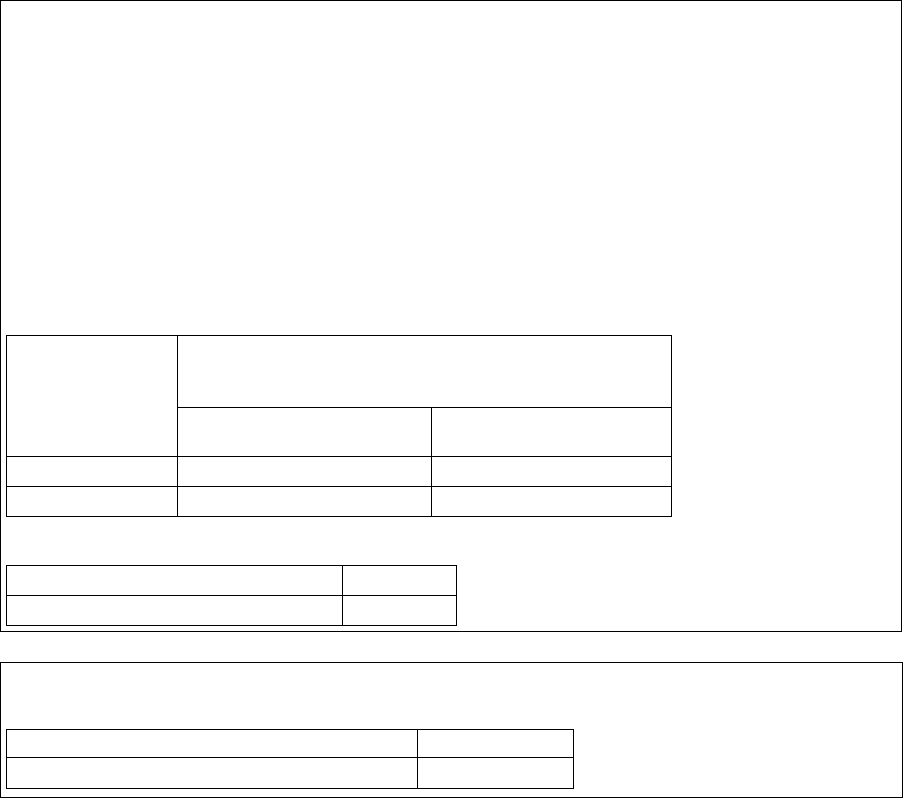
Energy Savings Scheme Rule of 2009
Effective from 19 June 2024
Page 185
Activity Energy Savings
For each Implementation:
Where:
• P, in kW, is the lower of the nameplate capacity of the replacement or existing End-User Equipment.
• DEI is the Default Efficiency Improvement (as a fraction, not as a percentage) for replacing existing End-User
Equipment with replacement End-User Equipment as specified in Table F8.1.
• LUF is the assigned Load Utilisation Factor for all Gas fired steam boilers as specified in Table F8.2.
• Lifetime is the number of years that savings will be deemed as specified in Table F8.3.
Table F8.1 Default Efficiency Improvement (DEI) for replacing existing End-User Equipment
Existing End-User
Equipment
installation year
DEI for replacing existing End-User Equipment
Steam boiler with a burner
that is >10 years old
Steam boiler with burner
replaced ≤ 10 years ago
Pre 1990
0.064
0.053
1990 and after
0.059
0.048
Table F8.2 Load Utilisation Factor (LUF) for Gas fired steam boilers
Business classification
LUF
All
0.206
Lifetime
Table F8.3 End-User Equipment Lifetime
End-User Equipment type
Years
All
10
NSW Government Gazette
20 December 2023

Energy Savings Scheme Rule of 2009
Effective from 19 June 2024
Page 186
Activity Definition F9
Name of Activity
REPLACE EXISTING GAS FIRED HOT WATER BOILER OR GAS FIRED WATER HEATER WITH A NEW
HIGH EFFICIENCY GAS FIRED HOT WATER BOILER OR A NEW GAS FIRED WATER HEATER
Eligibility Requirements
1. The existing End-User Equipment must be a single, or multiple, Gas fired hot water boiler(s), or Gas fired water
heater(s) as defined in AS/NZS 3814.
2. The existing End-User Equipment is installed at a Site classified under the BCA as one or more of the following:
Class 2, 3, 5, 6, 7, 8, 9 and 10 buildings.
3. The existing End-User Equipment must be:
a. more than 10 years old; and
b. be in working order at the time of replacement.
Equipment Requirements
1. The replacement End-User Equipment must be a new single, or multiple, Gas fired hot water boiler(s), or Gas
fired water heater(s) as defined in AS/NZS 3814.
2. The replacement End-User Equipment must not be a Gas fired storage water heater or a Gas fired instantaneous
water heater as defined in AS4552 or AS/NZS 5263.1.2.
3. The replacement End-User Equipment must have a nameplate capacity of 200 kW or higher.
4. Replacement End-User Equipment with a nameplate capacity of 1000 kW or above must have a linkageless (two
service/stepper motors) burner with a turn-down ratio of at least 4:1.
5. Replacement End-User Equipment with a nameplate capacity of 2000 kW or above must include an oxygen trim
system and have a linkageless (two service/stepper motors) burner with a turn-down ratio of at least 4:1.
6. The replacement End-User Equipment must have a fuel-to-fluid efficiency of at least 85% at a return water
temperature of 60°C when at high fire conditions.
7. The replacement End-User Equipment must meet any relevant standards and legislation.
Implementation Requirements
1. The existing End-User Equipment must be disconnected and removed; these tasks must be performed or
supervised by a qualified person in accordance with relevant standards and legislation.
2. The installation must be in accordance with manufacturer guidelines, relevant standards and legislation and any
requirements specified by the Scheme Administrator.
Activity Energy Savings
For each Implementation:
Where:
• P, in kW, is the lower of the nameplate capacity of the replacement or existing End-User Equipment.
• DEI is the Default Efficiency Improvement (as a fraction, not as a percentage) for replacing existing End-User
Equipment with replacement End-User Equipment as specified in Table F9.1.
• LUF is the assigned Load Utilisation Factor for all Gas fired hot water boilers or water heaters as specified in
Table F9.2.
• Lifetime is the number of years that savings will be deemed as specified in Table F9.3.
Table F9.1 Default Efficiency Improvement (DEI) for replacing existing End-User Equipment
Existing End-User Equipment
installation year
DEI for replacing existing End-User Equipment
Hot water boiler or water heater
with a burner that is >10 years old
Hot water boiler or water heater with
burner replaced ≤ 10 years ago
Pre 1990
0.059
0.048
1990 and after
0.053
0.042
NSW Government Gazette
20 December 2023

Energy Savings Scheme Rule of 2009
Effective from 19 June 2024
Page 187
Table F9.2 Load Utilisation Factor (LUF) for Gas fired hot water boilers and water heaters
Business classification
LUF
All
0.206
Lifetime
Table F9.3 End-User Equipment Lifetime
End-User Equipment type
Years
All
10
NSW Government Gazette
20 December 2023

Energy Savings Scheme Rule of 2009
Effective from 19 June 2024
Page 188
Activity Definition F10
Name of Activity
INSTALL AN OXYGEN TRIM SYSTEM ON A GAS FIRED STEAM BOILER, HOT WATER BOILER OR
WATER HEATER
Eligibility Requirements
1. The End-User Equipment must be installed on a Gas fired steam boiler, hot water boiler, or water heater as
defined in AS/NZS 3814.
2. The Gas fired steam boiler, hot water boiler, or water heater on which the End-User Equipment is installed must
be located at a Site classified under the BCA as one or more of the following: Class 2, 3, 5, 6, 7, 8, 9 and 10
buildings.
3. The End-User Equipment cannot replace existing End-User Equipment regardless of its condition.
4. The Gas fired steam boiler, hot water boiler, or water heater on which the End-User Equipment is installed must
have an existing digital burner control system capable of receiving a signal from a flue gas sensor for oxygen
trim purposes, or have one installed at the time of commissioning of the End-User Equipment.
Equipment Requirements
1. The End-User Equipment must be an oxygen trim system including a flue gas sensor connected to a control
panel, capable of sending a signal to a control damper on the burner air supply or variable speed drive on the fan
motor.
Implementation Requirements
1. The installation must be in accordance with manufacturer guidelines, relevant standards and legislation and any
requirements specified by the Scheme Administrator.
Activity Energy Savings
For each Implementation:
Where:
• P, in kW, is the current nameplate capacity of the Gas fired steam boiler, hot water boiler, or water heater on
which the End-User Equipment is installed. The nameplate capacity that can be used is capped at 3000kW. An
Installation on a larger Gas fired steam boiler, hot water boiler, or water heater must use this capped figure.
• DEI is the Default Efficiency Improvement (as a fraction, not as a percentage) for installing the End-User
Equipment as specified in Table F10.1.
• LUF is the assigned Load Utilisation Factor for all Gas fired steam boilers, hot water boilers, or water heaters as
specified in Table F10.2.
• Lifetime, is the number of years that savings will be deemed as specified in Table F10.3.
Table F10.1 – Default Efficiency Improvement (DEI) for installing End-User Equipment
Activity
DEI
Install End-User Equipment on a steam boiler
0.018
Install End-User Equipment on a hot water boiler or water heater
0.015
Table F10.2 Load Utilisation Factor (LUF) for Gas fired steam boilers, hot water boilers, and water heaters
Business classification
LUF
All
0.206
NSW Government Gazette
20 December 2023

Energy Savings Scheme Rule of 2009
Effective from 19 June 2024
Page 189
Lifetime
Table F10.3 End-User Equipment Lifetime
End-User Equipment type
Years
All
10
NSW Government Gazette
20 December 2023

Energy Savings Scheme Rule of 2009
Effective from 19 June 2024
Page 190
Activity Definition F11
Name of Activity
REPLACE BURNER ON A GAS FIRED STEAM BOILER, HOT WATER BOILER, OR WATER HEATER
Eligibility Requirements
1. The existing End-User Equipment must be a Gas fired burner as defined in AS/NZS 3814.
2. The existing End-User Equipment must be installed on a Gas fired steam boiler, hot water boiler, or water heater
as defined in AS/NZS 3814.
3. The Gas fired steam boiler, hot water boiler, or water heater on which the End-User Equipment is installed must
be located at a Site classified under the BCA as one or more of the following: Class 2, 3, 5, 6, 7, 8, 9 and 10
buildings.
4. The existing End-User Equipment must be:
a. in working order at the time of replacement;
b. more than 10 years old; and
c. have an air/fuel ratio that is controlled via a mechanical linkage.
Equipment Requirements
1. The replacement End-User Equipment must be a Gas fired burner as defined in AS/NZS 3814.
2. Replacement End-User Equipment that has a nameplate capacity of 1000 kW or more must:
a. be of the linkageless (two service/stepper motors) type;
b. have a turn-down ratio of at least 4:1; and
c. be capable of receiving a signal from a flue gas sensor for oxygen trim purposes.
Implementation Requirements
1. Existing End-User Equipment that is replaced must be disconnected and removed; these tasks must be performed
or supervised by a qualified person in accordance with relevant standards and legislation.
2. The installation must be in accordance with manufacturer guidelines, relevant standards and legislation and any
requirements specified by the Scheme Administrator.
Activity Energy Savings
For each Implementation:
Where:
• P, in kW, is the current nameplate capacity of the Gas fired steam boiler, hot water boiler, or water heater on
which the End-User Equipment is installed. The nameplate capacity that can be used is capped at 3000kW.
Installation on a larger Gas fired steam boiler, hot water boiler, or water heater must use this capped figure.
• DEI is the Default Efficiency Improvement (as a fraction, not as a percentage) for replacing the End-User
Equipment as specified in Table F11.1.
• LUF is the assigned Load Utilisation Factor for all Gas fired steam boilers, hot water boilers, or water heaters as
specified in Table F11.2.
• Lifetime, is the number of years that savings will be deemed as specified in Table F11.3.
Table F11.1 – Default Efficiency Improvement (DEI) for replacing End-User Equipment
Activity
DEI
Replace End-User Equipment
0.027
Table F11.2 Load Utilisation Factor (LUF) for Gas fired steam boilers, hot water boilers, and water heaters
Business classification
LUF
All
0.206
NSW Government Gazette
20 December 2023

Energy Savings Scheme Rule of 2009
Effective from 19 June 2024
Page 191
Lifetime
Table F11.3 End-User Equipment Lifetime
End-User Equipment type
Years
All
10
NSW Government Gazette
20 December 2023

Energy Savings Scheme Rule of 2009
Effective from 19 June 2024
Page 192
Activity Definition F12
Name of Activity
INSTALL AN ECONOMISER ON A GAS FIRED STEAM BOILER, HOT WATER BOILER, OR WATER
HEATER
Eligibility Requirements
1. The End-User Equipment must be installed on a Gas fired steam boiler, hot water boiler, or water heater as
defined in AS/NZS 3814.
2. The Gas fired steam boiler, hot water boiler, or water heater on which the End-User Equipment is installed must
be located at a Site classified under the BCA as one or more of the following: Class 2, 3, 5, 6, 7, 8, 9 and 10
buildings.
3. The End-User Equipment cannot replace existing End-User Equipment regardless of its condition.
4. The End-User Equipment cannot be installed on a condensing Gas fired steam boiler, hot water boiler or water
heater.
5. In cases where the End-User Equipment will be pre-heating a stream other than feedwater, a heat rejection
stream must be available to run through the End-User Equipment at least 80% of the operating time of the Gas
fired steam boiler, hot water boiler, or water heater.
Equipment Requirements
1. The End-User Equipment must be a heat exchanger that uses the products of combustion from a Gas fired steam
boiler, hot water boiler, or water heater, to heat a fluid stream such as boiler feedwater.
2. The End-User Equipment must be of the condensing kind if it is installed on a Gas fired hot water boiler or water
heater. The Gas fired hot water boiler or water heater stack must be constructed of stainless steel.
3. The End-User Equipment can be of the condensing or non-condensing kind if it is installed on a Gas fired steam
boiler. The steam boiler stack can be constructed of carbon steel only if the End-User Equipment is of the non-
condensing kind and the exhaust temperature can be maintained above dewpoint at all points in the stack.
4. The End-User Equipment must be fitted with a control system with minimum flow rates such that manual
intervention is not required for operation, unless the End-User Equipment is specifically designed to run dry.
Implementation Requirements
1. At the time of commissioning, the exhaust temperature exiting the End-User Equipment whilst at high firing
must be below 180°C for steam boilers, or below 100°C for condensing steam boilers, hot water boilers and
water heaters.
2. The installation must be in accordance with manufacturer guidelines, relevant standards and legislation and any
requirements specified by the Scheme Administrator.
NSW Government Gazette
20 December 2023

Energy Savings Scheme Rule of 2009
Effective from 19 June 2024
Page 193
Activity Energy Savings
For each Implementation:
Where:
• P is the current nameplate capacity of the Gas fired steam boiler, hot water boiler, or water heater on which the
End-User Equipment is installed, in kW.
• DEI is the Default Efficiency Improvement (as a fraction, not as a percentage) for installing the End-User
Equipment as specified in Table F12.1.
• LUF is the assigned Load Utilisation Factor for all Gas fired steam boilers, hot water boilers, or water heaters as
specified in Table F12.2.
• Lifetime is the number of years that savings will be deemed as specified in Table F12.3.
Table F12.1 – Default Efficiency Improvement (DEI) for installing End-User Equipment
Activity
DEI
Install End-User Equipment on a steam boiler
0.041
Install End-User Equipment on a hot water boiler or water heater
0.030
Table F12.2 Load Utilisation Factor (LUF) for Gas fired steam boilers, hot water boilers, and water heaters
Business classification
LUF
All
0.206
Lifetime
Table F12.3 End-User Equipment Lifetime
End-User Equipment type
Years
All
10
NSW Government Gazette
20 December 2023

Energy Savings Scheme Rule of 2009
Effective from 19 June 2024
Page 194
Activity Definition F13
Name of Activity
INSTALL A SENSOR BASED BLOWDOWN CONTROL ON A GAS FIRED STEAM BOILER
Eligibility Requirements
1. The End-User Equipment must be installed on a Gas fired steam boiler as defined in AS/NZS 3814.
2. The Gas fired steam boiler on which the End-User Equipment is installed must be located at a Site classified
under the BCA as one or more of the following: Class 2, 3, 5, 6, 7, 8, 9 and 10 buildings.
3. The End-User Equipment cannot replace existing End-User Equipment regardless of its condition.
Equipment Requirements
1. The End-User Equipment must be a sensor based blowdown control, capable of automatically blowing down
based on a sensor reading of the concentration of total dissolved solids (TDS) in the steam boiler.
Implementation Requirements
1. The installation must be in accordance with manufacturer guidelines, relevant standards and legislation and any
requirements specified by the Scheme Administrator.
Activity Energy Savings
For each Implementation:
Where:
• P is the current nameplate capacity of the Gas fired steam boiler on which the End-User Equipment is installed,
in kW.
• DEI is the Default Efficiency Improvement (as a fraction, not as a percentage) for installing the End-User
Equipment as specified in Table F13.1. Use your average operating pressure as defined in AS/NZS 3814, or the
next lowest pressure in this table. If your average operating pressure is less than 8 bar, use 8 bar.
• LUF is the assigned Load Utilisation Factor for all Gas fired steam boilers as specified in Table F13.2.
• Lifetime is the number of years that savings will be deemed as specified in Table F13.3.
Table F13.1 – Default Efficiency Improvement (DEI) for installing End-User Equipment
Activity type
Steam boiler operating pressure (bar)
8
10
12
15
Installation of a sensor based blowdown control
0.0032
0.0034
0.0036
0.0038
Table F13.2 Load Utilisation Factor (LUF) for Gas fired steam boilers
Business classification
LUF
All
0.206
Lifetime
Table F13.3 End-User Equipment Lifetime
End-User Equipment type
Years
All
10
NSW Government Gazette
20 December 2023
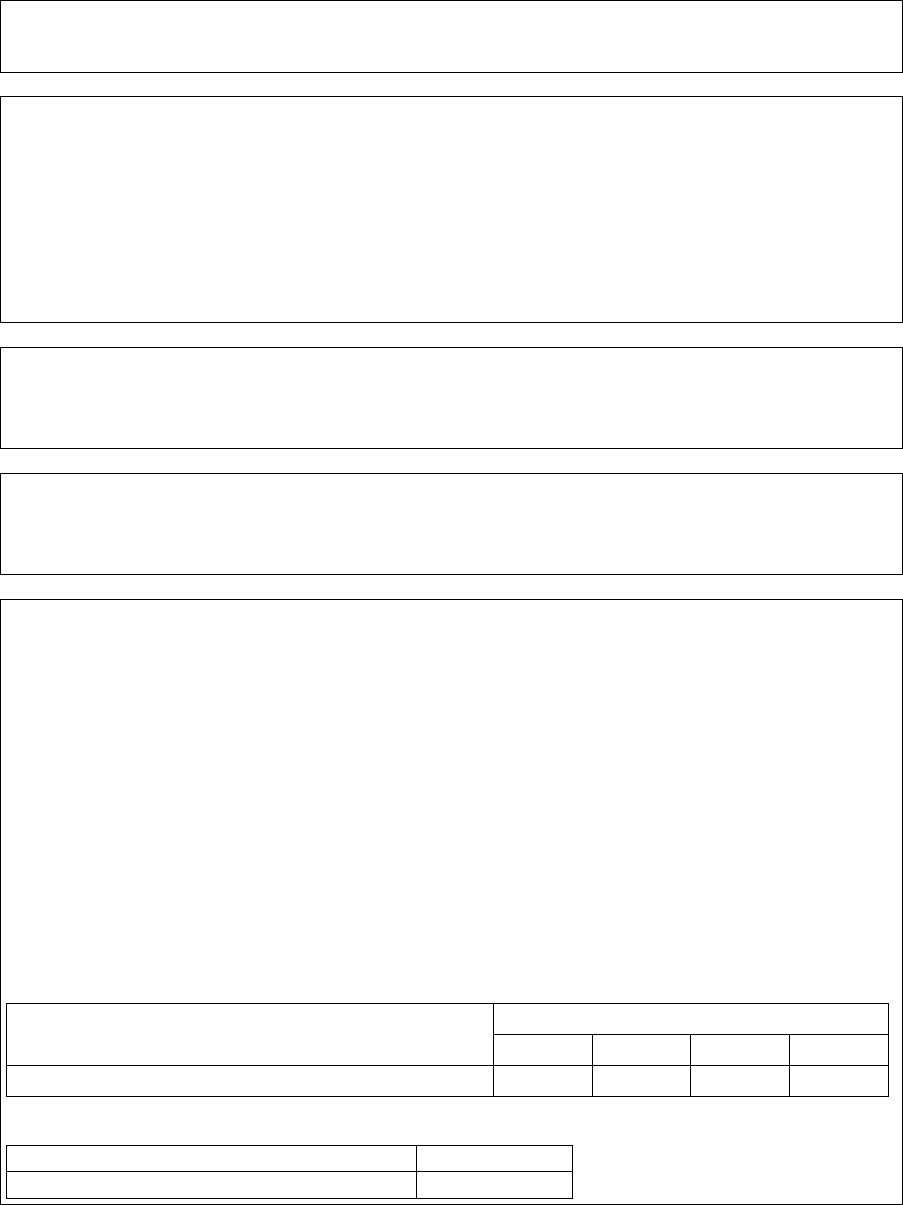
Energy Savings Scheme Rule of 2009
Effective from 19 June 2024
Page 195
Activity Definition F14
Name of Activity
INSTALL A BLOWDOWN FLASH STEAM HEAT RECOVERY SYSTEM ON GAS FIRED STEAM BOILER
Eligibility Requirements
1. The End-User Equipment must be installed on a single, or multiple, Gas fired steam boiler(s) as defined in
AS/NZS 3814.
2. The Gas fired steam boiler on which the End-User Equipment is installed must be located at a Site classified
under the BCA as one or more of the following: Class 2, 3, 5, 6, 7, 8, 9 and 10 buildings.
3. The Gas fired steam boiler on which the End-User Equipment is installed must have an existing sensor based
blowdown control, or have a sensor based blowdown control installed at the time of commissioning of the End-
User Equipment.
4. The End-User Equipment cannot replace existing End-User Equipment regardless of its condition.
Equipment Requirements
1. The End-User Equipment must be a blowdown flash steam heat recovery system that injects flash steam from
boiler blowdown into the boiler feed water tank via a sub-surface sparge line.
Implementation Requirements
1. The installation must be in accordance with manufacturer guidelines, relevant standards and legislation and any
requirements specified by the Scheme Administrator.
Activity Energy Savings
For each Implementation:
Where:
• P is the current nameplate capacity of the Gas fired steam boiler on which the End-User Equipment is installed,
in kW. For End-User Equipment that recovers flash steam from blowdown from multiple steam boilers, the
combined nameplate capacity of the steam boilers can be used.
• DEI is the Default Efficiency Improvement (as a fraction, not as a percentage) for installing the End-User
Equipment as specified in Table F14.1. Use your average operating pressure as defined in AS/NZS 3814, or the
next lowest pressure in this table. If your average operating pressure is less than 8 bar, use 8 bar.
• LUF is the assigned Load Utilisation Factor for all Gas fired steam boilers as specified in Table F14.2.
• Lifetime is the number of years that savings will be deemed as specified in Table F14.3.
Table F14.1 – Default Efficiency Improvement (DEI) for installing End-User Equipment
Activity type
Steam boiler average operating pressure (bar)
8
10
12
15
Installation of a blowdown flash steam heat recovery system
0.0052
0.0059
0.0065
0.0072
Table F14.2 Load Utilisation Factor (LUF) for Gas fired steam boilers
Business classification
LUF
All
0.206
NSW Government Gazette
20 December 2023

Energy Savings Scheme Rule of 2009
Effective from 19 June 2024
Page 196
Lifetime
Table F14.3 End-User Equipment Lifetime
End-User Equipment type
Years
All
10
NSW Government Gazette
20 December 2023

Energy Savings Scheme Rule of 2009
Effective from 19 June 2024
Page 197
Activity Definition F15
Name of Activity
INSTALL A RESIDUAL BLOWDOWN HEAT EXCHANGER ON GAS FIRED STEAM BOILER
Eligibility Requirements
1. The End-User Equipment must be installed on single, or multiple, Gas fired steam boiler(s) as defined in /NZS
3814.
2. The Gas fired steam boiler on which the End-User Equipment is installed must be located at a Site classified
under the BCA as one or more of the following: Class 2, 3, 5, 6, 7, 8, 9 and 10 buildings.
3. The Gas fired steam boiler on which the End-User Equipment is installed must have an existing sensor based
blowdown control, or have a sensor based blowdown control installed at the time of commissioning of the End-
User Equipment.
4. The End-User Equipment cannot replace existing End-User Equipment regardless of its condition.
5. A fluid stream below 40°C, such as boiler makeup water, must be available at all times to transfer heat from the
boiler blowdown.
Equipment Requirements
1. The End-User Equipment must be a residual blowdown heat exchanger; such that it transfers heat from the steam
boiler’s blowdown fluid to a fluid stream with a temperature not exceeding 40°C, such as steam boiler makeup
water.
Implementation Requirements
1. The installation must be in accordance with manufacturer guidelines, relevant standards and legislation and any
requirements specified by the Scheme Administrator.
Activity Energy Savings
For each Implementation:
Where:
• P is the current nameplate capacity of the Gas fired steam boiler on which the End-User Equipment is installed, in
kW. For End-User Equipment that recovers heat from blowdown from multiple steam boilers, the combined
nameplate capacity of the steam boilers can be used.
• DEI is the Default Efficiency Improvement (as a fraction, not as a percentage) for installing the End-User
Equipment as specified in Table F15.1. Use your average operating pressure as defined in AS/NZS 3814, or the
next lowest pressure in this table. If your average operating pressure is less than 8 bar, use 8 bar.
• LUF is the assigned Load Utilisation Factor for all Gas fired steam boilers as specified in Table F15.2.
• Lifetime is the number of years that savings will be deemed as specified in Table F15.3.
Table F15.1 – Default Efficiency Improvement (DEI) for installing End-User Equipment
Activity type
Steam boiler operating pressure (bar)
8
10
12
15
Installation of a
residual blowdown
heat exchanger
0.0038
0.0037
0.0036
0.0035
Table F15.2 Load Utilisation Factor (LUF) for Gas fired steam boilers
Business classification
LUF
All
0.206
NSW Government Gazette
20 December 2023

Energy Savings Scheme Rule of 2009
Effective from 19 June 2024
Page 198
Lifetime
Table F15.3 End-User Equipment Lifetime
End-User Equipment type
Years
All
10
NSW Government Gazette
20 December 2023

Energy Savings Scheme Rule of 2009
Effective from 19 June 2024
Page 199
Activity Definition F16
Name of Activity
REPLACE ONE OR MORE EXISTING HOT WATER BOILERS OR WATER HEATERS WITH ONE OR
MORE AIR SOURCE HEAT PUMP WATER HEATER SYSTEMS
Eligibility Requirements
1. The existing End-User Equipment must be gas or electric resistance hot water boiler(s) or water heater(s).
2. The existing gas or electric resistance hot water boiler(s) or water heater(s) does not have to be in working order
at the time of replacement.
3. The existing End-User Equipment must be a gas hot water boiler(s) or gas water heater(s) if the new End-User
Equipment is a gas boosted air sourced heat pump
4. The End-User Equipment must not be installed in a BCA Class 1 or 4 building.
Equipment Requirements
1. The installed End-User Equipment must be an air source heat pump water heater as defined by AS/NZS 4234.
2. The installed End-User Equipment must achieve minimum annual energy savings, when determined as an air
sourced heat pump in accordance with the modelling procedure Published by the Scheme Administrator, of:
o 60% when modelled in climate zone HP3-AU if the Site is in BCA Climate Zone 2, 3, 4, 5 or 6;
o 60% when modelled in climate zone HP5-AU if the Site is in BCA Climate Zone 7 or 8;
3. The installed End-User Equipment must be certified to comply with AS/NZS 2712 if it has a storage volume less
than or equal to 700L.
Installation Requirements
1. The existing End-User Equipment must be removed.
2. The replacement End-User Equipment must be installed at a Site in accordance with the Equipment
Requirements.
3. The activity, including the removal of any existing End-User Equipment, must be performed or supervised by a
suitably qualified licence holder in compliance with the relevant standards and legislation.
Equipment Energy savings
If the system(s) being replaced are gas-fired hot water boilers or gas-fired water heaters:
If the system(s) being replaced are electric resistance hot water boilers or electric resistance water heaters:
Where:
• RefElec is the annual electrical energy (GJ/year) used by a reference electric resistance water heater determined
in accordance with the modelling procedure Published by the Scheme Administrator and accepted in a manner
determined by the Scheme Administrator;
• HPElec is the annual electrical energy (GJ/year) used by the End-User Equipment, determined in accordance
with the modelling procedure Published by the Scheme Administrator and accepted in a manner determined by
the Scheme Administrator;
NSW Government Gazette
20 December 2023

Energy Savings Scheme Rule of 2009
Effective from 19 June 2024
Page 200
• HPGas is the annual gas energy (GJ/year) used by the End-User Equipment, determined in accordance with the
modelling procedure Published by the Scheme Administrator, when modelled in the climate zone in which it is
installed and accepted in a manner determined by the Scheme Administrator;
• Capacity Factor is:
o 1, if HPCap <= WHCap; or
o WHCap / HPCap, if HPCap > WHCap
Where HPCap is the total rated capacity (kW) of the heat pump water heater(s) being installed, as defined in
in a manner determined by the Scheme Administrator, and WHCap is the total rated capacity (kW) of the
End-User Equipment being replaced.
• Lifetime is the number of years that savings will be deemed as specified in Table F16.1.
Lifetime
Table F16.1
End-User Equipment type
Years
All
12
NSW Government Gazette
20 December 2023

Energy Savings Scheme Rule of 2009
Effective from 19 June 2024
Page 201
Activity Definition F17
Name of Activity
INSTALL ONE OR MORE AIR SOURCE HEAT PUMP WATER HEATER SYSTEMS
Eligibility Requirements
1. The New End-User Equipment must not be installed in a BCA Class 1 or 4 building.
Equipment Requirements
2. The New End-User Equipment must be an air source heat pump water heater as defined by AS/NZS 4234.
3. The New End-User Equipment must achieve minimum annual energy savings, when determined as an air
sourced heat pump in accordance with the modelling procedure Published by the Scheme Administrator, of:
a. 60% when modelled in climate zone HP3-AU if the Site is in BCA Climate Zone 2, 3, 4, 5 or 6;
b. 60% when modelled in climate zone HP5-AU if the Site is in BCA Climate Zone 7 or 8.
4. The New End-User Equipment must be certified to comply with AS/NZS 2712 if it has a storage volume less
than or equal to 700L.
Installation Requirements
1. The New End-User Equipment must be installed at a Site in accordance with the Equipment Requirements.
2. The activity must be performed or supervised by a suitably qualified licence holder in compliance with the
relevant standards and legislation.
Equipment Energy savings
Where:
• RefElec is the annual electrical energy (GJ/year) used by a reference electric resistance water heater determined
in accordance with the modelling procedure Published by the Scheme Administrator and accepted in a manner
determined by the Scheme Administrator;
• HPElec is the annual electrical energy (GJ/year) used by the End-User Equipment, determined in accordance
with the modelling procedure Published by the Scheme Administrator and accepted in a manner determined by
the Scheme Administrator;
• HPGas is the annual gas energy (GJ/year) used by the End-User Equipment, determined in accordance with the
modelling procedure Published by the Scheme Administrator and accepted in a manner determined by the
Scheme Administrator;
• Lifetime is the number of years that savings will be deemed as specified in Table F17.1.
Lifetime
Table F17.1
End-User Equipment
Years
All
12
NSW Government Gazette
20 December 2023
Energy Savings Scheme Rule of 2009
Effective from 19 June 2024
Page 202
Schedule G
(deleted)
NSW Government Gazette
20 December 2023
